Best Time to Visit
Weather & Climate
Neighborhood Guide
Public Transportation
Safety in Rio
Airport Guide
Best Hotels
18 Fun Things to Do in Rio
Free Things to Do
Rio's Best Beaches
Coolest Architecture
5 Days Trips from Rio
Best Restaurants
10 Foods to Try
Rio's Best Beach Snacks
Nightlife in Rio

Rio de Janeiro Guide: Planning Your Trip
:max_bytes(150000):strip_icc():format(webp)/laura-for-web1-54b93256650f406ebc761ec19d875246.jpg)
Rio de Janeiro, known as the " cidade maravilhosa " in Portuguese, draws travelers in thanks to its stunning natural beauty and unique blend of culture, food, architecture, and music. Founded on Jan. 1, 1502 by Portuguese explorers (they mistook Guanabara Bay for a river—hence the city's name), the city discovered wealth by exporting diamonds, gold, and sugar. It later became the country's capital until Brasilia replaced it in the '60s.
Now, Rio is one of the top destinations for world travelers who visit for Carnival in February or March, or at other times of the year for enjoying soccer, samba, sun, and sand. No matter what your plans are for enjoying Rio de Janeiro, use this guide to plan your trip, including where to stay, how to get around, and what to do, see, eat, and drink.
Planning Your Trip
Best Time to Visit : There's hardly a bad time to visit Rio, but most visitors enjoy timing their stay to the summer months from January through March. Carnival also occurs during this period.
Language: Portuguese is Brazil's official language .
Currency: The Brazilian real is the country's official currency. One Brazilian real is equal to around 20 cents , as of September 2020.
Getting Around : A three-line subway system called MetrôRio anchors Rio de Janeiro's public transportation, but there are also buses and streetcars. Uber is widely available and considered safe and inexpensive.
Travel Tip: If you want to visit Rio for Carnival (usually held in February or March), book your hotels and make your travel plans as far in advance as possible.
Things to Do
Rio offers amazing beaches, nightlife, and scenery–and it's likely that your trip will include some combo of those three things! Spend your days lounging on Ipanema Beach, caipirinha in hand, and nights samba -ing away in Copacabana. You might also want to check out:
- Go up to Corcovado to see one of the New Seven Wonders of the World : the Christ the Redeemer statue. The miniature train that takes visitors to the top travels through the rainforest for a great view of Rio and the remarkable figure.
- Rio is a haven for football fans—and by that, we mean soccer. Catch a game at Maracanã stadium, a massive center for the sport, with seating for almost 80,000 people!
- Stroll the Praca Floriano to enjoy the outdoor cafes and samba musicians. Stop along the way at the Teatro Municipal, home to opera, orchestra, and vivid architecture.
Want more ideas? Find more great things to do in Rio de Janeiro , or check out our guides on the best beaches , day trips , and nightlife .
What to Eat & Drink
You can find virtually any kind of food in Rio de Janeiro, including some cuisines you might not expect (the city has excellent Japanese and Italian food, for example). Still, you'd be remiss to come to Brazil and not try the abundant and diverse local fare. A few popular staples include pao de queijo , a small roll made from tapioca flour and filled with stuffed cheese, and feijoada , Brazil's national dish. It's a hearty stew made with beans and meat and served with rice, or more commonly, farofa made from toasted cassava flour. Also, don't miss the chance to try dinner at a churrascaria rodizio , a popular restaurant that serves grilled meats, all-you-can-eat style!
For more, check out our guide to Rio de Janeiro's best restaurants and the 10 foods you must try during your visit.
Where to Stay
Most of Rio's tourist-friendly hotels are concentrated along the densely populated beachfront neighborhoods like Ipanema, Leblon, and Copacabana—but that's not all there is to this vibrant city. Venture further afield and discover lesser-known areas like the bohemian, European-influenced Santa Teresa, or Urca, a low-key waterfront neighborhood in the shadow of Sugarloaf Mountain.
Of course, the city's well-known hotels, like Hotel Fasano in Ipanema, or the Belmond Copacabana Palace, are storied for good reason. Learn more about our top hotel picks in Rio de Janeiro.
Getting There
Rio is an international and domestic hub, served by two airports—the primary international airport, Galeão – Antonio Carlos Jobim International Airport , and a smaller, mostly domestic airport, Santos Dumont Airport. The former is serviced by direct flights from many larger destinations in the U.S. and Europe—and the minimal time change means it's an accessible destination to visit with little to no jet lag. Once on the ground in Rio, most travelers rely on Uber, private drivers, or public transportation. Renting a car is not advised.
Money Saving Tips
- While there's not a bad time to visit Rio, some times are certainly cheaper than others. Time your visit to a shoulder season—think May through September or October—to score better deals on airfare and hotels.
- Brazil is already relatively inexpensive, so don't sacrifice safety by using unmarked taxis or other suspect methods of transportation. Stick to public transportation or ride-share offerings, like Uber.
- A 10 percent gratuity is already included on most bills (you'll see it listed as the " gorjeta "), so you don't need to tip on top of that.
- The U.S. dollar is much stronger than the Brazilian real, so while Reals are the preferable currency, some establishments will accept dollars as well.
Visit Brasil . "Language."
Banco Central Do Brasil . "The Brazilian Currency." June 2020.
New 7 Wonders of the World . "Christ the Redeemer."
18 Best Things to Do in Rio de Janeiro, Brazil
10 Top Things to Do in Rio de Janeiro
Is It Safe in Rio de Janeiro?
Nightlife in Rio de Janeiro: Best Bars, Clubs, & More
Iguazu Falls Travel Guide: Planning Your Trip
Nightlife in Sao Paulo: The Best Bars, Clubs, & More
Getting Around Rio de Janeiro: Guide to Public Transportation
10 Foods You Have to Try in Rio de Janeiro
Where to Go for the Holidays in 2019
Your Trip to Mexico City: The Complete Guide
Antônio Carlos Jobim Airport Guide
Your Trip to Argentina: The Complete Guide
Rio de Janeiro's Coolest Architecture
Most Popular Cities in Brazil
Where to See A-Listers During the Olympics
The Top 12 Neighborhoods to Explore in Rio de Janeiro
Join the journey: Click here to get our top tips for affordable travel!

The Ultimate 3 Day Rio De Janeiro Itinerary (2023)

Rio de Janeiro is one of my favorite cities of all time. I will never forget first flying into Rio and taking in the breathtaking views of the mountains meeting the beautiful beaches found throughout the city. I have since visited twice more and grow move in love with the city each time I visit. Rio is an enchanting city, where vibrant culture, breathtaking landscapes, and infectious energy converge in perfect harmony. Nestled along the stunning southeastern coast of Brazil, Rio de Janeiro captivates visitors with its iconic landmarks, golden beaches, and a rich history that spans centuries. Whether you’re seeking the pulsating rhythms of samba, the awe-inspiring vistas from atop Corcovado Mountain, or the exhilaration of Carnival, Rio de Janeiro promises an unforgettable experience. In this Rio de Janeiro Itinerary, you’ll learn why Rio is the one of the most visited cities in South America, and the most visited in Brazil – rivaling nearby São Paulo . Keep reading to embark on a journey through this tropical paradise, uncovering hidden gems, indulging in delectable cuisine, and getting insight into the captivating spirit of Cidade Maravilhosa, the Marvelous City.
Brief History | Rio De Janeiro
Before the arrival of the Europeans, Rio de Janeiro and its surrounding region were inhabited by indigenous tribes who lived in harmony with the abundant natural resources. The land was teeming with lush rainforests, pristine rivers, and stunning coastlines. Native tribes, such as the Tupinambá and the Temiminó, called this region their home, relying on hunting, fishing, and agriculture to sustain their communities. They had a deep connection with the land, respecting and cherishing its beauty. The indigenous peoples of Rio de Janeiro possessed rich cultural traditions, which included vibrant art, music, and spiritual practices. Their presence and heritage laid the foundation for the city’s future, leaving an indelible mark on the cultural fabric of Rio de Janeiro.
The arrival of European explorers in the 16th century marked a turning point in Rio de Janeiro’s history. Portuguese explorer Gaspar de Lemos, captivated by the natural beauty of the region, christened it “Rio de Janeiro” or “River of January” due to the mistaken belief that Guanabara Bay was the mouth of a large river. The Portuguese eventually established a settlement in the area, which became the nucleus of the city that would flourish in the centuries to come.
Throughout the colonial era, Rio de Janeiro served as a strategic port for the export of Brazil’s vast wealth, including precious metals and sugar. In 1763, the city became the capital of Brazil , consolidating its importance as a center of political and economic power within the Portuguese empire. The construction of grand architectural landmarks, such as the Candelária Church and the Royal Palace, showcased Rio de Janeiro’s growing prominence as a cosmopolitan city.
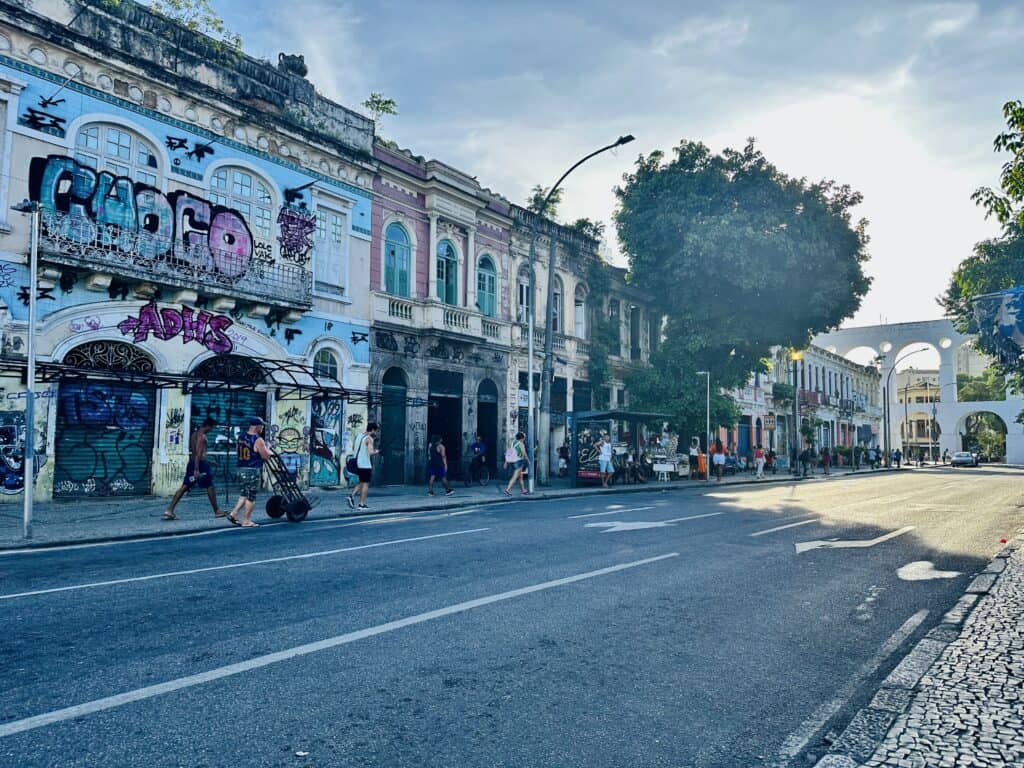
The 19th century brought monumental changes to Rio de Janeiro as Brazil gained independence from Portugal in 1822. The city became the capital of the newly formed empire, and a wave of urbanization and modernization swept through its streets. The iconic Botanical Garden and the São Cristóvão Palace were built during this period, reflecting the city’s commitment to scientific and cultural advancements.
In the 20th century, Rio de Janeiro solidified its reputation as a global metropolis, and a leader in Latin America . The city witnessed significant social and cultural transformations, from the influx of migrants during the industrial boom to the vibrant celebrations of Carnival, which became an emblematic event known worldwide. Hosting the 2016 Summer Olympic Games further elevated Rio de Janeiro’s international stature, showcasing its natural splendor and the resilience of its people.
Know Before You Go | Rio De Janeiro
Getting to rio de janeiro.
Air : The most common and convenient way to reach the city is by plane, and the city is serviced by two airports:
- The Galeão International Airport (GIG) serves as the main gateway for those visiting the city – particularly for international flights. However, you will find domestic flights departing from this airport as well.
- The Santos Dumont Airport (SDU) is the second major airport in the city, and it serves domestic flights throughout the country.
Car : Traveling by car is another popular choice, especially for those exploring Brazil’s diverse landscapes. Highways and well-maintained roads connect Rio de Janeiro to neighboring cities and regions, allowing travelers to embrace the freedom of the open road while enjoying captivating scenery. If you prefer to travel by car, get your car rental today .
Bus : If you prefer the scenic rout, but don’t care to drive, FlixBus is a good option to travel between cities in Brazil via bus.
Where to Stay in Rio
There are a few areas that I recommend you consider when visiting Rio. The beachside neighborhoods of Copacabana and Ipanema are among the most popular choices, offering stunning ocean views, a vibrant atmosphere, and a plethora of accommodation options. Here, visitors can find luxury hotels, charming boutique guesthouses, and stylish apartments, all within walking distance of the iconic beaches and an array of dining and entertainment establishments. This is the area that I have stayed for all of my visits to Rio. I love waking up by the water and this is the best place to do that.

Copacabana Hotel recommendation
Jw marriott rio de janeiro.
This hotel is situated right on the oceanfront of Copacabana. It features a rooftop swimming pool, spa, gym, and several restaurants and bars. I have stayed here multiple times because the service is great, and the rooms are quite comfortable. The buffet breakfast here is wonderful as well.
For those seeking a bohemian and artsy vibe, Santa Teresa provides a unique experience with its cobblestone streets, colonial architecture, and eclectic boutiques. This hilltop neighborhood is home to charming bed and breakfasts and boutique hotels that exude charm and offer breathtaking views of the city.

Santa Theresa Hotel recommendation
Pousada rio144.
This boutique hotel features an outdoor swimming pool, a garden, bar, and terrace. Guests have noted the spectacular views it provides of the city, as well as comfortable beds, and excellent service.
Alternatively, the upscale neighborhood of Barra Tijuca offers a more exclusive and residential feel. This area was made to resemble like Miami, and is best known for the luxury hotels and high-end shopping you find here.

barra tijuca Hotel recommendation
Lagune barra hotel.
This hotel offers panoramic view of Lagoa de Jacarepaguá, just a few minutes away from the Olympic Park. This hotel offers an outdoor pool, private parking and an onside fitness center and restaurant. In addition the hotel offers a buffet breakfast every morning.
When to Go to Rio
The best time to visit Rio de Janeiro largely depends on personal preferences, as the city enjoys a tropical climate, with warm temperatures year-round. However, there are a few factors to consider based on your personal preferences. The high season for tourism falls between December and March when the city is bustling with visitors and the famous Carnival takes place. This period offers a lively atmosphere, vibrant street parties, and sizzling summer temperatures.
If you prefer a more relaxed and less crowded experience, consider visiting during the shoulder seasons of spring (September to November) or autumn (March to May). During these months, the weather remains pleasant, and you can explore the city’s attractions and beaches with relative ease. Additionally, traveling during these off-peak times may result in lower accommodation rates. Keep in mind that Rio de Janeiro experiences occasional rainfall throughout the year, but that usually doesn’t hinder outdoor activities.
How to Get Around Rio
Public transportation in Rio includes options for the metro, bus, ride-sharing and tram. The backbone of the public transportation system is the metro, known as the Rio Metro. With multiple lines covering different parts of the city, it provides a convenient and reliable mode of transportation for both locals and tourists. The metro network connects major areas such as Copacabana, Ipanema, Centro, and Barra da Tijuca, making it easy to explore popular tourist sites, attend events, or simply get around the city. It’s quite easy to purchase train tickets inside the metro stations as well.
Rio also has an extensive bus network that reaches every corner of the city. Buses offer a more flexible option for getting around, with numerous routes and frequent service. They provide access to neighborhoods not directly served by the metro, allowing visitors to delve deeper into the local culture and discover hidden gems.
In addition to the metro and buses, Rio de Janeiro also offers alternative modes of public transportation. The iconic Santa Teresa Tram, known as the “bonde,” provides a nostalgic and scenic journey through the charming Santa Teresa neighborhood. This tram offers a unique way to explore the area’s winding streets and admire its colonial architecture while enjoying panoramic views of the city.
Additionally, Rio has an extensive network of taxis and ride-sharing services, which provide a convenient and comfortable option for traveling within the city. Taxis can be easily hailed on the streets or booked through mobile apps, while ride-sharing services like Uber and Lyft are widely available. I usually opt for Uber in Rio, as the fares are very cheap, and this is the most safe way to get around, particularly at night.
Language Considerations in Rio
The language spoken in Rio is Portuguese, which is the official language of Brazil. While English is spoken and understood to a minimal extent in tourist areas, it’s advisable to have a basic knowledge of Portuguese or carry a translation app or phrasebook to facilitate communication, especially when venturing into local neighborhoods. Interacting with locals in their native language can enhance your experience and make it easier to navigate daily activities such as ordering food, asking for directions, or engaging in conversations. Brazilians appreciate efforts made to speak Portuguese, even if only a few basic phrases .

Grab my free Ebook
Portuguese phrases pdf.
This free download includes all the key Portuguese phrases that you will need for your travels to Brazil, Portugal, and other Portuguese-speaking countries. In addition, get details on the best resources to improve your speaking and listening skills as well.
Money in Rio
When it comes to money in Rio de Janeiro, the official currency is the Brazilian Real (BRL). At the time of writing this post $1.00 = 4.82 BRL. I recommend that you pull cash from ATMs for the best rate, or exchange currency at banks or authorized exchange offices for the next best rate. Know that credit and debit cards are widely accepted in most establishments, including hotels, restaurants, and shops, especially in tourist areas. For the most current exchange rate, click here .
Where to Eat in Rio
Keep reading for some excellent recommendations on where to eat in Rio!

Best Rio City tour Recommendation
Full day in rio tour.
⭐️⭐️⭐️⭐️⭐️
This comprehensive tour will take you to all the post popular sites in Rio, including Copacabana, Sugarloaf Mountain, Christ the Redeemer, the Seleron Steps, Maracanã, and more! It includes all transportation between sites, so all you have to do is go along for ride with your very helpful guide.
The Itinerary | 3 Days in Rio De Janeiro
Day 1 | get to know rio.
Morning / Afternoon On your first day in Rio, spend time getting to know the city. This means starting by seeing many of the most famous sites around the city. I recommend seeing Rio with a local guide so that you can learn as much as possible while you explore. The tour that I recommend is Full Day in Rio experience, as it covers all the bases. The sites that you will visit on this tour include:
Avenida Atlântica : This vibrant and bustling thoroughfare stretches along the iconic Copacabana Beach. This palm-lined avenue serves as a hub of activity, where locals and visitors alike gather to soak up the sun, enjoy beachside cafes, and take in the captivating ocean views.
Strolling along Avenida Atlântica, you can admire the mosaic-patterned sidewalks known as “calçadão” and revel in the lively atmosphere of street vendors, musicians, and beachgoers. The avenue is also home to numerous hotels, restaurants, and shops, offering a variety of options to indulge in local cuisine, shop for souvenirs, or simply savor a refreshing caipirinha while basking in the beachfront ambiance.

Corcovado Mountain / Christ the Redeemer Statue (Cristo Redentor): The Christ the Redeemer statue, one of the world’s most iconic landmarks, proudly stands atop Corcovado Mountain, overlooking Rio. It is one of the main attractions of Rio, and one of the modern wonders of the world.
Towering at 98 feet tall, with its arms outstretched, it welcomes visitors with a sense of warmth and tranquility. The statue, constructed in the Art Deco style, serves as a powerful representation of faith, unity, and peace. Try to get here as early as possible, as like me, you will have to fight a lot of crowds to get a good picture.

Maracanã Stadium : Known as one of the world’s most legendary football stadiums, Maracanã has witnessed countless memorable moments and hosted major sporting events, including the FIFA World Cup and the Olympic Games. With a seating capacity of over 78,000 spectators, the stadium radiates an electric atmosphere on match days, as fans fill the stands with chants and cheers. Its impressive architecture, featuring a distinctive circular design and towering roof, adds to its grandeur and allure. Beyond football matches, Maracanã also serves as a venue for music concerts and cultural events.

Sugarloaf Mountain (Pão de Açúcar) : Sugarloaf Mountain is a natural marvel that stands proudly at the entrance of Guanabara Bay in Rio de Janeiro. This popular tourist destination offers breathtaking views of Rio. To reach the summit, visitors embark on a thrilling cable car ride that transports them to two different cable car stations, providing panoramic vistas of the city, the sparkling waters of the bay, and the lush surrounding landscapes.
At the top, you will find places to buy and enjoy refreshments, and to do a little light souvenir shopping as well. I think that this is the best place to take panoramic views of the city – and trust me – there are many great places to do this in the city!
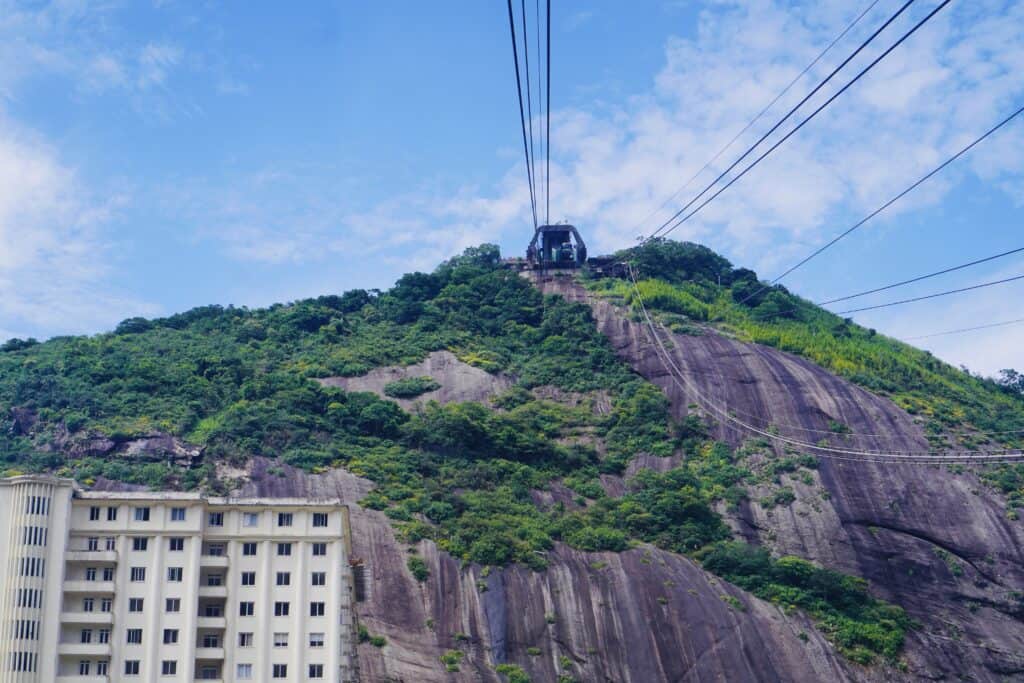
Metropolitan Cathedral of Saint Sebastian : Also known as the Rio de Janeiro Cathedral, this cathedral is a remarkable architectural masterpiece that stands as an emblem of faith in Rio. Designed by Edgar Fonseca and constructed between 1964 and 1979, the cathedral’s unique modernist design is inspired by Mayan pyramids, featuring a conical shape and striking stained glass windows.
Its interior is equally breathtaking, with towering arches and an expansive space that can accommodate up to 20,000 people. The serene atmosphere inside the cathedral invites visitors to reflect and find solace amidst the soaring columns and the resplendent light streaming through the stained glass. As an important religious and cultural landmark, the Metropolitan Cathedral holds regular religious services, but it also hosts various concerts and events that showcase the city’s vibrant arts and music scene.

Selaron Steps (Escadaria Selarón) : Another well-known landmark in Rio, this vibrant and captivating masterpiece is nestled in the bohemian neighborhood of Santa Teresa. The steps were designed by the late Chilean artist Jorge Selarón. He build the steps over a number of years with brightly colored tiles that were collected from over 60 countries. Each tile tells a story, reflecting the diversity and cultural richness of different nations. Be sure to get a good snapshot on the stairs before you go! I found this easier to do at the top of the stairs vs. the bottom.

A cool thing about this tour is that it includes lunch at a Churrascaria, or Brazilian steakhouse, which is an amazing experience!
Check Rates for the Full Day in Rio Tour Here!
To conclude you day, I recommend heading to Beco das Garrafas to listen to live music. I went to this spot the last time I was in Rio and loved it! They serve appetizers and drinks, in a very intimate setting. See the video below for a good idea of what the experience is like here.
Day 2 | Explore Centro & Santa Theresa
On your second day in Rio, I recommend getting to know the less touristy area of the city – Centro, or the city center. I recommend taking the Rio Free Walking Tour in the morning to explore the following sites:
Theatro Municipal: Located in the city center, this magnificent theater is a striking example of neoclassical architecture, adorned with ornate details and a majestic façade. Since its inauguration in 1909, the Teatro Municipal has been a hub for world-class performances, including opera, ballet, classical music concerts, and theater productions.
The interior of the theater is equally impressive, featuring a lavish foyer, opulent chandeliers, and a grand auditorium adorned with gold accents and plush seating. The acoustics of the theater are renowned for their exceptional quality, attracting renowned artists and ensembles from around the globe.
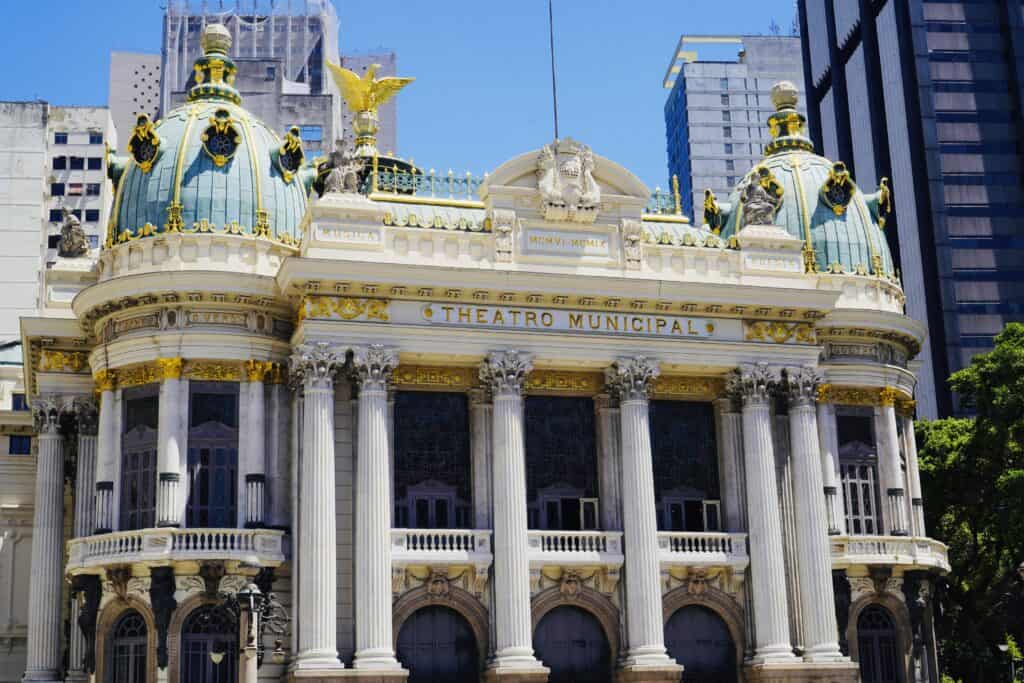
Cinelandia Square : Also known as Praça Floriano Peixoto, this historic and vibrant public square located in the heart of downtown Rio de Janeiro. Surrounded by notable buildings such as the Municipal Theater, the National Library, and the Fine Arts Museum, Cinelandia Square serves as a hub of cultural and architectural significance. The square features a central garden area with beautiful landscaping, fountains, and statues that add to its charm.
Lapa Neighborhood : This is a vibrant and eclectic neighborhood that is known for its lively atmosphere, rich cultural heritage, and vibrant nightlife. This historic district showcases a blend of architectural styles, ranging from colonial architecture to modern structures, adding to its unique charm. Lapa is famous for its iconic Carioca Aqueduct, also known as the Arcos da Lapa, which serves as a striking backdrop to the neighborhood.
The area is a hub of cultural and artistic expression, with numerous music venues, nightclubs, and live music bars that come alive with samba, choro, and other traditional Brazilian rhythms. The streets of Lapa are lined with charming establishments, including restaurants, cafes, and antique shops, offering a glimpse into the local culture and providing opportunities to sample traditional Brazilian cuisine.

Carioca Square : Also known as Praça XV de Novembro, this square is a historic and bustling public square in the city center. Named after the date of Brazil’s Proclamation of the Republic, Carioca Square holds significant historical and cultural importance. The square is surrounded by architectural landmarks, including the Palácio Tiradentes, which houses the State Assembly, and the Imperial Palace, once the residence of Brazilian emperors.

It serves as a central transportation hub with ferry terminals that connect the city to nearby islands and neighborhoods. Carioca Square is a vibrant meeting point where locals and tourists converge, with bustling street vendors, cafes, and shops that offer a variety of goods and local delicacies.
Confeitaria Colombo : This is a historic and iconic establishment has been delighting locals and visitors in Rio de Janeiro since 1894. Located in the city center, this charming café and bakery is renowned for its exquisite architecture, elegant ambiance, and delectable culinary offerings.
Stepping into Confeitaria Colombo is like stepping back in time, as the interior boasts stunning art nouveau decor, high ceilings adorned with intricate moldings, and beautiful stained glass windows. It is a popular spot for breakfast, afternoon tea, or a leisurely lunch, offering a delightful culinary experience in a truly enchanting setting. You can even try the famous Portuguese custard tarts here! (Which was my personal choice)

Afternoon:
I recommend grabbing a bite to eat at one of the restaurants located in the area, or even going back to the Confeitaria for a quick lunch. Following lunch, I recommend taking some time on your own to explore these sites that are in or nearby to the city center:
Museum of Tomorrow : Known as the Museu do Amanhã, is a futuristic and groundbreaking institution that stands as a symbol of innovation and exploration in Rio. Located in right by the the Praça XV, this striking architectural marvel designed by Santiago Calatrava is a testament to sustainable and environmentally conscious design. Through interactive exhibits, immersive experiences, and cutting-edge technology, the Museum of Tomorrow invites visitors to contemplate the complex issues of climate change, sustainability, and the impact of human activity on the planet.
The museum encourages visitors to think about how their choices and actions can shape the future, fostering a sense of responsibility and environmental consciousness. I spent a few hours here and found the exhibits both enlightening and thought-provoking.
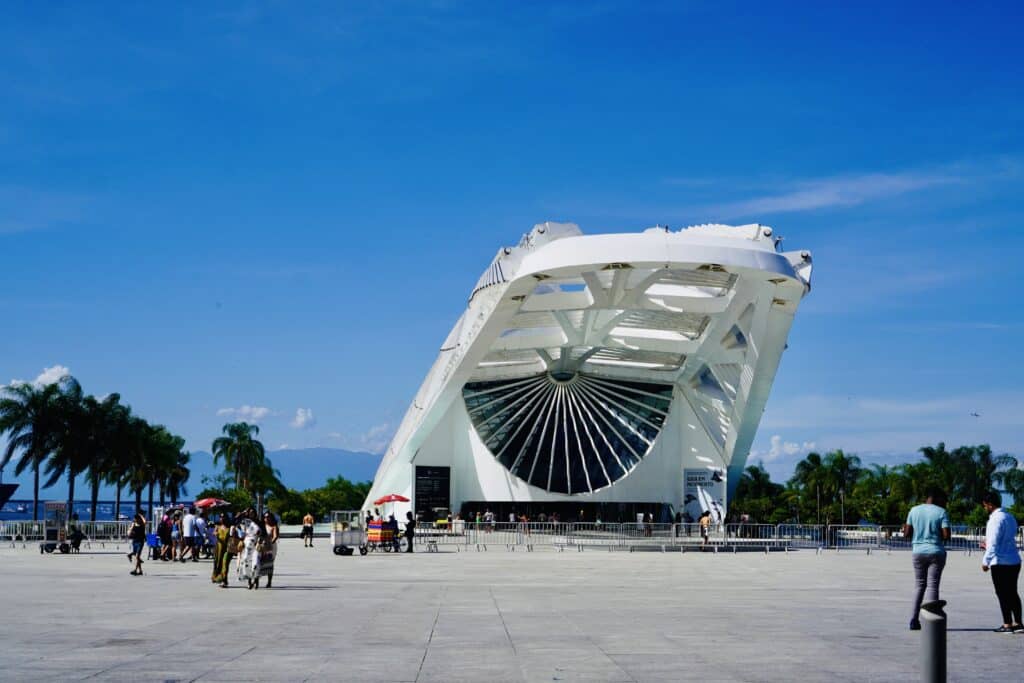
Royal Portuguese Cabinet of Reading (Real Gabinete Português de Leitura) : This magnificent library is also located in Rio’s city center. Its awe-inspiring architecture, reminiscent of a neoclassical palace, houses one of the largest collections of Portuguese literature outside of Portugal.
The library’s interior is adorned with ornate details, grand chandeliers, and towering shelves filled with centuries-old books, making it a haven for book lovers and history enthusiasts. For those of you who like Disney movies, this site reminded me of that library that the Beast gifted Belle.

Palacio de Catete : Palácio do Catete, or Catete Palace, is a historic landmark located in the Catete neighborhood of Rio de Janeiro. Once serving as the presidential palace, it is now home to the Museu da República, a museum dedicated to Brazil’s republican history.
The palace’s architectural style is a blend of neoclassical and eclectic influences, featuring beautiful gardens, grand halls, and ornate details. Visitors can explore the museum’s exhibits, which showcase historical artifacts, artworks, and documents that shed light on Brazil’s political and social development.

Late Afternoon/ Evening
After you see all that you can in the Centro, I recommend you take the historic yellow tram to the Santa Teresa Neighborhood . This charming and bohemian neighborhood is perched on a hilltop in Rio de Janeiro, offering a unique and enchanting atmosphere.
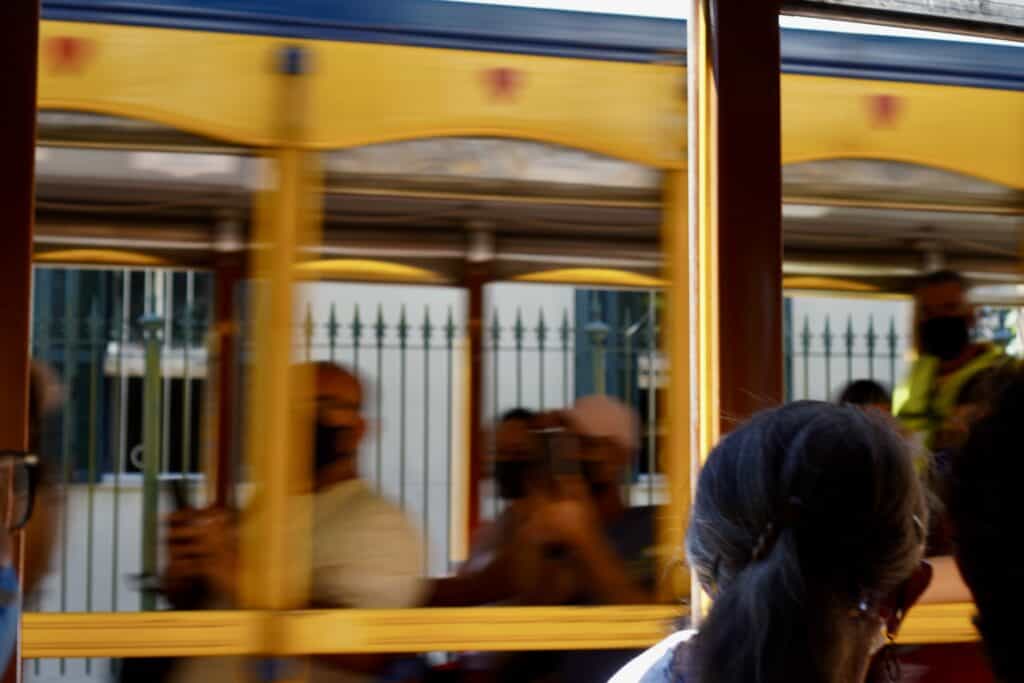
Known for its narrow, winding streets, colorful colonial houses, and stunning views of the city below, Santa Teresa exudes a nostalgic charm that captures the essence of old-world Rio. The neighborhood is a haven for artists, musicians, and creatives, with numerous art galleries, studios, and live music venues scattered throughout its picturesque streets. It’s a place where you can stumble upon hidden gems, such as quaint cafes, local handicraft shops, and vibrant street art.
Inside this neighborhood you will find the Parque das Ruínas , which is a park that is built on the grounds of a ruined mansion. The mansion was once home to Laurinda Santos Lobo, who often invited local intellectuals to her mansion in the early 1900s.
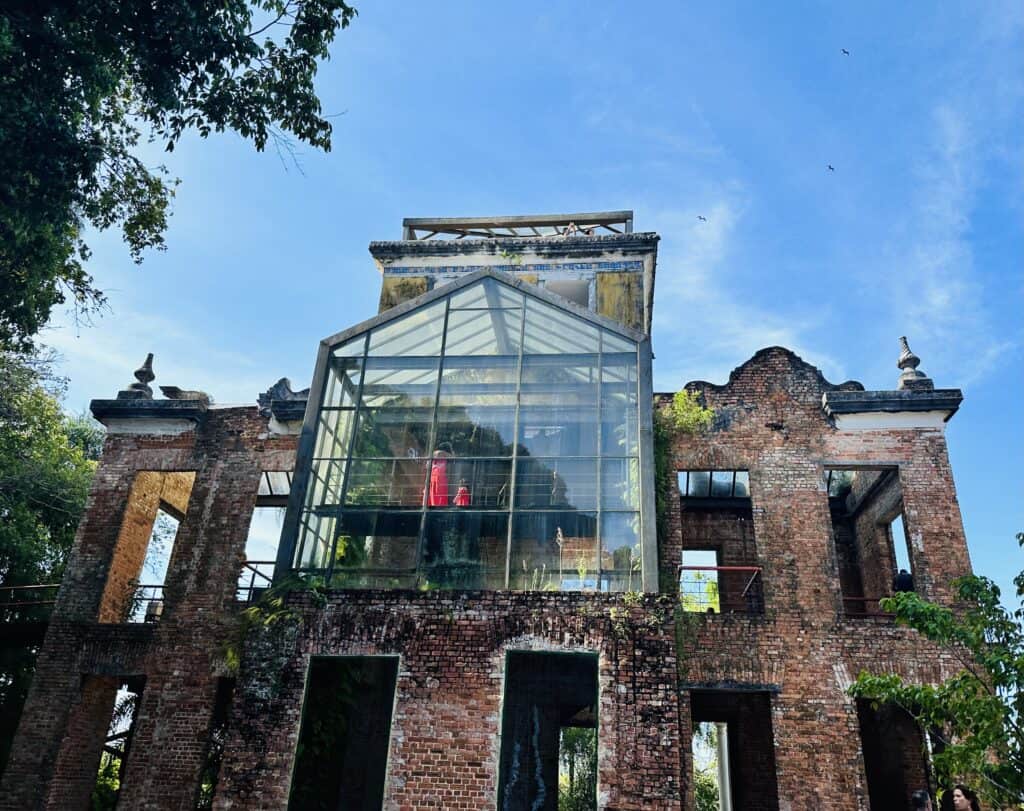
If you stay here in the evening, I recommend having dinner at Aprazível . I have eaten here twice now, and cannot get enough. From the spectacular food to the incredible ambiance, this is one restaurant you must do while here. The restaurant is partially open to the air and offers impressive views of the city. In addition, the service here is impeccable.

Day 3 | Experience the Favelas & Chill at the Beach
If you are not aware, Favelas in Rio de Janeiro are vibrant and densely populated informal settlements that dot the city’s landscape. These neighborhoods, characterized by their hillside locations and colorful houses, are home to a significant portion of Rio’s population. While favelas face challenges such as poverty and limited access to basic services, they also exhibit resilience, community spirit, and cultural richness.
If you’d like to learn more about these “cities within the city”, you can take a favela tour to learn more about the people and the way of life there. I like this Favela Tour because it approaches favelas with respect, is led by a local tour guide, and gives back to the local favela community. I speak more about my favela tour experience here if you’d like to learn more.
Check rates for your Favela Tour now!
Early Afternoon
Parque Lage : This stunning public park is located at the foot of the Corcovado Mountain in Rio de Janeiro. This enchanting green oasis is renowned for its lush gardens, scenic trails, and a historic mansion that now houses an art school. The park’s centerpiece is the beautiful Lage Mansion, an early 20th-century mansion with striking architecture and surrounded by botanical gardens.
The mansion’s interior is open to the public, allowing visitors to appreciate its grandeur and the artwork displayed within. You can stop here for an afternoon snack or coffee while you enjoy the beautiful views above. One note, know that the line to get in may be long, so plan accordingly.
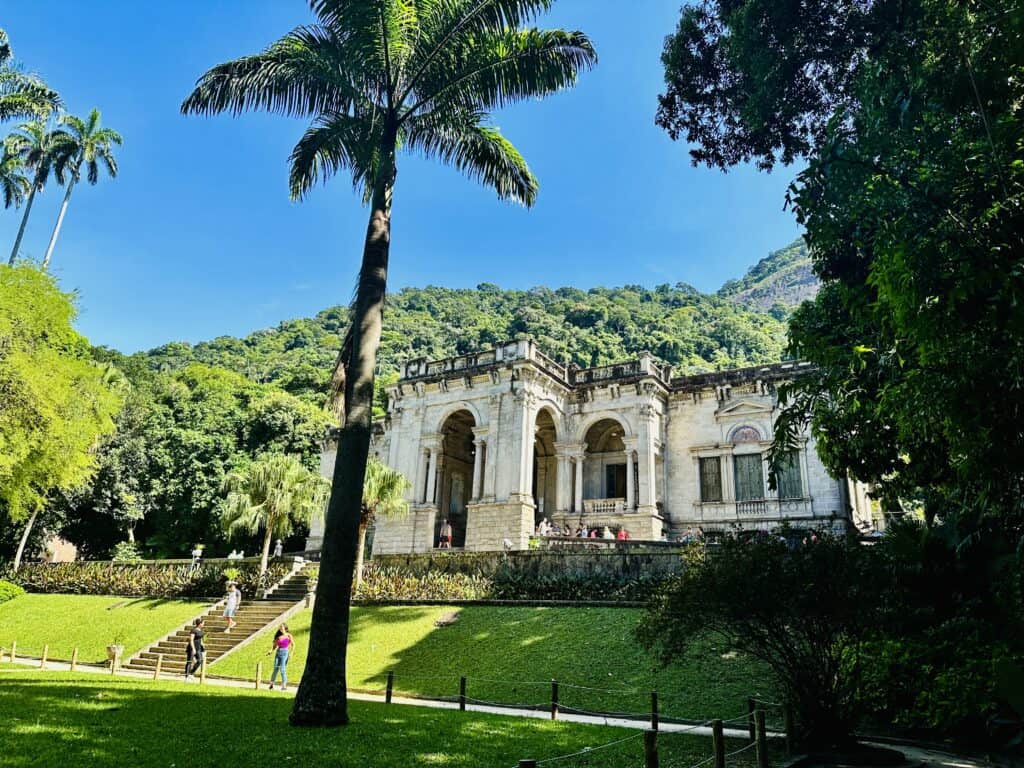
Afternoon / Evening
Now that you’ve seen all the top sites in Rio, it’s time to spend the rest of your last day in Rio at the beach! Your most popular options will of course be Copacabana beach and the Ipanema beaches, but there are others in the vicinity as well.
While at the beach, be sure to keep an eye on your valuables at all time. For the full experience, bring some cash to purchase from the vendors who walk the beach to buy the grilled cheese or other local beach food.
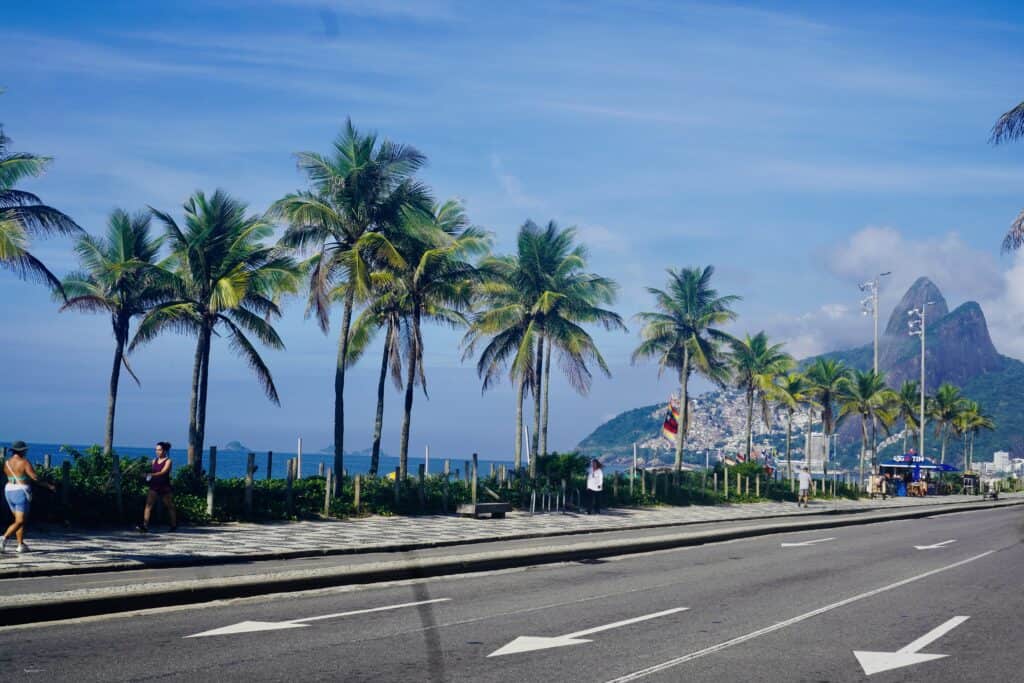
Additional Things to Do in Rio
If you have more time in Rio, here are a few additional activities you may want to consider:
Visit Tijuca National Park and the Botanical Gardens (Jardim Botânico) : The Tijuca National Park is a rainforest located in the middle of the city! As one of the largest urban forests in the world, this ecological gem covers an expansive area of over 3,000 hectares. The park is a haven for nature lovers, offering lush greenery, cascading waterfalls, and diverse wildlife.
On this tour , you can visit both this park and the Botanical Gardens, a botanical paradise that showcases the rich biodiversity of Brazil. Spanning over 140 acres, the gardens are home to an impressive collection of over 6,000 species of plants, including exotic orchids, towering palm trees, and rare Amazonian flora. I visited both sites on this tour and had a really great time.

Go Shopping: If you like to shop, I recommend venturing out to the shops in Leblon or driving out to Barra da Tijuca to spend time in one of the larger shopping malls.
Helicopter Tour of Rio : For a truly incredible viewing experience, I recommend you take a helicopter tour of Rio. In this experience, you can get panoramic views of the city and a close up of Christ the Redeemer. I loved my experience flying above Rio. If you’d like to learn more, click here for my review of the Best Rio Helicopter Tour .
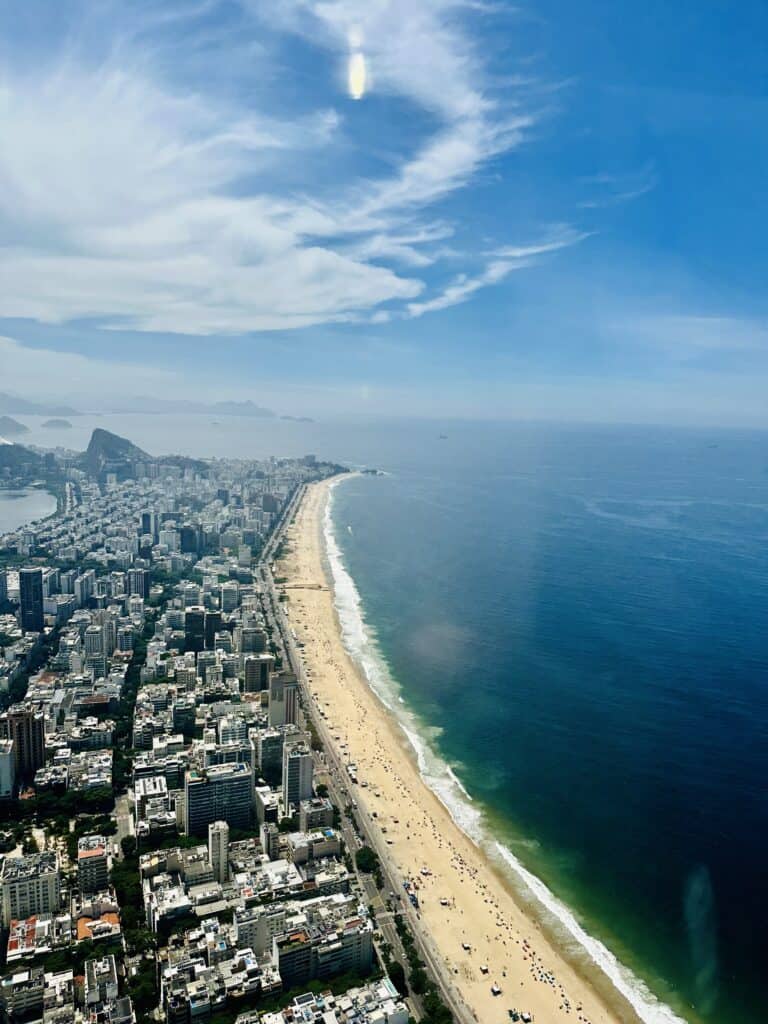
Rio De Janeiro City Map
See below for all of the main locations mentioned in this Rio Travel Guide:
- Christ the Redeemer
- Maracanã Stadium
- Sugarloaf Mountain
- Metropolitan Cathedral of Saint Sebastian
- Escadaria Selarón
- Teatro Municipal
- Cinelandia Square
- Lapa Neighborhood
- Confeitaria Colombo
- Museum of Tomorrow
- Royal Portuguese Cabinet of Reading
- Palacio de Catete
- Parque das Ruínas
- Aprazível
- Rocinha Favela
- Parque Lage
- Copacabana Beach
- Ipanema Beach
- Leblon Beach
- Barra da Tijuca
Best Day Trips from Rio De Janeiro
Rio de Janeiro offers a plethora of exciting day trip options that allow visitors to explore the diverse natural and cultural wonders of the region. Here are a few of the best options to consider:
- One popular choice is a visit to the historic town of Petropolis, known as the Imperial City, where you can explore the former summer residence of the Brazilian emperor and stroll along charming streets lined with colonial architecture.
- Another must-visit destination is the coastal town of Búzios , famous for its stunning beaches and vibrant nightlife, offering a perfect blend of relaxation and entertainment.
- For nature enthusiasts, a trip to Ilha Grande is highly recommended, with its pristine beaches, lush forests, and crystal-clear waters, providing opportunities for hiking, snorkeling, and sunbathing.
- Additionally, the picturesque town of Paraty beckons with its well-preserved colonial architecture, cobblestone streets, and boat tours that explore the nearby islands and secluded beaches. These day trips from Rio offer a diverse range of experiences, allowing visitors to delve into history, soak up the sun on breathtaking beaches, and immerse themselves in the natural beauty of the region.
Rio De Janeiro FAQs
While three days is enough for a taste of Rio, 4 to 5 days is best to fully experience Rio de Janeiro’s iconic attractions, beaches, and vibrant culture. This timeframe allows you to visit landmarks like Christ the Redeemer and Sugarloaf Mountain, indulge in local cuisine, and explore the historic center.
Yes, Rio de Janeiro is generally friendly for tourists. The city welcomes visitors with a warm and welcoming atmosphere, and the locals are known for their hospitality. While standard safety precautions are advised, tourists can enjoy a vibrant and enjoyable experience in Rio de Janeiro.
Choosing between Rio de Janeiro and São Paulo depends on your preferences. Rio offers breathtaking natural beauty, iconic landmarks, and a relaxed beach culture, making it ideal for a mix of relaxation and cultural experiences. São Paulo, a bustling metropolis, is known for its urban exploration, diverse cultural scene, and vibrant nightlife, making it perfect for those seeking a cosmopolitan experience.
While Rio de Janeiro has some safety concerns, most tourists visit without incident. Standard safety precautions, such as being mindful of belongings and avoiding certain areas, can help ensure a safe trip. Staying in well-traveled areas and using reputable transportation services can further mitigate potential risks.
In Summary | The Best Rio De Janeiro Itinerary
That concludes this 3 Day Rio De Janeiro Itinerary. I hope that you can see that Rio is a wonderful place to consider for your next vacation destination. I think that any city that features both cities and mountains is amazing, and Rio is one of those that is at the top of the list for me. If you have visited Rio below, let me know in the comments below!
Looking for more posts on Brazil?
- 10 Days in Br azil
- The Best Things to do in São Paulo
- The Best Rio Favela T our
- The Best Rio Helicopter Tour
- Best Tour of Rio de Janeiro
Latin American Travel Guides
- Cartagena Itinerary
- 4 Days in P uerto Rico
- Tulum Travel Guide
- Cusco Itinerary
- Lima Travel Guide
- Latin American Destinations
Christen Thomas is the founder of TravelWanderGrow, established in 2018. She has lived abroad and traveled extensively to over 30 countries. In addition, she is a certified Travel Advisor and is an expert in planning trips focused on city history and culture. As a frequent traveler, she also shares tips on how to prepare to travel well and how to save money while doing so.
Leave a Reply Cancel reply
Your email address will not be published. Required fields are marked *
Explore Rio de Janeiro

Plan Your Trip to Rio de Janeiro: Best of Rio de Janeiro Tourism
Travel advice, essential rio de janeiro.
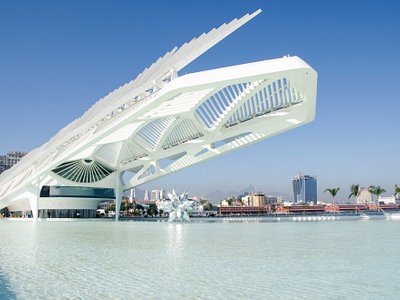
How to do Rio de Janeiro in 3 days

Beaches where you can escape the crowds (or join them)
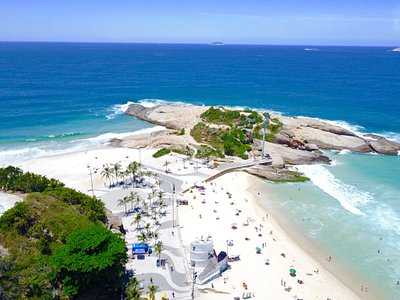
Browse collections
See the city from your table.
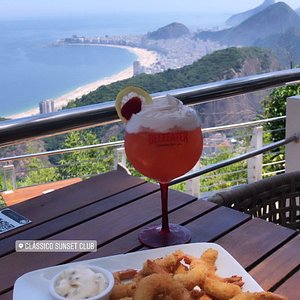
Rio’s iconic beaches
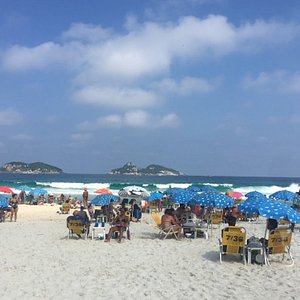
Eye-popping cultural heritage sites

Bring your binoculars

Rio after dark

Rio de Janeiro Travel Guide
Travelers' pro tips or experiencing rio de janeiro.

Alexandre P
In case you need help, Carioca's are nice, but make sure you are close to Zona Sul, where people are more friendly to tourists. Even if do not speak fluent English, they will help.

The dozens of juice bars in Rio are ideal for having an authentic açaí berry smoothie, or for trying other exotic fruit juices and traditional snacks. Buffet restaurants, where food is priced per kilo, are very popular among locals, especially for lunch.

If you are young, go to Lapa, and at every door, there will be music and dancing. Go to a candonblé or macumba ritual: go Downtown and see the old Rio de Janeiro with golden churches and beautiful neo-classic buildings like the Municipal for a beautiful concert.

joanadventure
Rio: The city of wonders and easy to get around.
The unique geography of Rio de Janeiro ensures that you'll enjoy a free picturesque backdrop — from gorgeous mountains and white-sand beaches to verdant rain forests and deep blue seas — at every step of your exploration.
Rio de Janeiro, called the "Marvellous City," charms everyone not only by its natural beauty but also by the friendliness of all Cariocas (born in Rio). Obviously, the main assets are the beaches, like the famous Copacabana beach and its beautiful sidewalks. But there are several beaches, all around our coast.
What is the best way to get there?
The main airport that serves Rio de Janeiro is the Rio de Janeiro-Antonio Carlos Jobim/Galeão International Airport, known simply as Galeão International Airport.
The Rodoviaria Rio Novo station is the main bus terminal in Rio de Janeiro and hosts the majority of long-distance buses.
If arriving in Rio by car, you’ll likely come from the BR116, which is the highway that connects the city with Sao Paulo.
Do I need a visa?
If you’re visiting from Brazil overseas, see if you need a visa using this website .
When is the best time to visit?
December to March: Undoubtedly, the best time to visit Rio de Janeiro is between December and March, when the weather is optimum for exploring the city’s beaches. Additionally, the summer months deliver two of the city’s best celebrations: New Year’s Eve, when crowds cram onto Copacabana Beach for a 15-minute fireworks display, and the world-renowned Carnaval, during which the spirit of samba overtakes the city.
For more information on Rio de Janeiro’s weather and when to go, check out some tips here .
Rio’s metro spans three air-conditioned lines. Line 1 goes from Ipanema-General Osório to Uruguai; Line 2 travels from Botafogo to Pavuna, passing Maracanã football stadium en route; Line 3 travels between Ipanema-General Osório and the eastern end of Barra da Tijuca at Jardim Oceânico. You can purchase a rechargeable card at any of the metro stations. Find out more here .
taxis and rideshare
Apps such as Uber and Cabify are the main rideshare operators in Rio. Most of the public cabs are metered and are readily available and therefore easy to hail from the street.
Rio’s BRS (Bus Rapid System) overlaps the metro and covers popular city zones such as Ipanema, Leblon, Barra, and Copacabana.
On the ground
What is the timezone.
Brasilia Standard Time (GMT-3).
What are the voltage/plug types?
The standard voltage in Rio de Janeiro is 127V and the standard frequency is 60Hz. There are two associated plug types: type N, with two round pins and a grounding pin, and type C, with two round pins. For plug types, you can reference the international guide .
What is the currency?
Brazilian Real (BRL).
Are ATMs readily accessible?
Are credit cards widely accepted, how much do i tip.
Though tipping is not part of Brazilian culture, a 10% service charge is generally added to the bill in restaurants.
Are there local customs I should know?
The federal legal age for buying and drinking alcohol is 18 years old.
In Brazil, casual dress is more formal than in other countries so if a restaurant or event specifies formal wear then ensure that you dress to impress.
Though generally modern and tolerant, Brazilians typically have strong Catholic beliefs. Try to avoid expressing atheist views in public.
- Miramar by Windsor Copacabana
- Fairmont Rio de Janeiro Copacabana
- Rio Othon Palace Hotel
- Hilton Rio de Janeiro Copacabana
- Copacabana Palace, A Belmond Hotel, Rio de Janeiro
- Restaurante Marius Degustare
- Oro Restaurante
- Marine Resto
- Churrascaria Palace
- Churrasqueira Rio
- Sugarloaf Mountain Cable Car
- Ipanema Beach
- Copacabana Beach
- Corcovado - Christ the Redeemer
- Botanical Garden
- Full Day: Christ Redeemer, Sugarloaf, City Tour & Barbecue Lunch
- Rio's Full Day: Selarón Steps, Christ & Sugarloaf – Tickets & Lunch Included
- 25 - Full Day Tour to Angra dos Reis and Ilha Grande
- The Best Half Day in Rio with Christ Redeemer and Sugar Loaf Hill
- Skip the Line Christ the Redeemer Admission Ticket
One Week In Rio de Janeiro: Itinerary and Things To Do

Making justice to its nickname Cidade Maravilhosa (Marvellous City), Rio is indeed a vibrant and lively place with tons of things to see and do. In this article I’m sharing with you my itinerary on how to spend one week in Rio de Janeiro. Beleza ?
Rio de Janeiro seems to be all over the news in recent years.
Whether its because of the 2014 World Cup, the 2016 Summer Olympics – which actually will be in Brazilian Winter – and the constant reports on safety and crime, the Cidade Maravilhosa is definitely a hyped place at the moment.
There are however some challenges in getting around so an efficient travel plan is key.
Hopefully the below guide for first-timers in Rio can help you have at least a great of a experience as mine!
One Week In Rio de Janeiro: Sections
The most popular sights in rio de janeiro, stay in the safest and nicest hotels of rio, other sights in rio de janeiro, tips & advice.
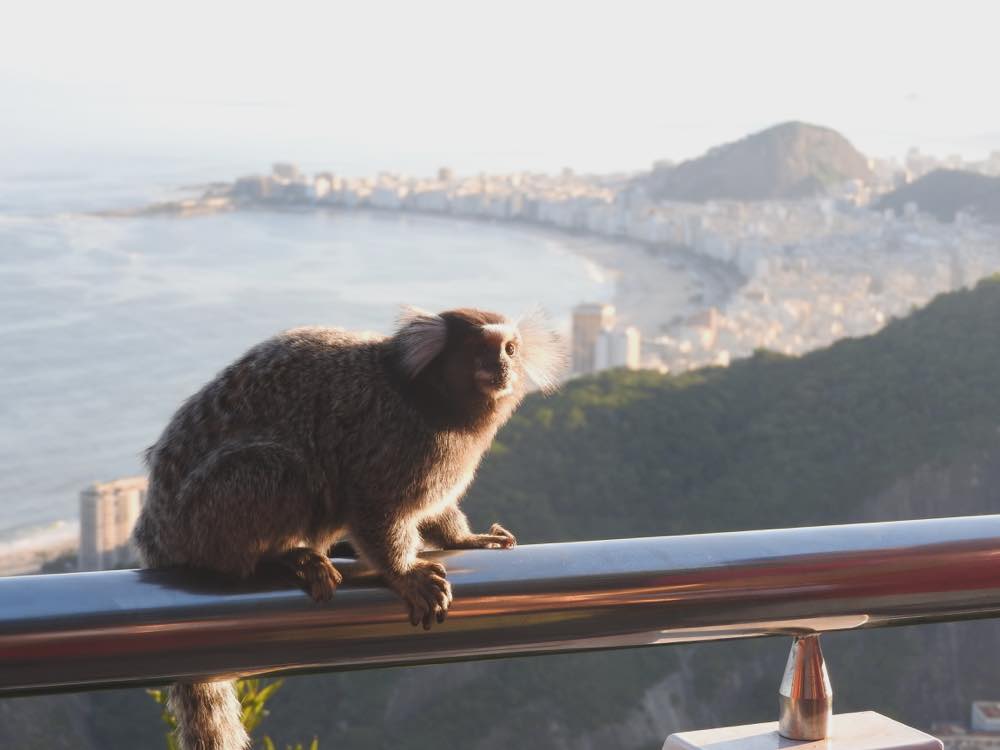
The Most Popular Sights in Rio
Let’s start big. These are the most popular sights in Rio . Do they live up to their hype? Find more about my experience in each one of these places below.
Cristo Redentor – Christ The Redeemer
Every time I have some kind of statue on my bucket list I get disappointed with its size. It happened with the Little Mermaid in Copenhagen , the Manneken Pis in Brussels and now the same happened with the Christ.
Maybe it was because of to all the supersized GoPro photos and videos I’ve seen, but Cristo Redentor was not as impressive as I was expecting. On the other hand, the views over the city of Rio are breathtaking. This was enhanced by the beautiful clear day which made everything more bright and more alive.
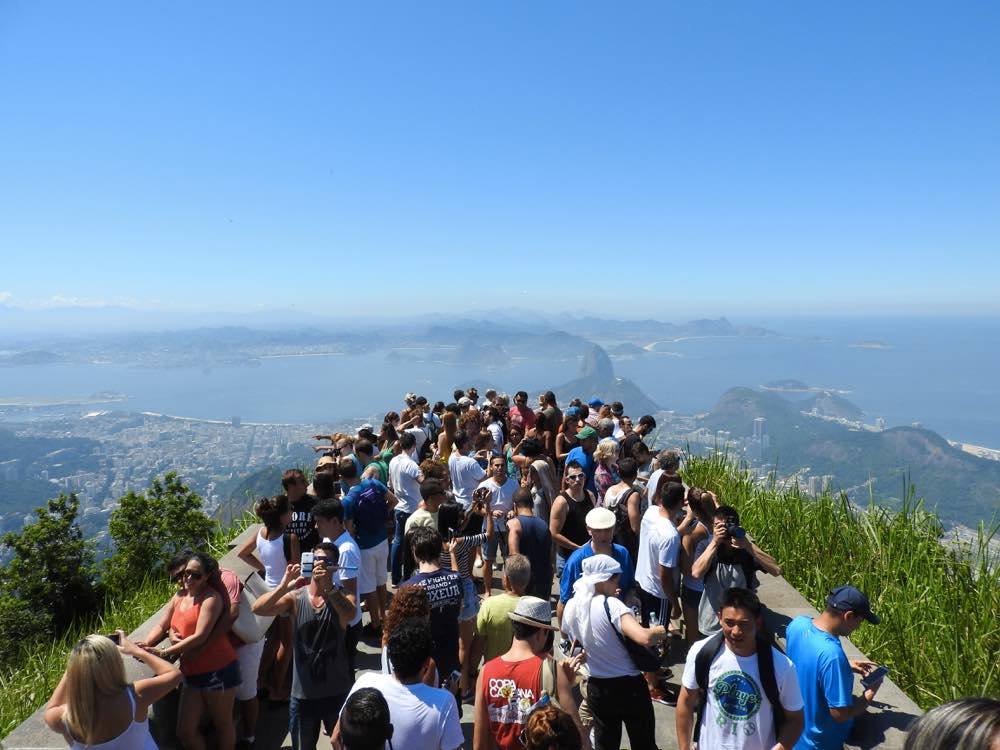
Getting decent pictures here is a challenge. Navigating the crowds posing with arms wide open for photos was interesting at the beginning but it soon turned into a dreadful experience. Reaching the very end of the viewpoint for an open shot is a power struggle. Bring your A game!
If you are for the first time in Rio , the Christ can’t be missed. Even if the big man is not that big. It’s still the most iconic landmark of the city and has even been considered one of the New 7 Wonders of the world .
The verdict
For some reason, I wasn’t that amazed with Cristo and the huge amounts of people in such a tiny space can be a bit of a turnoff. However I agree going up there is something you should have in your plan. The awe-inspiring views are definitely the highlight.
Pro tips for Christ The Redeemer
- Make sure you choose a clear day to meet&greet the Christ otherwise you will see nothing more than clouds. Peek through the window every morning and be patient to wait for the right day!
- Head to Largo do Machado as early as possible to get your ticket on the vans that will take you all the way up to Corcovado .
Copacabana Beach
This has to be the first beach coming to your mind when you think of Rio de Janeiro . The 4km-long Copacabana was made famous by the luxurious hotels and the bohemian nightlife scene in the 50s That fame didn’t cease until today. It’s also the place where one of the most epic New Years Eve in the world takes place!
The combination of the palm trees, the many Cariocas running, biking along the wave-like cobblestone promenade and the views over Sugarloaf is truly a beautiful sight. I can see why this place is so popular. It’s definitely representative of the Rio lifestyle and culture.
🇧🇷 BRAZIL | 〰 Swirl. The cobblestones of Copacabana’s promenade resembling the waves that are breaking just a few meters away. #riodejaneiro #brazil #copacabana #🇧🇷 Uma publicação partilhada por BRUN🌎 (@bruno_mb) a Mar 27, 2016 às 12:53 PDT
Having that said, don’t expect much from the beach itself. I found the sand to be very shabby and the water had a very suspicious dark green tone. Vendors seemed unfriendly too – the only place where I felt this. In my opinion, even the nearby Ipanema is a much more pleasant beach experience.
Might be a controversial opinion, but for me Copacabana is hardly a “must-go”. It’s more of a “nice-to-have” instead. Might be worth to have a stroll around, but I’d lie my towel elsewhere as there are far better beach experiences in Rio .
Pro tips for Copacabana beach
- Copacabana is very popular with tourists and muggers know it. Keep an eye on your belongings at all times.
- While the beach is lit at night, avoid walking there after the sun sets.
- The waves in Copacabana are smaller than its neighbour Ipanema , which perhaps makes it more family-friendly
Pão de Açúcar – Sugarloaf Mountain
Pão de Açúcar or Sugarloaf is only one of the giant monolithic granite mountains rising up from the waters of Guanabara bay. What makes it so popular is the cable car system which has been taking visitors to the very top since 1912.
I was slightly nervous to hop into not-one-but-two cable cars to get to the top – which technically means four (!) trips. Unstable surfaces or vehicles at a very high height is EXACTLY what makes me afraid.
But surprisingly the rides were a charm. My guess is that I got too fascinated by the views. Hence I didn’t have enough brain RAM to process I was actually inside a glass-walled oscillating cable car at a height of 400 meters. Oh and with 70 more people inside. Really scary if I think about it now.
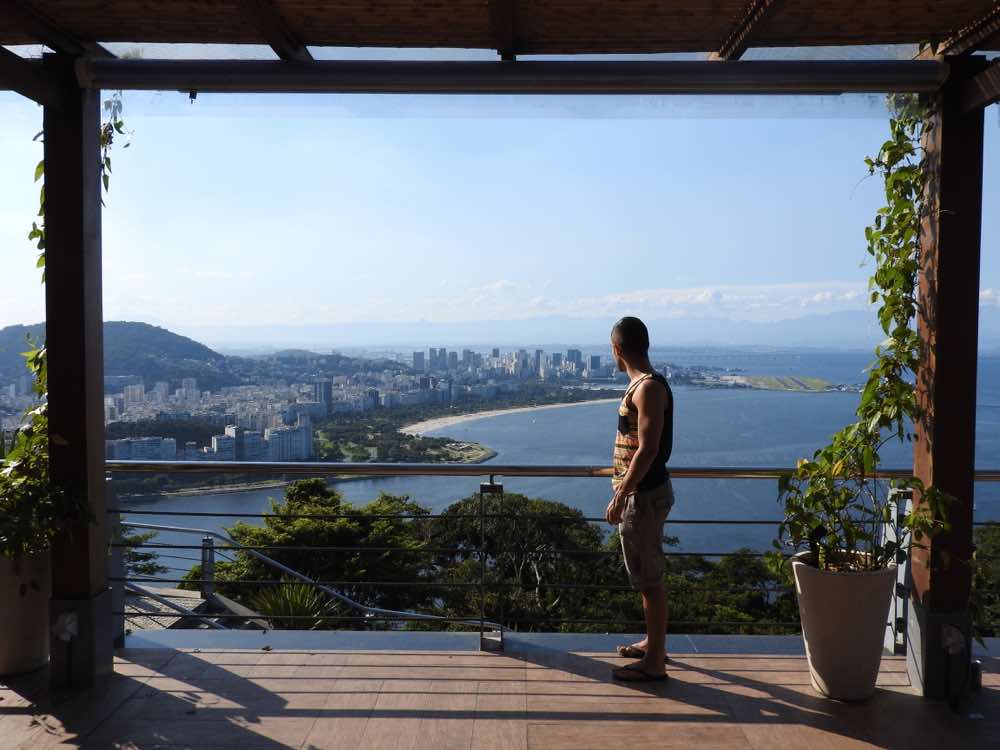
The views from both Sugarloaf and Morro da Urca – the intermediate cableway stop – is a unique combination of a vibrant city, long stretches of sand and forest-covered mountains, while surrounded by the Atlantic Ocean. Ah, and with the Christ overlooking it all. It’s a stunning scenery.
This place is so spacious and peaceful I spent almost an entire afternoon just wandering and taking in everything. When the sun begins to set, the light refracts on the hills and the sky becomes a mix of golden and orange. It was like watching a live painting come to life. Definitely one of my most whimsical and magical travel moments EVER!
Sugarloaf: The verdict
Worth every cent. The cable-car journey is just as enjoyable as the views up there. This was BY FAR the highlight of my trip to Rio .
Pro tips for the Sugarloaf Mountain
- Get there early, in time for sunset. I’ve actually tried to go up on my first day at 5pm, sunset hour. Huge mistake. The queue to the cable car ( Bondinho ) was GI-NOR-MOUS and we ended up giving up after an half-an-hour wait.
- Don’t rush. You will probably spend more time in Sugarloaf than you think.
- If you look carefully, you will find many adorable little monkeys – micos – jumping from tree to tree.
- You can charter an helicopter (!) here. There’s an helipad in Morro da Urca and rides start from 75USD.
- The nearby beach – Praia Vermelha – has a stunning scenery and it’s not as crowded as you may think.
Other sights in Rio
Centro – rio’s downtown.

There are many ways you can explore the heart of Rio, but I decided to join a Free Walking Tour . I always think it’s a good idea to make one of these right at the beginning of the trip. It helps to have a grasp of the culture, history and overall vibe of the place you’re visiting and somehow sets the tone for the rest of your trip.
The first “wow moment” was Confeitaria Colombo . With luxurious marble counters and brocaded mirrors, stepping inside this fine coffeeshop feels like going back in time to the late 1800s. Skip any diet you might possible have and indulge in a brigadeiro – an intense combination of condensed milk and chocolate.
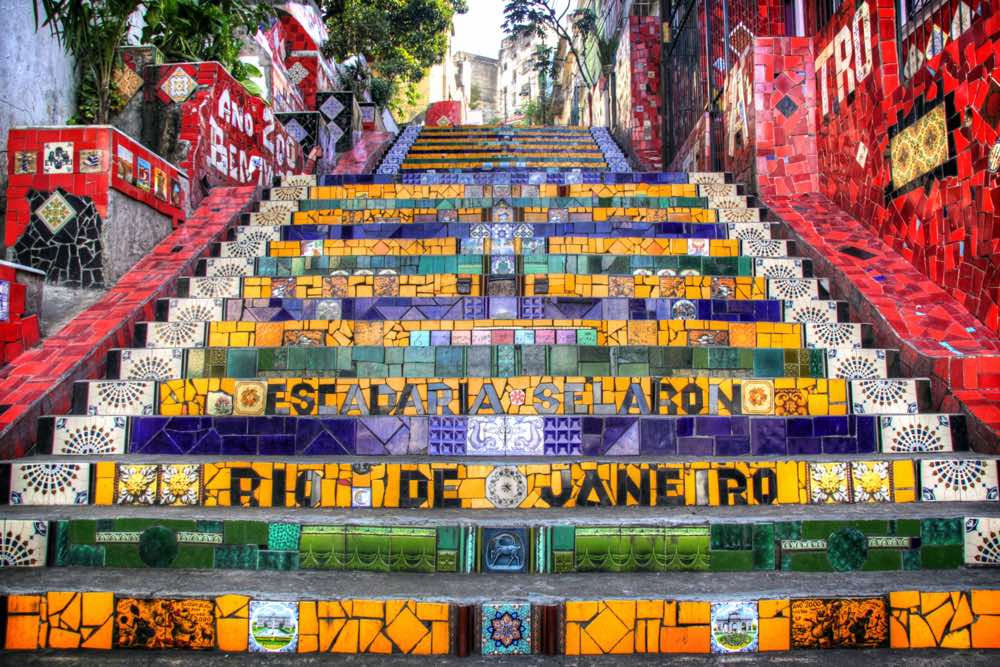
The second highlight was Escadaria Selarón . The Chilean artist Jorge Selarón started covering this staircase with small tiles representing places he’d been to. This personal project gained popularity and for many years, travelers visiting Rio helped him finish the steps by bringing tiles from their home countries. Today with more than 200 tiled steps, it’s the largest piece of art made by a single person in the world. Truly an inspiration for all wanderlusters!
The city center is a surprisingly rich mix of modern and classic architecture. During the three (!) hours the tour lasted, we covered other places such as the Carmen Miranda’s house, the gorgeous Municipal Theater and the City Council . It was way better than I anticipated and my guide Natalia did a great job of balancing historical information, fun facts and jokes so it wasn’t boring at all. We ended up all having a traditional Brazilian lunch of Feijoada in a local restaurant. Highly recommended!
Centro : The verdict
If you have a full week in Rio , it’s worth to allow yourself at least some hours to get to know its urban and historical side.
Pro tips for Rio de Janeiro’s downtown
- You don’t need to book the free walking tour. Just show up at 10h30 in Largo do Carioca, at any day of the week except Sundays. While the tour is free , you’re expected to tip.
- It’s not advisable to walk around the downtown at night or even during weekends by yourself.
Santa Teresa neighborhood
In the end of the 19th century, aristocrats and wealthy settlers of Rio chose Santa Teresa ‘s location on the hills above Lapa to build their huge mansions. Today, this neighborhood is known as the more bohemian and artistic district of Rio , with the displays of colonial architecture intertwined with the best examples of street art in the city.
I got there taking the bonde – a traditional banana-yellow tram – you have to try. On its way, it goes over Arcos da Lapa , an old Roman aqueduct and it will leave you right the heart of Santa Teresa – Largo do Guimarães . This 15-min romantic ride was free. What’s there not to like?
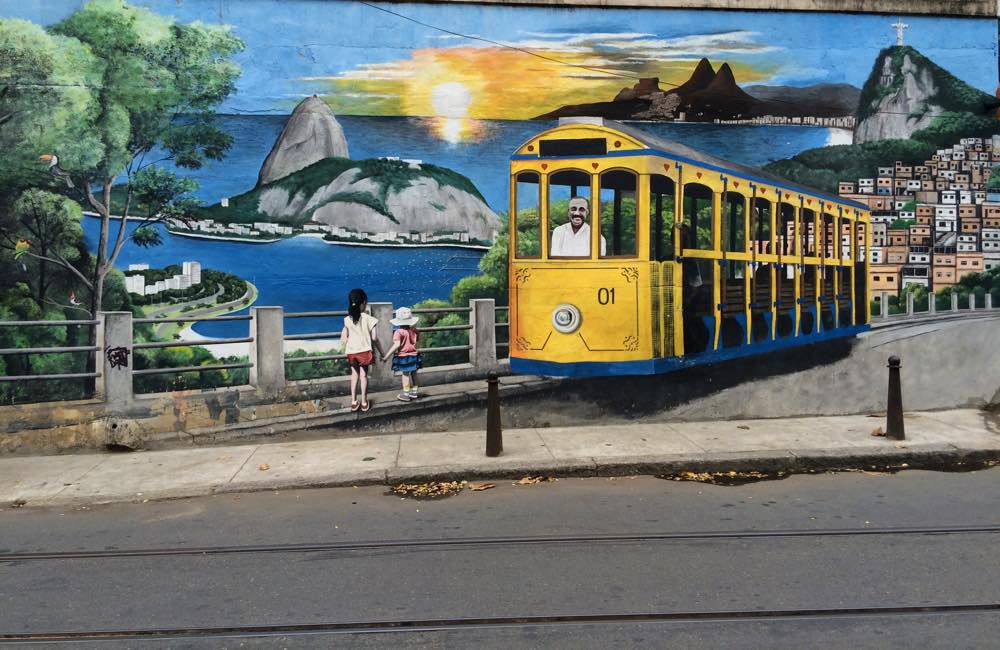
With such an exciting start, I was pumped to explore Santa Teresa . And walking around the winding cobblestoned streets of Santa Teresa revealed some colorful buildings and quaint little shops and restaurants.
However looking back I can’t say Santa Teresa was memorable . Many places were closed and most of the buildings seemed too scruffy and neglected, which took away some of the charm. Though Parque das Ruinas – a ruined mansion – came with terrific 360-degree views of Rio from the top floor.
Santa Teresa : The verdict
Santa Teresa sure has the potential could be a very charming place as it is a nice alternative contrast to the beaches and to the buzz of the downtown. But it’s quite not there yet.
Pro tips for Santa Teresa
- The bonde is only operating between Carioca and Largo do Guimarães which represents only 10% of the total tram line. It’s a trial period after the refurbishment works on the tracks, hence the free tickets. It’s expected that after 2017, the bonde will cover more of the neighborhood.
- Santa Teresa is a great place for foodies. There are many local restaurants to pick, all serving delicious brazilian food. Or just do it like me and join a food tour .
Jardim Botânico & Parque Lage
Palm Avenue. 🌴🇧🇷 All the palms on this 750-meter long avenue of Rio’s Botanical Garden descend from the same single tree. #traveltrivia #visitrio #brazil #🇧🇷 Uma publicação partilhada por BRUN🌎 (@bruno_mb) a Abr 5, 2016 às 9:55 PDT
Given these are relatively close to each other on the map, I’m putting these together. You won’t want to waste time by coming back twice to this area of the city.
Let’s start with the Jardim Botânico ( Bothanical Gardens ). Founded in 1808 by King John VI of Portugal, it’s a huge 140-hectare park containing more than 6,000 different tropical plants and trees. The main attraction is a 750-meter avenue of huge lined-up palms, all originated from the same single tree. Amazing and a huge photo opportunity!
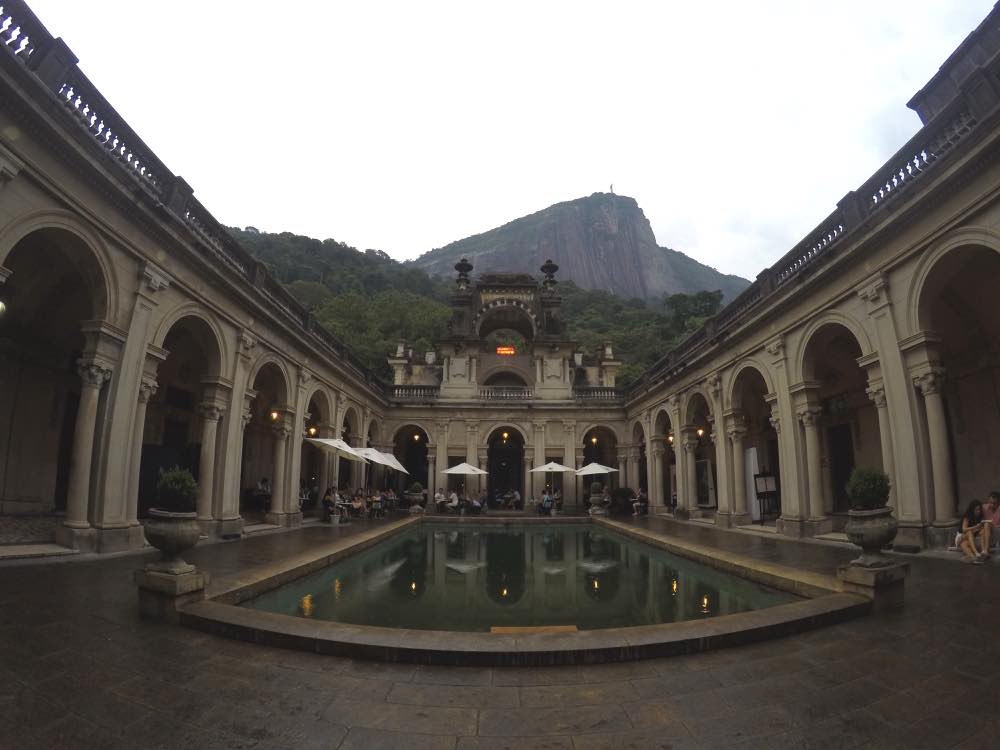
Just a bit over 1km away, Parque Lage is a former private residence converted to a public park with many walking trails going up the hills. To be honest, I didn’t know what to expect of this place. It was recommended to me by a friend and it was probably the biggest surprise of the trip. I actually liked this park better than Jardim Botânico as it felt more like an hidden gem and with far more forest cover.
The setting for the cafe in the Visual Arts School is glorious, I could literally sit there all day. Plus, the entrance to the park is free!
Jardim Botânico and Parque Lage : The verdict
These two spots are a great way to be more in contact with the nature and escape the heat of the beaches and of the downtown. I was most impressed with Parque Lage , even though you could easily walk around for hours in Jardim Botânico .
Pro tips for Jardim Botânico and Parque Lage
- Cafe du Lage , the cafe within a huge mansion in the park has one of the most popular breakfasts in the city.
- If you’re feeling adventurous, Parque Lage is the starting point of a hiking trail going all the way up to Cristo Redentor .
Vidigal favela & Dois Irmãos hike
You can get to the top of Vidigal either by van or moto-taxi, both driven by locals. The latter is way more fun. I just hopped on the back of a motorbike and accelerated through the winding roads of the favela . Whether was the sidewalk was way too narrow for us to pass (and we did it anyway) or doing the curves at high speed, I thought I was going to die. I don’t even like motos but in the end the adrenaline rush was totally worth it!
The main road of Vidigal was enough to get a grasp of the ambiance and lifestyle of a favela . To be honest, it was not nearly as bad as I thought. In fact, I was very surprised to find out the worldwide trend of sushi restaurants trend has already got to Brazilian favelas . Talk about globalization, hun?
The hiking trail to Dois Irmãos starts at the top of Vidigal , next to a football field (fun fact: financed by Adidas). It’s a medium-level hike, but the heat makes it a total bitch. By the time I got up there I was completely soaked, but the view makes it a rewarding experience.
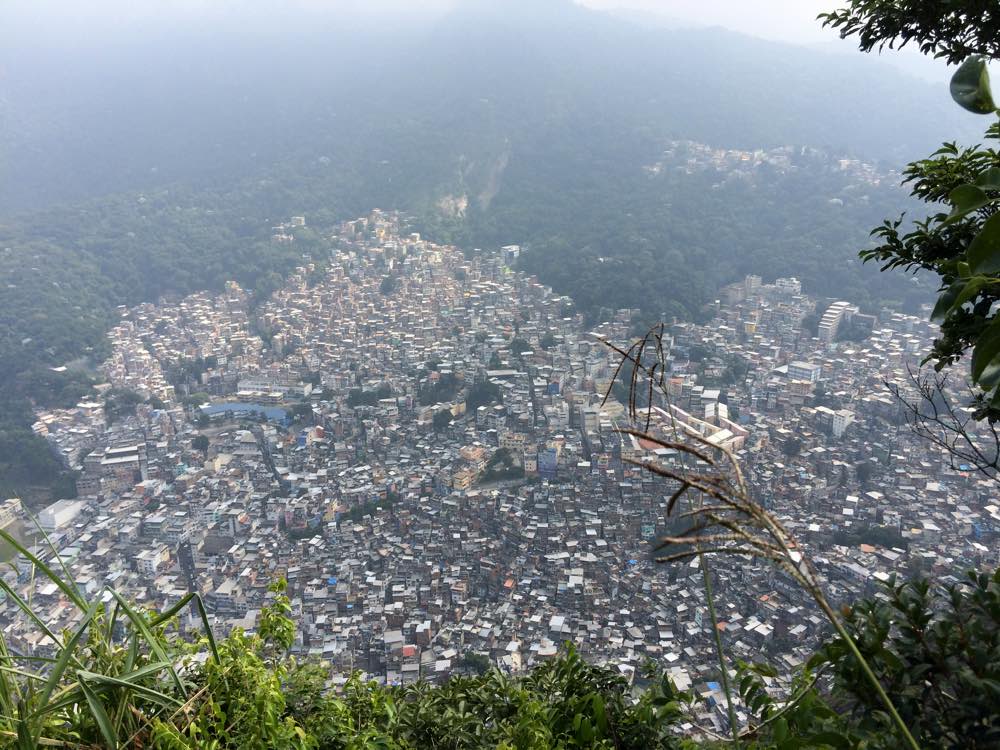
On a clear day, you can see the whole strand of sand of Ipanema beach, the heart-shaped Lagoa Rodrigo de Freitas , the Tijuca Forest and even Pedra Bonita and Pedra Gávea mountain peaks. I wasn’t that lucky and could only see silhouettes of these places through the fog.
Vidigal favela & Dois Irmãos: The verdict
Dois Irmãos is one of the most accessible hikes to do in Rio , which makes it a great opportunity for staying active while traveling. Combine it with a visit to a nearby favela – either Rocinha or Vidigal – and you have already a promise of a great day.
Pro tips for Vidigal favela & Dois Irmãos
- While Vidigal is now considered a safe area, with many hostels and tourists, it’s safer to book a tour. At the very least, it will prevent you from being scammed. I booked a tour with Marcos from Rio Active Tours . He is a very smart and knowledgeable guy, speaking perfect English and enriching our biking and hiking experience with interesting fun facts.
- Avoid taking pictures in the favelas . Firstly, you’re showing off equipment that is probably worth a monthly income for most of the locals, which is never a good idea. Then, they are not particularly crazy about it. There’s some controversial in Brazil around tourism in favelas because they tend to be marketed as “human zoos”. Taking pictures just enhances that behaviour.
Ipanema beach
The world-famous beach of Ipanema is another very popular sight in Rio de Janeiro . Tourism and private investment has turned this area into a hotspot for classy restaurants, shops, and nightlife and also into one of the most expensive places to live.
I’m starting to repeat myself but yet again, the setting here is gorgeous. Two mountains – Morro dos Dois Irmãos ( Two Brothers Peak ) – rise at the western end of the beach creating this beautiful backdrop. It’s the complete brazilian beach experience. You can rent sunbeds or chairs for as little as 5 reais for a day. The same people can bring whatever drink right to you. Beer and caipirinhas are particularly popular.
But there’s more. Every 60 seconds – I’m not joking – someone will pass right next to you selling something . This something can be anything from local cookies to bikinis, sandwiches to incense, as well as beach towels, açaí , sunscreens, sausages and fried shrimps, etc. Basically everything you need for a memorable sunbathing day!
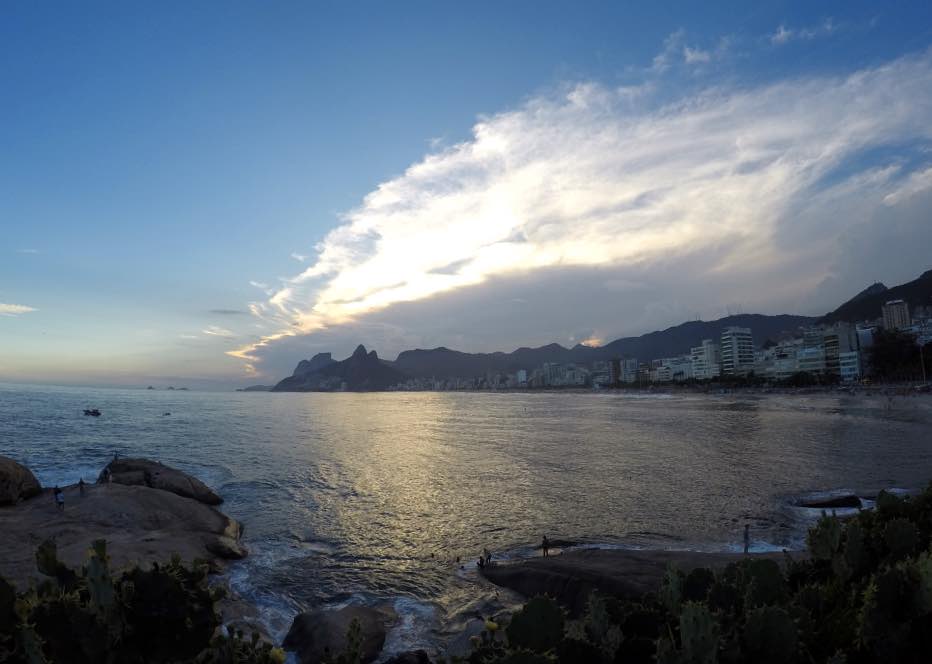
Ipanema beach: The verdict
Far superior than Copacabana in my opinion. Somehow the pulse of the city was more evident here. If you haven’t got time to explore the beaches outside Rio , go for this one.
Pro tips for Ipanema
- The beach itself is divided into segments marked by postos (lifeguard towers), who are also sub-cultures on their own. Posto 7 is for surfers and local communities. Posto 8 is a real-life Grindr, where the hip gay crowds hang out. Posto 9 is the busiest section, attracting younger and eclectic crowds perfect for families. Posto 10, like all of Leblon district, is for the wealthier fit crowds.
- Arpoador on the extreme east end of the beach, is a very popular spot for watching the sunset. Do it like the locals and don’t forget to clap once the sun is gone behind the mountains!
Daytrips in Rio de Janeiro
I had thought on booking a boat trip to Angra dos Reis and Ilha Grande during my week in Rio. However, the night before the forecast was of a very rainy day. We didn’t want to risk paying such an expensive tour (for Brazilian standards anyway). This decision came back to bite us in the ass as the next day I was sunbathing in Ipanema like a mad man.
Two lessons here. First, don’t trust forecasts in Rio . And secondly, don’t be as lazy as me! I should have gone somewhere. Here are some of suggestions of things you can do outside the city of Rio :
- Boat tour in Angra dos Reis & Ilha Grande
- Sunbathing at Barra da Tijuca
- Boat trip to Búzios
- Hike Floresta da Tijuca
- Hike Pedra Bonita (and maybe parasailing?)
One Week Itinerary of Rio
The exercise of tiding up all the above places in one logical, time-efficient and not too busy itinerary, turned out to be a challenge. In Rio , the options for getting around are still far from efficient and I quickly realized places are MUCH farther apart from what they seem on the map.
To make your life easier, I am publishing exactly my one-week itinerary of Rio :
Rio One Week Itinerary
Weather will play a big role in this plan. It’s important that you are flexible enough to change your plans when facing a rainy or an extremely hot day.
Where to stay in Rio de Janeiro
I highly recommend you stay in the Zona Sul (the Southern Zone) of Rio . Not only is the safest and with larger police presence, it’s also the best communicated to get around to several sights. Zona Sul includes the areas of Copacabana, Ipanema, Botafogo and Flamengo .
Find your hotel in this area:
Injoy Hostel, Botafogo Located in a very local neighborhood, well-connected and in a specific street with its own security guard, I can say I’ve always felt safe. Plus, they’ve got a mega-friendly staff! Book now
Safety in Rio
OK, let’s get real. Yes, you’ll need to be careful in Rio , crime do exist and unfortunately muggers don’t waste an opportunity.
Having that said, I felt a lot safer than what I’ve read and seen on the news. Media had definitely exaggerated my concerns before going there. If you follow these standard tips for staying safe in Rio , you have already increased dramatically your chances to have a crimeless trip.
Don’t let negative news ruin or cancel your plans. Stereotypes shouldn’t stop you from doing anything in life and certainly shouldn’t stop you from exploring this wonderful city.
Tips for Visiting Rio de Janeiro
- Travel insurance is key. No joke. Get a quote with these guys .
- Bring sunscreen and a bottle of water everywhere you go. You don’t mess around with the heat here.
- Sky-check every morning. Weather is so unpredictable in Rio that the vast majority of the forecasts I checked were wrong. Wait until waking up to look up to the sky to assign the clearest days for places like Christ and the Sugarloaf . Save the cloudy and rainy days for walking around the center or even for the beach.
- Don’t plan too much. Rio is not a walkable city nor it’s easy to get around. Getting from point A to point B will take you more than you think. Have this in mind and slow your pace when ticking things off your list.

Now I want to hear from YOU. What is your favorite place in Rio? What is missing from this itinerary for one week in Rio? I need tips to when I come back!
You might also like these articles 💬

3 Days in Mexico City: Full Itinerary for First-Time Visitors

A First-Time Mexico Itinerary For a 100% Independent Trip

Is Mexico City Safe? 11 Useful Tips For a Safe Trip

Destinations🌎

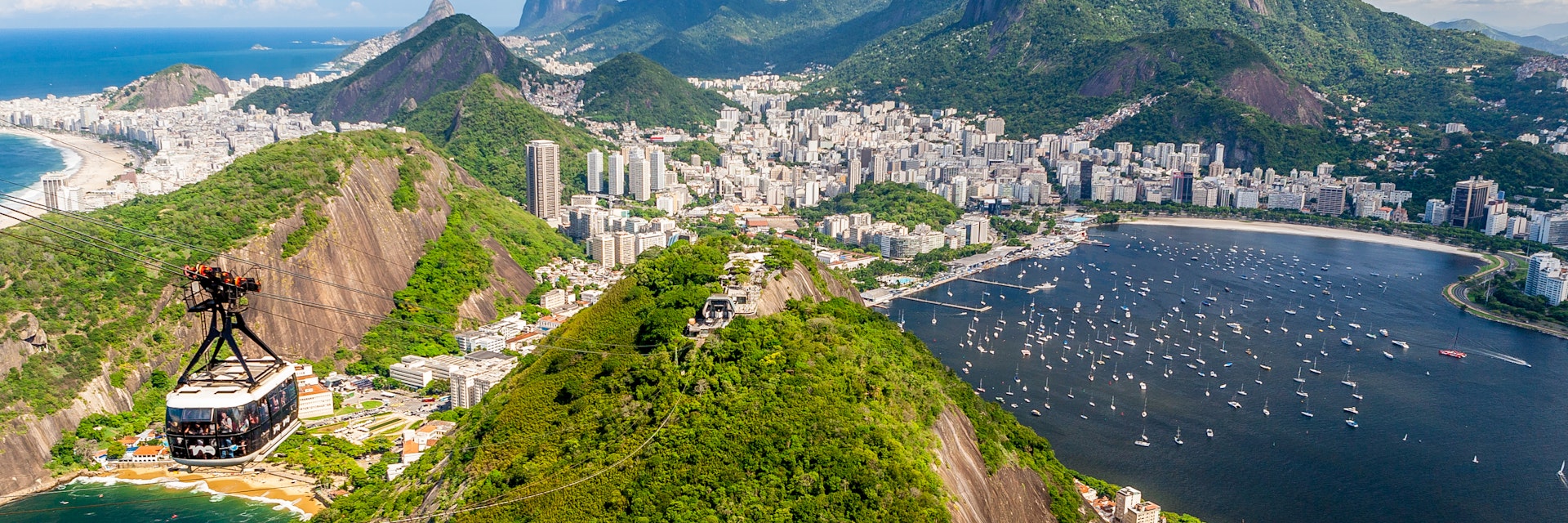
©Raphael Koerich/500px
Rio de Janeiro
Golden beaches and lush mountains, samba-fueled nightlife and spectacular football matches: welcome to the Cidade Maravilhosa (Marvelous City).
Best Time to Visit
Best things to do, leave the planning to a local expert.
Experience the real Rio de Janeiro. Let a local expert handle the planning for you.
Attractions
Must-see attractions.
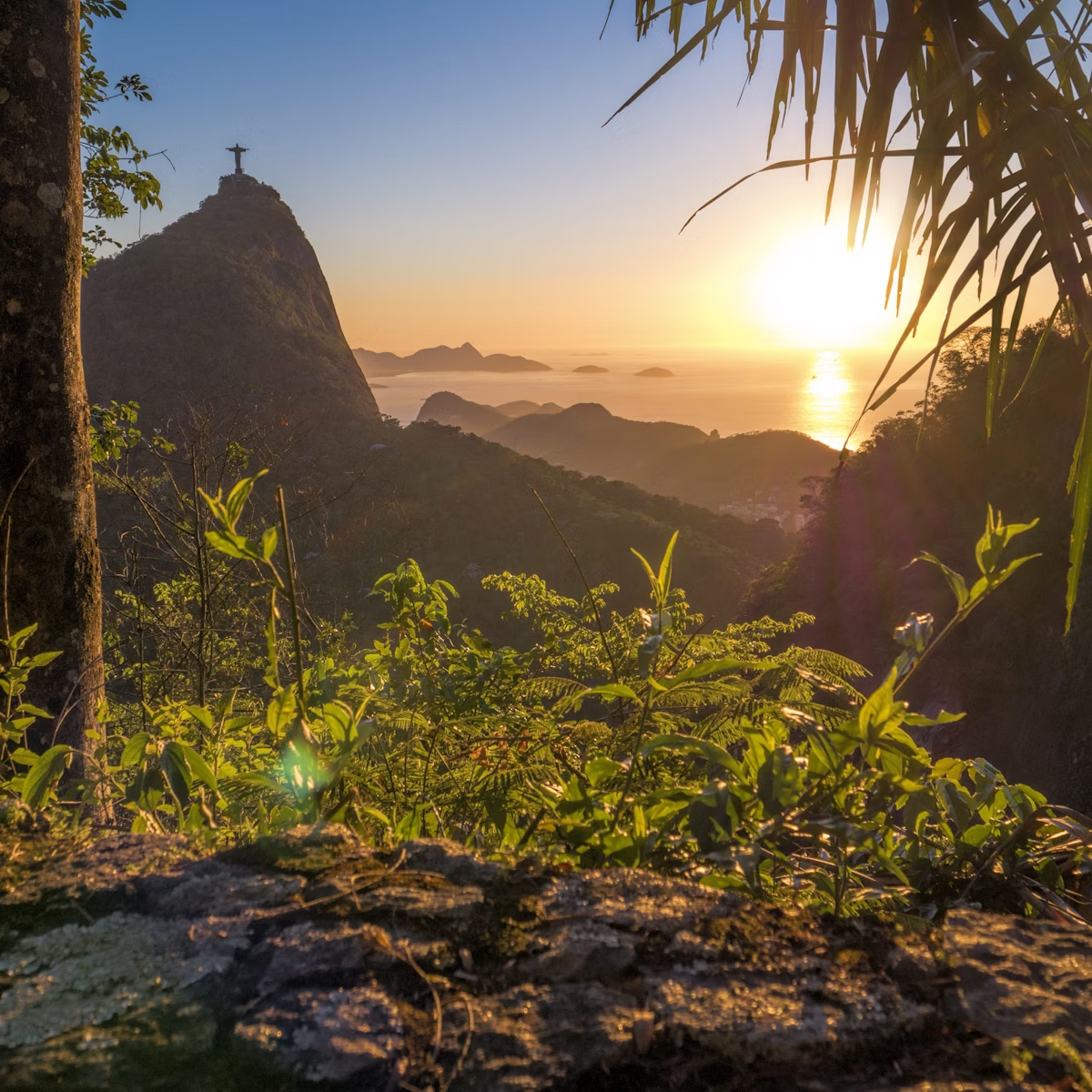
Parque Nacional da Tijuca
The Tijuca is all that's left of the Atlantic rainforest that once surrounded Rio de Janeiro. This 39-sq-km tropical-jungle preserve is an exuberant green…
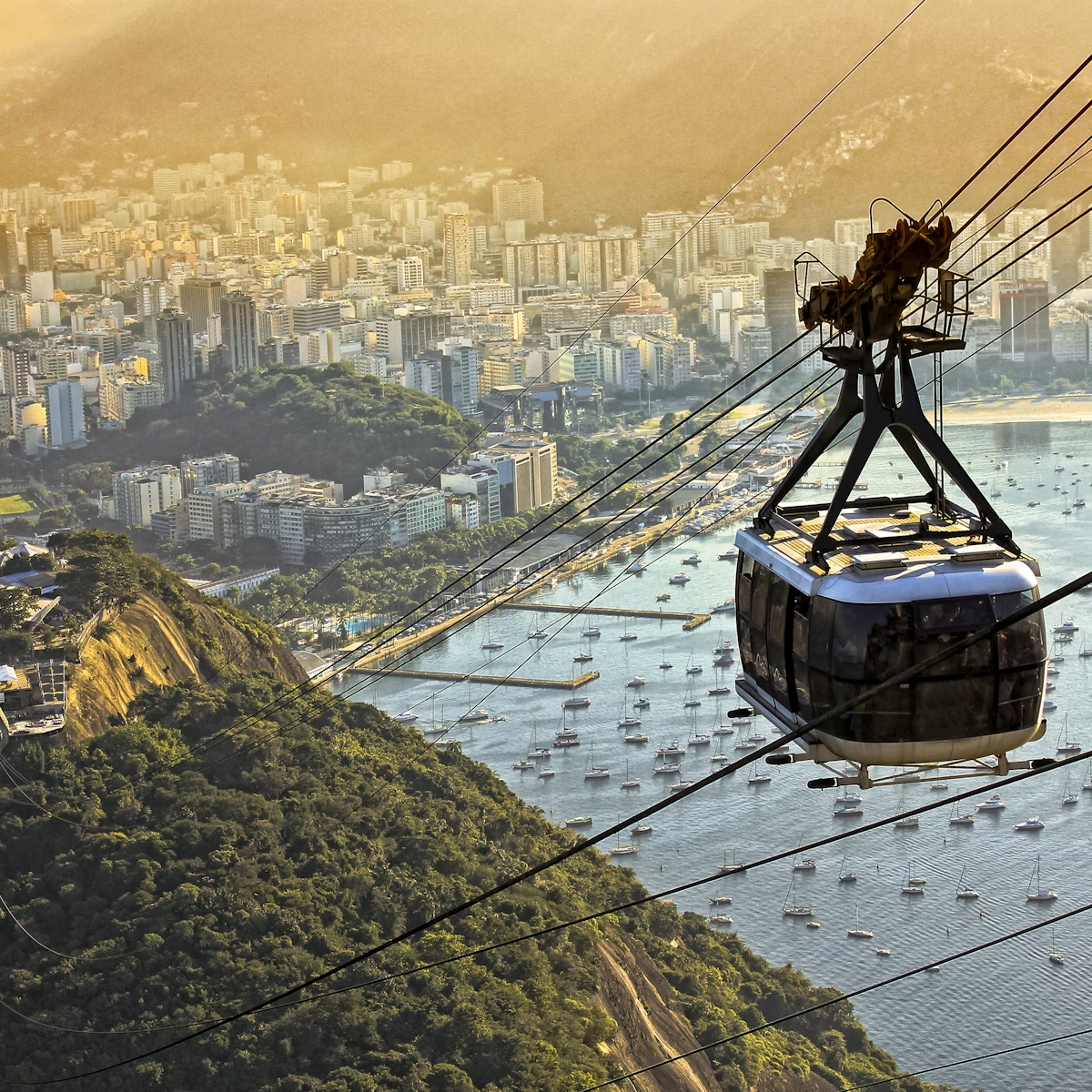
Pão de Açúcar
Seen from the peak of Pão de Açúcar, Rio is undoubtedly a Cidade Maravilhosa (Marvelous City). There are many good times to make the ascent, but sunset on…

Copacabana Beach
A magnificent confluence of land and sea, the long, scalloped beach of Copacabana extends for some 4km, with a flurry of activity along its length: over…
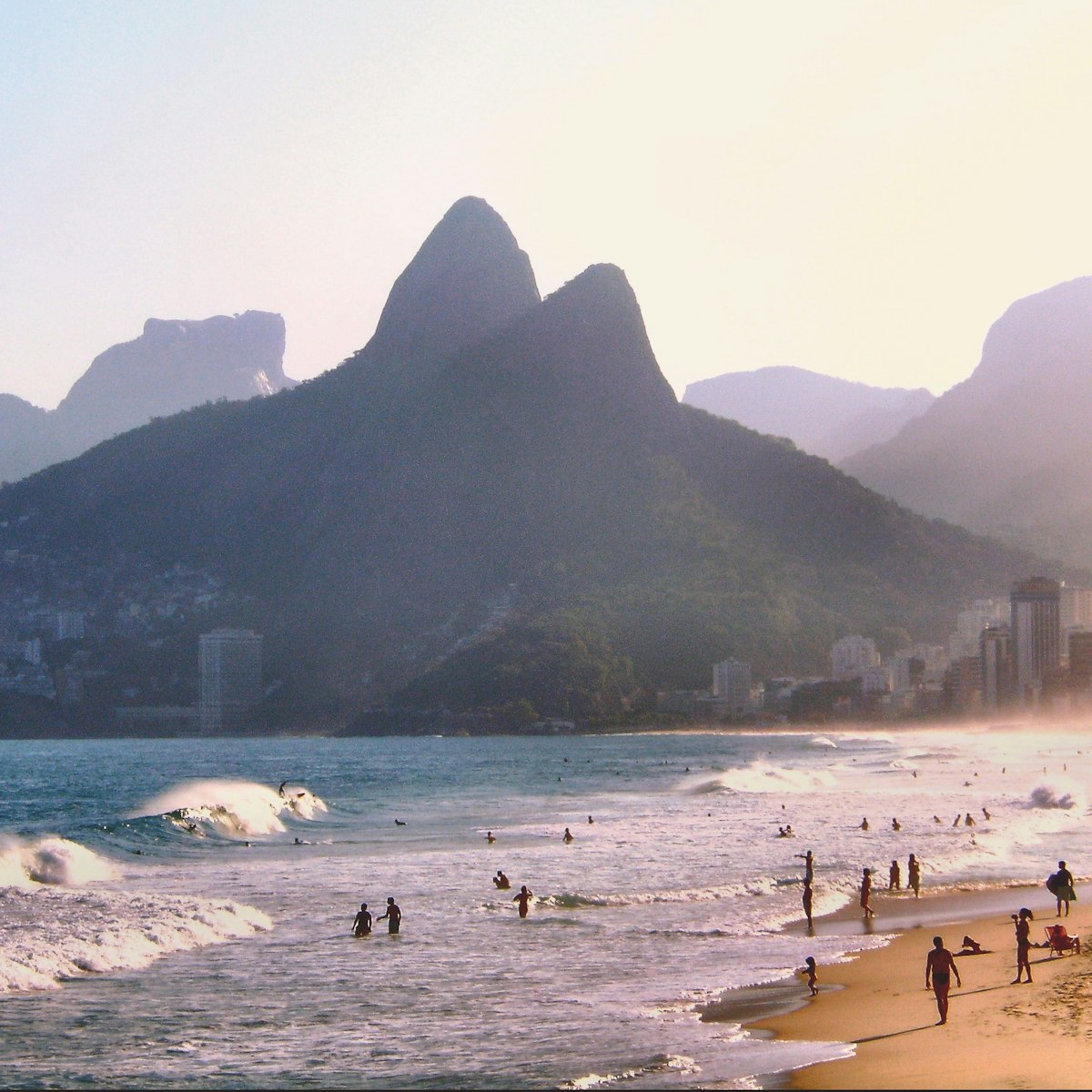
Ipanema Beach
Ipanema & Leblon
One long stretch of sun-drenched sand, Ipanema Beach is demarcated by postos (posts), which mark off subcultures as diverse as the city itself. Posto 9,…
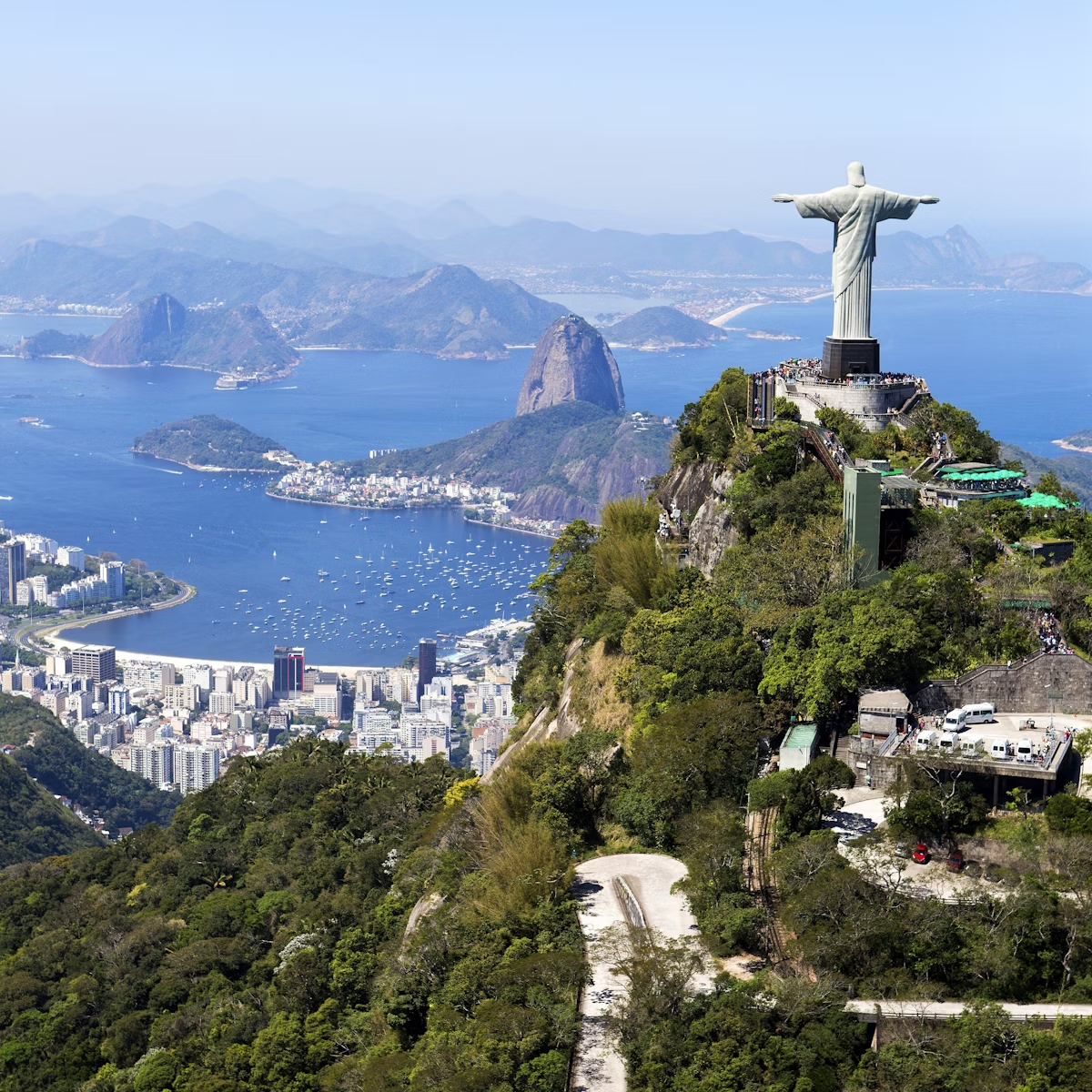
Cristo Redentor
Flamengo & Around
Standing atop Corcovado (which means ‘hunchback’), Cristo Redentor gazes out over Rio, a placid expression on his well-crafted face. The mountain rises…

Maracanã Football Stadium
Rio’s Maracanã stadium is hallowed ground among football lovers. The massive arena has been the site of legendary victories and crushing defeats. Maracanã…
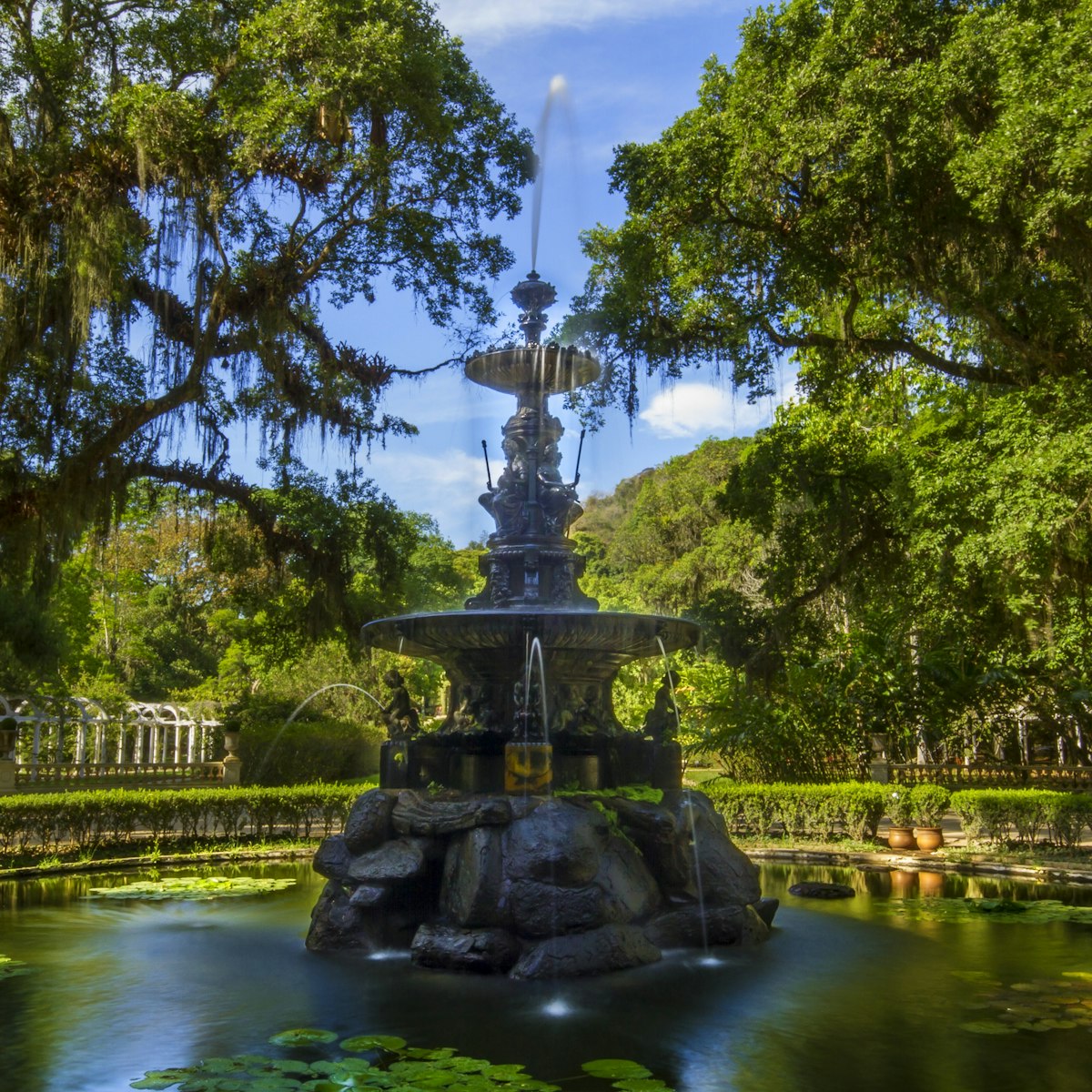
Jardim Botânico
Gávea, Jardim Botânico & Lagoa
This exotic 137-hectare garden, with more than 8000 plant species, was designed by order of the Prince Regent Dom João (later to become Dom João VI) in…

Instituto Moreira Salles
This beautiful cultural center hosts impressive exhibitions, often showcasing the works of some of Brazil's best photographers and artists. The gardens,…
Top picks from our travel experts
The 8 best things to do in rio de janeiro.

Lagoa Rodrigo de Freitas
One of the city’s most picturesque spots, Lagoa Rodrigo de Freitas is encircled by a 7.2km walking and cycling path. Bikes are available for hire from…

Largo das Neves
Santa Teresa & Lapa
A slice of village life in the city, this small plaza is one of Santa Teresa's most picturesque little squares. While Largo das Neves is empty by day, on…

Largo do Guimarães
The plaza named after Joaquim Fonseca Guimarães (a local resident whose house became Hotel Santa Teresa, just up the road) now forms the center of…
8 of the best free things to do in Rio de Janeiro

Museu do Índio
Though closed for renovations at the time of research, the small Museu do Índio features multimedia exhibitions on Brazil’s northern tribes and provides…

Parque Lage
This beautiful park lies at the base of the Floresta da Tijuca, about 1km from Jardim Botânico. It has English-style gardens, little lakes, and a mansion…

Instituto de Pesquisa e Memória Presto Novos
When Mercedes Guimarães was doing construction work on her house in 1996, workers uncovered huge quantities of human fragments. After discussions with a…

Boulevard Olímpico
Rio's formerly derelict port district has been reborn as a wide promenade lined with massive street art. A handful of renowned artists have painted…

Parque das Ruínas
This park contains the ruins – exterior brick walls and a newly built staircase – of the mansion belonging to Brazilian heiress Laurinda Santos Lobo. Her…
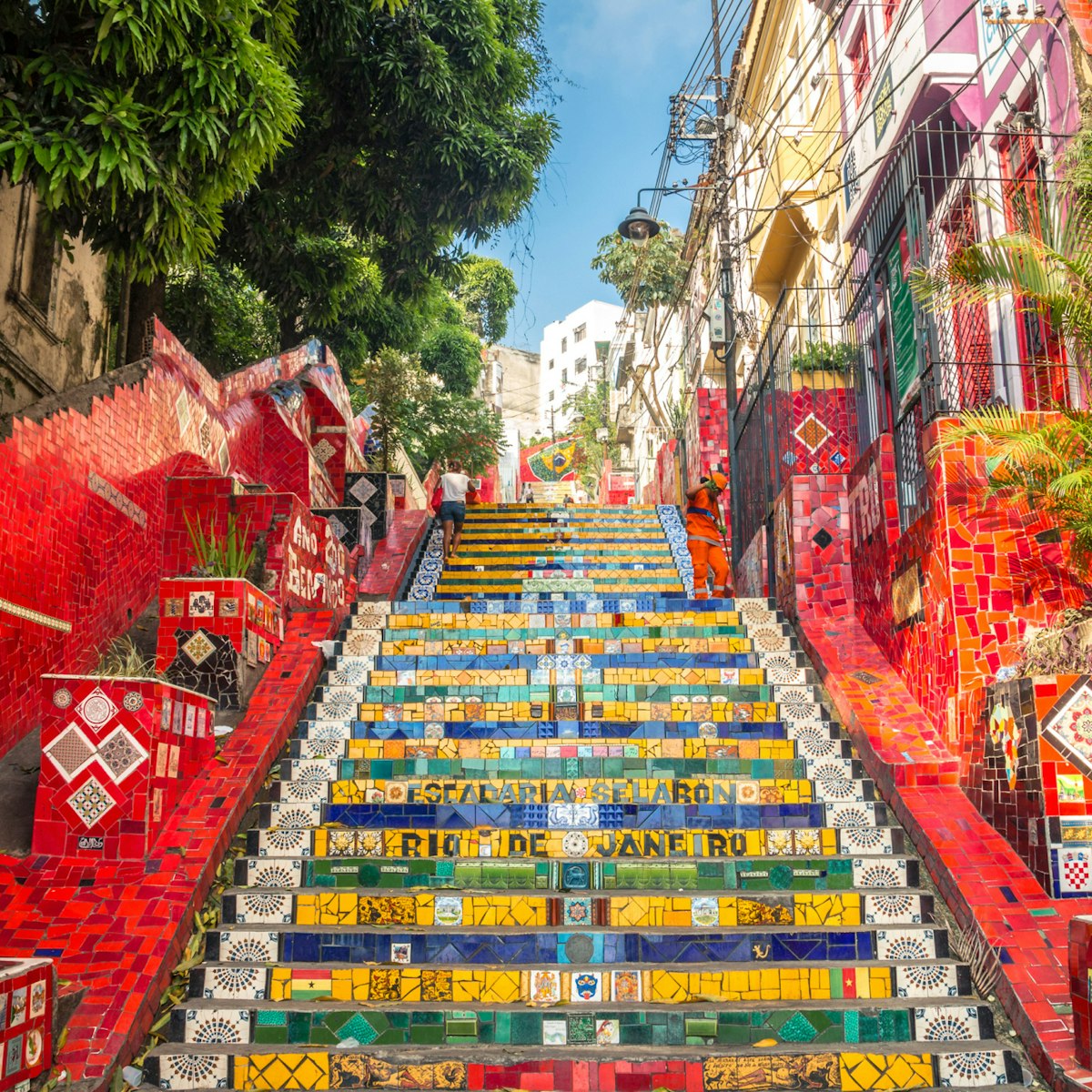
Escadaria Selarón
One of Rio's best-loved attractions, the steps leading up from Joaquim Silva became a work of art when Chilean-born artist Jorge Selarón decided to cover…

Centro de Arte Hélio Oiticica
This avant-garde museum is set in a 19th-century neoclassical building that originally housed the Conservatory of Music and Dramatic Arts. Today the…

Real Gabinete Português de Leitura
Built in the Portuguese Manueline style in 1837, the gorgeous Portuguese Reading Room houses more than 350,000 works, many dating from the 16th, 17th and…

The epicenter of Rio’s Carnaval, the Sambódromo was designed by Oscar Niemeyer and completed in 1984. During big parades, come here for fantastic views…

Parque do Flamengo
Officially called Parque Brigadeiro Eduardo Gomes, Parque do Flamengo was the result of a landfill project that leveled the São Antônio hill in 1965. It…
Planning Tools
Expert guidance to help you plan your trip.
Things to Know
Leave your worries at home and embrace the Carioca way of living with these top tips from a local.
Best Neighborhoods
Rio de Janeiro is a thriving, multicultural city and this is especially evident in its distinct and unique neighborhoods. Here's our picks of the best.
See the wilderness-backed beaches, ancient sites and smaller-scale cities of Rio de Janeiro state on these top day trips from Rio de Janeiro.
Money and Costs
Rio may not be the most budget friendly destination in South America, but these tips will help you make your reais go farther in the Marvelous City.
Transportation
As the second largest city in Brazil, Rio's size can be intimidating to visitors. Here's everything you need to know about getting around Rio de Janeiro.
Free Things to Do
From world-famous beaches and generous green spaces to cultural centers and museums, there's plenty to do in Rio without spending a single centavo.
Traveling with Kids
Brazil is home to a family-centric culture, and Rio de Janeiro is no exception – here's our guide to help you plan a great trip to Rio with kids.
Plan with a local
Experience the real Brazil
Let a local expert craft your dream trip.

Latest stories from Rio de Janeiro
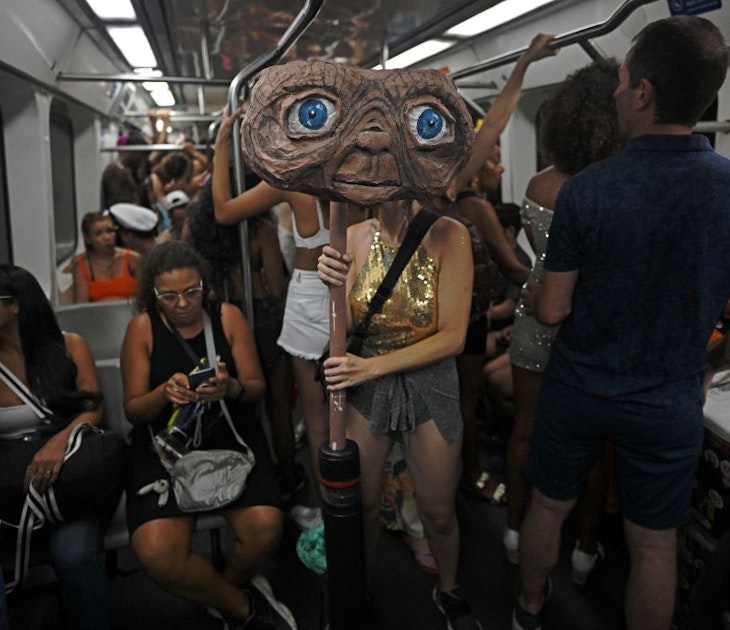
Festivals & Events
Jan 16, 2024 • 7 min read
The world’s largest street party changed my life. As I visit for a third time, here is everything you need to know to make sense of Carnaval 2024.

Dec 2, 2023 • 8 min read

Nov 13, 2023 • 6 min read

Nov 12, 2023 • 5 min read

Nov 10, 2023 • 5 min read

Nov 10, 2023 • 4 min read

Nov 8, 2023 • 4 min read

Oct 6, 2023 • 4 min read

Oct 2, 2023 • 5 min read

Sep 30, 2023 • 5 min read
in partnership with getyourguide
Book popular activities in Rio de Janeiro
Purchase our award-winning guidebooks.
Get to the heart of Rio de Janeiro with one of our in-depth, award-winning guidebooks, covering maps, itineraries, and expert guidance.
Rio de Janeiro and beyond


The Perfect 3 Days in Rio de Janeiro Itinerary
By: Author Stefania Guglielmi
Posted on Last updated: January 1, 2023
Categories Brazil , South America
Trying to plan the ultimate 3 days in Rio de Janeiro Itinerary? We’ve got you covered! This comprehensive guide will help you make the most of your time while visiting all the city highlights!
There is no other city in the world like Rio de Janeiro . This amazing city in Brazil is known to have more natural beauty per square inch than any other major city in the world which is really no surprise considering that this huge city is surrounded by both mountains and sea .
There is so much to love about Rio that makes it one of the very best places to visit in Brazil , if not THE best one. This city will give you plenty of opportunities to immerse in the local culture and embrace the picturesque natural scenery. If you are thinking of a beachy and informal vibe for your next destination, Rio won’t disappoint .

I came up with this 3 days in Rio de Janeiro itinerary that you can use as a point of inspiration to experience the best that the city has to offer .
How to Get from the Airport to your Hotel
The Galeao International Airport is located around 10 miles (17 kilometers) from Rio de Janeiro, and there are several options to get to the city.
▶ By Bus : Taking a bus is the cheapest option to get from the airport to Rio de Janeiro . You can take the BRT (Bus Rapid Transport), which has stops in Terminal 1 and Terminal 2 arrivals and, since it has its own lanes, it’s pretty fast. The Frescão bus 2145 and 2016 is another alternative. Line 2145 stops on Terminal 1, while line 2016 stops on both terminals.
▶ By Taxi : Taking a taxi is a more comfortable option, since you’ll have space for your luggage and will be taken directly to your hotel . You can expect the ride to cost you around R$80 (15 dollars at the time of writing). You can also get an UBER at the airport.
▶ By Private Transfer : This is probably the most convenient transportation option, as your driver will be waiting for you at the arrivals hall and guide you to your car, ensuring you have a hassle-free transfer all the way to your hotel. ➥ BOOK IT HERE
How to Get Around Rio de Janeiro
Knowing how to get around the city is essential so you can see as many sights as possible during your 3 days in Rio de Janeiro, and though it’s a large and sprawling city , it’s quite easy to get around and you have many choices of public transport.
I’d say getting around by metro is the best option in Rio since it covers almost every area of interest in the city, especially those areas that are not reached by the bus lines. There are two lines: Line 1 which goes north from downtown, and Line 2 which starts at Central Station and heads south.
The metro system, which is safe and efficient, works with a magnetic ticket card that you can get at the station or a machine ticket booth . You have the option to purchase a ticket for a single ride for R$3.70 or opt for the rechargeable ones that you need to add value to.
The metro operates from Monday to Saturday from 5 AM to 12 AM . On Sundays and holidays, the metro runs from 7 AM to 11 PM.
Taking an Uber is another excellent option to get to the main stops of your 3 day itinerary in Rio de Janeiro. Besides offering convenience, they are ideal if you don’t want to ride local taxis as Uber drivers are more trustworthy . Bear in mind that the Uber Black service costs more because they use newer car models.
If you are looking for a fast yet cheap way to get around, taking the bus is also a good option . The ticket cost for the bus is anywhere from R$2.50 to R$4 , depending on your route.
DAY 1: THE HIGHLIGHTS
➤ If you’d like to visit Rio de Janeiro’s highlights in one day, you can opt to spend your first day with a Full-Day Tour that takes you to the must-see attractions, from Christ the Redeemer Statue to Sugarloaf Mountain, the Maracanã Stadium, and the Selarón Steps. You’ll also enjoy lunch and roundtrip transportation. ➥ BOOK IT HERE
Mirante Dona Marta for the best views in Rio
What better way to spend your first day in Rio than to take in the city views? For that, head to Mirante Dona Marta , which is a popular lookout that gives you views of Corcovado and Sugar Loaf Mountain . It’s very easy to get there because it’s quite close to the city which adds to its popularity.
Mirante Dona Marta is 364 meters high and lets you see some of the most iconic structures of the city. Aside from the ones mentioned above, you can also spot the Maracana Stadium , Guanabara Bay , Copacabana , and Santa Teresa neighborhood .
Cristo Redentor (Christ the Redeemer)
The Christ the Redeemer statue is another iconic destination worth visiting when you are in Rio.
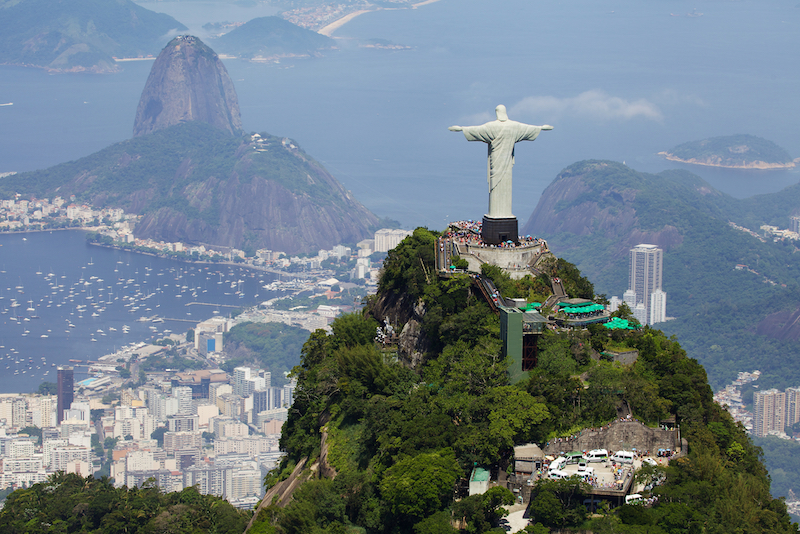
You’ll have two transportation options to get to this UNESCO World Heritage Site from Rio. The first is the train , and the other is taking the van at the official pick-up points which are at Praca do Lido in Copacabana and at the Citta America in Barra de Tijuca.
The vans leave every 15 minutes and the ticket cost includes the return transport and entrance fee .
Since this is an iconic landmark, it’s swarmed by tourists so you should purchase your ticket in advance as it will save you time while you take the Corcovado Train.
From up here, you can enjoy some incredible views over the city! If it’s foggy and covered, have patience. When I visited, you couldn’t see absolutely anything, but our guide told us to give it some time and a few minutes later this view below appeared.

➤ The Christ the Redeemer Official Cog Train Ticket takes you all the way to the Tijuca National Park, which is the world’s largest urban forest, on a picturesque train ride. Once you get there you’ll be taken right to the foot of the Christ the Redeemer statue to enjoy the views and the visit. ➥ BOOK IT HERE
➤ You can otherwise get the Official Ticket with Van Transport , which offers transportation from either two departure points in strategic locations or pickup from your hotel. You’ll enjoy magnificent views during your journey and get to the top of Corcovado Hill to marvel at the statue from up close. ➥ BOOK IT HERE
Lunch at Assador Rio
Head to Assador Rio for lunch if you want to indulge in local Brazilian cuisine . This restaurant is known for its churrasco and barbecue meat with a steakhouse-style interior décor and food that is raved about by locals and tourists alike.
You’ll find all kinds of meats you can imagine – from barbecue beef, chicken, lamb, and more. And there are options for both indoor and al fresco dining with a view of the sea and Sugar Loaf Mountain .
Go on a Sunset Cruise through the Guanabara Bay
G oing on a sunset cruise should be on any itinerary for Rio de Janeiro , because it allows you to admire the city from a new (and gorgeous!) perspective.

The cruise along Guanabara Bay passes by several monuments which range from very classic to contemporary ones, designed by architects from all over the world. You’ll also get a chance to marvel at the exceptional beauty of the mountain ranges and other landscapes along the coast.
➤ The Rio de Janeiro: Sunset Sailing Tour offers the exclusivity of only taking small groups, so you can enjoy first-row seats to marvel at the sun setting behind the city. An onboard service with snacks and freshly-made drinks is included, as well as hotel roundtrip transportation. ➥ BOOK IT HERE
➤ With the 3-Hour Sailing Trip on Guanabara Bay you’ll get aboard a fully equipped sailboat and discover the iconic Rio de Janeiro landmarks from the water. Your guide will point to the different sights and tell you all about the city’s history. A round of drinks and snacks are included. ➥ BOOK IT HERE
Tapas and Drinks at Meza Bar
To cap off the first of your three days in Rio de Janeiro, head to Meza Bar for tapas and drinks. This is known as the see-and-be-seen hotspot in Rio , making it a must for those interested in exploring the vibrant nightlife of the city.
This hotspot is known for its Brazilian tapas , and they also serve a wide range of drinks and cocktails , some of which are exclusively available in this bar.
DAY 2: CARNIVAL, RODIZO & HISTORY
Walk around the olympic boulevard.
The Olympic Boulevard is the best place to start off the second day of your Rio de Janeiro travel itinerary. This is where you’ll get to discover the legacy of the Olympic Games . You’ll enjoy your time walking around as you stumble upon some of the most modern and animated areas that the city has to offer .

In particular, Olympic Boulevard is home to one of the best street arts in the world – Eduardo Kobra’s 32,300 square-foot graffiti wall . This huge mural is a Guinness World Record holder and leaves behind a legacy of the 2016 Rio Olympic Games. By walking around this area, it’s inevitable to get the sense that street art is really celebrated in this city.
Carnaval Experience
If there is one more thing that Rio is famous for, it would be its vibrant and colorful festivals , especially the Carnaval!
➤ With the Carnaval Experience you’ll have the chance to take a behind-the-scenes peek at Rio’s famous carnival as you tour the Carnival Factory. You’ll visit the dressing rooms, try on some costumes, and learn about the history and production of Rio’s samba and carnival. You’ll end the tour with an incredibly fun samba class. ➥ BOOK IT HERE
If carnival parades are not your cup of tea, a good alternative is visiting the Museum of Tomorrow . This science museum in the city of Rio was designed by a neo-futuristic architect from Spain – Santiago Calatrava .
You’ll find it next to the waterfront at Pier Maua, this museum is divided into 5 different exhibits that showcase science and innovative design .
Explore the Santa Teresa Neighborhood
The Santa Teresa neighborhood is a great destination in Rio de Janeiro that you’ll find on top of Santa Teresa hill. What is so appealing about this neighborhood is its narrow and winding streets that are frequented by tourists and artists .
The neighborhood is named after the 18th-century Santa Teresa Convent , which by the 19 th to 20 th century was transformed into an upper-class borough that is home to many opulent villas.
Today, this fashionable neighborhood is a stylish hotspot filled with art studios and galleries. Of course, you can also find many restaurants and bars offering different delicacies and drinks.
➤ You can explore the neighborhoods of Santa Teresa and Lapa with a Tram Ride that will take you across the famous Arcos da Lapa aqueduct. You’ll explore Santa Teresa’s landmarks and walk down the popular Selarón Steps as you make your way to Lapa, where you’ll get to discover its main attractions. ➥ BOOK IT HERE
Lunch at Aprazivel Restaurant
When it’s time for lunch, the Aprazivel Restaurant is the best place to go to break up your exploration of Santa Teresa and its sights without leaving the area.
This restaurant specializes in artisan Brazilian cuisine and cachaca . You’ll see how it’s located in a country-home setting so the ambiance in itself is an attraction where you can enjoy dishes made with organic produce from sustainable farming and local ingredients.
If you are seeking vibrant nightlife, there is no better place to head to than the bohemian neighborhood of Lapa . This area is famous for its dance halls, music bars, clubs, and open-air samba jams. This really is the perfect place to go if you want to enjoy live music with the Roman-style Arcos de Lapa aqueduct as your backdrop .
While known as a nightlife hub, the Selaron steps (or the Escadaria Selaron) are one of the main attractions in this neighborhood . The legendary steps are named after the Chilean artist Jorge Selaron, who devoted 20 years of his life to transforming this stairway into a work of art , which has now become one of the iconic symbols of the city of Rio.
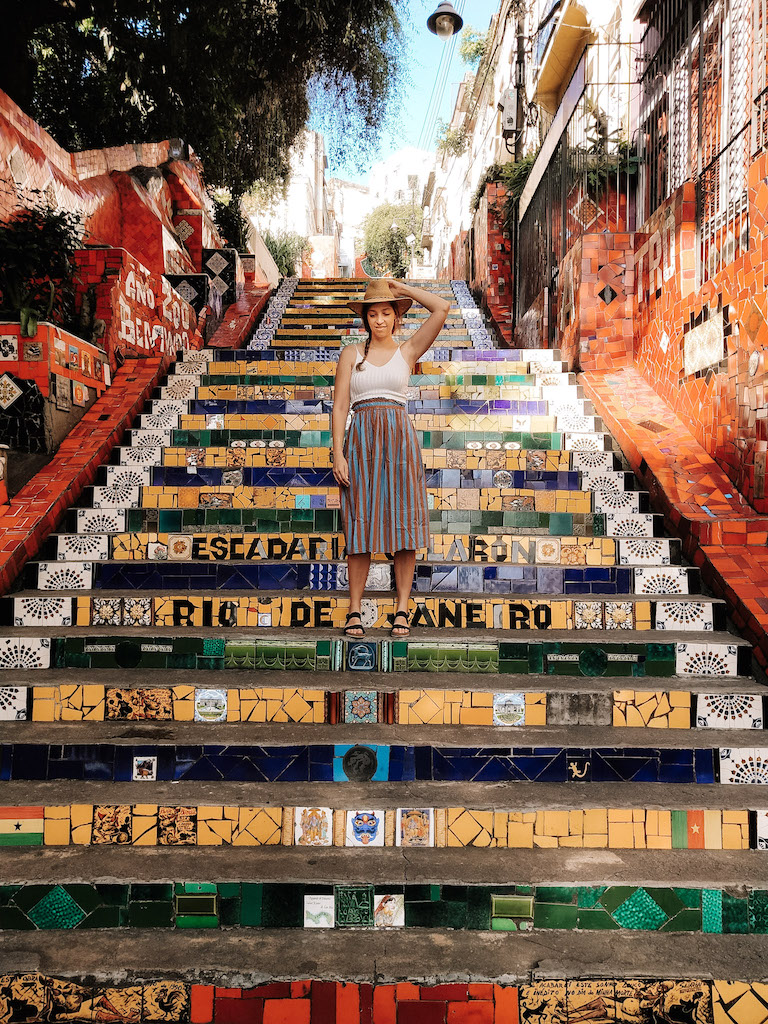
T he 215 colorful steps are covered with a mosaic of small ceramic vibrant tiles in red, green, yellow, and blue, and it’s a must-visit in any 3 days itinerary in Rio de Janeiro (or 1 or 10-day itineraries!)
Night at Rio Scenarium
To end your second day in Rio, why not party the night away at Rio Scenarium?
This nightclub is a favorite spot for tourists because of the antiques and chandeliers that adorn every corner of the club’s three floors . You could say that when it comes to decorations, this nightclub is definitely one that wants to make a big impression.
The long queue outside the bar is proof of its popularity , so don’t be discouraged by it. When you come here during the weekends, you get to enjoy a live samba band, but there’s also one floor that is primarily playing international dance or pop music .
➤ Tickets to Rio Scenarium can be bought for just the show or including dinner. Both options grant you entrance to the club as well as pick up and drop-off at your hotel. ➥ BUY YOUR TICKET HERE
DAY 3: SUGARLOAF MOUNTAIN + THE BEACHES
Sugarloaf mountain.
A trip to Rio’s sweetest attraction should be the first on your agenda for day three of your itinerary – Sugarloaf Mountain . The particular name comes from the similarity of the mountain’s shape to that of the loaves of sugar . In fact, the sugar cane industry was booming in Brazil during the 16th century, so that might have also influenced the name.
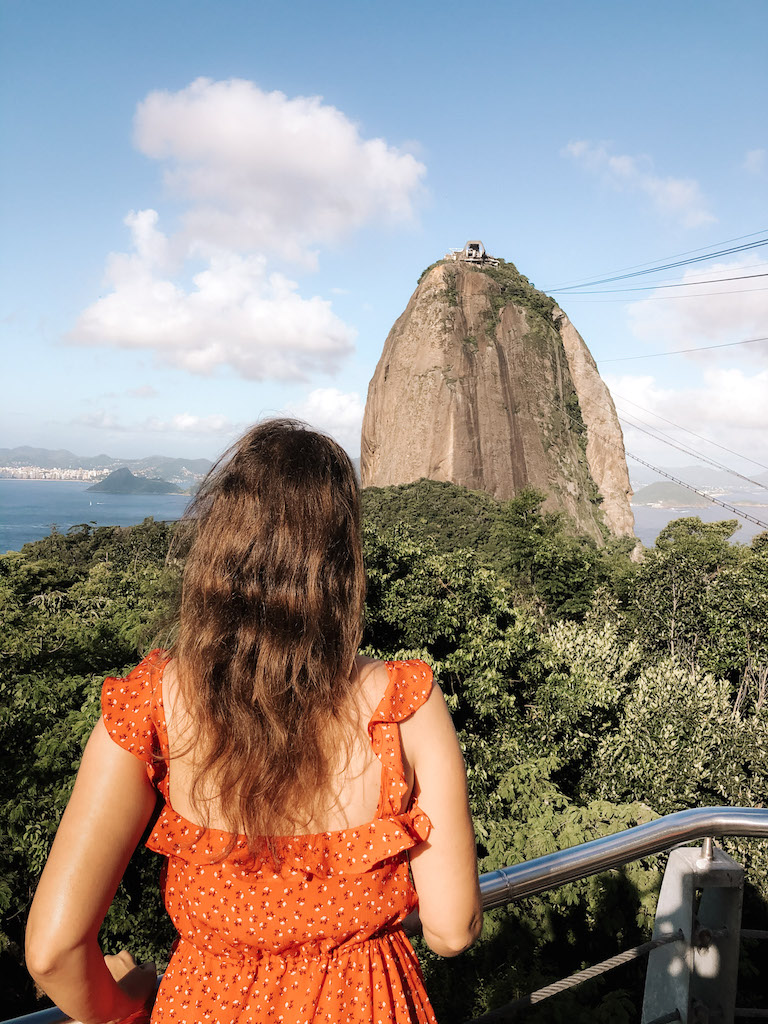
This mountain made of granite measures 1300 feet (396 meters) which, of course, makes it another lookout point for breathtaking views of the Rio cityscape.
You can get to the mountain via cable car , which is an experience worth enjoying in itself. Nestled in Guanabara Bay, the view from the summit includes the sparkling blue ocean , the rainforest in Rio , a nd the Copacabana and Ipanema beaches directly below the mountain.
Due to the popularity of this tourist attraction, there is understandably a long line to get to ride the cable car , so I recommend buying your tickets in advance.
➤ The Sugarloaf Cable Car Official Ticket grants you a roundtrip panoramic ride in the cable car and unlimited time to spend at the summit, where you’ll witness stunning views of the coastline and probably take a zillion pictures. ➥ BUY YOUR TICKET HERE
➤ To avoid the queues and get directly on the cable car, get the Sugarloaf Mountain Fast-Pass Ticket that includes a guided tour. You’ll enjoy a 1-hour tour with a specialized guide and spend as much time as you want at the mountain afterward. ➥ BOOK IT HERE
Stroll Down Copacabana Beach
You’ll find Copacabana Beach within the Zona Sul district of Rio de Janeiro. You should definitely include this iconic beach in your itinerary: it’s undeniably one of the most gorgeous beaches in the world , and also among the most famous!
Copacabana Beach is 2.5 miles (4 km) long and is filled with several beach bars where you can stop for some food and drinks or, why not, coconut water or juice served straight from the coconut !
Another thing you’ll notice is that there are many sports activities to do here . Volleyball is one of them but you can also find football courts, and there are also many places near the beach with training equipment to work out.
To get to Copacabana Beach, you can take Line 1 on the subway or one of the public buses .
Aside from Copacabana, there is another popular area in Rio that is known for its air of hip sophistication and many attractions that will keep you busy for the day.
You can start exploring Ipanema by heading down to the long stretch of beach that faces the neighborhoods in the area. Pamper your feet with the feel of the soft sand as you see the joggers, bikers, and skaters that pass you by from the wide esplanade.
Don’t forget to drop by one of the beachfront bars or botecos that offer snacks and cold drinks to soothe you from the heat, and don’t miss the opportunity to try the local delicacy – salgadinho – which is a kind of fried dough that comes with a savory filling.
Away from the beach, Ipanema has plenty more to offer . It’s a paradise for shoppers because you can find luxury shops , shopping malls , and independent retailers along with boutiques selling local handicrafts.
You can walk down Rua Visconde de Piraja and Rua Garcia d’Avila to find these different shops to get your retail therapy. In addition, there are also plenty of cultural attractions at the Ipanema Art Gallery and Amsterdam Sauer Museum .
Obligatory stop at Gilsons Martins
There’s no better way to end your 3-day tour of Rio de Janeiro than going shopping . Make sure you pick up a few souvenirs to take home, and one of the best places to do so is one of the many Gilson Martins stores throughout the city that offer unique and stylish signature items displaying Brazilian pride while also being sustainable.
The works of Gilson Martins are a showcase of the quality workmanship and artistic side of the city and they are sold at affordable prices so there’s really no excuse not to take some of his pieces with you as you head home! If you are looking for authentic Brazilian items, his creations are the perfect fit.
Once your souvenirs are tucked away in your luggage, it’s time to enjoy your last night in Rio .
➤ Take a 1-Hour Samba Lesson to experience this intrinsic part of Brazilian culture and showcase your newly acquired skills when you get home. Choose the type of Samba you want to learn and enjoy this crash course in which you’ll have plenty of fun! You’ll also get a CD with the music to continue your dances after the trip. ➥ BOOK IT HERE
➤ Take your Samba lessons to another level by combining the Samba class with a night out in Rio . You’ll enjoy a 1-hour dance class to get the hang of it, and then head out to explore Rio de Janeiro’s nightlife and show your Samba moves at a local club. ➥ BOOK IT HERE
Attempting to see Rio in 3 days is not an easy task , but hopefully this itinerary will help you organize your time and visit the most spectacular landmarks, all the while enjoying the city’s nightlife, cuisine, and striking landscapes.
Rio de Janeiro Itinerary FAQ
To enjoy Rio de Janeiro you need a minimum of 2 full days, although the more the better, as there is so much to see and do!
Tourists visiting Brazil need to exercise increased caution and be watchful of their surroundings and personal belongings. Rio is a very touristy city, however, so if you stick to the main tourist areas and pay attention you should be fine.
Stefania Guglielmi is the founder of Every Steph. Originally from Bologna, Italy, she's been traveling full-time since 2016 and has visited over 50 countries across 6 continents. She believes sustainable travel and luxury travel can go hand in hand and has been advocating for responsible tourism since 2014. Stefania's advice and travel experiences have been featured in important publications such as Business Insider, Refinery29, and Yahoo Money.
Sign me up for the monthly newsletter!

3-Day Itinerary for Rio de Janeiro
Rio de Janeiro might not be Brazil’s capital city, but it’s certainly much more popular with tourists. It’s not surprising that this South American beachside city with an endless list of cultural attractions.
One of the seven natural wonders and one of the seven wonders of the modern world welcomes millions of travellers every year. A 3-day itinerary for Rio de Janeiro is all you need to see the highlights of this incredible place.
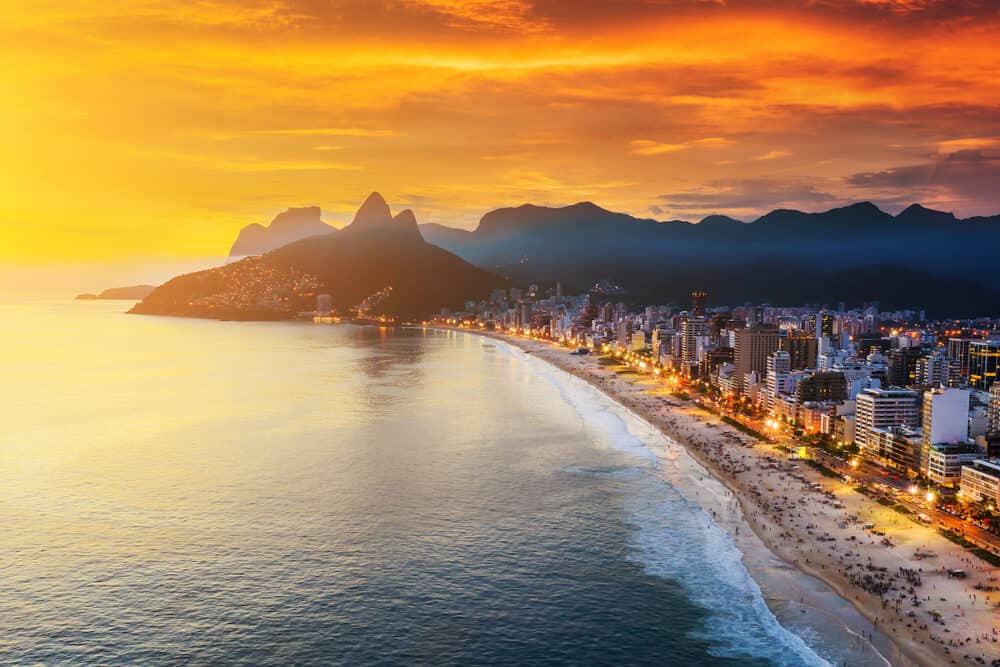
The best time to visit Rio de Janeiro to avoid the busiest and most expensive period is the shoulder season of April – June and September – November.
The weather will still be warm during these months so it’s a win-win. Carnival in later February is when Rio comes alive and is a bucket list event for travellers who love to party.
Rio de Janeiro is a big city so choosing where to stay is an important decision. Most visitors prefer the beachside neighbourhoods of Copacabana, Ipanema and Leblon.
No matter where you stay or what time of year you visit, you’re sure to have an amazing 3 days in Rio.
This 3-day itinerary for Rio de Janeiro covers everything you need including what to do, where to eat and drink, and what tours to book. You won’t need to look anywhere else when planning what to do in Rio de Janeiro in 3 days!
Plan your trip?
Avoid hidden fees in the exchange rate while withdrawing from millions of ATMs abroad, paying in restaurants and shops, and buying your accommodation and flights using the Wise Card . You can hold up to 40+ currencies at once to spend in in over 150 countries, and convert them in real time with the free Wise app.
Need help planning your trip from start to finish? Check out these helpful links:
- Cheap flights
- Savings on accommodation from hostels to luxury hotels
- Affordable car rental options
- Affordable sightseeing tours and day trips
- Travel Adapter – All in one so you don’t have to carry a bunch around
This post contains some affiliate links for your convenience. Click here to read my full disclosure policy. You can also read our content/editorial policy here .
Table of Contents
Day 1 in Rio de Janeiro
Witness the views from mirante dona marta.
Start your 3-day Rio de Janeiro itinerary with one of the best views of not only the city but the coastline too.
Mirante Dona Marta is a cliffside observation deck that allows you to see Sugarloaf Mountain, the Christ the Redeemer monument, the harbour, and many of the city’s most impressive skyscrapers.
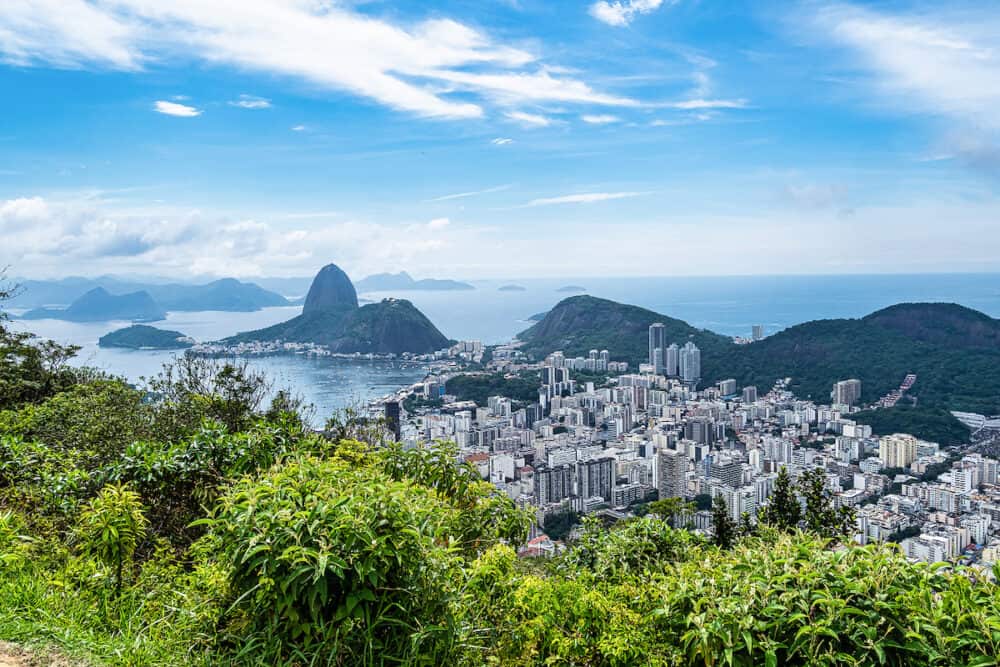
Christ the Redeemer
Of course, you cannot visit Rio de Janeiro without visiting the Christ Redeemer monument. It’s one of the most-visited and photographed statues in the world and one of the seven wonders of the modern world.
This 100-year-old 30 m statue of Jesus Christ is accessible via an inclined cogwheel railway. Like Mirante Dona Marte, the views from the statue’s base are incredible. Book your tickets in advance because as you can imagine, it’s a popular thing to do in Rio!
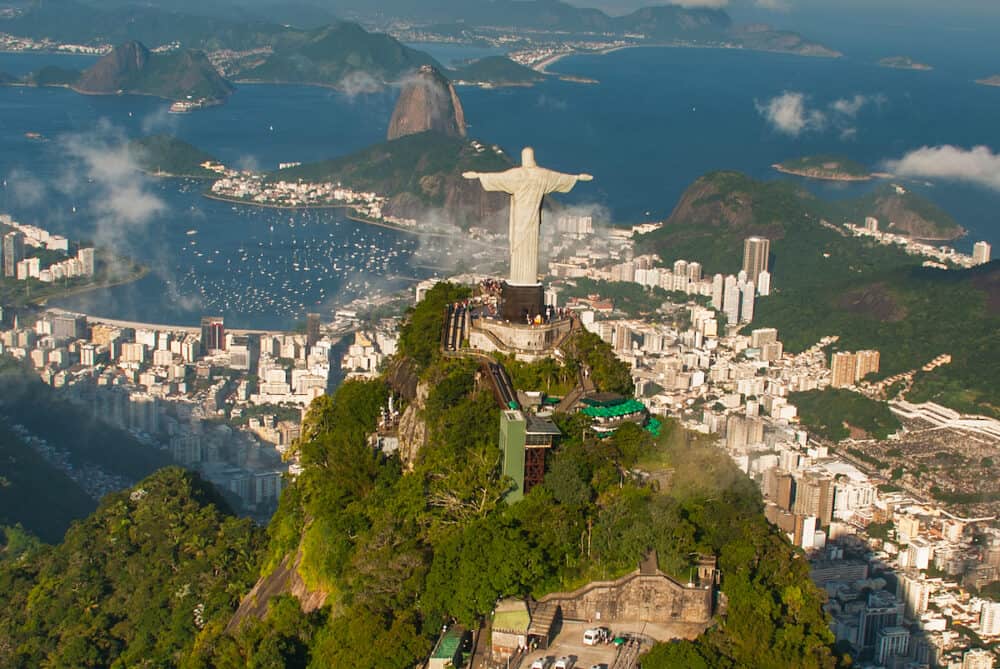
Eat Lunch at Guacamole Jardim Botânico
You’ll be eating a lot of Brazilian food over your three days in Rio de Janeiro, but why not try out another Latin American cuisine too? Guacamole Jardim Botânico is a highly-rated Tex-Mex restaurant with a live mariachi band onsite and colourful decor.
Visit a Favela Santa Marta
Favelas are slums or shantytowns on the outskirts of big cities in Latin America. These are where the poorer populations have built their own towns due to there being no low-income housing for them.
As you can imagine, these are dangerous places but you can visit them on guided tours . It’s essential to see the less flashy parts of Rio away from Copacabana Beach.
Favela Santa Marta is the most common favela that appears on Rio de Janeiro itineraries because it’s close to the Christ the Redeemer statue and is used to receiving visitors.
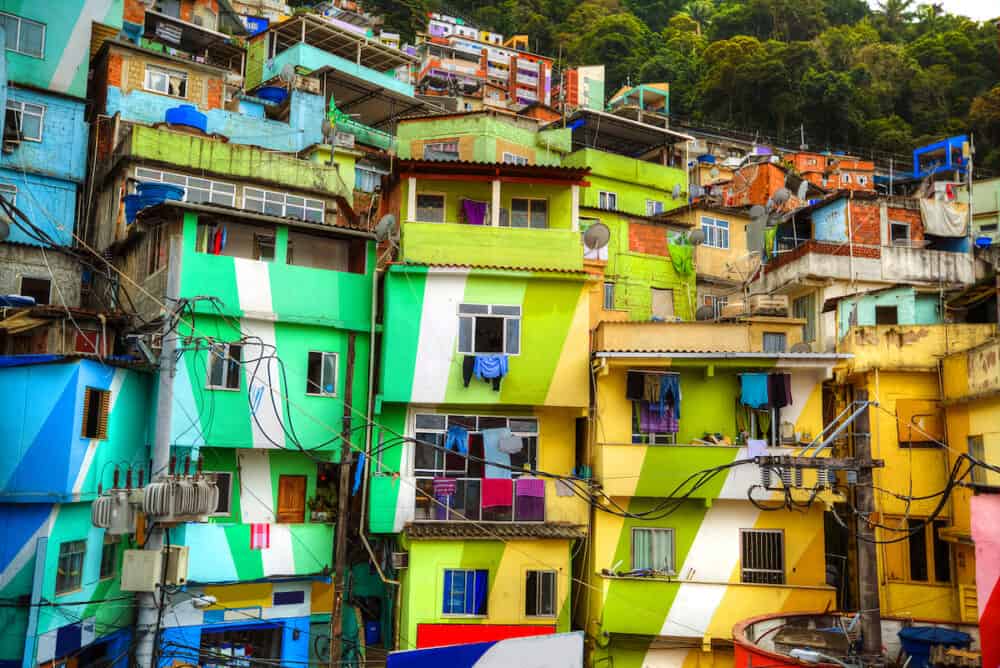
Eat Brazilian Tapas at Meza Bar for Dinner
Meza Bar is a gastropub that is a quintessentially Rio restaurant. It has modern decor and serves creative Brazilian dishes in small, tapas-sized plates so you can try a few different options.
Sail on a Sunset Cruise on Guanabara Bay
At the end of your first day in Rio, head to Rio Harbour. It’s the world’s largest natural bay which is why it deserves its accolade as one of the seven natural wonders of the world.
Figure out what time the sun will set during your trip to Rio and book a sunset cruise so you can see the city and the water at the most beautiful time of day.
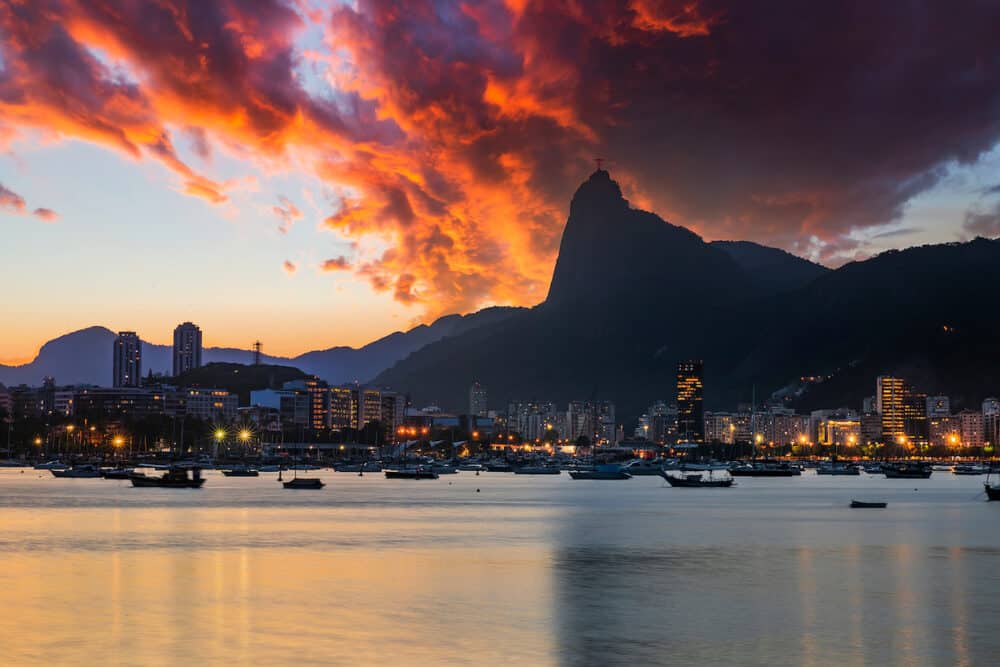
Day 2 in Rio de Janeiro
Take the cable car up sugarloaf mountain.
Literally named after the similarities between this mountain and concentrated, refined loaves of sugar, Sugarloaf mountain is one of the top things to do in Rio de Janeiro. It’s a 396m-tall peak in Guanabara Bay near the coastline.
It would be a very difficult mountain to climb but luckily there is a cable car that offers phenomenal views to a visitor’s centre at the top.
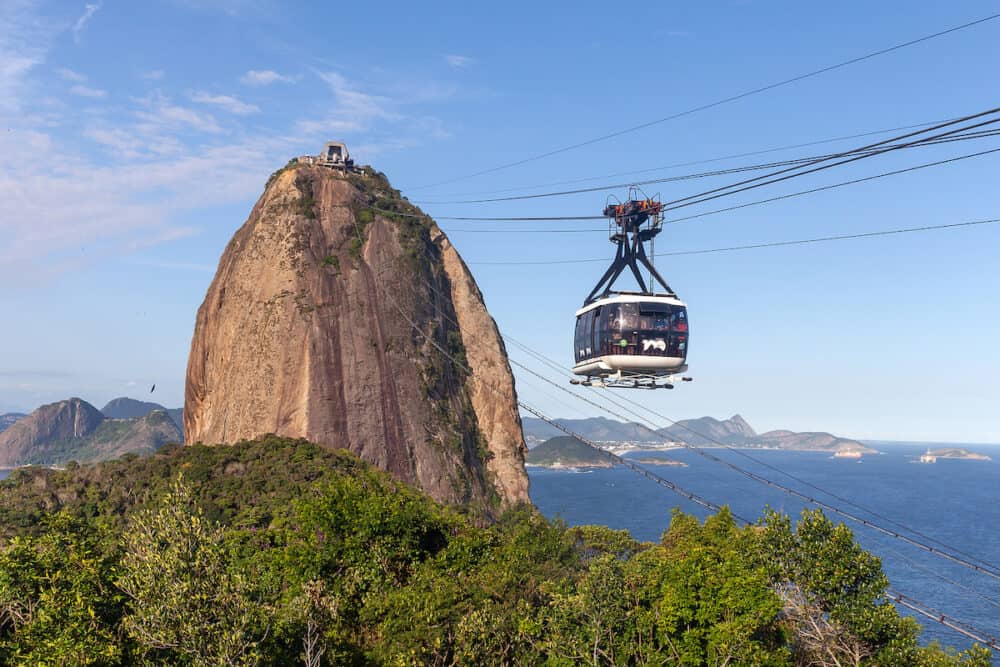
Walk in the Rio de Janeiro Botanical Garden
After taking the cable car back down to sea level, head to the Rio Botanical Gardens. This historic park is a maze of over 6,500 species of local Brazilian and foreign plant life and wildlife.
You can get lost walking along the alleyways of this sprawling garden or hop in a small electric car to save your energy.
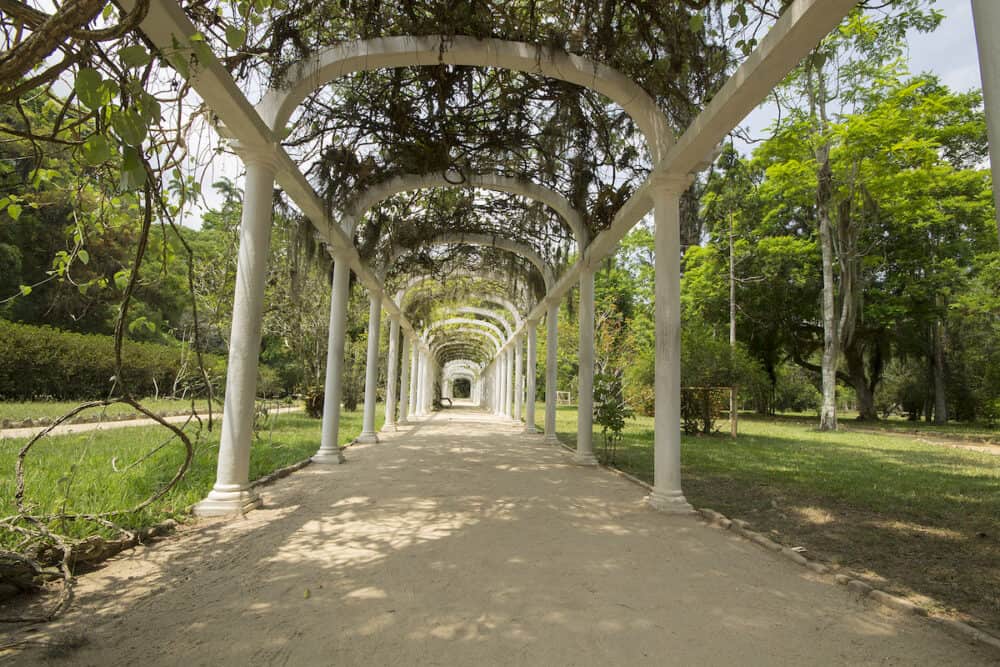
Eat Lunch at La Bicyclette
La Bicyclette is a small bakery and café just around the corner from the Botanical Garden. They serve fresh bread and pastries made on-site and their menu has a French twist.
Relax on Copacabana Beach and Ipanema Beach
It’s time to check out Copacabana beach and Ipanema Beach , two of Rio’s most famous and popular stretches of sand.
Copacabana is the name of the neighbourhood which surrounds the 2.2-mile/3.5 km stretch of soft yellow sand. It’s lively 24/7 and it has a long promenade you can stroll down if you’re not one for sunbathing.
Ipanema Beach is the crescent-shaped beach just south of Copacabana and also has its own neighbourhood. It’s a little more active with football (soccer) and volleyball pitches. Leblon Beach next door is also worth checking out!
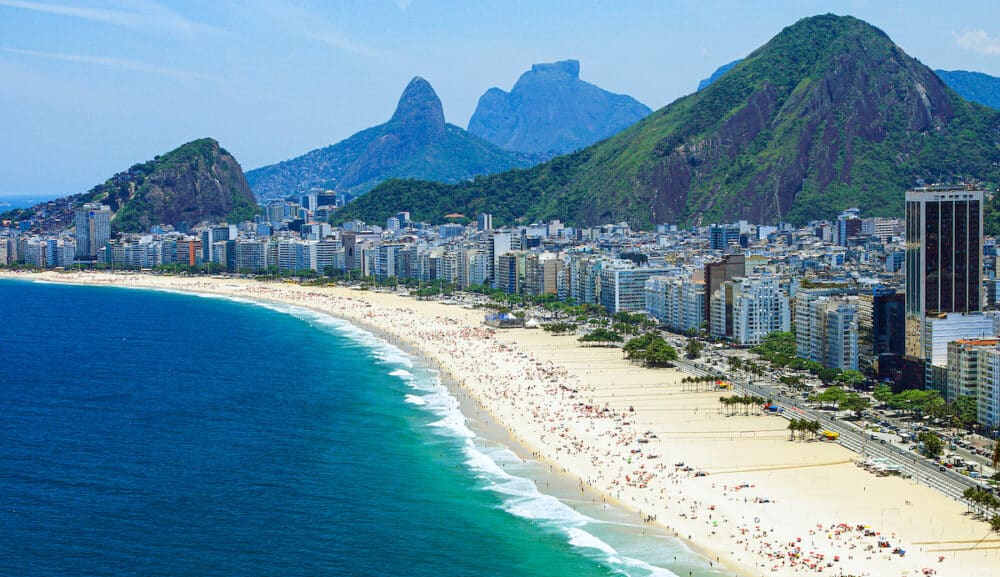
Enjoy Dinner at Aprazível Restaurant
After a busy afternoon of relaxing, dine at the upmarket Aprazível Restaurant . They serve artisanal Brazilian cuisine in a lush forest setting.
Watch a Football Game at Maracana Stadium
It’s a close competition, but there’s nowhere that loves football (or soccer, depending on where you are in the world!) more than the Brazilians.
If you’re in town when there’s a home game scheduled at Maracana Stadium , you would be crazy to miss such a cultural experience.
This stadium is also where the opening and closing ceremonies of the 2016 summer Olympic games were held. If there isn’t a game on during your stay, you can always take a guided tour instead.

Day 3 in Rio de Janeiro
Visit the museum of tomorrow.
There must be dozens, if not hundreds of museums in Rio de Janeiro. Start your last day in Rio by checking out one of the best, the Museum of Tomorrow .
It’s a science museum on the waterfront with innovative exhibitions explaining future challenges and offering potential solutions.
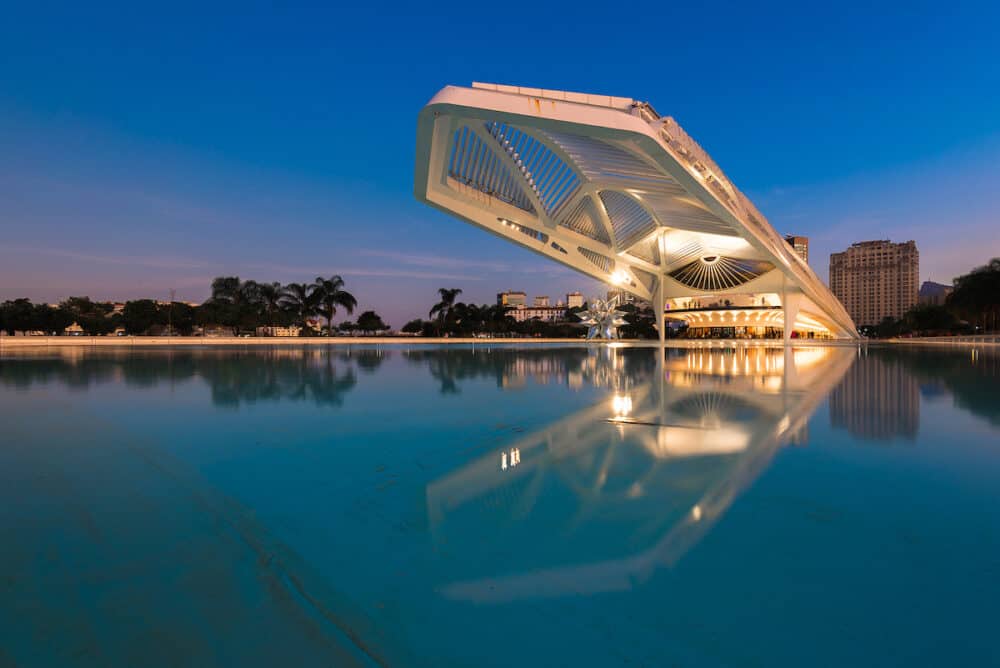
Check out Royal Portuguese Reading Room
Another, totally different exhibition in the same neighbourhood is the Royal Portuguese Reading Room . Whereas the Museum of Tomorrow is futuristic and high-tech, the Reading Room dates back to 1887.
It has a vast collection of important works by Portuguese authors and it’s a beautifully ornate building with dark wooden bookshelves and mosaic floors.

Eat Lunch at Rildy Carioca Food
Rildy Carioca Food is a casual eatery serving loaded hotdogs, sandwiches, homemade desserts and fresh fruit smoothie bowls.
It’s the perfect place for lunch if you’ve overspent but are still seeking healthy, fun food in this part of the harbour.
Stroll Around Olympic Boulevard
Brazil hosted the Summer Olympics less than 10 years ago so there is still a lot to see in Rio de Janeiro that relates to the games.
One of the top Olympic attractions in Rio has to be Olympic Boulevard. This is one of the world’s largest murals and it was designed by Eduardo Kobra.
The paintings are of people from indigenous communities all over the world and it stretches over 560 ft/170 m.
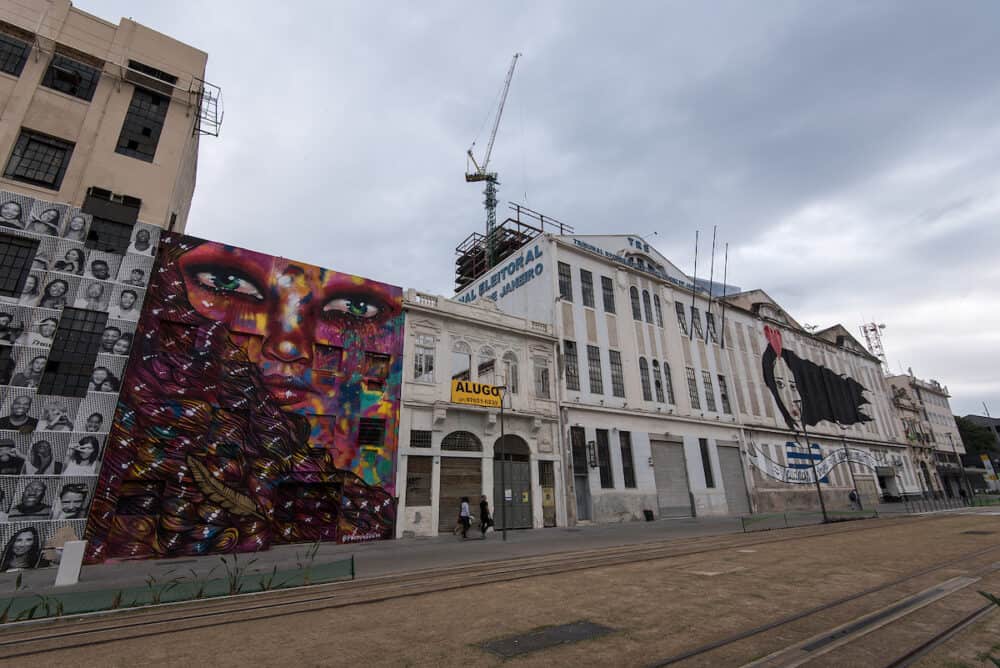
Explore the Santa Teresa Neighbourhood
Just next to the harbour is the Santa Teresa neighbourhood . It’s a winding, colourful hilltop district with trams running through the streets that will make you believe you are in Lisbon or Porto, not Rio de Janeiro.
There are lots of art galleries in this neighbourhood like Museu da Chácara do Céu and Ruins Park as well as many independent shops. Or if you’re not a fan of art, just stroll around for a while.
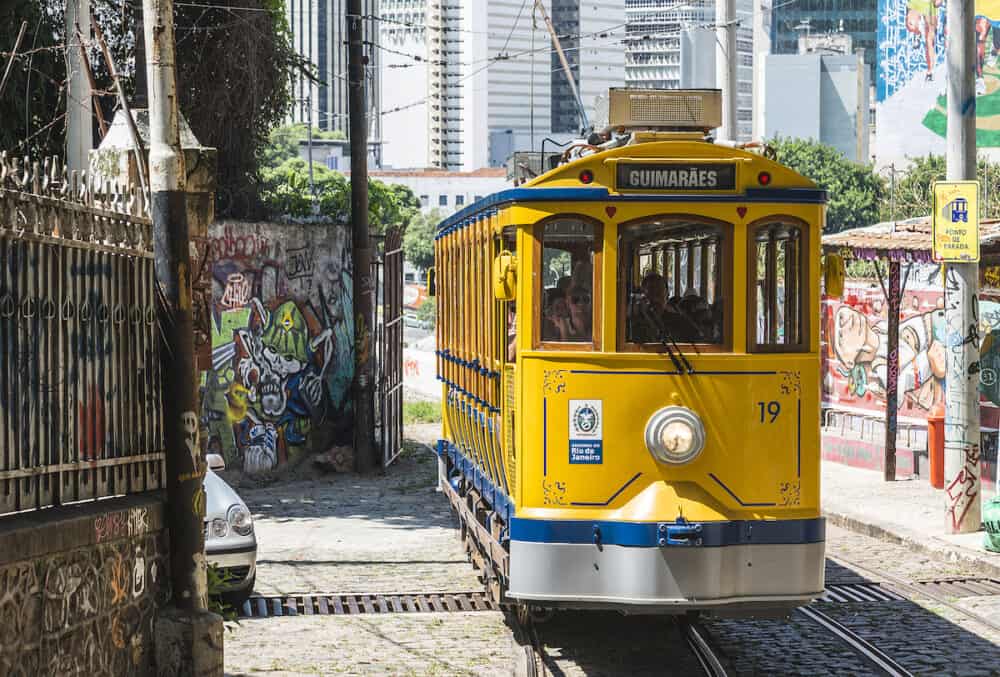
Pose for Photos on the Selaron Steps
One attraction you cannot miss in the Santa Teresa neighbourhood is the Selaron Steps which you’ve no doubt seen on Instagram.
This public stairway was decorated with thousands of small tiles by Jorge Selarón and today it’s a popular photo spot.
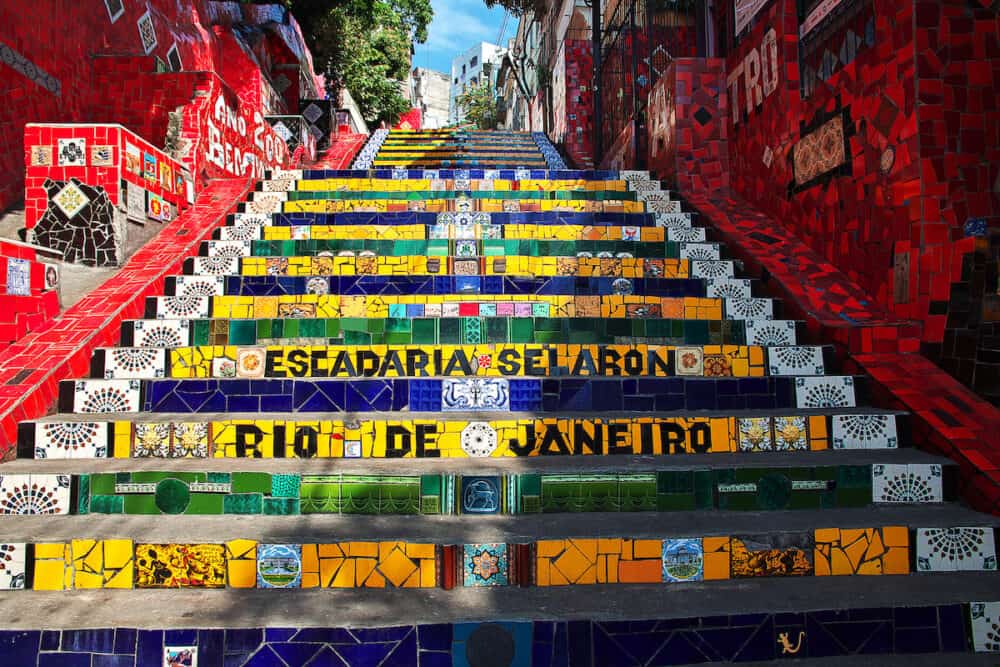
Enjoy Dinner at Assador Rio’s
Located right on the harbour with beautiful views over the water, Assador Rio’s is one of the city’s best steakhouses. It’s an upscale all-you-can-eat meat buffet which might be dangerous when the food is so good.
Dance at the Rio Scenarium Nightclub
Finish off your last night in Rio de Janeiro with an activity that Brazilians love. Dancing! Rio Scenarium is one of Rio’s most popular clubs with vintage decor and live bands as well as DJs.
Try not to be put off by the long lines outside because it’s a huge, multilevel club with more than enough room for everyone.
Tours in Rio de Janeiro
Hang gliding or paragliding.
Sugarloaf Mountain, Christ the Redeemer monument, Rio’s harbour… There’s a lot to see in Rio de Janeiro that you can only appreciate if you’re able to see it from above.
Add a hang gliding or paragliding experience to your Rio de Janeiro travel itinerary. The views will be worth any apprehension about the experience and you’ll be so pleased you pushed yourself out of your comfort zone.
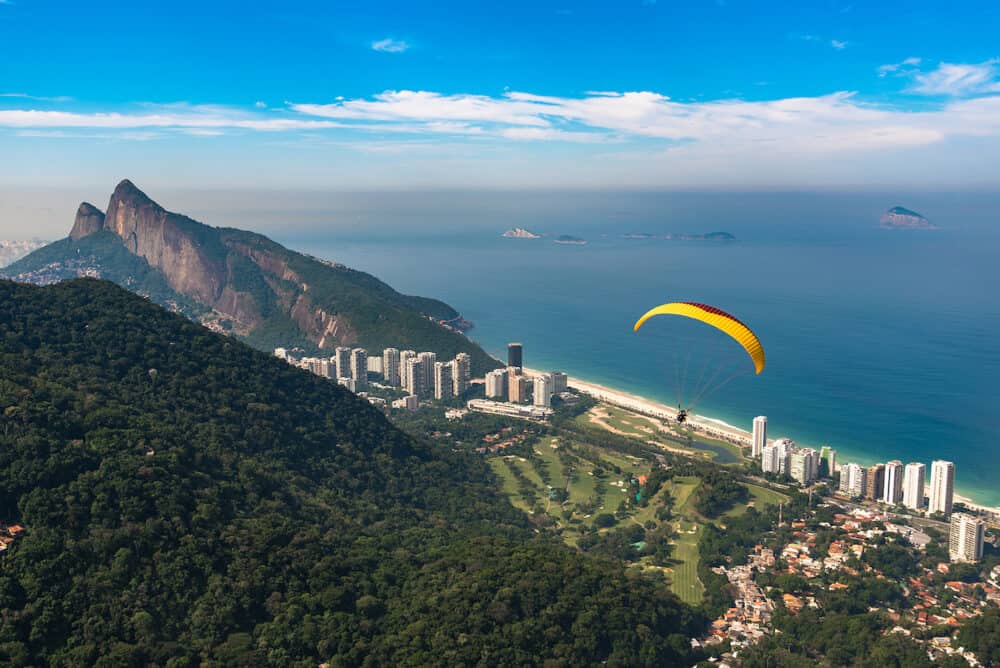
Lapa District Pub Crawl
If you’re on a budget and want to experience Rio’s nightlife, then the Lapa District is where it’s at. On this pub crawl , you’ll be able to make like-minded travel friends and have an amazing, wild night out for a fraction of the price in other Rio neighbourhoods.
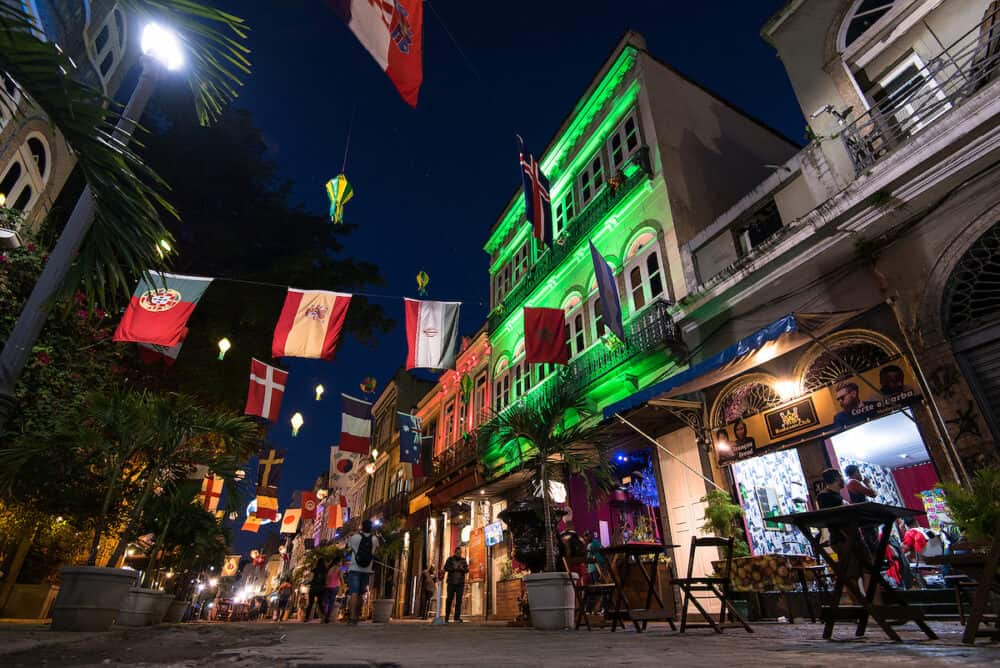
Brazilian Cooking Class
Brazilian cuisine is underrated and it’s also hard to find good Brazilian cuisine outside of the country. Join a Brazilian cooking class during your trip to Rio so you can make it yourself at home! This cooking class will teach you how to make seven different dishes including caipirinha cocktails.

Tijuca National Park
Brazil has 72 national parks and Tijuca National Park is just outside of Rio de Janeiro. If you have four days to spend in Rio or prefer to spend more time in nature rather than hopping from museum to museum, book this half-day trip to Tijuca .
You’ll be able to explore caves, hike through the forest and swim in the waterfalls pools.
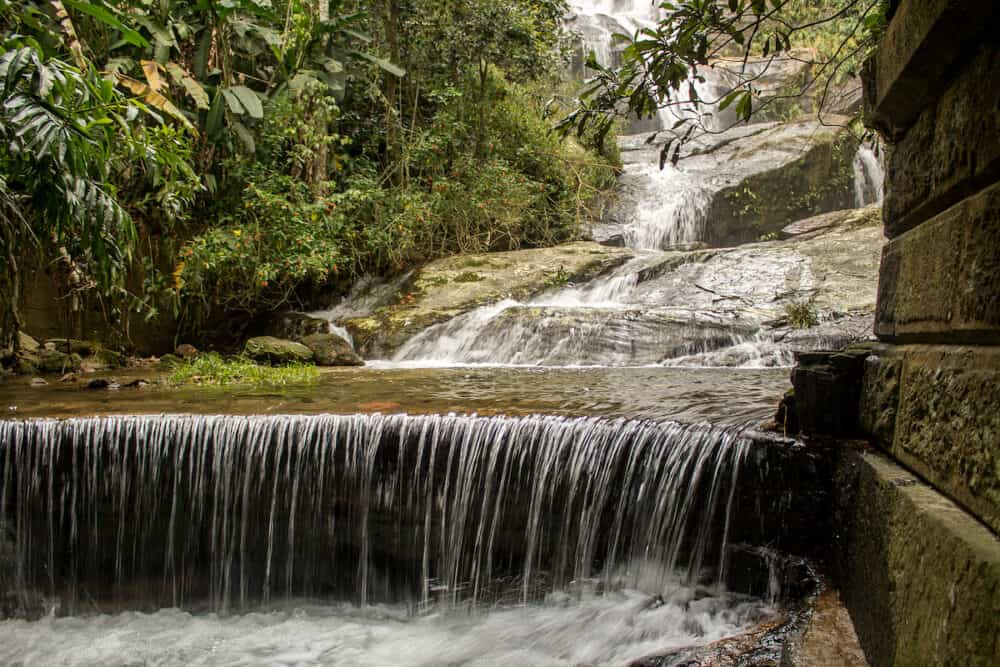
FAQs for 3 Days in Rio de Janeiro
Is 3 days enough in rio .
One of the top questions that travellers ask themselves when planning a trip to Brazil is, “how many days do you need in Rio de Janeiro?” So, is 3 days in Rio enough?
Yes, 3 days in Rio is definitely enough to see the key landmarks, museums, neighbourhoods, and attractions.
Sure, you could easily find yourself more and more things to do in Rio to last a lifetime. 3 days Rio de Janeiro is the perfect amount for a first-time trip.
What to do in Rio de Janeiro in 3 Days?
You can pack a lot into 3 days in Rio de Janeiro. Read through this guide to find out exactly how to spend three full days in Brazil’s seaside metropolis.
Is it dangerous to visit Rio de Janeiro?
Rio is definitely not the safest place that tourists can visit, but that doesn’t mean that there aren’t things you can do to stay safe.
Don’t carry a lot of expensive items, valuables, or cash to limit the chances of mugging or pickpocketing.
You should also be careful about which parts of Rio de Janeiro you visit and when. Only visit favelas on a guided tour and don’t hang around the Santa Teresa neighbourhood by yourself at night.

3-Day Itinerary for Rio de Janeiro Wrap Up
If you follow this 3-day itinerary Rio de Janeiro, you’ll hit all of Rio’s top attractions, eat some fantastic local food, and have a super fun trip.
You will have gained an insight into Rio’s culture and you’ll no doubt be planning a return trip to spend three more days here!
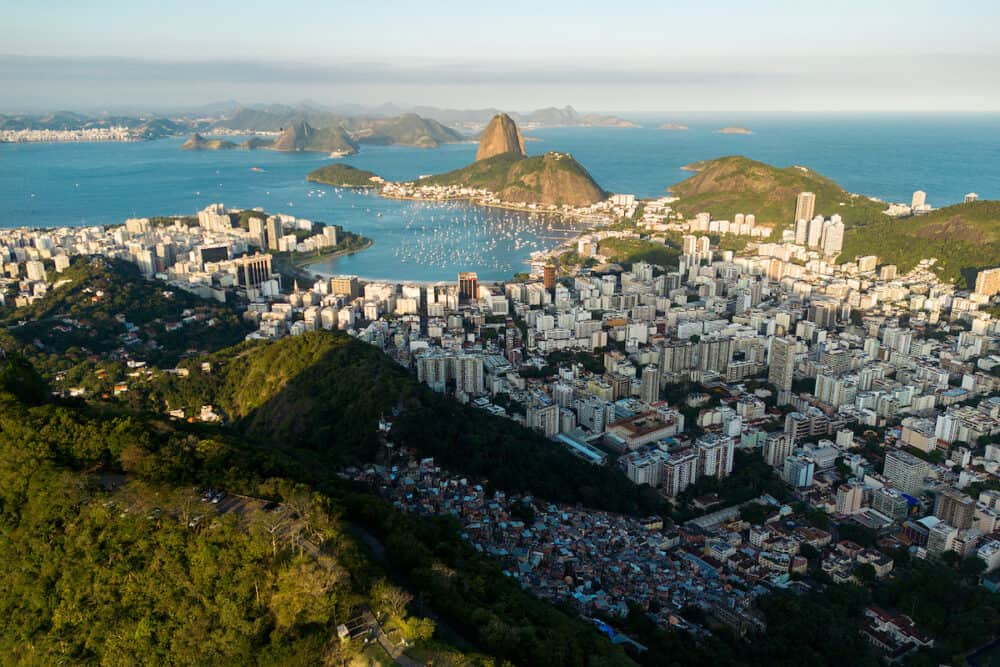
Recommended tours in Rio de Janeiro
- Full Day in Rio: Christ the Redeemer, Sugarloaf, Maracana and Selaron with Lunch
- Hang gliding Hang gliding Experience Rotorfly
- The Best of Rio in a Full Day Tour – Corcovado, Sugar Loaf, Selaron and more
- Favela Tours
- 3 Hour Rocinha Favela Walking Tour
- Rio de Janeiro Ferris Wheel Ticket – Yup Star
- Rio Sunset Tour Including Sugarloaf, Christ the Redeemer, Cathedral and Selaron
- The Best Helicopter Flight – Sugar Loaf and Christ the Redeemer
- Hiking Tour to Pedra do Telégrafo (Telegraph Rock aka telegraph stone)
- 3 Hour Sailing Experience in Rio
- Jeep tour 18 beaches, Telegraph Stone hiking & amazing sunset + photographer
- Historic Center of Rio de Janeiro – Walking Tour.
If you’d like to save it for later, please save it to Pinterest.
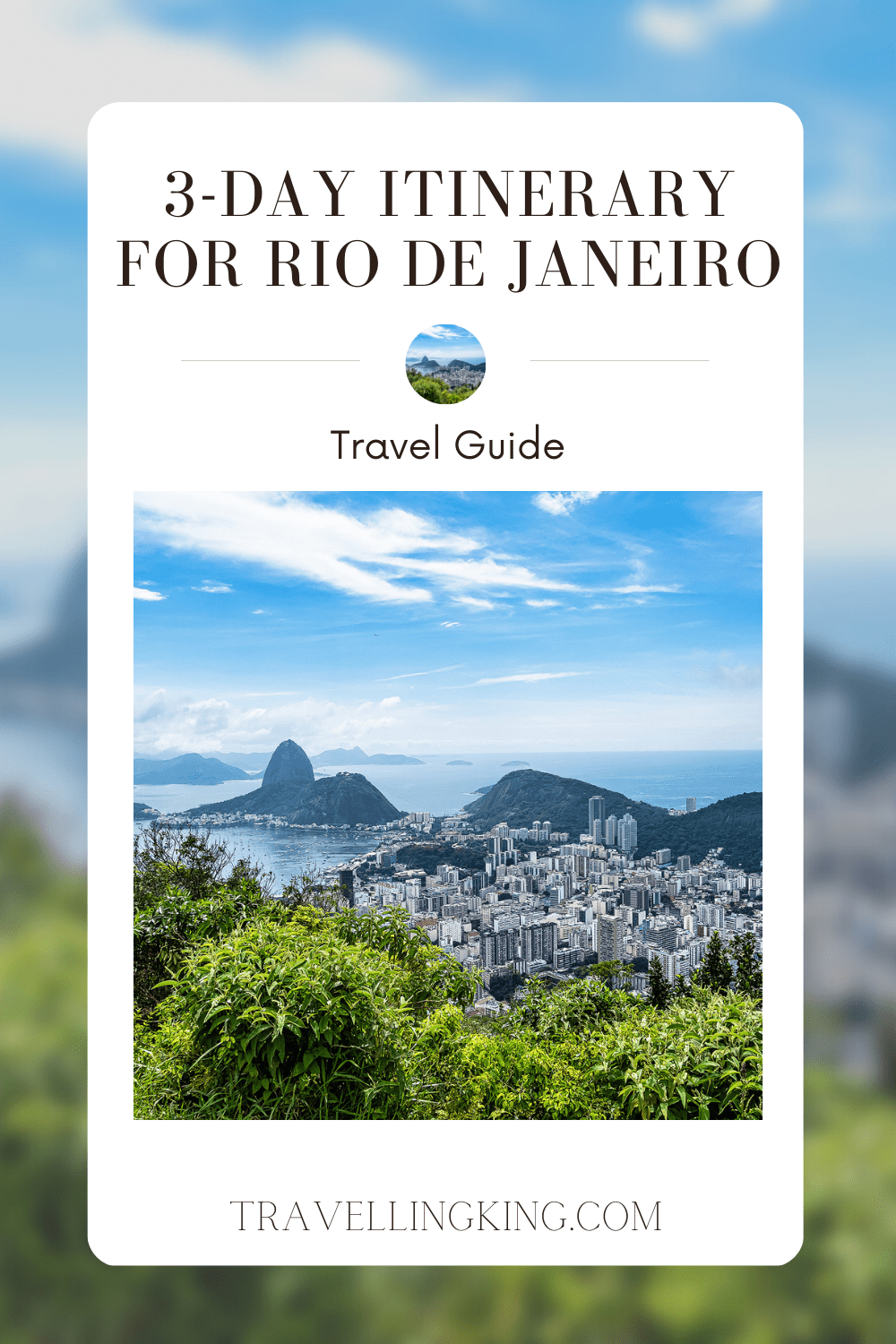
Sam, a seasoned traveler across four continents and 49 countries, is a leading authority in travel planning. Her website, Travelling King, offers tailored itineraries and expert guides for seamless trips. Sam's expertise in luxury travel, fast travel, and destination guides keeps her at the forefront of the travel community.
View all posts
Similar Posts
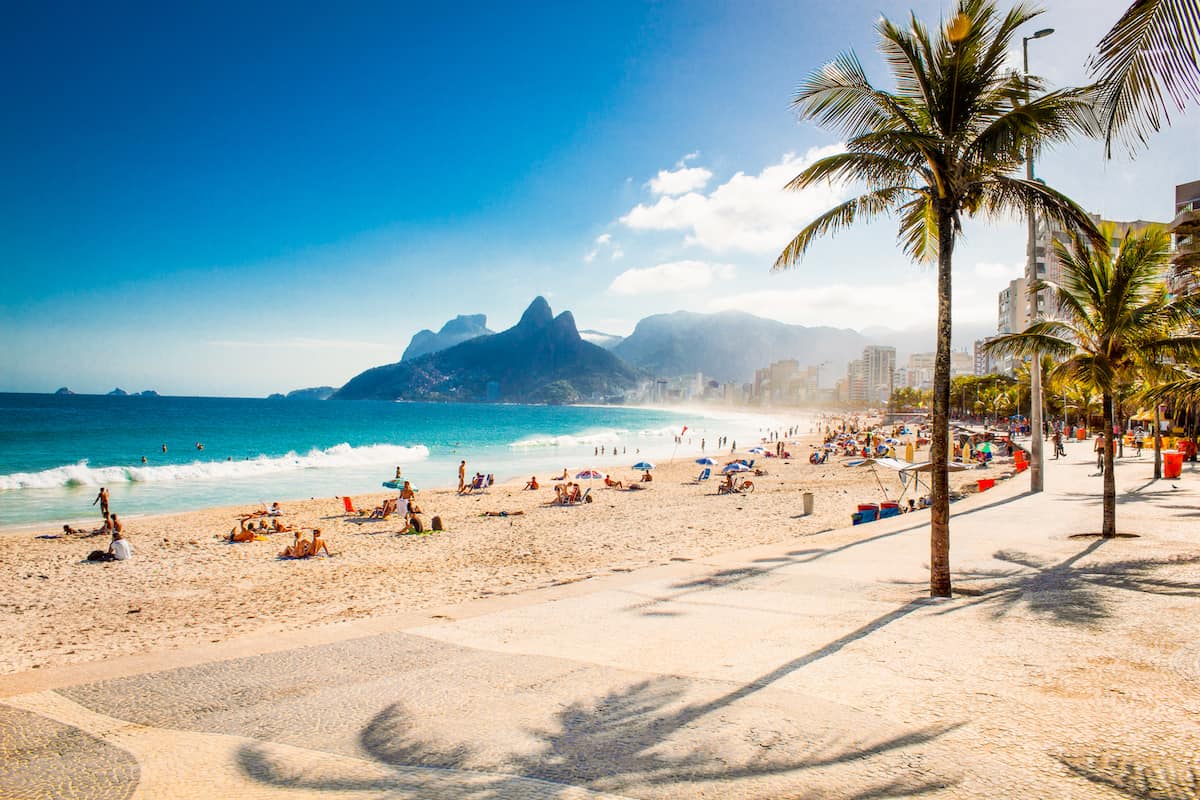
Best beaches in Rio de Janeiro
Forget Costa Verde – when it comes to idyllic beach destinations, Brazil’s Rio de Janeiro is in a league…
![trip plan rio Where to stay in Rio de Janeiro [Best Places to Stay for 2024]](https://www.travellingking.com/wp-content/uploads/2023/05/Rio-de-Janeiro-Corcovado-mountain.jpg)
Where to stay in Rio de Janeiro [Best Places to Stay for 2024]
Being the second largest city in Brazil, you will find Rio de Janeiro sitting on the Atlantic Coast, capturing…

3 Days in Rio de Janeiro, Brazil an Itinerary for First-Timers.
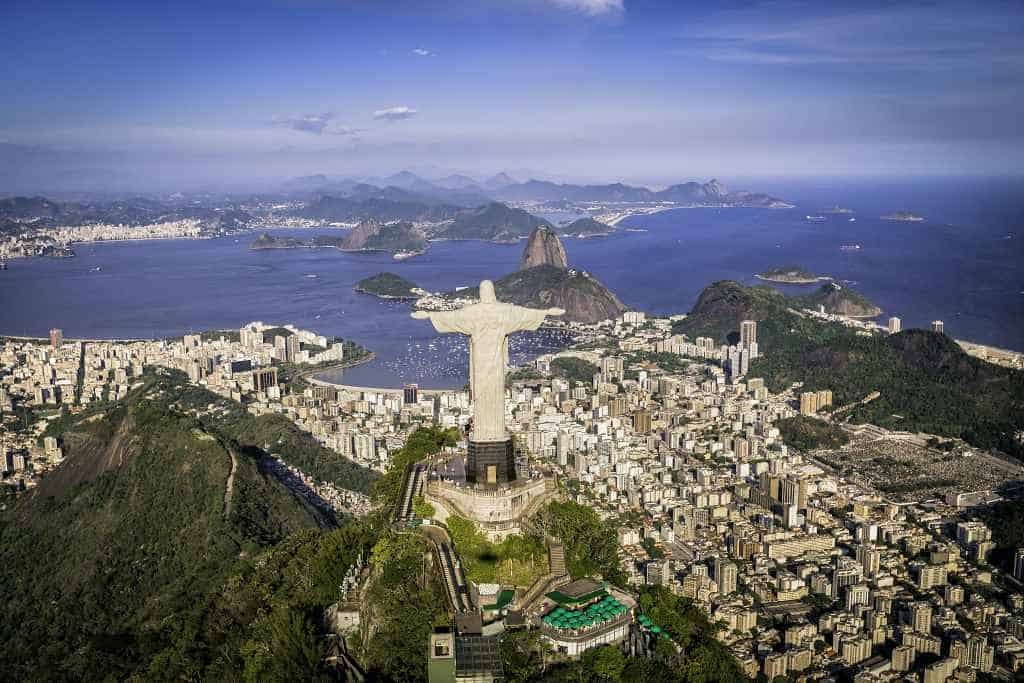
Planning to spend 3 days in Rio de Janeiro? In this guide, you will find the best things this amazing city has to offer in only 3 days including where to eat and where to stay.
Rio de Janeiro, or simply Rio, is the second-most populous city in Brazil and the sixth-largest city in the Americas. It is famous for its towering sculpture of Christ the Redeemer, the Sugarloaf Mountain, its beaches, and its favelas, as well as its street art and dance scene. Rio was founded by Portuguese explorers in the 16th century, though native tribes lived in the region long before that.
The city grew quickly and became one of the largest and most prosperous cities thanks to its port and trade links with Portugal and the rest of Europe. When the Portuguese royal family fled Lisbon ahead of Napoleon’s invasion in 1808, the city became the only European capital outside of Europe.
Brazil declared independence from Portugal in 1822 and Rio remained the capital. Until the early 20th century much of the city was concentrated in the Centro around Guanabara Bay, but by 1910 neighborhoods had built up in the south in Botafogo and Copacabana (Zona Sul), and to the north (Zona Norte) which now encompasses most of the great metropolitan area. Zona Oeste, or the West Zone, lies west of Ipanema and Copacabana and the main neighborhoods here are Cidade de Deus and Barra de Tijuca.
Rio is no longer the capital of Brazil, that honor having been given to newly built Brasilia in 1960, yet it is one of the most visited cities in Brazil. The population of Rio is estimated at around 6 million in the city itself and over 13 million in the greater metropolitan area.
Disclaimer: This post contains affiliate links. This means that should you click on certain links, and then subsequently purchase a product, I will receive a small commission.
Table of Contents
How to Get To and From the Airport
Rio de Janeiro’s airport, also known as António Carlos Jobim/Galeão International Airport, is located 12 miles north of the city. The airport is linked with the subway system via the TransCarioca bus line; travelers wanting to connect with the city’s subway must get off the bus at Vincente de Carvalho station. There are also airport express buses that connect travelers with the city center. All bus and train tickets can be purchased inside the arrivals terminal.
A taxi or private driver is the most convenient way to get from the airport to your accommodation; taxis can be booked at the arrivals hall. Private drivers are the most expensive way to get into the city but will meet you inside the arrivals hall and escort you to the car. These must be booked in advance.
Click here to book your shuttle from the airport to your hotel.
Things to do in Rio de Janeiro in 3 days
3 days in rio – day one, christ the redeemer.

High atop the Corcovado Mountain, overlooking the city of Rio, is the Cristo Redentor statue. Built between 1922 and 1931, the sculpture rises 38 meters above the mountain. Christ’s arms stretch 28 meters wide. From the top, you have panoramic views of the city, the bay, and Sugarloaf Mountain. The most traditional way to reach the top is by cogwheel train, which winds through the forest to the base of the statue. This is a popular way to get there, so be sure to purchase tickets in advance.
Click here for more information and to buy your priority tickets for Christ the Redeemer.
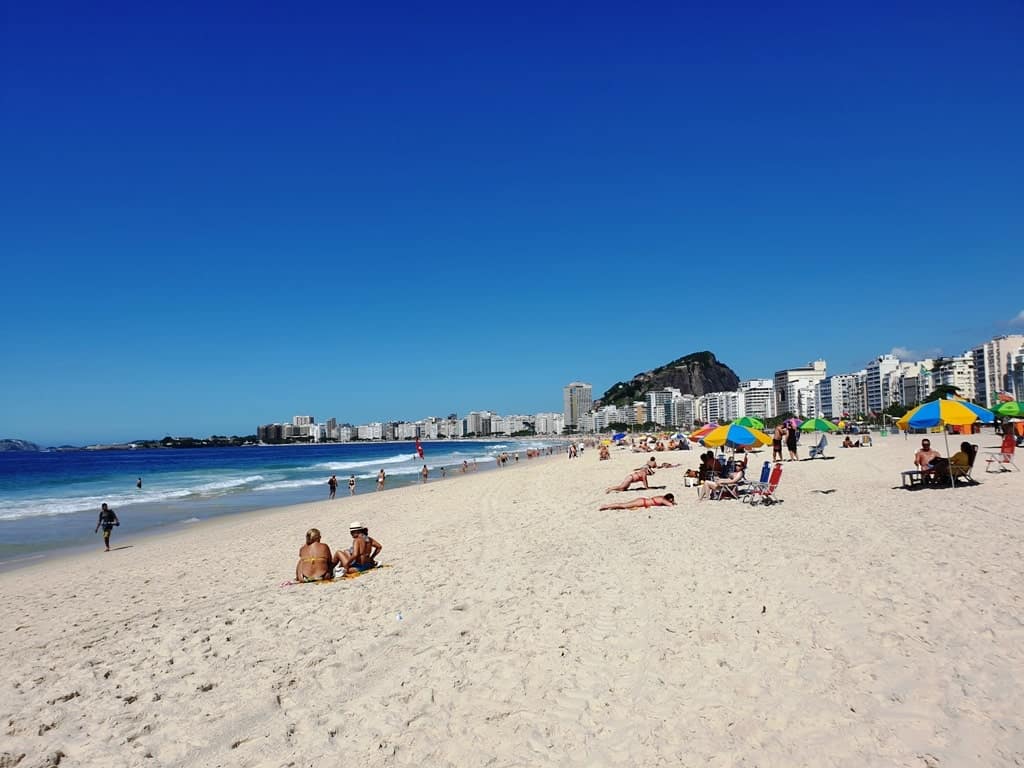
Copacabana is synonymous with Rio. Its wide white sand beach lined with the distinctive Portuguese tiled promenade and hotels draws millions of people each year. The neighborhood begins at Princess Isabella Avenue and continues to Posto Seis; Fort Copacabana is beyond this and Ipanema Beach is beyond that.
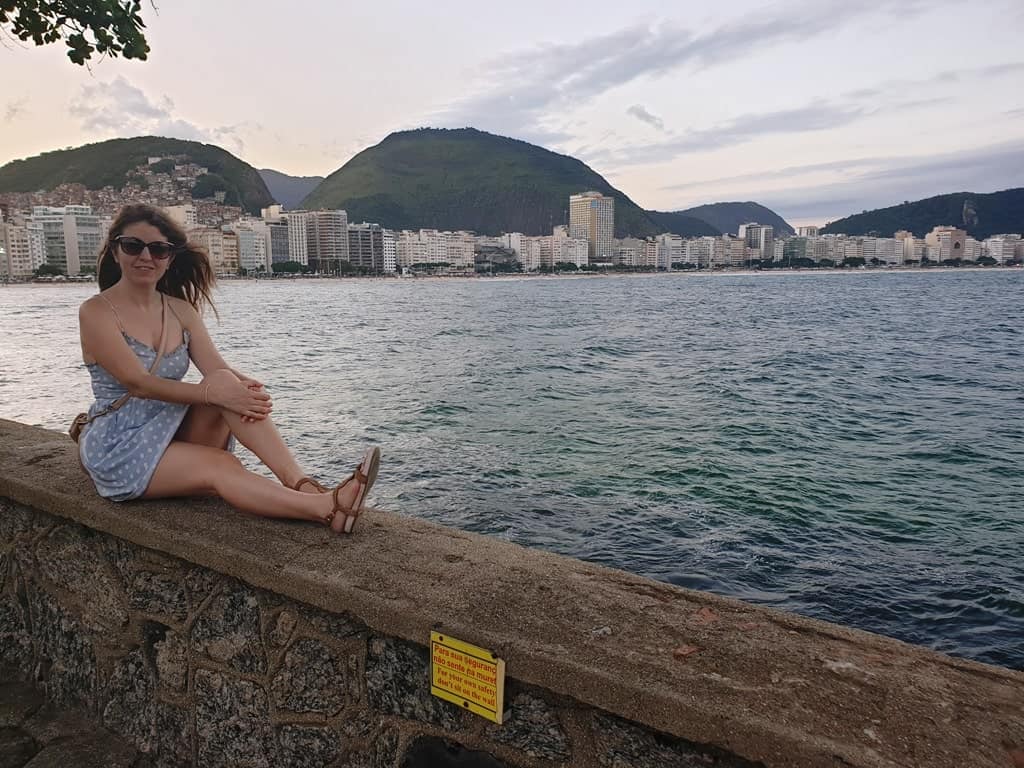
Depending on the time of year you visit, you can experience FIFA Beach Soccer World Cup matches, free concerts, or New Years’ Eve fireworks. Year-round, head for this iconic stretch of coastline for people watching at the beach, souvenir shopping, and caipirinhas. Fort Copacabana is also worth a visit.
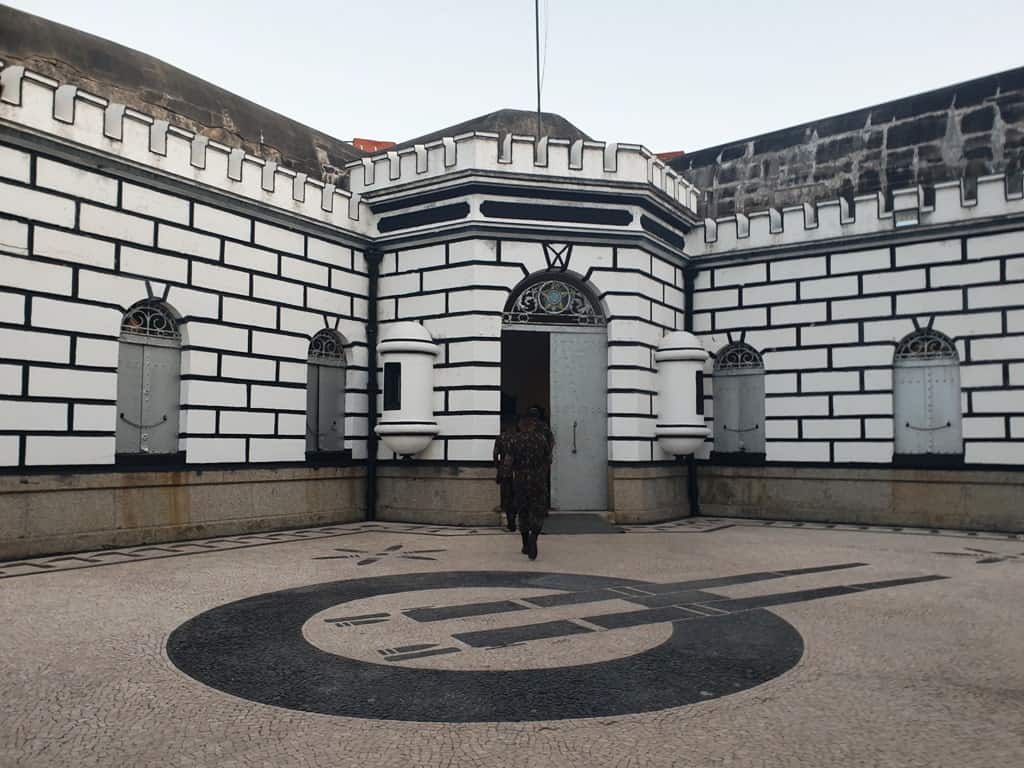
Built-in 1914 to protect the entrance to the harbor, it is still an active military base. Visitors can tour the fort and explore the Army Historical Museum.
Ipanema Beach
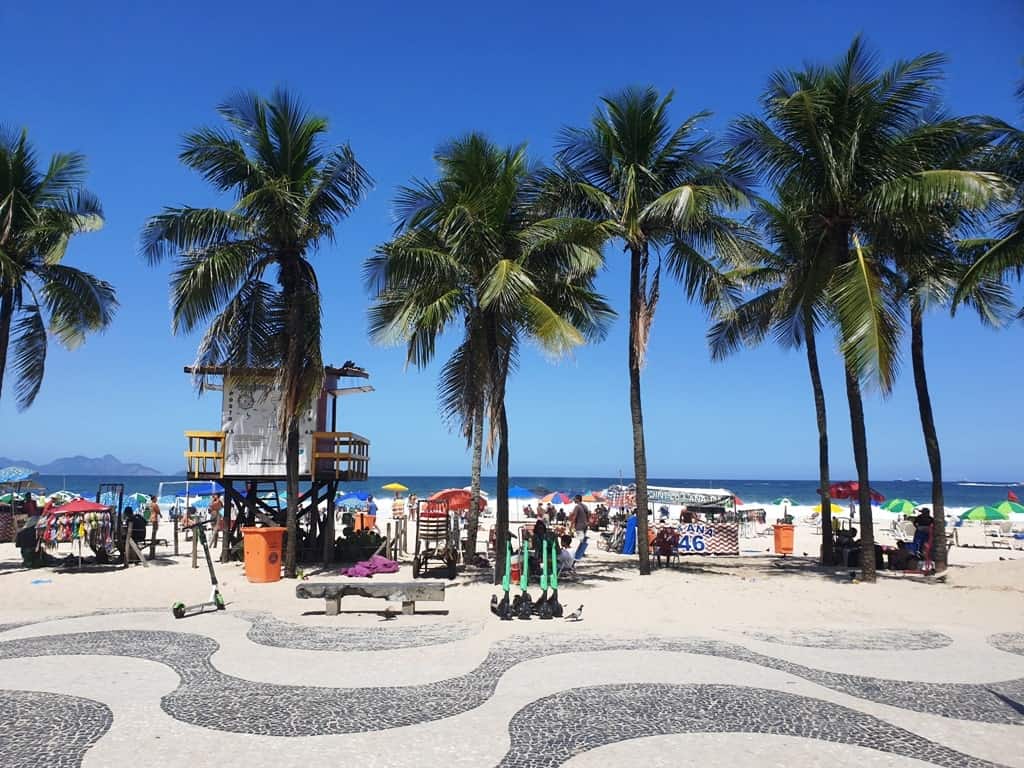
Further down the coast from Copacabana is Ipanema Beach. Famous because of the song The Girl from Ipanema, it is now one of Rio’s most expensive neighborhoods.

The beach and wide streets of Ipanema attract surfers and beach lovers as well as those in search of good food and local drinks. Stop at Carretao Churrascaria for lunch or dinner; the menu features Brazilian steak as well as an open buffet. Ipanema also has a large counter-culture, centered around Posto 9.
Leblon Beach
Adjacent to Ipanema is Leblon, Rio’s ritziest and trendiest neighborhood. Akin to London’s Chelsea neighborhood, Leblon is where you can find boutique shopping, French bistros, and upscale eateries.
3 days in Rio – Day Two
Sao conrado beach.
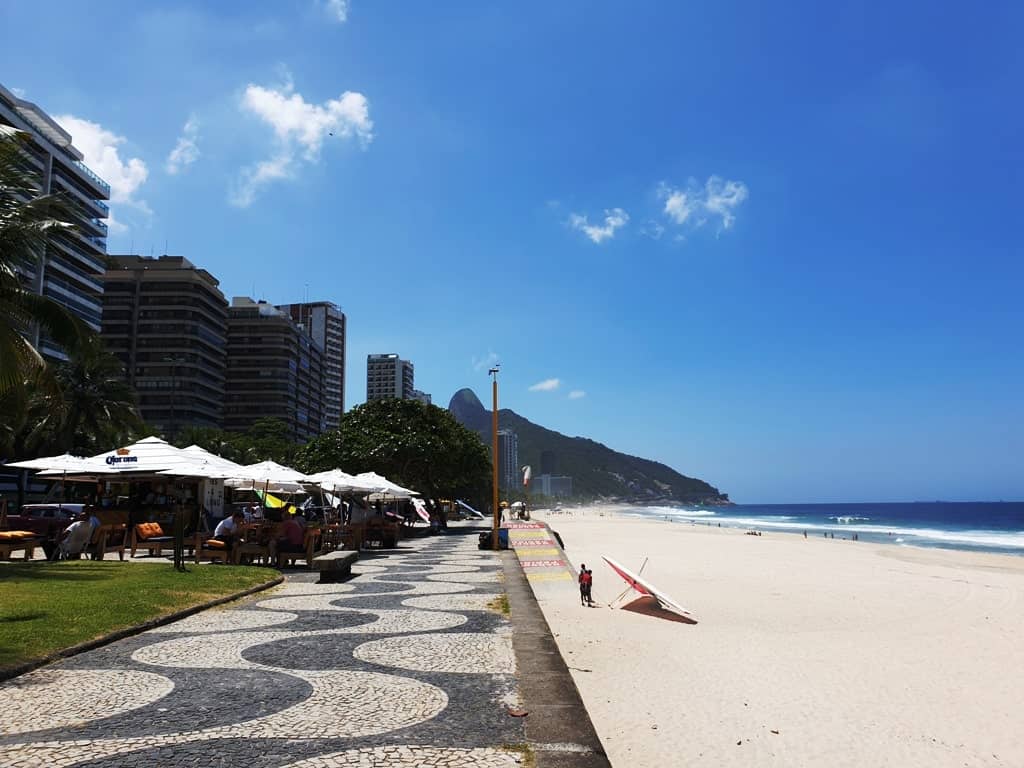
Begin your second day in Rio at Sao Conrado Beach, west of Leblon. Another expensive neighborhood (home to celebrities and Rio’s mayor), it is home to the Fashion Mall, with over 150 upscale shops.
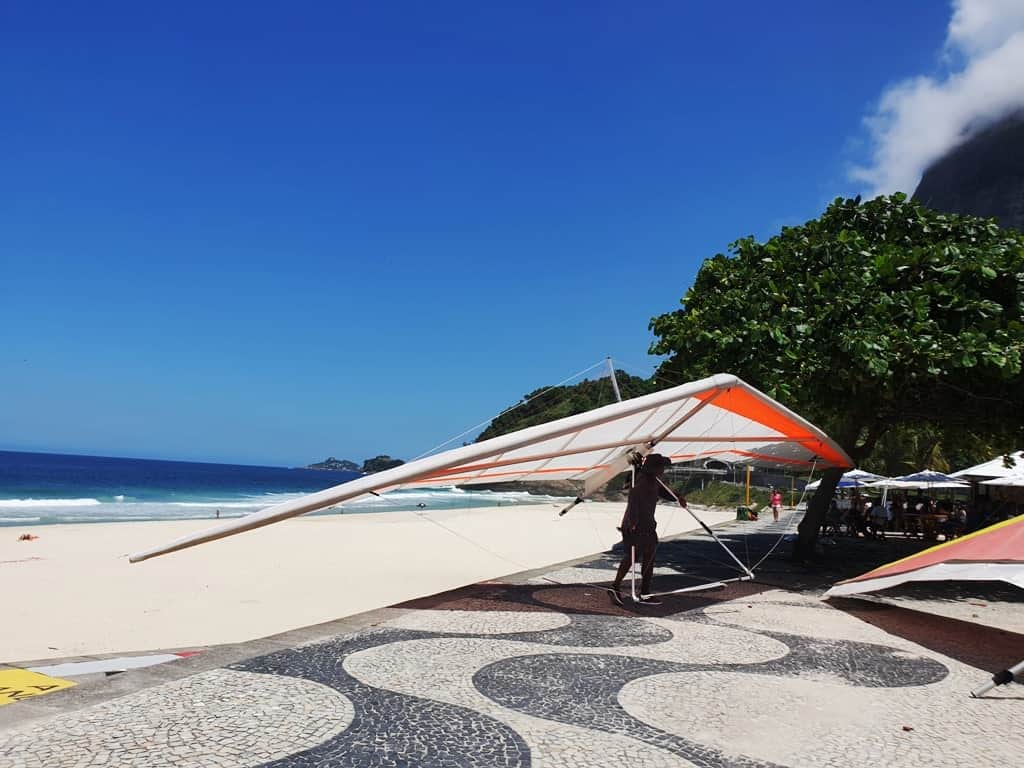
Sao Conrado is also extremely popular for hang gliding, paragliding, and surfing! Located at the base of Gavea Rock, Sao Conrado is also near the Rocinha favela.
Interested in a Hang Gliding Tandem Flight? I recommend this one, check here for more information.
Sugarloaf Mountain
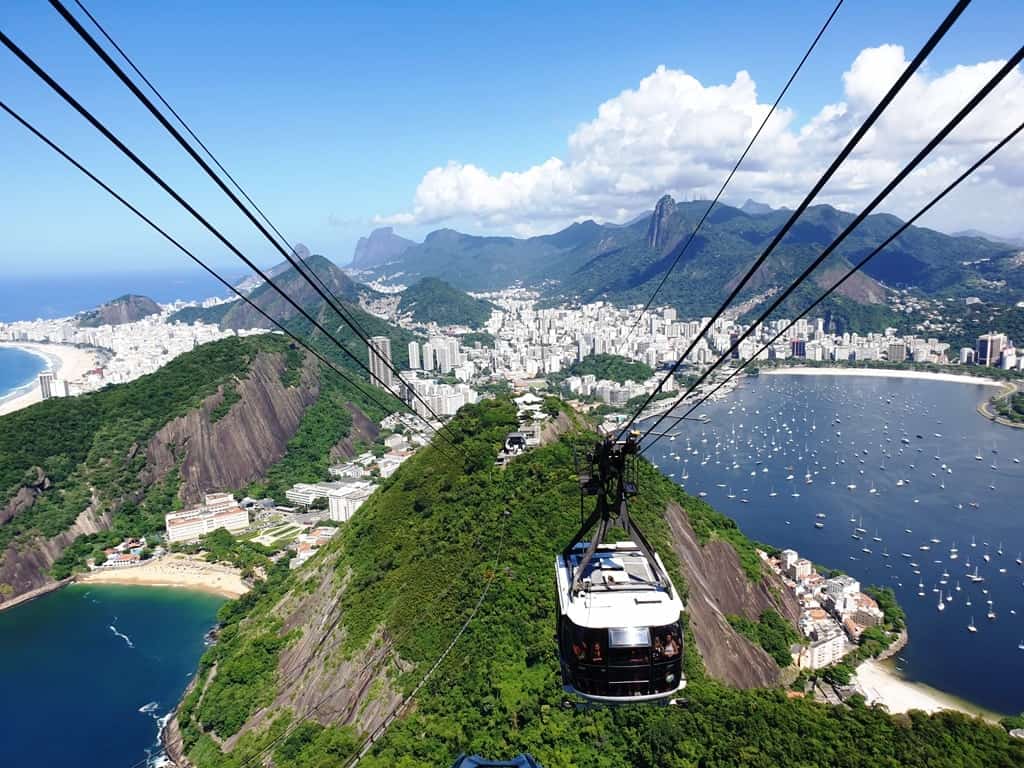
Sugarloaf Mountain rises nearly 1300 feet above the Rio harbor on a peninsula that juts out into the ocean. It is known for its hundred-year-old cable car that runs between the peak of Sugarloaf and the nearby Morro da Urca.
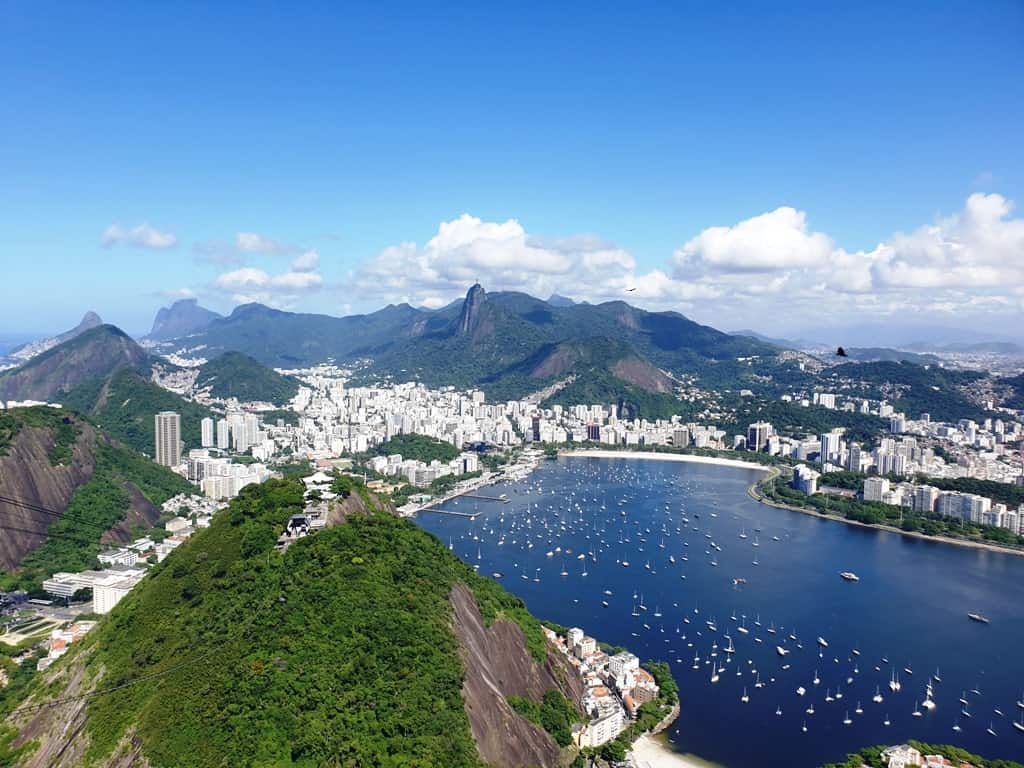
Passengers get on at the ground station at Morro da Babilonia and change at Morro da Urca.
Rio de Janeiro Botanical Garden

The Rio de Janeiro Botanical Garden is located in the Zona Sul at the base of Corcovado Mountain. It was commissioned in 1808 by the king of Portugal and was originally intended to grow spices. Today it contains more than 6,000 species of tropical and subtropical plants. The garden is open every day except Christmas and New Year.
Visit a Favela
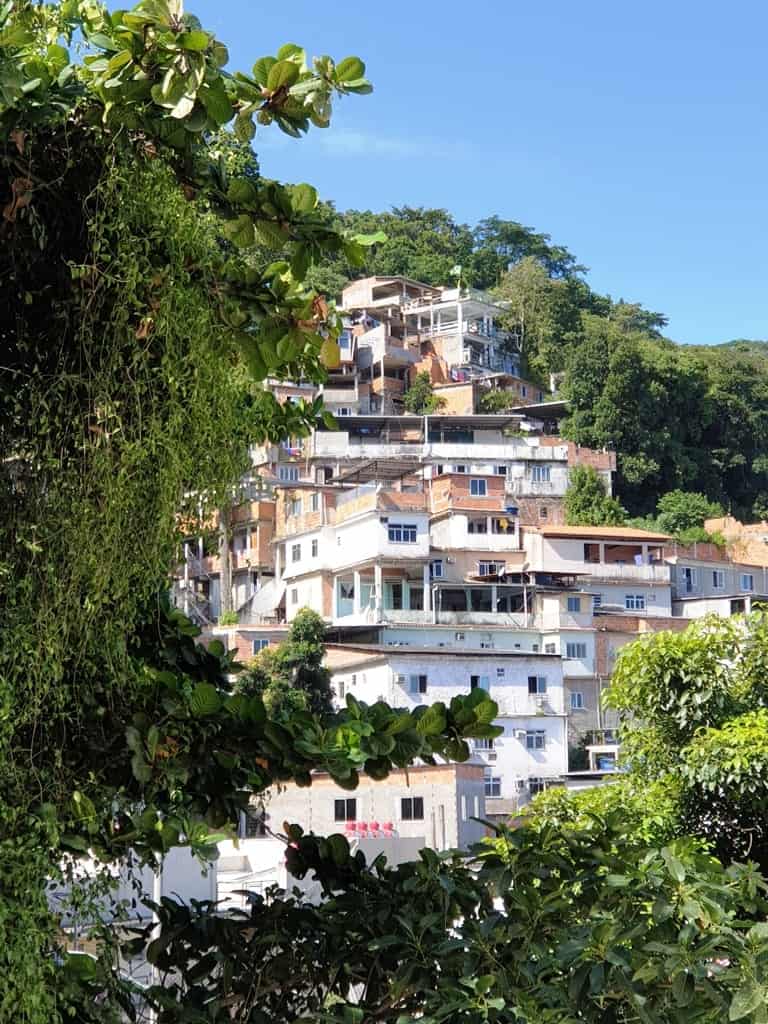
The best way to experience a favela, one of Rio’s infamous slum neighborhoods, is on tour with a local who lives in that favela. This way, the money you spend on a tour will go to the community you visit. Our guide lived in the Babilonia Favela, but another good choice is the Rocinha Favela .
Visit the Maracana Stadium
Maracana Stadium played host to the 1950 World Cup final between Brazil and Uruguay, the attendance at which remains the largest in the world at just under 200,000 attendees. The stadium today is where the Brazil national team plays select matches.

A behind the scenes tour of the stadium is the best way to experience the history and culture of Brazilian soccer. If you happen to be in town during a match, you can experience the mania for yourself.
Rio Scenarium
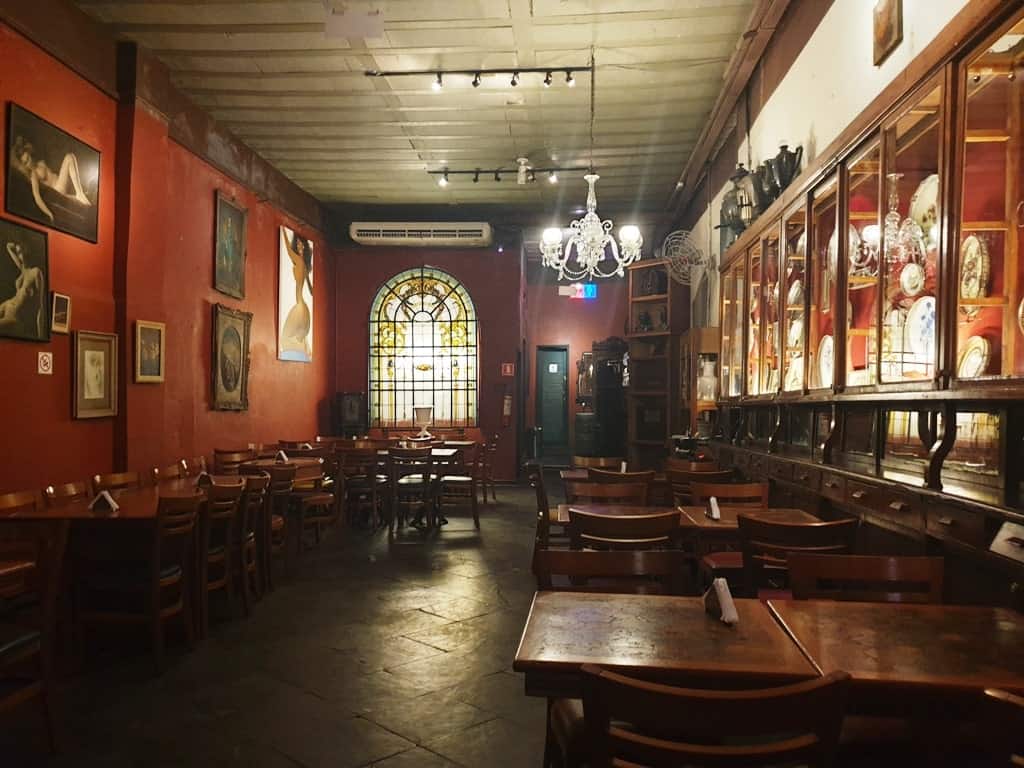
Dance the night away Rio-style at the Rio Scenarium. Once the house of a local family, it’s now a three-story dance hall and antique museum (they rent out personal furniture to television and film sets). The interior rooms are divided into dance rooms, lounges, and cocktail bars, all filled with personal objects from the family.
3 Days in Rio – Day Three
Escadaria selarón .
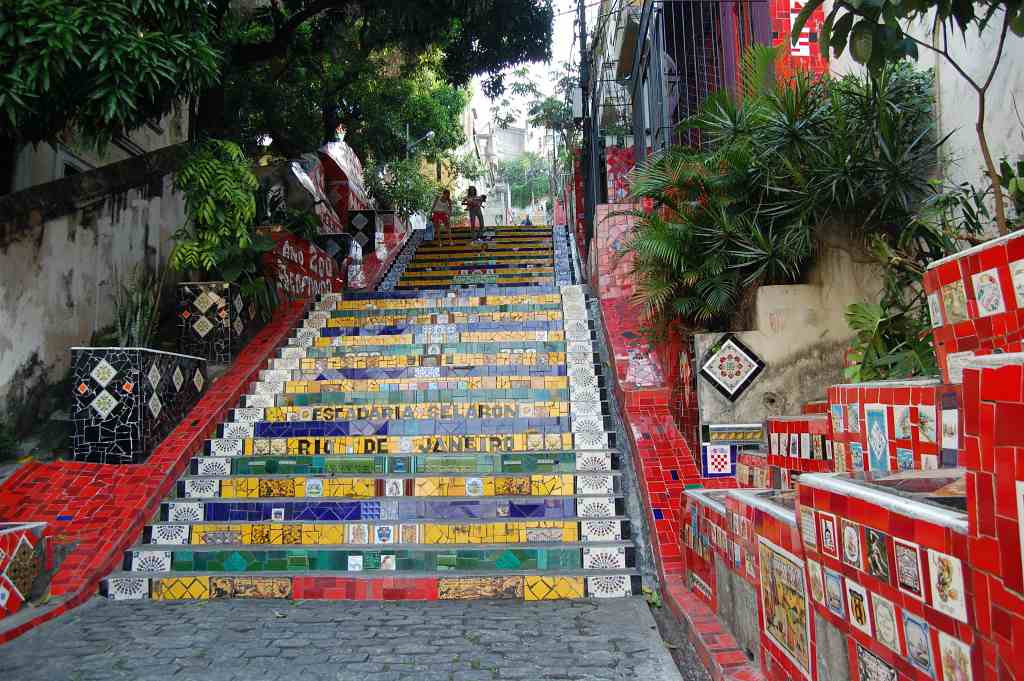
The Escadaria Selarón, also known as the Escalera, is a vibrant work of art by Chilean street artist Jorge Selarón in the Lapa neighborhood. It began as a project to beautify the staircase which connects the Lapa and Santa Teresa neighborhoods. Over the years, people have sent tiles to him for them to be added to the staircase.
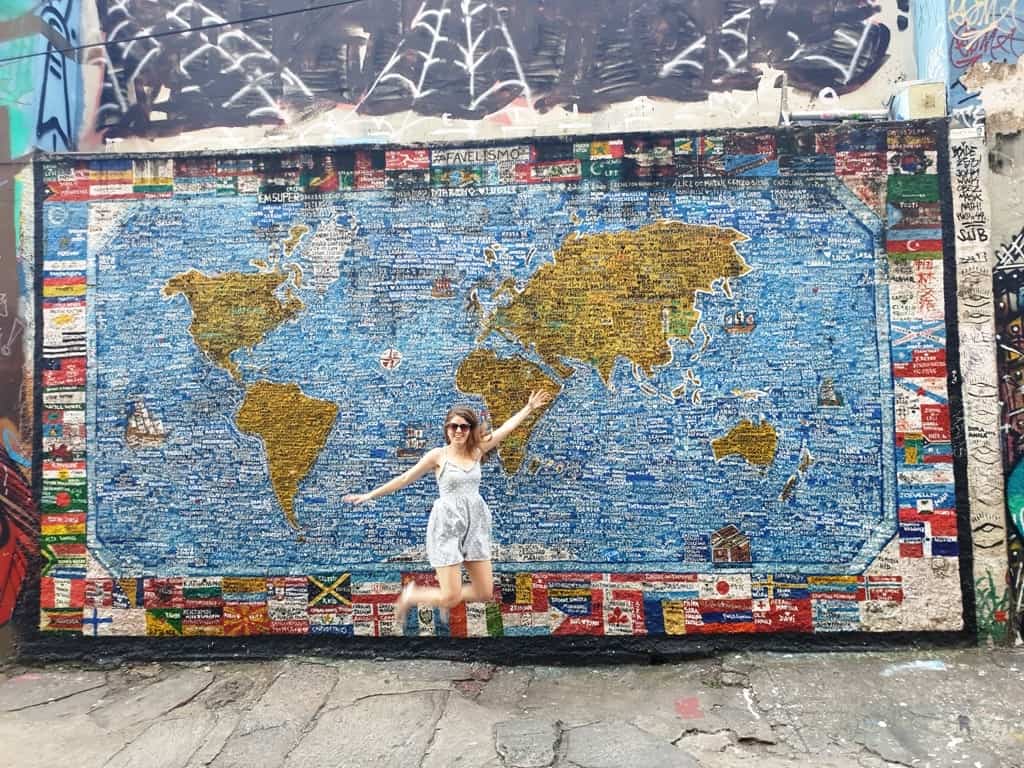
Today there are tiles from over 60 countries on the staircase, and according to Selaron, it is an evolving project that changes every so often as more tiles arrive from around the world.
Carioca Aqueduct
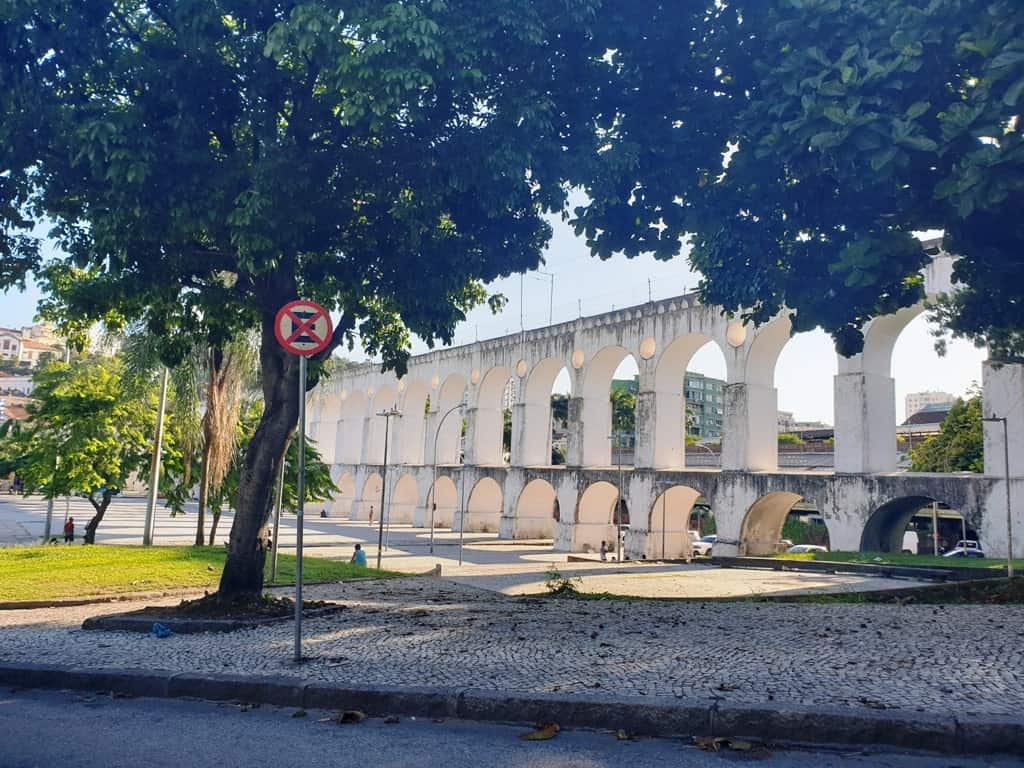
Built-in the early 1700s, the Carioca Aqueduct, or Arcos de Lapa, was designed to bring in drinking water from freshwater sources like the Carioca River. It was shut down in the late 1800s and in 1896 was repurposed to carry the tram from Santa Teresa.
Catedral Metropolitana de São Sebastião do Rio de Janeiro

The Catedral Metropolitana de São Sebastião do Rio de Janeiro is the seat of the Roman Catholic Archbishop in Rio and replaced the Old Cathedral upon its completion in 1979.
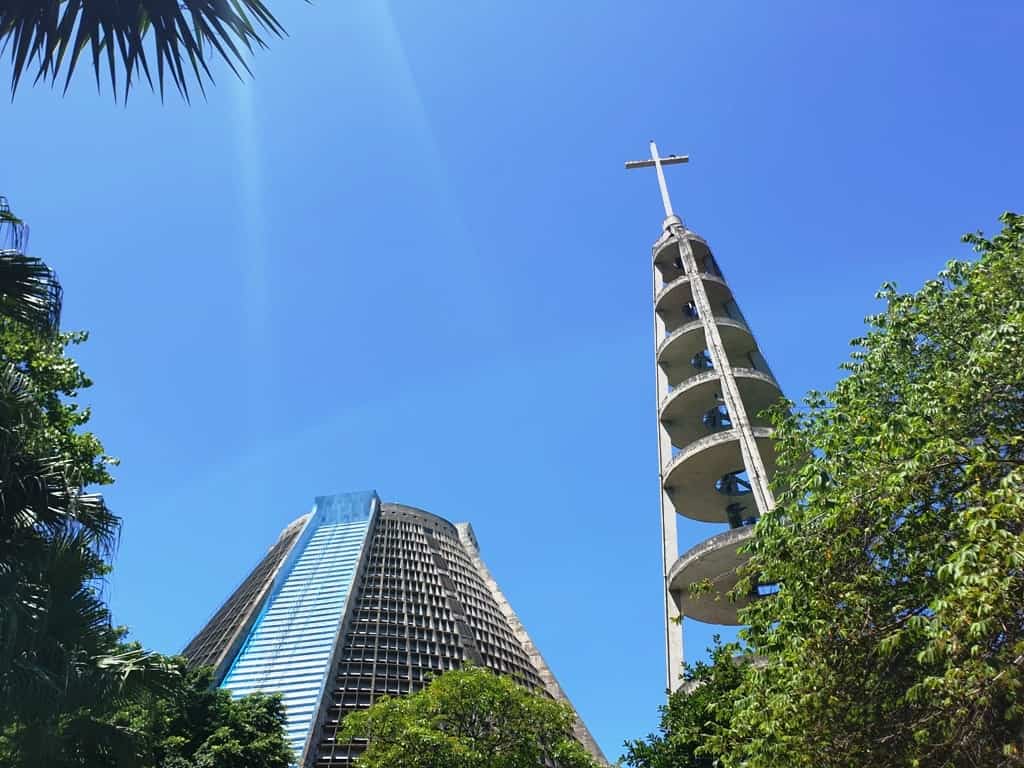
The cathedral is built in the style of a Mayan pyramid, though with a modern Le Corbusier twist, and has four floors to ceiling stained glass windows. The Modernist-style cathedral can hold 20,000 standing congregants, making it one of the largest cathedrals in the world.
Royal Portuguese Reading Room
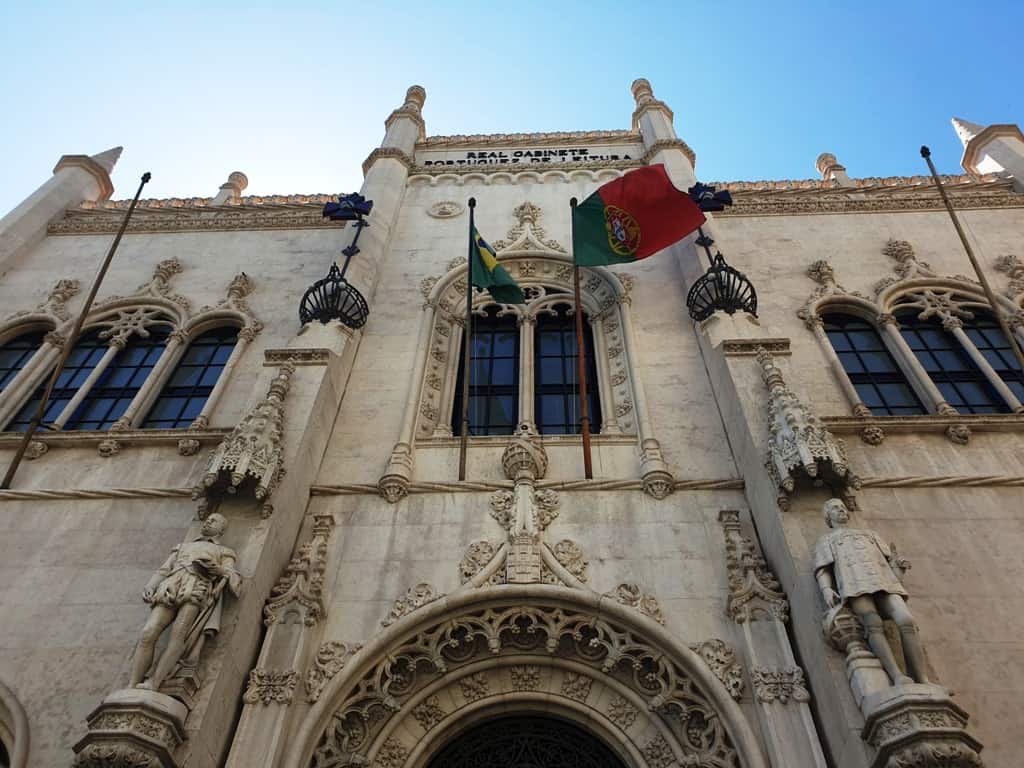
The Royal Portuguese Reading Room is one of the most impressive libraries in the world. Built-in 1822 by Portugues immigrants and filled with texts from Portugal, the library was opened to the public in 1887.

The interior is a Gothic-Renaissance style and rises three stories above the central reading room. Today there are over 400,000 works of literature and art, and the library is considered one of the best accumulations of Portuguese history and culture.
Cinelândia Square
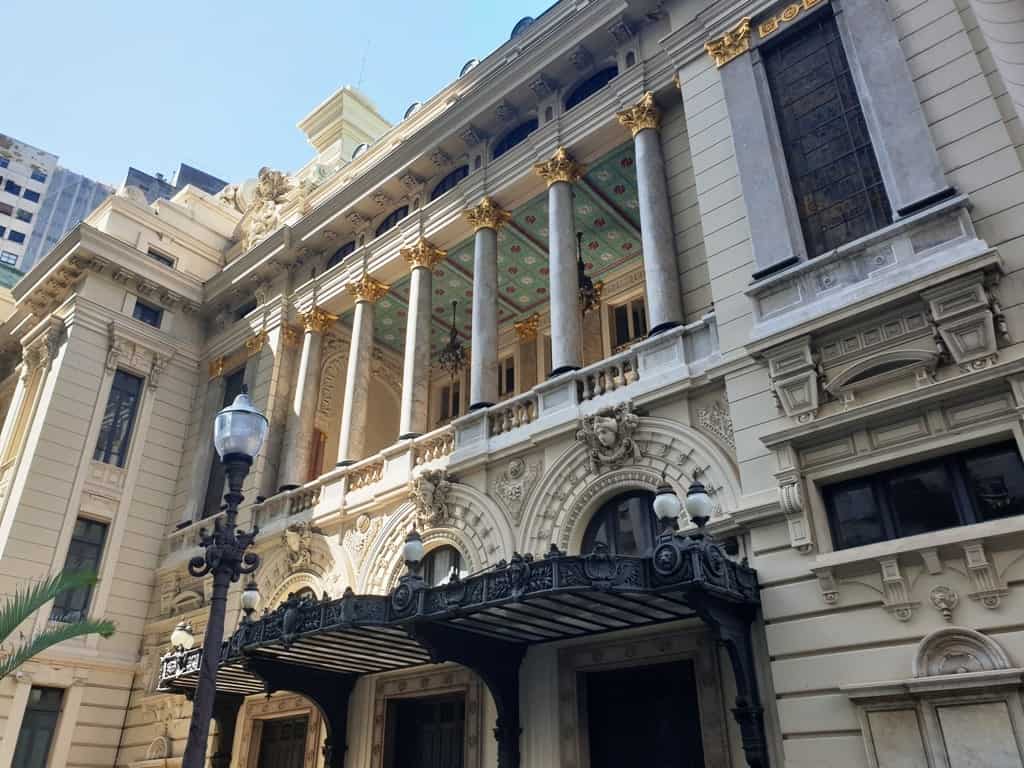
Cinelândia Square is a principal meeting place in Rio. The square’s official name is the Praça Floriano Peixoto, though locals do not refer to it as such. Cinelândia Square was built in the early 20th century as Rio began to construct monumental buildings in its status as the capital of Brazil.
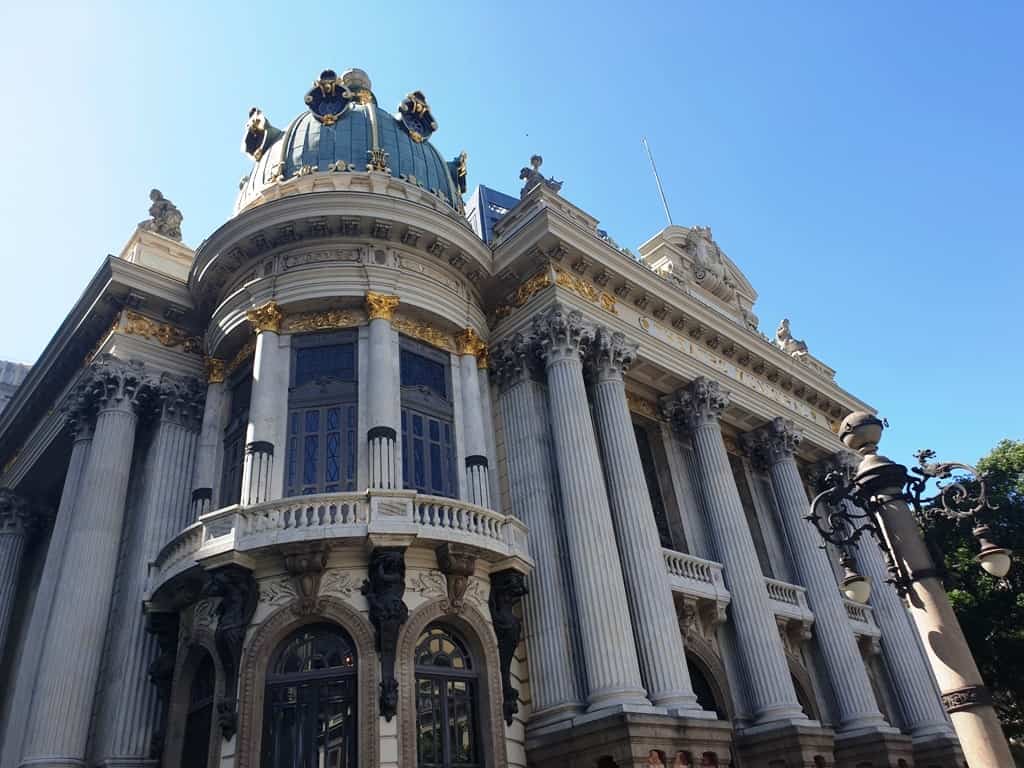
Today, the only significant buildings that remain are the Municipal Theater of Rio de Janeiro, Museu Nacional de Belas Artes, and the Fundação Biblioteca Nacional.
Praça Quinze de Novembro
Praça Quinze de Novembro is an old square in the center of Rio. It was named for the date of Brazil’s independence. Some of the surrounding buildings include the Imperial Palace Cultural Center, and Arco do Teles. The square hosts an antique market on Saturdays.
Centro Cultural Banco do Brasil Rio de Janeiro

The Centro Cultural Banco do Brasil Rio de Janeiro is a cultural center. There are cultural Bancos in São Paulo, Brasilia, Rio, and Belo Horizonte; the one in Rio is the largest. The museum is located within an Art Deco building and houses several galleries, theatres, and cinemas.
Igreja de Nossa Senhora da Candelária
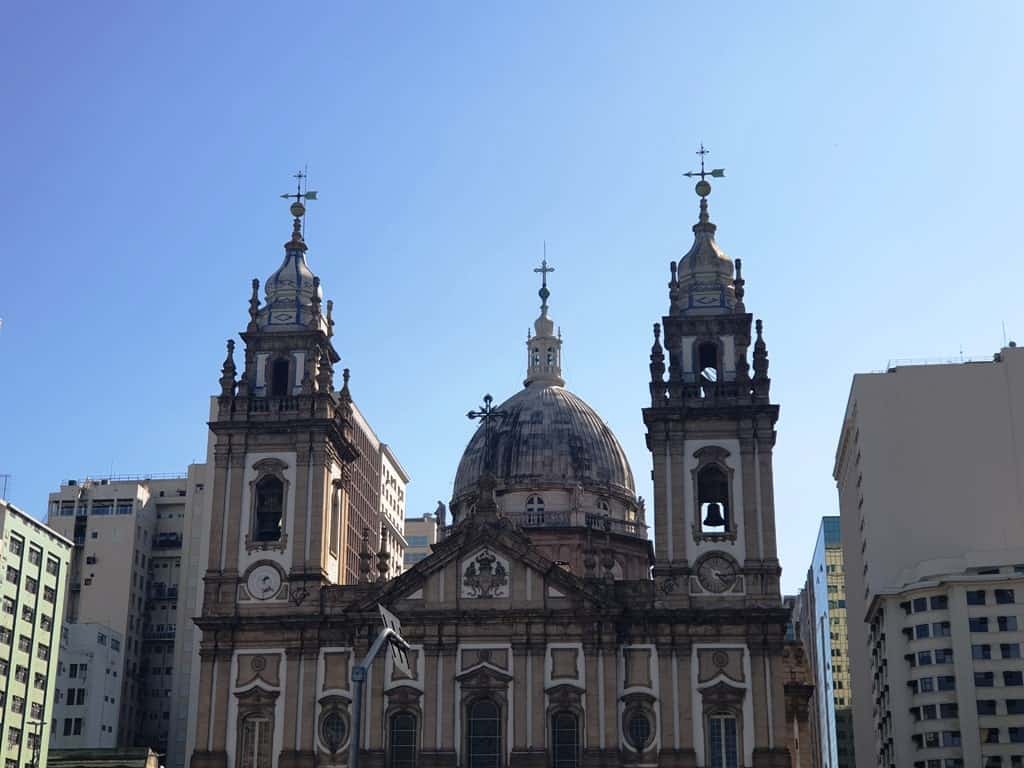
Igreja de Nossa Senhora da Candelária, or Candelária Cathedral, is a Baroque cathedral in the old center of Rio. A small chapel was supposedly named in the 1600s as gratitude for the survival of a small ship, the Candelaria, and was enlarged over the centuries into the Baroque cathedral it is today.
São Bento Monastery
The São Bento Monastery is located in downtown Rio. It was founded in 1590 by Benedictine monks from Bahia, Portugal, and is still operational today. The monastery and adjacent college and seminary are fine examples of Portuguese colonial architecture.
Museum of Tomorrow

The futuristic Museum of Tomorrow is located at the waterfront in the old city center. Designed by neo-futuristic architect Calatrava, the museum takes visitors through our history through innovative interactive exhibits that are more about ideas than about objects. There are five main areas: Cosmos, Earth, Anthropocene, Tomorrow, and Us, all designed to introduce us to the future of an ecological world.
Rio Art Museum
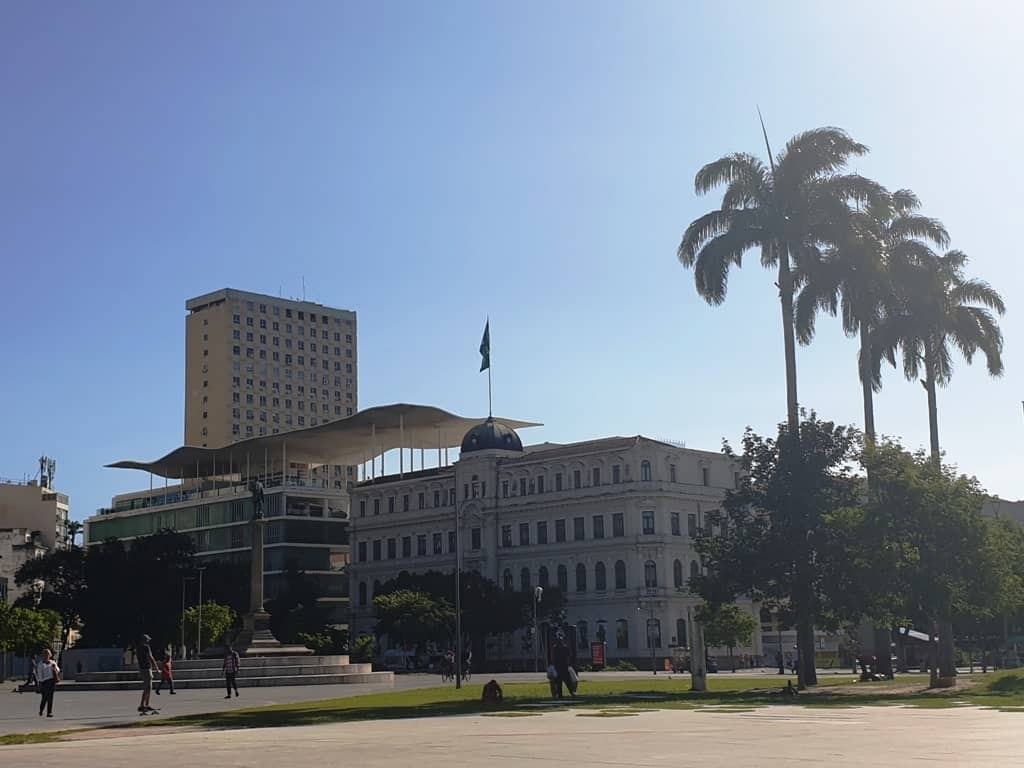
The Museum of Art showcases Brazilian art, from sculptures to photography. In addition to permanent exhibits of local artists, the museum also offers temporary exhibitions. It is located in a series of three buildings along the waterfront that were repurposed and interconnected to form this fascinating museum.
Largest Street Art Mural in the World

The Largest Street Art Mural in the World is a remnant of the 2016 Olympic Games. It is located along the Rio waterfront and stretches for nearly 560 feet. The mural by Eduardo Kobra was commissioned by the IOC and depicts a person from the indigenous communities in Europe, Asia, Africa, America, and Oceania.

The title, We Are One, or Etnias (Ethnicities) reminds us that we as humans are all connected.
Confeitaria Colombo
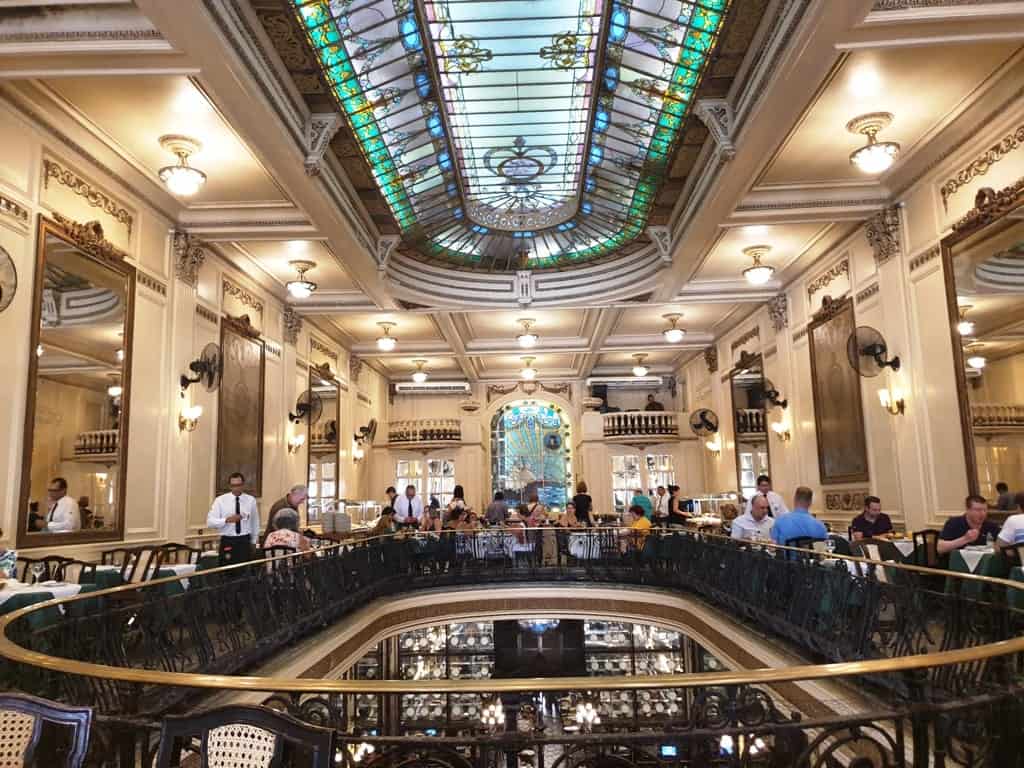
While in the center you can have a fantastic, inexpensive, lunch at the Confeitaria Colombo. Located at R. Uruguaiana, Centro, Rio de Janeiro, the Confeitaria has been a Rio institution for over 100 years. In addition to the lunch buffet menu, there is also a breakfast buffet and a tea schedule. All menus change daily.
A guided tour that takes you to most of the above-mentioned places including the murals, the museum of tomorrow, and more is this one, click to have a look.
Where to Stay in Rio
Windsor Excelsior Hotel
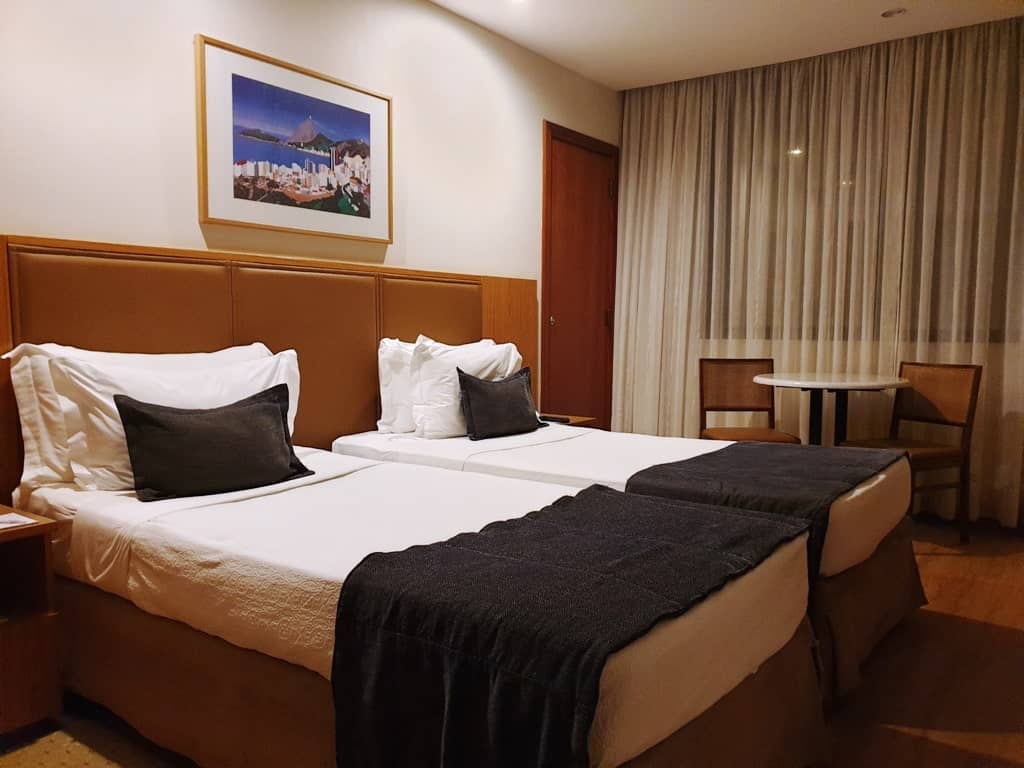
The Windsor Excelsior Hotel is located at Copacabana Beach within walking distance to all the major attractions. The four-star hotel features spacious and comfortable rooms with modern amenities. Guests may also use the pool, fitness center, sauna, and beach facilities.
Click here for more information and to check the latest prices.
Belmond Copacabana Palace
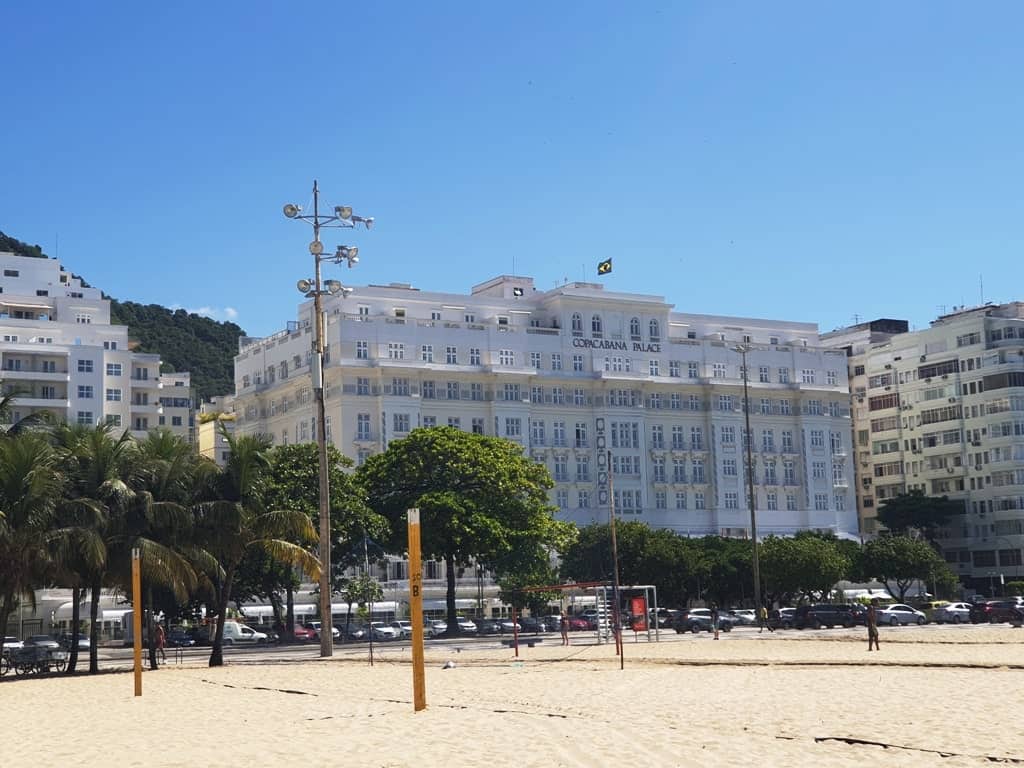
The Belmond Copacabana Palace is an Art Deco jewel and grande dame of Copacabana. Opened in 1923, the hotel has long entertained the rich and famous. In addition to the five-star service and room selection, the hotel also has the best seat in the house for all of Copacabanas’s vibrant events.
Sharing is caring!
Leave a Comment Cancel reply
Save my name, email, and website in this browser for the next time I comment.

40 Bucketlist Things to do in Rio de Janeiro
Rio de Janeiro is the most iconic city in Brazil. It’s a city that will both excite and intimidate you in equal measure, but once you’re used to its size, scale and sprawling nature, you’ll quickly fall for it, as many a traveler has before you.
Fast-paced urban life is juxtaposed against the laid back beachside living, few other cities in the world can boast such a dramatic coastline on their doorstep. Explore museums in the morning, stroll through lively districts, and perhaps even join a Favela tour to see how the other side lives in Rio de Janeiro.
Then spend your afternoons under the sun, basking on Copacabana Beach, before soaking in the carnival-like atmosphere long into the night.
There is no shortage of things to do in Rio de Janeiro and we’re here to help you to plan your visit to one of our favorite cities in the world. This is our personal guide to the best sights and activities to enjoy in this unrivaled South American destination.
Don’t leave home without: DK Eyewitness Travel Guide Brazil
40 Best Things to do in Rio de Janeiro
Table of Contents
1. Christ the Redeemer

The statue of Christ Redeemer is undoubtedly the symbol of Rio de Janeiro and it is a must-visit location when you are visiting the city.
Yes, it will be busy and no, it’s not one of the more unique things to do in Rio de Janeiro, but it is certainly iconic and no trip to the city is complete without seeing it up close.
The staggeringly large statue of Jesus Christ is found atop a tall mountain peak overlooking the city, offering spectacular views out across the city below, and far along the coastline.
It is best to get here early if you can, to avoid at least the worst of the inevitable crowds, but either way, it’s always a glorious sight.
Our top recommended tours of Christ the Redeemer:
- Christ Redeemer and Sugar Loaf Mountain Small-Group Tour
- Full-Day City Tour: Christ Redeemer, Sugar Loaf and Downtown
- Rio de Janeiro Hang Gliding Experience
- Private Sugar Loaf and Christ The Redeemer Tour
2. Sugarloaf Mountain

Sugarloaf Mountain is another of the city’s most recognizable sights and one of the best things to do in Rio de Janeiro is to ride the cable car to the summit.
Found in the Guanabara Bay, the cable car ride begins at Vermelha Beach and takes you to the rocky peak of Morro da Urca. From here, it carries on again to the top of Sugarloaf Mountain itself, which stands just over 500 metes high.
At each stage of the cable car ride, you can find wonderful vistas, as well as shops and souvenir stands.
Moor da Urca Trail up to Sugarloaf
For those who are looking for more of an adventure than taking a cable car up to the top of Sugarloaf mountain, you can hike up to the top on the Moor da Urca trail.
This easy hike starts in the neighborhood of Urca on the eastern edge of Rio de Janeiro’s Zone Sul. Where it is home to the first stage of the famous cable car that shuttles tourist up to the summit of Sugarloaf.
It takes around 1 ½ hours round-trip to hike Morro da Urca. This trail is almost entirely sheltered by trees and is well-traveled. Taking this path will allow you to experience a side of Sugarloaf that many tours are missing by taking the cable car.
Our top recommended tours of Sugarloaf Mountain:
- Sugar Loaf Mountain Half-Day Tour
- Full-Day in Rio: Christ the Redeemer, Sugar Loaf, Maracana and Selaron with Lunch
- Private Rio de Janeiro City Tour
3. Hang Gliding

If you are visiting Rio de Janeiro there’s one adventure you must do, hang gliding. Rio de Janeiro is unlike any other city in the world being cradled around towering mountains. This Brazilian city is where the rain forest meets the sea.
Rio de Janeiro has amazing views from the ground all around the city but just imagine the views from the sky. Take in the views of Rio’s world-class beaches and amazing sites while gliding through the tropical air like a bird.
There’s no experience needed and there’s no other place on earth where you should give it a try. Hang gliding in Rio de Janeiro is a world’s Top 100 Travel Adventure and a must-do when visiting this amazing city.
Fly above the skies of Rio today, as we did on this amazing Rio de Janeiro Hang Gliding Experience.
Book: Rio de Janeiro Hang Gliding Experience
4. Parasailing

Rio de Janeiro has some of the best beaches and coastlines in the world. So naturally, parasailing in Rio de Janeiro has to be on your top things to do in Rio de Janeiro list.
Soar over the beautiful coastline on an epic parasailing adventure. It does not matter if this is your first time or if you have done it before, you will not be disappointed.
Get a bird’s eye view of the city’s most iconic landmarks and coastlines as you enjoy our solo or tandem flight above the crystal clear waters of Rio while being towed by a boat.
Book your Parasailing adventure
5. Paragliding

Rio de Janeiro is an amazing city with beautiful views and breathing landscapes surrounding it. Step out of your comfort zone and into the skies above Rio de Janeiro while paragliding.
Soar like a bird and relax as you take in the amazing views above Tijuca forest and Guanabara bay as your pilot navigates you through the sky. Paragliding in Rio is a unique adventure that will give you a different perspective of this amazing city.
Book your Paragliding adventure today!
6. Copacabana Beach

Brazil’s most famous stretch of sand, Copacabana is a must-visit destination for anyone in the city. Found on the southern side of the city, overlooking the Atlantic Ocean, Copacabana Beach is where the skyscrapers meet the sea.
This long, sandy beach is always full, despite its seemingly endless length, and it’s always busy and bustling. The beach is 4 kilometers long and you can walk along the surf, the sand or the long boardwalk that follows it.
You’ll find plenty of bars, restaurants, and parties at Copacabana.
Our top recommended tours of Copacabana Beach:
- Full-Day Complete Tour of Rio de Janeiro
- Small-Group Panoramic Bike Tour in Rio de Janeiro
- Biking and Hiking Tour from Copacabana to Two Brothers Hill
- Highlights of Rio Full-Day Tour with Lunch
7. Ipanema Beach

Not quite as famous as its neighbor at Copacabana, Ipanema Beach is found in the next bay along the shoreline. It’s just as spectacular to see, as the city here is built right up to the sands too.
Here you can find endless sunshine, endless bars and endless restaurants strung out along its length.
A visit to Ipanema Beach is one of the best things to do in Rio de Janeiro and you may just find that you keep returning time after time to soak up the sand and the good vibes.
Our top recommended tours of Ipanema Beach:
- Rio de Janeiro Experience
8. Prainha Beach
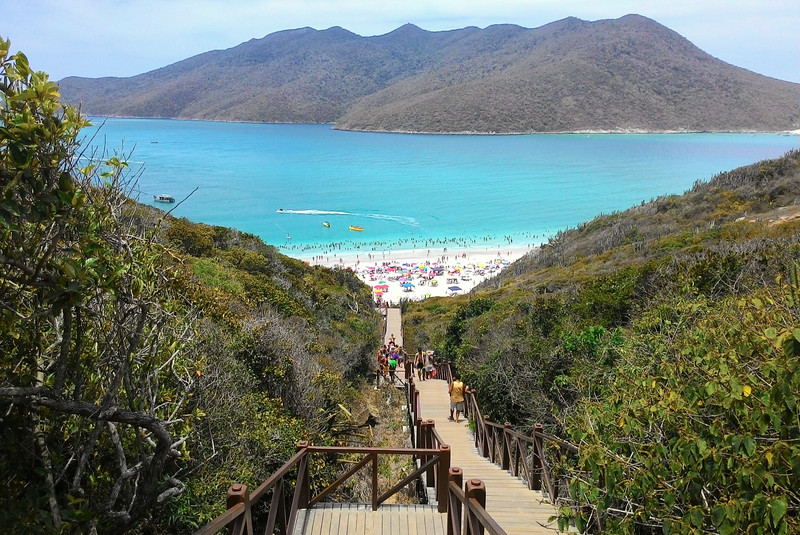
Prainha is home to another of Rio de Janeiro’s beautiful beaches and this is just about as untouched as it gets. Found on the far western coastline, the beach is set away from the city and surrounded by rugged nature.
There are a few great restaurants and the odd ramshackle bar, but aside from this, there is very little development this far out of the city, making it the perfect getaway.
Our top recommended tours of Prainha Beach:
- Private Tour: Grumari and Prainha Beach Photography Tour
- Private Half-Day Barra da Tijuca, Prainha, and Joátinga Tour
- Private Day Tour Prainha and Grumari
- Secluded Beaches Off The Beaten Track
9. Museum of Tomorrow

Take a break from the sun, cocktails, and beaches of Rio de Janeiro to visit the fascinating Museum of Tomorrow.
The distinct, spaceship-like outer structure of the museum is unmissable, and you’ll find its futuristic facade jutting out prominently into the bay by the center of the city.
The museum will take you on a journey through the history of space, the earth, and far beyond into the future, as it imagines what the world of tomorrow might be like for humanity.
Our top recommended tours of the Museum of Tomorrow:
- Museum of Tomorrow Admission Ticket
- Museum of Tomorrow Guided Visit and Transportation
- 4-hour Rio Old Town Historical Walking Small-Group Tour
- Rio de Janeiro Half-Day Walking Tour
10. Museum of the Indian
Another intriguing museum to visit while you are in Rio de Janeiro is the understated Museum of the Indian. Modern Rio has a cultural and ethnic makeup like few other cities in the world, and few other cities can claim to be quite so diverse.
Unfortunately, though, the original indigenous inhabitants of Brazil are often overlooked.
The Museum of the Indian however, despite being small in size, offers visitors the chance to learn more about the country’s original inhabitants, their history and culture.
Related Article: 34 Amazing South America Adventure Experiences
11. Dona Marta Lookout
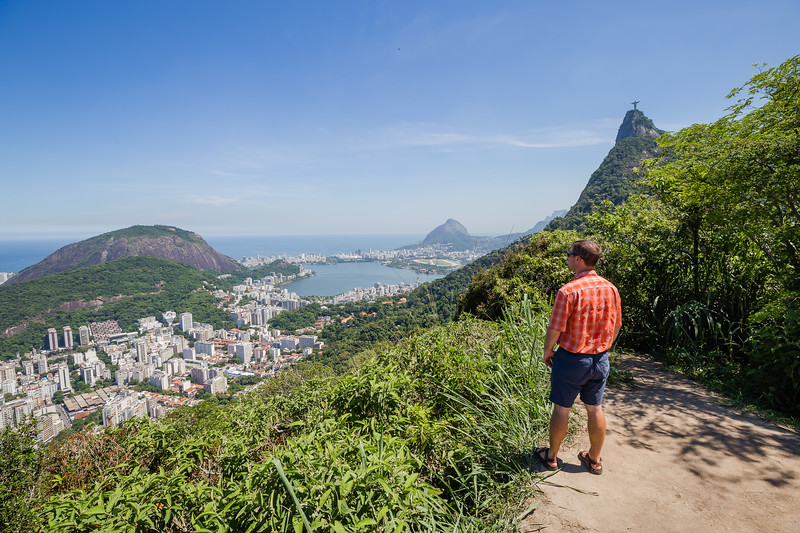
The viewpoint from Dona Marta lookout is as impressive as the view from the Christ the Redeemer Statue but without all the people. This is why it makes our list of top things to do in Rio de Janeiro.
Known as the most beautiful views of Rio de Janeiro this once old helicopter takeoff points is now turned into one of the best locations to watch the sunset over the city.
The Dona Marta lookout offers full 360 views of Marvelous City, Urca, Botafogo and Flamengo beaches, Sugar Loaf, Maracana, Christ the Redeemer Statue and the Bay of Guanabara.
12. Botanical Garden

One of the best things to do in Rio de Janeiro is to visit the verdant greenery of the Botanic Gardens. Here you can find thousands of unique species of plants sourced from across the world, but most significantly from the huge biodiverse rainforests found across Brazil itself.
The garden is over 200 years old, and although it started as just a small collection of flora, it’s since grown into a huge botanical haven.
Our top recommended tours of the Botanical Garden:
- Rio de Janeiro Botanical Garden Tour
- Private Tour: Botanical Gardens and Parque Lage Photography Tour
- Rio de Janeiro Botanical Garden and Tijuca Rainforest Eco-Tour
- Botanical Garden and Tijuca Rainforest Jeep Tour
13. Catedral de Sao Sebastiao (Rio de Janeiro Cathedral)

The Rio de Janeiro Cathedral looks to be Mahan pyramid placed in the middle of modern cityscape of Rio de Janeiro, it sticks out like a sore thumb and is one of the most unusual looking cathedrals I’ve seen in all of my travels.
That being said, what is in the inside counts. The outside is less to be desired but head inside and gaze up that the towering rows of stain glass windows that run top to bottom like ribbons.
This church is dedicated to Saint Sebastian, the patron Saint of Rio de Janeiro and is an operating church.
14. Tijuca National Park

Not many cities the size of Rio de Janeiro can claim to have a rainforest within the city limits, but this is no normal city.
The sprawling forest found within Tijuca National Park is a haven for wildlife and flora, and it’s all just a short journey away from the center.
You can ride a train through the forest, hike along footpaths and visit incredible viewpoints overlooking the city.
It’s a breathtaking place, made all the more bewildering by the surrounding skyscrapers and densely packed districts of Rio de Janeiro.
- Historic Valley Circuit: A 7.5 km hiking trail that takes you to fountains and monuments of historical and cultural interest.
- Paineiras Road: The Paineiras road end at the feet of Christ Redeemer. Along the way up there are endless amounts of lookouts with exceptional views of South Rio that include Rodrigo de Freitas Lagoon, the beaches of Copacabana, Ipanema, and Leblon, and Cagarras Island.
- Parrot’s Beak: Parrot’s Beak is one of the most frequented peaks in Tijuca National Park. Its resemblance to a parrot’s beak and offers fantastic views of the beaches of Barra and Recreio.
- Tijuca Peak: This is the highest point of Tijuca National Park standing at 1,022 meters. Accessible by trail or climbing, this lookout will give you a 360 view of the city.
- Gavea Rock (Pedra da Gavea): This is a great rock for rock-climbing, it stands 842 meters above sea level.
- Vista Chinese: If you are looking for great views you must hike up to Vista Chinese. This charming little Chinese structure dates back to 1903 located 380 meters high in Tijuca National Forest.
- Pedra Bonita: Pedra Bonita is one of Rio de Janeiro’s most popular hikes due to the amazing views of all of the different parts of Rio that can be spotted at the top. This is where many of Rio’s paraglider/hang glider launch and is located in the Tijuca Forest.
Our top recommended tours of Tijuca National Park:
- Private Tour: Rio de Janeiro Eco Tour at Tijuca National Park
- Tijuca Forest Hiking Tour Including Waterfalls
- Private Tour: Tijuca National Park Photography Tour
- Tijuca Rainforest Hiking Tour in Rio de Janeiro
15. Largest Street Art Mural in the World

The city of Rio de Janeiro is one of the most colorful cities in the world and one of the most artistic cities I’ve ever experienced. Art is everywhere and everywhere you look you will find not good street art but great street art.
There is no better place to view Rio’s street art than along the 560-foot waterfront known as the Olympic Boulevard. Here you can appreciate the largest mural graffiti in the world.
These murals come to life as you stand in front of them. The eyes of a Tajapo boy from Brazil, a Mursi woman for Ethiopia, a Kayin woman from Thailand, a Supi man from Northern Europe and a Huli man from Papua New Guinea see to stop you in tracks with lifelike detail.
The most famous works of art are by Eduardo Kobra, representing humanity’s common ancestors, the indigenous people from America, Asia, Europe, Africa, and Australia.
You can also find other murals by graffiti artist Andre Calila Cadiz, Jr or Rita Wainer along the Olympic Boulevard.
16. Forte de Copacabana (Copacabana Fort)

This fortress is located between Copacabana and Ipanema. It gives great views of Copacabana beach since this structure is located at the end of the small peninsula.
The fort is home to the army history museum that will give you an inside look at the war.
This is a great place to sit back and relax, there are two cafes with outdoor sitting area that will have you enjoying a panoramic view of Copacabana beach.
On Sundays enjoy a live open-air concert where you will find locals dancing from the age of 2 to 92.
17. Grumari Beach
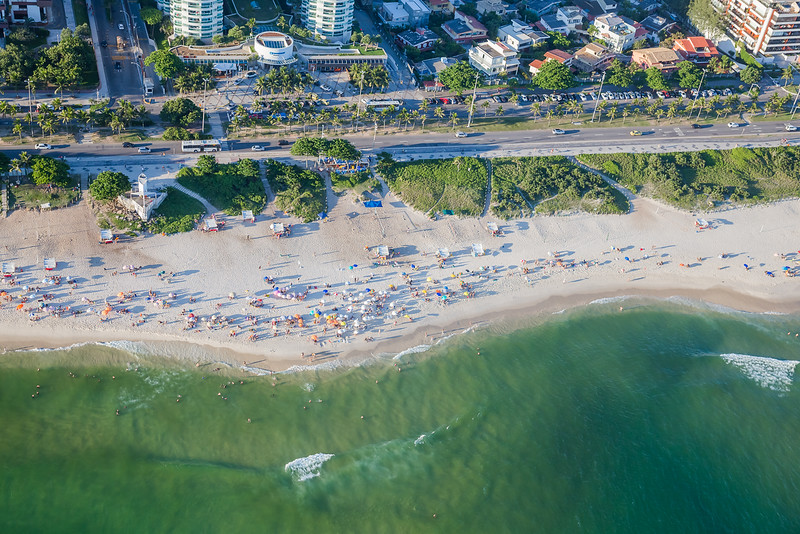
Another breathtaking piece of nature waiting to be discovered close to the city is Grumari Beach. Although Rio de Janeiro is a city of beaches, Grumari is different, because there’s almost no development here.
It’s set away to the southwest of the center, far enough along the coast from the popular spots of Copacabana and Ipanema to be far removed from the crowds, but not so far that you can’t still day trip here from the city.
The sands are virtually pristine, and if you’re into it, you can even find a nude beach just a bit further to the west.
Our top recommended tours of Grumari Beach:
- Pedra do Telégrafo Hiking Tour
- Rio’s Secluded Beaches – Prainha & Grumari
18. Rodrigo de Freitas Lagoon

The Rodrigo de Freitas Lagoon is a huge lake that’s found inland of Copacabana and Ipanema Beach, forming part of the epic view you see from the top of the likes of Sugarloaf Mountain or Christ the Redeemer.
It’s unmissable, given its size, and it’s a great place to get outdoors.
You can take to the water, kayaking, rowing or anything else aquatic that might take your fancy, or you can hike, bike, or jog around the cycle paths that extend around much of its circumference.
19. Take in a Football Match

When most people think of Brazil they think of Football. Whether you’re a die-hard football fan or just someone who wants to take in a sporting advent while traveling you must check out a football match while in Rio.
Some of the best local teams are Flamengo, Botafogo, Fluminense, and Vasco. Attending one of these games will guarantee a great match with an amazing atmosphere.
The Maracena stadium is one of the largest stadiums in South America, second only to Estadio Monumental in Peru . The energy in this stadium is truly amazing during a football match.
Book your Rio football experience
20. Visit the Lapa District
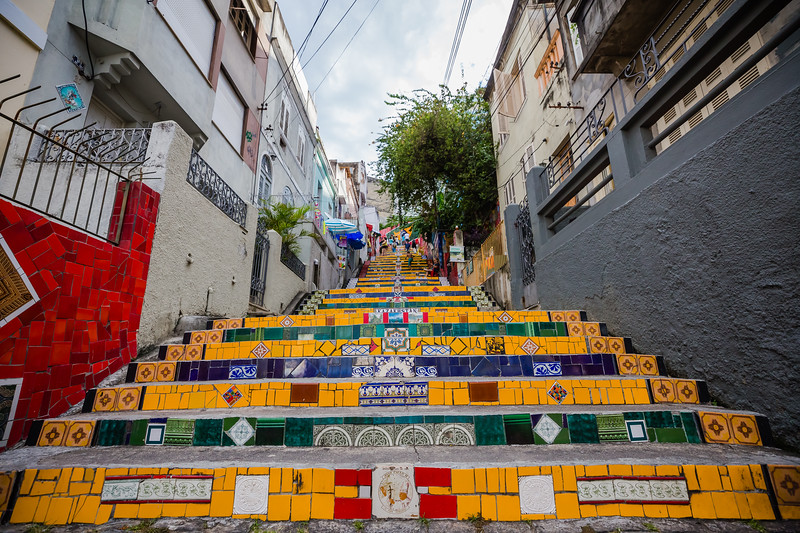
Lapa is one of Rio de Janeiro’s central districts and it’s a great place to explore the urban side of the city.
One of the best things to do in Rio de Janeiro is to visit the famous Lapa Steps, a brightly painted walkway in the district, as well as the architecturally magnificent aqueduct that cuts through the area.
Lapa is somewhat of a creative center in the city, but as well as being home to great galleries, it’s also a cultural center renowned for its bars and cafes too.
Our top recommended tours of Lapa District:
- Rio de Janeiro Combo Tour: Santa Teresa, Corcovado, Christ & Copacabana
- Private Tour: Ancient Rio and Santa Teresa Tour
- Private Tour: The Best of Rio
21. Parque Lage

What makes Rio de Janeiro so great is all of the green spaces tucked within the city. Parque Lage is tucked away at the foot of the Corcovado in the Jardim Botanico neighborhood.
This once sugar mill turned into a mansion with old stables, a mysterious cave, a castle-like tower, a massive aquarium now is home to the Escola de Artes Visuals do Perque Lage that showcases galleries of students art.
It’s 52 hectares is a great place to sit back and enjoy nature. At the backend of the park is the start of the hiking trail that leads up to the top of Corcovado that passed by waterfalls as you climb up to the lookout just below the Christ the Redeemer.
22. Take a Favela Tour

The daring traveler looking to see the other side of Rio de Janeiro can join a Favela tour while visiting the city.
It’s not for everyone, but if you sign up with a reputable company you’ll be given the opportunity to see parts of the city that are usually off-limits to solo travelers.
It’s another world, especially compared to the glitz and glamour of the beaches and the wealth of the central districts.
You’ll end the tour with a new appreciation for the less well off of the city and the struggles they go through to live in this urban metropolis.
Our top recommended tours of Favela Tour:
- Rocinha Favela Walking Tour
- Favela Walking Tour in Rio de Janeiro
- Rio de Janeiro Favela Jeep Tour
- Exclusive Rio De Janeiro Favela Tour: Learn About The Rocinha Favela
23. Carioca Aqueduct (Arocos da Lapa)

Located in the Lapa neighborhood is a large aqueduct that looks to be out of place among the modern buildings.
This aqueduct called Arcos da Lapa (Lapa Arches) was inaugurated in 1750 to bring fresh water from the Carioca River into the city of Rio.
It’s a great example of Colonial architectures and engineering that has lasted the test to time. In today’s day the aqueduct that used to carry water carry’s something else.
It has been transformed into a bridge for the ever-popular Bondinho de Santa Teresa that carries tourists and locals uphill to the Santa Teresa neighborhood.
- Bondes de Santa Teresa: This is also the start of the Bondes de Santa Teresa that runs from Carioca Station and Dois Irmãos. This historic tram line in Rio de Janeiro follows a circuit up and down Santa Teresa hill and offers great views of the city. The tram was the first introduced as a mode of transpiration for locals but now has turned into more of a tourist trap. This is a great way to explore the city of Rio.
24. Go on a Helicopter Tour

There is no better way to see the amazing city of Rio de Janeiro than from above on a helicopter tour. Get a bird’s eye perspective of some of Rio’s best attractions, beaches, and bays while exploring in comfort.
Capture that photo of Christ the Redeemer that your friends didn’t get while soaring above the city of Rio de Janeiro in a helicopter. A helicopter tour of Rio de Janeiro is a bucket-list and a once in a lifetime experience.
For those who are more adventurous or photographers, we recommend taking a door off helicopter tour as we did.
Book your helicopter adventure above Rio de Janeiro
25. Try Surfing

When you think of top places to surf in the world what comes to mind? Hawaii and Australia are probably on the top of most people’s minds as top surfing places, but did you know Rio de Janeiro in Brazil always ends up in the top 5. It’s true.
So naturally one of the best things to do in Rio is not just to sit on the beach and enjoy the sites, it is grabbing a surfboard and hitting some incredible waves among crystal clear waters against a stunning backdrop.
That’s right Rio has a huge surfing community. There are great spots all around the city for varies of levels.
Book your Rio surfing adventure today!
26. Parque das Ruinas (Santa Teresa Museum)

Another great lookout in the city of Rio is at Parque das Ruinas. These ruins overlook the beautiful scenery of downtown and Guanabara Bay. This public park with an excellent art gallery is built around the ruins of the old mansion that was hone to Laurinda Santos Lobo.
The Parque das Ruinas also has many outdoor concerts throughout the year and houses a bar. Be sure to ask around for the schedule during your visit to Rio, you may be able to catch a show.
27. Take a Food Tour

Rio de Janeiro is home to some of Brazil’s best restaurant and best dishes and a food tour through the city’s best culinary districts will give you the opportunity to taste all the delights of Brazilian cooking.
The best food tours will take you to the little known local places, where you can sample the best-tasting dishes to be found in Rio.
Our top recommended tours of Rio de Janeiro Food Tours:
- Rio de Janeiro Evening Bar Food Tour
- Churrascaria BBQ Restaurants Fogo de Chao in Rio de Janeiro
- Churrascaria Restaurant in Rio de Janeiro
- Rio de Janeiro Food Tour: Mission Food and Drink
28. Hop-on Hop-off Rio Line Bus Tour

Discover the best of Rio at your own pace while on the hop-on-hop-off bus. That’s the magic of a hop-on hop-off bus tour. If you want to get off and explore just do it or if you want to stay on the bus and just see the city, you can do that as well.
Hop-on hop-off bus tours are one of the best ways to see the city.
Experience all of Rio de Janeiro’s top attractions with commentary on board the bus to learn more about each location and explore each attraction for as long as you’d like.
Book your hop-on hop-off bus tour of Rio
29. Markets in Gloria and Uruguaiana

I don’t know about you but when I travel, I love to roam through local markets. The sights and sounds give me a true feeling of what it is like to live there. One of the best ways to experience Rio is by exploring one of its many markets.
There are many markets spread around the city filled with, fruit, vegetables, seafood, antiques, and souvenirs. Gloria and Uruguaina are the best markets in Rio de Janeiro.
If you are a foodie or if you are just looking for some local life away from the Brazilin beach scene, head to the farmers market in Gloria. Here you can find some of the best fruit and vegetable stalls, along with lively locals.
Uruguaiana market has hundreds of stalls selling anything you can imagine. Just think about the great treasures to be found in this market.

30. Soak up the Night Life

This is a city that never sleeps, and one of the best things to do in Rio de Janeiro is to indulge in the nightlife.
While the city might have a bad reputation when it comes to late nights, in the right areas you can enjoy the drinks, the bars and good company without too much to worry about.
Lapa has great bars, while the Santa Teresa District is known for its laid back drinking locations.
- Rio Scenerium: A must hit is the Rio Scenerium. This multi-level night club has live bans playing while Samba dances show off their talents nighly. What’s great about the three different levels is that there is always different kinds of music play from the classic Samba music to today’s hits.
Our top recommended tours of Rio de Janeiro Nightlife:
- Private Rio Nightlife Tour with Skip the Line
- Rio de Janeiro Nightclub Tour
- Nightlife of Rio as a Local Tour
- Private Tour Nightlife Secrets of Rio de Janeiro-Samba Session
31. Largo do Boticario

Tucked into the fading hillside of the Cosme Velho neighborhood lies Largo do Boticario. This district of Rio is known for its abandoned houses, unique architecture with vibrant colors and how Rio’s jungle is always creeping its way into the city.
This is a great stop for those who wish to explore the more traditional of Rio de Janeiro, we experienced great views while walking its colorful graffiti streets while snacking on some locally made chocolate that we bought off a 90-year-old lady.
Largo do Boticario is also the place where you can catch the Corcovado train that goes up to Christ the Redeemer.
32. Pedra do Telegrafo

Pedra do Telegrafo is one of the most Instagrammed locations in Rio de Janeiro. It’s a popular hike that leads to a great lookout with rocks at the top. Here people pose for photos hanging in the air above an abyss when really, they are not hanging.
The hike itself is 2 miles long and offers stunning viewpoints along the way. The waiting line for photos can range from 1-2 hours depending on the time of the year. Be sure to leave early and take plenty of water.
Book: Pedra do Telégrafo Hiking Tour
33. Pedra do Sal (‘Rock of Salt”)

Tucked down a back street in the neighborhood of Saude surrounded by graffiti painted buildings of musicians is a spot that comes alive at night.
The Pedra do Sal (Rock of Salt) is a popular plaza known for its Monday and Friday night samba parties.
This is where Somba lovers, cold beer and friends gather in Rio de Janeiro. You cannot get any more local than this in Rio.
Pedra do Sal also known as Little Africa has a special significance to residents of Rio de Janeiro of African descent.
History tells us that this is where many escaped and freed slaves lived and where great sambistas have played.
34. Pedra do Pontal (Pontal Stone)

Pedra do Pontal is a small island that lies between Recreio dos Bandeirantes beach and Macumda Beach. It is connected to the mainland by a small narrow strip of sand that comes and goes with the tide.
This is a great spot to watch a sunset. It’s a popular Instagram spot so waits can be anywhere from 20 minutes to 1 hour for the photo spot.
Book: Rio Fresh Combo: Pedra do Telégrafo & Wild Beaches tour
35. Ilha Fiscal

Located in Guanabara Bay on its own island is a fairytale-like palace that serves as a reminder of a time when the city was the capital of the Brazilian Empire.
This Gothic-Provence style building was inaugurated in 1889 and was used as the offices of the Brazilian customs authority.
This palace served as the scene for the last ball offered by the imperial government before being overthrown six days later. It surprisingly survived the overturned government and the test of time.
Nowadays this palace is home to a museum, and it has lost a little of its extravagant style but is still worth visiting.
36. Behind the Scenes of Carnival

Step behind the scenes and discover what Carnival is all about. This tour provides a behind the scenes tour of one of Rio’s top samba schools. You’ll learn about the full history of Samba and the Carnival parade.
Get full access to their carnival creation before it is revealed in the Carnival parade. That’s right, walk among their floats in their custom warehouse as they are being created.
Admire the costumes as they are being created in front of you and even dress up and dance in past years’ costumes as a samba expert teaches you how to dance.
Book your own Behind the Scenes of Carnival
37. Mangueira’s Polacio de Samba
Magueira’s Polacio de Samba is one of Rio’s oldest samba schools and one of the best in all of Brazil.
In September this samba school rehearsals their Carnival performance with open door dance parties to the public every Saturday night.
The party is always lively with friendly local Brazilians dressed up in sensual costumes that weave little to the imagination.
Be prepared to be hypnotized by the flurry of legs on the smiling extremely talented samba dances showing their moves.
38. Plan Your Visit for Carnaval

It’s time to celebrate life with song and dance. Carnaval is one of Brazil’s most famous festivals and if you are in Rio at the right time of the year you simply can not miss out on this experience.
So if you have not booked your trip yet, you should really think hard about booking when Carnaval is going on.
Rio de Janeiro holds Brazil’s most famous carnival celebrations that last for an entire week, ending with thousands of people at the world-famous Sambodromo stadium wearing masks, colorful costumes, where they dance all night long to the beats of drums and music.
The best of the best in Brazil participate in Carnaval in Rio. You will experience beautifully dressed samba dancers atop amazingly decorated moving floats that include fire, water, and other effects that get the stadium of hundreds dancing as they make their way through.
For an intimate Carnaval experience in Rio: Book the 6 day Rio de Janeiro Carnival experience with G Adventures
39. Plan a Side Trip to Ilha Grande
Not too far from Rio de Janeiro are some of Brazil’s best beaches on the car-free island of Ilha Grande. This beach lovers paradise is just a few hours from Rio de Janeiro and a visit to Ilha Grande will not disappoint you.
Check out our Ilha Grande, Brazil Planning Guide .
Another great city to visit is Paraty, one of Brazil’s best kept colonial towns that offer endless adventures. Get lost among its cobblestone streets or while hiking to one of the many waterfalls located just outside of town.
How we Explored Brazil
We spent one week in Rio de Janeiro and 15 days exploring the rest of Brazil on the Wonders of Brazil tour with G Adventures. This tour allowed us to experience the best of what Brazil has to offer in a small group tour.
We danced to the sounds of samba in Rio de Janeiro before hitting Carnival. We relaxed on some of the best beaches in Brazil on Ilha Grande.
We were transported back into time while walking the historic cobblestone streets of Paraty. We stood on the edge of Iguazu Falls on both the Brazil and Argentina sides.
We explored the wild side of the Pantanal wetlands, where we looked for caimans, jaguars and exotic birds.
There was no shortage of wonderful experiences, as Brazil is a pretty epic destination.
Read reviews and check prices with our Hotel Search Engine , that gives you the best hotel deals found on the web. Our search engine pulls results from all of the major booking places, including Expedia, Hotels, Booking and more. All the options, all the deals, all in one place and just for you.
More on Brazil:
- Two Week Trip to Brazil Itinerary for Any Traveler
- Ilha Grande, Brazil: Ultimate Planning Guide
- Paraty, Brazil: Ultimate Planning Guide
- Bonito, Brazil: Ultimate Planning Guide
- Pantanal in Brazil: Ultimate Planning Guide
- 16 Amazing Things to do in Brazil
Did you like this story? Share it!
Travel planning resources, about david stock.
I have always been an outdoorsman so becoming an adventure traveler was just the next natural step. I love nature, I love to get off the beaten path and I like to explore. I enjoy scuba diving and cars. And yes, Lina and I have a naked dog.
2 thoughts on “40 Bucketlist Things to do in Rio de Janeiro”
I have always heard of Rio de Janeiro back then but I don’t know much about the places to visit and things to do there. Now, I learned more about this beautiful place and is added to my bucket list. Thank you for sharing.
Being the largest city in the Brazil on the South Atlantic Coast, Rio de Janeiro is most famous for its breathtaking landscapes, nightlife and food. It is one of the most visited places and has a lot to cover. Thanks David, for this wonderful article for this covers almost all things to do and places to visit in Rio de Janeiro.
Leave a Comment Cancel reply


- Rio de Janeiro
Navigate forward to interact with the calendar and select a date. Press the question mark key to get the keyboard shortcuts for changing dates.
Navigate backward to interact with the calendar and select a date. Press the question mark key to get the keyboard shortcuts for changing dates.
Rio de Janeiro Trip Planner
Top attractions in rio de janeiro.

Other notable attractions

Top searches in Rio de Janeiro
Popular road trips from rio de janeiro, all road trips from rio de janeiro.
- Rio de Janeiro to Sao Paulo drive
- Rio de Janeiro to Armacao dos Buzios drive
- Rio de Janeiro to Campos Do Jordao drive
- Rio de Janeiro to Belo Horizonte drive
- Rio de Janeiro to Paraty drive
- Rio de Janeiro to Curitiba drive
- Rio de Janeiro to Angra Dos Reis drive
- Rio de Janeiro to Buenos Aires drive
- Rio de Janeiro to Gramado drive
- Rio de Janeiro to Foz do Iguacu drive
- Rio de Janeiro to Brasilia drive
- Rio de Janeiro to Florianopolis drive
- Rio de Janeiro to Porto Seguro drive
- Rio de Janeiro to Ubatuba drive
- Rio de Janeiro to Ouro Preto drive
- Rio de Janeiro to Salvador drive
- Rio de Janeiro to Santos drive
- Rio de Janeiro to Tiradentes drive
- Rio de Janeiro to Vitoria drive
- Rio de Janeiro to Montevideo drive
- Rio de Janeiro to Pocos de Caldas drive
- Rio de Janeiro to Itatiaia drive
- Rio de Janeiro to Porto Alegre drive
- Rio de Janeiro to Natal drive
- Rio de Janeiro to Arraial do Cabo drive
- Rio de Janeiro to Balneario Camboriu drive
- Rio de Janeiro to Fortaleza drive
- Rio de Janeiro to Sao Sebastiao drive
- Rio de Janeiro to Campinas drive
- Rio de Janeiro to Recife drive
Explore nearby places
- Visconde de Maua
- Serra dos Orgaos National Park
- Duque de Caxias
- Sao Goncalo
- Sao Joao De Meriti
- Belford Roxo
- Nova Iguacu
- Barra de Guaratiba
- Santo Amaro de Campos
- Miguel Pereira
- Paty do Alferes
- Teresopolis
- Sacra Familia do Tingua
All related maps of Rio de Janeiro
- Map of Rio de Janeiro
- Map of Visconde de Maua
- Map of Serra dos Orgaos National Park
- Map of Niteroi
- Map of Duque de Caxias
- Map of Sao Goncalo
- Map of Sao Joao De Meriti
- Map of Ipiabas
- Map of Nilopolis
- Map of Belford Roxo
- Map of Mesquita
- Map of Nova Iguacu
- Map of Mage
- Map of Marica
- Map of Itaborai
- Map of Xerem
- Map of Barra de Guaratiba
- Map of Queimados
- Map of Petropolis
- Map of Guaratiba
- Map of Guapimirim
- Map of Araras
- Map of Santo Amaro de Campos
- Map of Tangua
- Map of Seropedica
- Map of Miguel Pereira
- Map of Itaipava
- Map of Paty do Alferes
- Map of Itaguai
- Map of Teresopolis
- Map of Sacra Familia do Tingua
Rio de Janeiro throughout the year
- Rio de Janeiro in January
- Rio de Janeiro in February
- Rio de Janeiro in March
- Rio de Janeiro in April
- Rio de Janeiro in May
- Rio de Janeiro in June
- Rio de Janeiro in July
- Rio de Janeiro in August
- Rio de Janeiro in September
- Rio de Janeiro in October
- Rio de Janeiro in November
- Rio de Janeiro in December
Looking for day-by-day itineraries in Rio de Janeiro?
Get inspired for your trip to Rio de Janeiro with our curated itineraries that are jam-packed with popular attractions everyday! Check them out here:
- 1-Day Rio de Janeiro Itinerary
- 2-Day Rio de Janeiro Itinerary
- 3-Day Rio de Janeiro Itinerary
- 4-Day Rio de Janeiro Itinerary
- 5-Day Rio de Janeiro Itinerary
Q&A about Rio de Janeiro
Weather in rio de janeiro, add places from guides with 1 click, collaborate with friends in real time, import flight and hotel reservations, expense tracking and splitting, checklists for anything, get personalized suggestions.
4.9 on App Store, 4.7 on Google Play
A One-Week Rio de Janeiro Itinerary

If you have one week in Rio de Janeiro, you’re in for a treat. This gives plenty of time to see all the famous landmarks and scratch the surface to go a little deeper into discovering the city’s complex culture. Here is an itinerary for a seven-day trip to Rio de Janeiro.
Begin your holiday with a trip to the city’s most famous landmark, the Christ the Redeemer . Take the train to the top of Corcovado, which slowly winds through the Tijuca Forest. Later, spend the afternoon at the Botanical Gardens near the base of Corcovado before heading to Parque Lage for lunch in a gorgeous reformed mansion. Later, head to Vista Chinesa to watch the sunset before heading to one of the many bars and restaurants on Jardim Botanico’s Rua Pacheco de Leão for dinner and drinks.

Christ the Redeemer | © Artyominc / WikiCommons
Have a cultural day by visiting the city centre ( Centro ) and checking out places such as the Municipal Theatre for shows and wonderful architecture, and the cultural centre Centro Cultural do Banco do Brazil for temporary art exhibitions. Visit the port area for the Museum of Tomorrow and to see Eduardo Kobra’s street mural , the largest in the world. Have lunch at Confeitaria Colombo, one of Rio’s most beautiful cafés and restaurants. In the evening, take the cable car to Pão de Açucar, the Sugarloaf mountain, for panoramic views and an incredible sunset. Finish the day at Bar Urca , one of the most traditional drinking spots in Rio.

Become a Culture Tripper!
Sign up to our newsletter to save up to 500$ on our unique trips..
See privacy policy .

Start the day with a trip to the Dois Irmãos peaks, which offer breathtaking views over Rio. Standing at the top of the Vidigal neighborhood, this also gives you a chance to get to know the city’s safest favela. Spend an afternoon there having a delicious Brazilian lunch at Bar do Laje with a smooth caipirinha or two. Later, go to Pedra Bonita and do hang-gliding from the platform there and take in the best views of Rio. Have a traditional Brazilian churrasco (barbeque) later at the famous Fogo de Chão , where the meat is served on an all-you-can-eat basis.
Take a walking tour of Santa Marta, a favela in Rio de Janeiro that is considered safe. You will see the Michael Jackson statue in honour of the time the famous star filmed his They Don’t Care About Us music video here. Later, spend a chilled afternoon wandering around Lagoa, the south zone’s stunning natural lake. Later, head to Palaphita Gavea for drinks, Brazilian music, and dancing.

For an alternative view of the city, go to Santa Teresa, Rio’s bohemian neighbourhood. Wander around, drifting in and out of little boutiques and art studios. Visit Tucum , a shop that sells jewellery made by Brazilian indigenous people; some of the profits go back to the indigenous communities. Go to Cafe Alto for a northeastern Brazil-inspired brunch and later head to the Explorer Bar for cocktails. Mercado das Pulgas has live samba on the weekends at night and offers a truly Brazilian experience.
Visit a less touristy beach on your final day by heading towards Praia de Grumari in the west zone of the city. There is a hike from there to a series of untouched beaches, only accessible by hiking, including Praia Funda and Praia do Meio. The surroundings are tranquil and completely natural, without any sign of city development. In the evening, go to Pedra do Sal for the most traditional outdoor samba parties in Rio.

KEEN TO EXPLORE THE WORLD?
Connect with like-minded people on our premium trips curated by local insiders and with care for the world
Since you are here, we would like to share our vision for the future of travel - and the direction Culture Trip is moving in.
Culture Trip launched in 2011 with a simple yet passionate mission: to inspire people to go beyond their boundaries and experience what makes a place, its people and its culture special and meaningful — and this is still in our DNA today. We are proud that, for more than a decade, millions like you have trusted our award-winning recommendations by people who deeply understand what makes certain places and communities so special.
Increasingly we believe the world needs more meaningful, real-life connections between curious travellers keen to explore the world in a more responsible way. That is why we have intensively curated a collection of premium small-group trips as an invitation to meet and connect with new, like-minded people for once-in-a-lifetime experiences in three categories: Culture Trips, Rail Trips and Private Trips. Our Trips are suitable for both solo travelers, couples and friends who want to explore the world together.
Culture Trips are deeply immersive 5 to 16 days itineraries, that combine authentic local experiences, exciting activities and 4-5* accommodation to look forward to at the end of each day. Our Rail Trips are our most planet-friendly itineraries that invite you to take the scenic route, relax whilst getting under the skin of a destination. Our Private Trips are fully tailored itineraries, curated by our Travel Experts specifically for you, your friends or your family.
We know that many of you worry about the environmental impact of travel and are looking for ways of expanding horizons in ways that do minimal harm - and may even bring benefits. We are committed to go as far as possible in curating our trips with care for the planet. That is why all of our trips are flightless in destination, fully carbon offset - and we have ambitious plans to be net zero in the very near future.

Guides & Tips
The most beautiful botanical gardens in the world.

The Best Private Trips to Book for Your Dance Class

The Most Beautiful Coastal Cities to Visit With Culture Trip

The Best Private Trips to Book for Reunions

The Best Destinations for Travellers Who Love to Dance

The Most Beautiful Sunsets on Earth

Places to Stay
The best villas to rent for your vacation in brazil.

The Best Campsites and Cabins to Book in Brazil

The Best Resorts in Brazil

The Best Hotels to Book in Brazil for Every Traveler

Food & Drink
The best brazilian desserts you need to try.

See & Do
Everything you need to know about rio’s pedra do telégrafo.
- Post ID: 1540952
- Sponsored? No
- View Payload
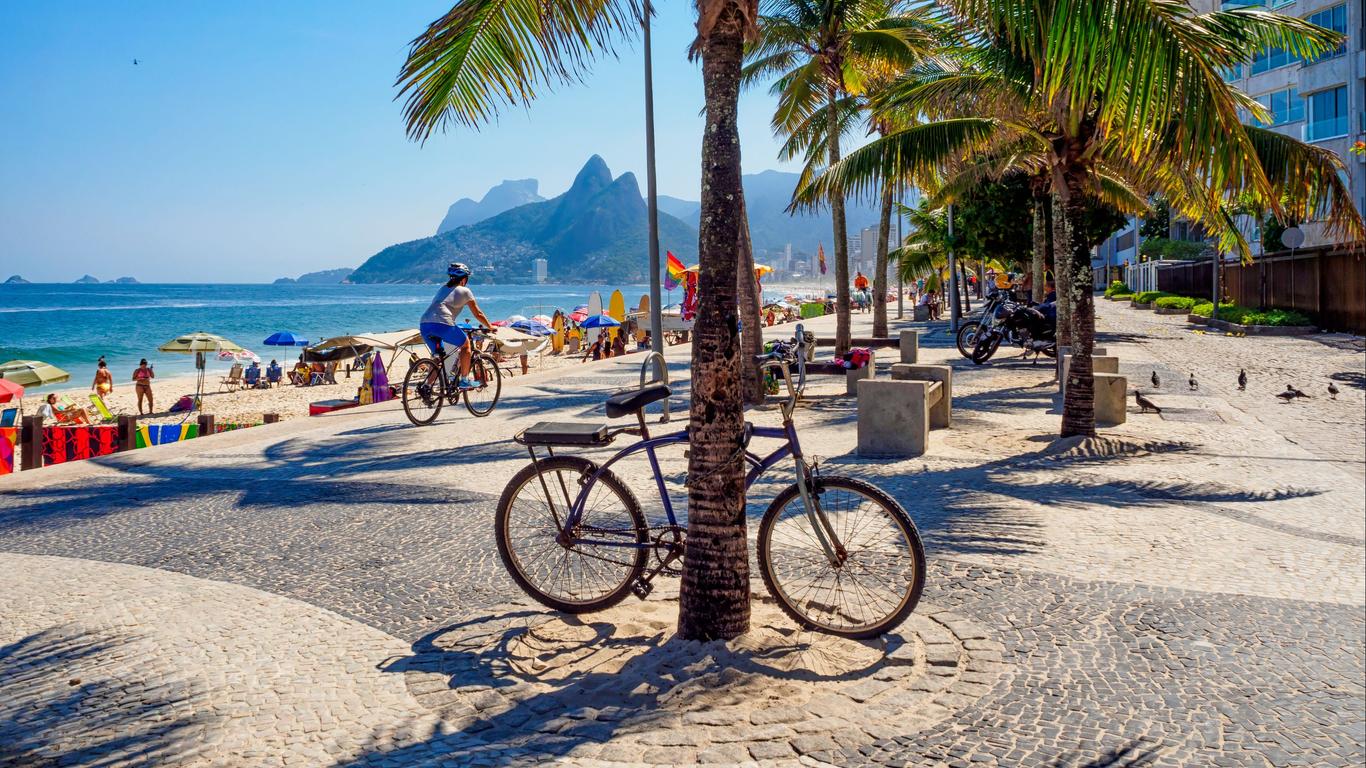
Vacations in Rio de Janeiro
Search hundreds of travel sites at once for vacation package deals in rio de janeiro.
Let KAYAK do the searching
Save on your next vacation
Search and compare hundred of travel sites at once for vacation packages in Rio de Janeiro
We’re completely free to use - No hidden charges or fees
Filter by free cancellation, free breakfast and more
Cheap Rio de Janeiro package deals
Most popular rio de janeiro flight and hotel deals, last minute vacation packages to rio de janeiro, search by stars, search by review score, search by board, search by price, search by freebies, when to book a vacation in rio de janeiro, tips for finding rio de janeiro package deals.
- There are loads of types of vacations in Rio de Janeiro and the cost will depend on what type of trip you’re taking and for how long you’d like to stay. Here are the latest prices for a 3 night trip for 2 travelers: Top vacation $519; Family vacation $519; Romantic vacation $717; Luxury vacation $726; Budget vacation $492.
Where to stay in Rio de Janeiro
Rio de janeiro vacation information, other popular package vacation destinations.
- Quintana Roo package vacations
- Phuket City package vacations
- Japan package vacations
- Thera package vacations
- Berlin package vacations
- Philippines package vacations
- Palm Springs package vacations
- Salt Lake City package vacations
- Liberia package vacations
The Unknown Enthusiast
22 Rio de Janeiro Travel Tips: Things to Know Before Going to Rio in 2024
Heading to Rio soon? You’re in luck! I’ve got the best travel tips for Rio de Janeiro to prepare you for a great vacation in Brazil.

Our six days in Rio de Janeiro were really like a dream – so many interesting things to see, do, and eat. I was really blown away by just how much I loved the city! For me, I think it was a combination of loving a bustling city, but also loving nature and beautiful viewpoints – and Rio delivers both in such a unique way!
However, being a country in South America, there are a lot of differences between traveling in Rio compared to traveling in the United States.
In this Rio de Janeiro travel guide, I want to talk about the best travel tips and important things to know before going to Rio de Janeiro, based on our experience there, and the advice given to me by my brother, who lived there for several years.
This post may contain affiliate links or refer a friend links. When you buy through these links, I may earn a bonus at no additional cost to you. Thank you for your support!
Rio de Janeiro Travel Tips
You’ll be on your way in no time! Let’s get into my 22 most important travel tips for a Rio de Janeiro vacation:
1. Purchase an E-Sim Card Before You Go
I’ve recently found a new way to get inexpensive, high speed data while traveling (something I love to have but has been annoying, expensive, or ineffective to procure).
Instead of purchasing a local SIM card (or renting a mobile hotspot) when arriving in a country, I’m now using an e-sim card from Airalo. I’ve used a lot of different methods in the past to get data when traveling internationally, and let me tell you, buying an e-sim card is EASILY the most affordable, fast, and convenient option.
E-sims are a relatively new thing, so before you purchase, you’ll need to contact your cell phone provider and have them unlock your phone for e-sim use.
Before you leave on your trip, purchase the amount of data that you need from the Airalo website . Then download the app, and when you arrive, toggle on the e-sim card, and that’s it! You can check how much data you’ve used in the app, and top up with more if necessary.
One of the most important things to know before going to Rio de Janeiro are some safety tips for the city. Safety was a big concern for us as we prepared to visit Rio. I’d often heard Rio described as an unsafe city, and I had talked extensively to my brother, who lived in Rio for a couple of years, about safety concerns.
Honestly, I had a decent bit of anxiety the 2 weeks before we left about our vacation. I was extremely worried about our phones getting snatched out of our hands, getting pickpocketed, getting my purse slashed, getting mugged, and just generally running into a lot of unsafe or unsavory situations.
I will say that we exercised much more caution than we normally do when traveling in Rio, and were a lot more aware than usual about our surroundings (of course, we’re always taking precautions and being aware, but it was definitely heightened in Rio), but we almost always felt perfectly fine and safe as we toured the city .
Still, learning about what precautions to take is an important thing to know before going to Rio de Janeiro and we’ll cover several safety topics in this Rio de Janeiro travel guide.
These are the safety travel tips for Rio I would recommend:
2. Avoid the Favelas…Unless You’re in a Tour
Favelas are crowded, very poor neighborhoods, usually built up into the hillsides of Rio. Favelas are all controlled by gangs or the mafia, where they sell drugs and machine guns are carried openly.
While doing a guided tour of a favela is totally safe (and was a really interesting and positive experience in Rio, I highly recommend it – read our full review of it here ), and the favelas in general can be relatively safe during the daylight hours, I would definitely still avoid them if you aren’t with a tour.
Gang invasions, shootouts, or police raids could take place during any time, day or night, and you’d have no idea it’s coming. The tourist favelas avoid this during the day because of the tourism, but any other favela is free game any time any day. So, outside of a tour, just play it safe and avoid the favelas!
My recommendation: Tour of the Dona Marta Favela (I would highly, highly recommend doing a guided favela tour during your time in Rio – it was safe and so interesting)
3 . Be Off the Streets After Dark

In general, don’t be walking on the streets after dark (which is about 6pm year round). As an international tourist, a good rule of thumb is if you need to go somewhere at dark, take an uber or taxi, or the metro if you’re walking less than a block to/from the stations to your destination.
Now, if you are in an area that is well lit and well-trafficked with people, then that is probably okay to be out and walking around. For example, one night after dinner we wanted to walk several blocks to a grocery store around 9pm.
At first, I was hesitant to be out walking, but then saw that our route was along a road with lots of cars, lots of light, and many other pedestrians out and about. That was a fine situation.
Conversely, another night we thought we’d do the same thing because it was only about a 10 minute walk to the restaurant we were going to. This time though, there was very little traffic and very few pedestrians, although it was well-lit and not that late (only around 7pm).
I felt like this situation was less safe and in retrospect would’ve gotten an uber (although we did walk right past the police precinct, so that did give some peace of mind).
4. Be Aware of Pickpockets and Phone Snatchers
Be very aware of pickpockets (or thieves snatching your phone out of your hand), particularly in areas like Copacabana, markets, or other touristy spots. If you are in a taxi or uber and your window is down, be aware that passing pedestrians, bikers, or men doing sales in the street when cars are stopped will sometimes grab phones right out of your hands in the car.
In general, just be careful with your phones. Ideally, don’t pull them out on the street. However, because we were always wanting to take pictures, we had our phones out a lot, and here’s what we did to try to be safe:
If we were walking around, I often kept two hands on my phone and kept it in front of my body. I also put a hand wrist strap lanyard on my phone case that went around my wrist, so it was somewhat attached to my body.
We tried to pay attention to our surroundings and not have the phones out conspicuously when there were people right by us.
As we were touring around Centro in particular, we saw a lot of police cars/officers out around the area, just parked and monitoring the area. This is for safety reasons, as a deterrent to crime, and we felt more secure walking around with that security present.
5 . Be Careful of Hiking Trails and Paths
Gangs will sometimes take over nature trails, and for a while the path from Parque Lage to the Christ the Redeemer statue had a whole bunch of muggings, so it was definitely a place to avoid.
When we visited Parque Lage, we noticed that there was a police officer at the trailhead, so that trail may be safer now, but I would still exercise a lot of caution if you plan to do any trails, never be out after dark, and ideally be in a group.
6. General Awareness
When traveling to Rio de Janeiro, it’s a good idea to generally be aware of your surroundings, keep a close eye (and hand) on your belongings, and just pay attention to what and who is around you.
Now, with all that said, I don’t think you need to be scared of Rio (the way I kind of was, haha). For example, I had read a couple of accounts where people said they didn’t go more than 10 minutes without running into a group of people or a scenario where they felt uncomfortable.
That was not our experience. In fact, we generally felt very safe as we walked around and toured Rio, particularly because we were following our safety guidelines. And the few times I did feel a little uncomfortable, we were able to quickly get somewhere I did feel safer.
I think that one of the good things to know before going to Rio is that, despite its reputation, with a few precautions you can have a safe and enjoyable trip.
Be situationally aware, have a plan of how you will get around and where you will be, and follow the above suggestions to maximize your chances of a great, safe trip.
7. Don’t Forget Travel Insurance
Securing some travel insurance is an important part of prepping for any international trip – you never know when something might happen, and your regular insurance generally won’t cover you overseas. Costs for a medical emergency on vacation can add up extremely fast, so it’s just better to be safe than sorry.
I felt a lot of peace of mind booking some travel insurance for Rio – I knew that even if something happened, we would still be covered.
I like booking insurance at Insure My Trip , as they offer a variety of plans with different coverages to choose from, so you can find the right option for you. Plus, they have great customer support if you need help before, during, or after your trip.
>> Check rates and get a no-hassle quote at Insure My Trip here!
8. Toilet Paper
One of the very important things to know before going to Rio de Janeiro is that the sewage system in Brazil (like many countries in south and central America) is not set up to handle toilet paper.
Instead of flushing it, you just stick it in the bathroom trash can.
9. Electricity
Brazil uses two types of electrical plugs: types C and N. Plug type has two round pins, and is also commonly used in a lot of Europe. Plug type N has two round pins plus a grounding pin. If you’re traveling to Rio de Janeiro from the US, you will need an adaptor to charge your electronics.
👉 My recommendation : I always travel with and recommend this type C plug adaptor set – it’s an inexpensive price for a 3-pack.
Brazil operates on a 127/220V supply voltage and 60Hz. We did not need to use any electrical converters for our electronics in Brazil (just the adaptors), as all our electronics are dual voltage rated. Most electronics these days are dual-rated, but if yours are not and you’re traveling from the US, you’ll also need a converter.
10. The Architectural Style of the City
Architecturally, Rio de Janeiro has a lot of variety. Centro is the historic center of the city, and you’ll see a lot of 19th century buildings with pretty design features.
Rio was the capital of Brazil for a few centuries and was the hub for the Portuguese crown before Brazil gained its independence from Portugal, So a lot of the architectural style comes from the European influence from Portugal during that time.
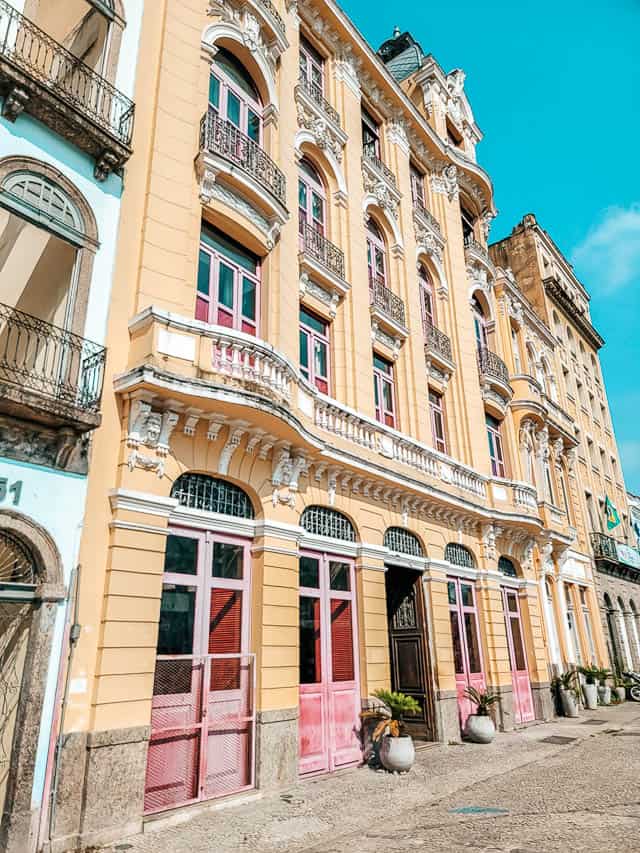
The Theatro Municipal was based off of the theater in Paris, for example. But there are also modern, futuristic designs as well, in the Museum of Tomorrow and the Metropolitan Cathedral.

Throughout Rio you’ll find colorful painted buildings.
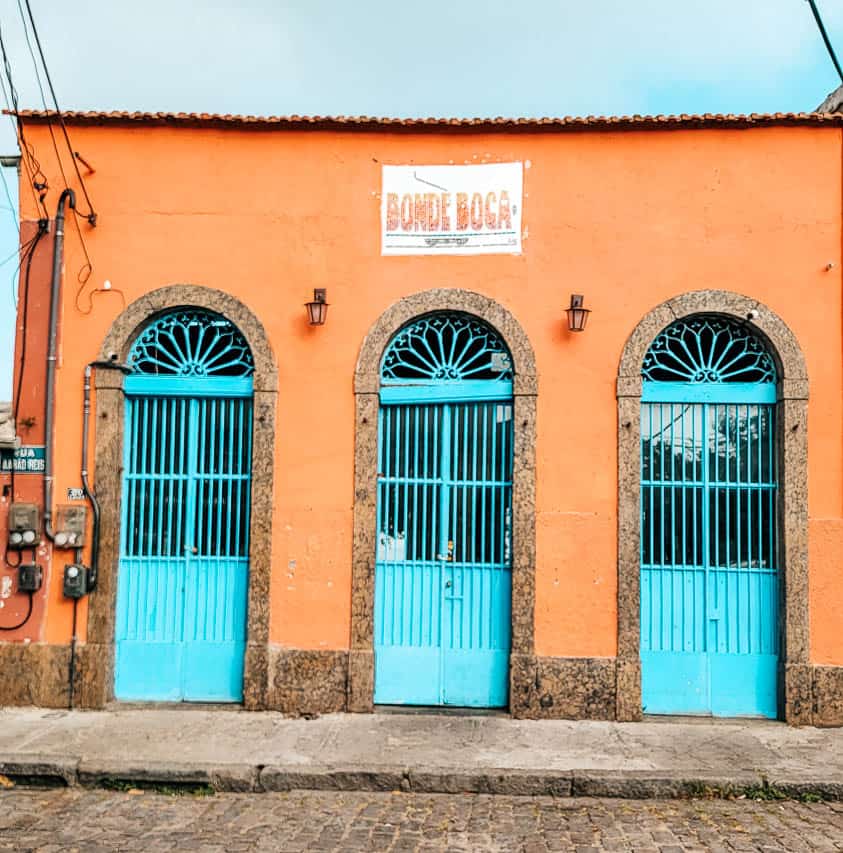
You’ll also find plenty of stark buildings or non-descript high rises.
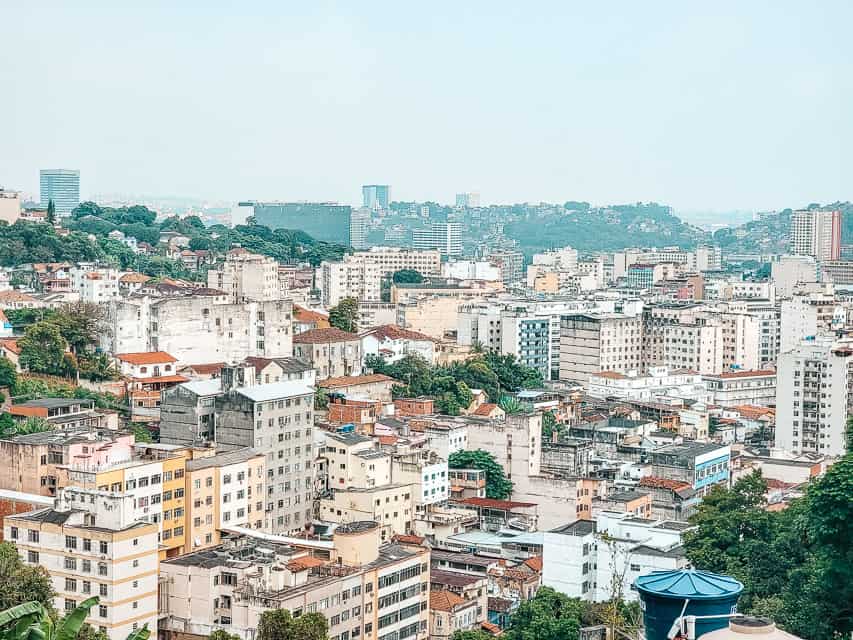
There are areas with a lot of graffiti, and some buildings have barbed wire around the exterior walls.

The Santa Teresa neighborhood is unique in Rio, with a very Bohemian vibe, tons of street art and the trolley that winds its way to the top of the hill overlooking the city.
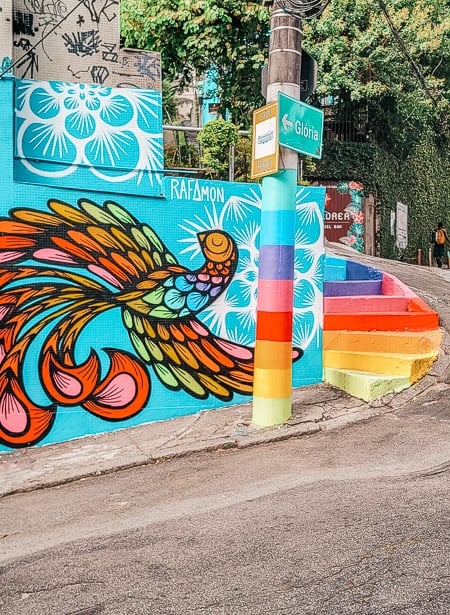
The favelas have their own style as well, with small, squat, painted houses stacked closely together as they climb up a hill.

And be sure to look down, too. There are frequent cobblestone streets and tiled sidewalks to enjoy.

You really get a range of so many styles in Rio! One of my favorite travel tips is to pay attention to all the different types of architecture you’ll see in Rio!
11. The Size and Geography of the City
One of the things to know before you go to Rio de Janeiro is that it is a very big city (over 450 square miles), and it feels particularly big due to its geography. Rio is right on the coast, but the coastline isn’t straight; you have curves and jutoffs and sudden turns.
Additionally, there are a TON of hills and mountains in the city, and the city just builds around (and sometimes up!) them.

So, you do have some navigating around hills to get places, or driving up the mountain to visit certain spots. The twists and turns (and density of the city) can make for slower transit at times.
12. Go to a Futbol Game… with a local!
Brazilians LOVE their futbol (soccer) and Rio de Janeiro has one of the biggest and most famous stadiums and futbol rivalries in the world. Going to a game at the Maracana stadium was high on our Rio bucket list, and I’m so glad we were able to do it.

My biggest travel tip for going to a futbol game in Rio is to go with a local! However, I will say, we got kind of lucky for getting to go. Despite our many attempts, we could not find a game schedule online, or information about where and how to get tickets.
We ended up just stumbling on a situation in Rio where a new, local friend we had met offered to let us come to the game with him, and he would help arrange the logistics.
This ended up being one of the craziest and most exciting travel experiences we’ve ever had. We joined up with all the friends of this Brazilian and the whole group went into the hardcore fan section that sits behind the goals.
People were packed in tight, standing up singing and cheering literally non-stop, drums beating, flags waving. It was a whoooole vibe, and we loved it.
Basically, I would highly recommend you go with a local, who will take you to the pre-party outside the stadium, and help you have the best experience during the game. Good news is this is an “excursion” you can actually arrange ahead of time! ⚽ Check prices and availability for this futbol match experience here!
13. Brazilian Coinage
Brazil’s currency is the Real, which is pronounced “hay-ahl”. The plural of real (reais) is pronounced “hay-ize.” The emphasis is on the last syllable (the “ahl” or “ize” part).
At the time of writing, one US dollar is worth about 5 reais. Most places around the city take card, but I would still plan to have cash on hand for things like bus fares, street food, or taxis.
14. Withdrawing Money
Be careful at ATMs on the street and exercise caution if there are other people around.
I would recommend withdrawing some money at the airport, but find the ATMs, not the exchange centers. We did try the exchange centers by baggage claim, but one only took cash (we only had our debit cards), and the exchange rate from the other one was basically highway robbery.
Quick Travel Tip : At the airport exit doors where you can get a taxi into Rio, there are some escalators that will take you up a level, and at the top there are some ATMs. These machines will give you a much better exchange rate, and you can use your debit card instead of cash. You can ask any employee or taxi driver where the ATMs are.
General Travel Tip: Whenever traveling in a foreign country, always have cashiers run your credit card in the local currency, not dollars (or whatever your home currency may be).
Sometimes you are given the option to choose between the two currencies on the screen if you are inserting the card yourself. You will get a better exchange rate by having your bank convert it, not the store.
Wondering what it costs to visit Rio? Check out our detailed Rio de Janeiro trip costs post here !
15. Best Areas to Stay in Rio de Janeiro
Figuring out the best area to stay is an important part of planning a trip to Rio de Janeiro, since, as we mentioned earlier, the city is very spread out, and some areas of the city are decidely more safe than others.
There are a few good areas that I would recommend to stay in Rio, based on where we stayed, what we experienced there, and other extensive research.
➡️ Santa Teresa
This was the area we ultimately ended up staying, and I was extremely happy with this choice. Santa Teresa is a quiet, artsy neighborhood that extends up a hill overlooking the city. There was a ton of street art and brightly painted houses in Santa Teresa, and the area felt very residential, and safe during the daytime hours.
The traffic was never bad in this neighborhood, and it was a quick and easy (and cheap) ride down into Centro, where a lot of sites are.
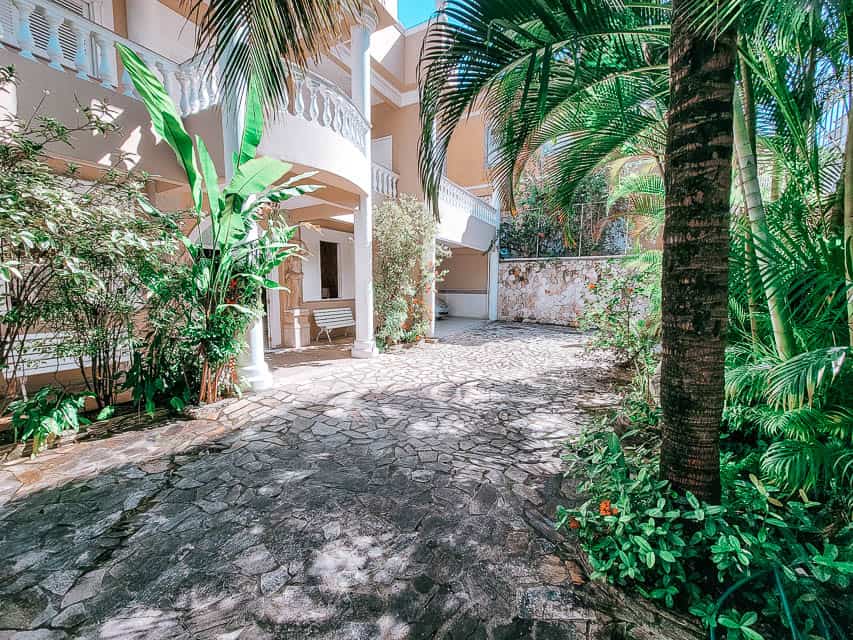
Recommended Hotel: Villa Franca I can highly recommend Villa Franca in Santa Teresa. It had a secure entrance, a beautiful courtyard, and a very relaxing lobby entrance that really felt more like the living area of a villa than a hotel reception area. The rooms were large and decorated nicely, and, very importantly, the wifi and air conditioning were strong, and the rooms had a good size mini-fridge. Check current rates for Villa Franca here!
➡️ Centro
Centro is a great area to stay in. It is more the “business” district of Rio, but it also has a lot of buildings that are beautiful, historic, and/or colorful.
There are a TON of things to see and do in Centro, and so staying in this area will be very convenient, as you’ll be able to walk to a lot of spots. It is a safe area, especially during the day. I would be careful and exercise caution at night, as there are some areas with more homeless people.
Lapa is the neighborhood right next to Centro, although we found the Lapa area to be just a little bit more dilapidated, and is known for having more crime. So while you can and should visit the sites in Lapa, just exercise a little more caution here.
Recommended Hotels: Windor Asturias Hotel This is a very comfortable hotel in the Centro district, not far from the Lapa attractions. It is within walking distance of many sites in the area! In addition, the hotel has a rooftop bar and pool, with beautiful views out over the bay. You’ll enjoy an extensive breakfast buffet every day, and of course, comfortable rooms and a helpful staff. Check current rates for the Windsor Asturias Hotel here!
➡️ Copacabana and Ipanema
Copacabana and Ipanema are the best areas to stay in Rio de Janeiro if you want to spend more time at the beach. Copacabana is a little more centrally located, while Ipanema is generally considered a nicer beach.
However, we found the beach at Copacabana to be really nice! I had heard that it was a pretty crappy beach, but I think it got cleaned up quite a bit before the Olympics in 2016. The water was nice and the sand, while there was some trash here and there, did not feel particularly dirty or gross. I would hang out at Copacabana again, no problem.
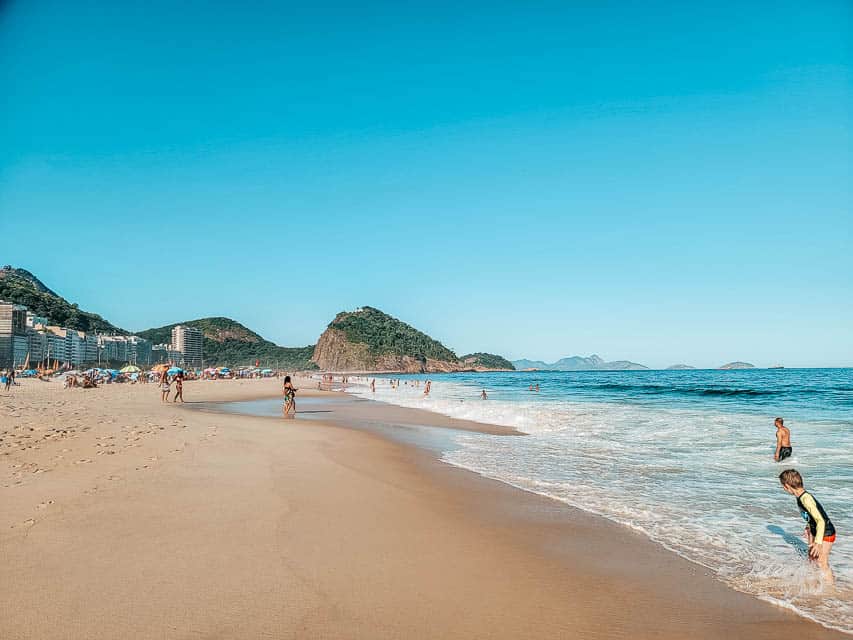
Ipanema is considered to be a more expensive area in the city, and also generally considered to be a little nicer than Copacabana.
Note that we did find the traffic to be heavier in this area (but as noted above, it is on a metro line, which is a plus).
Recommended Hotel in Copacabana: Velinn Reserva Copacabana The Velinn Reserva Copacabana is in an awesome location if you are wanting plenty of beach time, as it is just a couple blocks from both the Copacabana and Ipanema beaches. The hotel is clean and the staff is friendly, and the rooftop breakfast is a big highlight. Check current rates for the Velinn Reserva here!
➡️ Botafogo
Botafogo is a lively area situated between Copacabana and Centro. It’s a good, central location and generally considered a safe area to stay and visit in Rio. This neighborhood sits right on Guanabara Bay and at the foot of the super cool Sugar Loaf mountain.
We came to this area a few times for dinner and really liked it!
Recommended Hotel in Botafogo: O Veleiro Bed and Breakfast I love the cozy interiors in this B&B and the absolutely gorgeous garden courtyard area (with pool!). It’s a perfect retreat from the hustle and bustle of the city. The bedroom design feels like you’re visiting an old friend in Rio instead of staying in a hotel, and the views over the hills are excellent. Make sure you book a standard room (not economy) for the AC. Check current rates for O Veleiro here!
➡️Leblon
Leblon is the best area to stay in Rio de Janeiro if you want to be close to the beach, but in a nicer and quieter area than either Copacabana and Ipanema. The downside – it is a pricier area and farther away from many attractions. It can be a beautiful spot, though!
Recommended Hotel in Leblon: Sheraton Grand Rio Resort and Hotel If you’re staying in Leblon, it’s probably because you want that upscale beach experience, and the Sheraton Grand Rio definitely delivers. With an absolutely gorgeous pool and lush grounds directly overlooking Leblon Beach, you’ll enjoy luxury beach and pool days, with several on-site restaurants and spacious rooms with balconies overlooking the beach. Check current rates for the Sheraton Grand Rio here!
16. The Language
Portuguese is the official language of Brazil, and unlike many other tourist destinations in Europe, not many Brazilians speak English, even in tourist-facing locations. While there were some people who spoke English, most people did not.
We did learn a few Portuguese words and got along fine, but I do wish we had learned a few more common words and phrases before traveling in Rio de Janeiro (please, thank you, hello, goodbye, where are the bathrooms, I don’t speak Portuguese, the numbers 1-10, etc are some good ones).
Knowing some basic phrases before you go is a really useful step for visiting Rio de Janeiro.
I would also try to look up and practice pronunciation of any words you’ll learn, because pronunciation in Portuguese is not always how you think it’d be (we were really surprised with some of the pronunciation rules!)
A big travel tip for Rio : Plan to use Google Translate a lot!
Despite a big language barrier, we found that people were still very nice and willing to work with our pointing/miming/google translating. Most of the Brazilians we interacted with were extremely friendly!
17. Weather in Rio de Janeiro
Weather in Rio is either hot or VERY HOT. As Rio de Janeiro is in the southern hemisphere, seasons are opposite the US, with December being summer and June being winter.
Thus, hottest months in Rio are December, January, and February, with temperatures almost always above 100 degrees Fahrenheit (plus humidity!) Coldest months are June, July, and August, with average highs in the upper 70’s.
The rainy season is from December to March and the dry season from May to October, with April and November being transitional months. During the rainy season, you can either get rain showers in the afternoon (the kind of rain very common in tropical areas) or you can get all day downpours.
When we visited in the middle of March, the forecast showed high chances of rain and thunderstorms every day we would be there, but we ended up barely even having any clouds in the sky and no rain at all.
The average relative humidity stays very constant throughout the year, at about 78 to 80%. This is EXTREMELY humid!

18 . What to Wear in Rio de Janeiro
One of the big travel tips for visiting Rio de Janeiro is to plan on wearing wickable, breathable fabrics as you explore the city.
In hot weather, I prefer wearing breezy dresses (less things to stick to my body!). These are the ones I wore in Brazil:

This is the same dress in two different prints . I love it so much! It’s light and airy and perfect for Rio.

This red dress is amazing – it’s flowy and I’ve worn it all over the world. It’s available in a ton of colors.
This blue dress was a new purchase and I was so happy to inaugurate it in Rio.
A few other travel essentials for Rio include:

Super comfortable sandals : These are THE perfect travel sandal – cushy and with arch support, and feel great right out of the box. I have the “gold cork” option. My feet are always so happy in these shoes. Definitely worth the money!

Faux leather white sneakers : While you should break them in before your trip (ask me how I know that…), once broken in, they are a great walking shoe for long travel days. I’ve been extremely happy with these shoes.

Don’t forget to put on sunscreen everyday! The sun is intense in Rio, even if you’re not at the beach. With my acne-prone skin, I always wear t his sunscreen for sensitive skin , but Matthew likes using this sunscreen stick .

Portable Power Bank : This is an essential piece of gear for any travel day. You’ll certainly take plenty of pictures and videos as you explore Rio, and you don’t want your phone to die! This power bank charges 4 times and tells you the exact percentage of power left in the bank.
19. Tipping

Tipping is not expected or customary when traveling in Rio de Janeiro. A tip is already included in the bill.
20. Bottled Water vs Tap Water
One very important thing to know before going to Rio is that while the cleanliness of tap water in Rio has come a long way, it is still not guaranteed safe to drink. (We did use the tap to brush our teeth, and had no problems).
Bottled water is easy to find around the city, as there are stands, or even just people with a cooler, set up all over the city.
A more environmentally (and cheaper) option is to bring and use a water bottle with a built in filter, as you can refill from any faucet (or even a lake or stream) and have safe drinking water.
>> My recommendation : The Sawyer Filtered Water Bottle This bottle holds a good amount of water (34 oz) and is one of the absolute best and highest-rated water bottles. It filters out 99.99999% of bacteria and protozoa, and 100% of microplastics!
21. Sample Local Cuisine

Rio de Janeiro (and Brazil in general) has some unique and delicious cuisine that you should definitely try when visiting the city. Yes, the mainstay of Brazilian food is rice and beans, but dang those rice and beans are gooooood!
Brazil also has an abundance of unique, tropical juices, the most juicy pineapples I have ever tasted, and the most succulent, juicy barbecue I’ve ever had the pleasure of eating. And definitely don’t forget the pão de queijo!
>> Need some tips on what to eat in Rio? Get all the details on foods to eat and restaurants to try in Rio de Janeiro here!
22. How to Get Around
Having a plan for how to get around is another one of those important things to know before going to Rio. Thankfully, there are a lot of possibilities for transportation, and they are all very affordable.
Attractions are pretty spread out around the city, so we had to get transportation several times a day.
➡️ Metro

Rio’s metro system is very nice. One ride costs R$5 ($1), which is good for transfers within the metro system. I will say that the metro system does not go everywhere in the city, which is a big limitation.
But if you are close to a metro line, the metros are air-conditioned and clean, and it is a cheap, convenient, fast, and safe way to get around the city.
We only ended up taking the metro twice, as our hotel in the Santa Teresa neighborhood was not really close to any metro station.
However, if you are staying in Copacabana, I would definitely take the metro more frequently, as traffic seems to be worse in that area, and there is a line that takes you directly between Copacabana and Centro, where a lot of attractions are.
You can buy a ticket from the kiosks at the station. You can either buy a single ticket, or a longer term pass.
➡️ Bus
We only took the bus once, but it is another cheap and easy way to get around. The bus has many more routes than the metro does, but do beware – grab and run situations can happen on buses more, so just watch your stuff and phones closely.
We did find that taking the bus down from the Dona Marta viewpoint was necessary, as Ubers do not like to come all the way up to the summit for pickup. For this viewpoint, we took an Uber up, and then walked about 20 minutes back down the mountain to the bus stop, and took the bus back into the city.
You can pay with cash for a bus ride. One ride costs R$4.05 (<$1).
Quick Travel Tip: In Rio, when waiting for the bus, you’ll need to wave it down to stop for you.
➡️ Uber

We took a LOT of Ubers during our week in Rio – 30 to be precise. With an average cost of $4.30 per ride (and a total cost of $130 for the whole week), it was a very cheap and convenient way to get around.
In general, when traveling to Rio, I would recommend taking Ubers the most, with the exception of if you are right on a metro line, and then I would opt for metro over Ubers more often.
➡️Taxi
While the taxi fare quoted to us at the airport was a lot higher than what we paid for the Uber at the airport (more than twice the cost), we found that the two times we took taxis in the city, it ended up being about the same cost that was quoted to us by Uber (we did a quick check in the cab).
Still, I preferred the convenience of Uber a little bit more than taxis, as we put the address into the app, didn’t need cash, and didn’t have to try to hail a cab (not difficult, but still felt more convenient).
Just make sure that the cab resets the meter when you go and have cash on hand. The meter resets at R$5.90.
➡️ Light Rail
Rio has a brand new light rail system that debuted just ahead of the 2016 Olympic games. To date, there are 3 lines on the light rail. One ticket costs R$3.60 (about .72 USD)
One crazy thing is that the light rail runs right down a street that has some street market stalls on it. (I don’t think its exactly a part of the Uruguiana market, but it was adjacent to it).
We were in front of a table looking at some candy and, I kid you not, the light rail came less than a foot from where we were standing. I was literally like ‘Matthew do not move backwards at all or you will die.’
You can find a map of the public transport in Rio here .
➡️ Walking
You can definitely walk around parts of Rio during the day, but note that a lot of things are very spread out. There are, however, a lot of attractions in the Centro/Lapa areas that you can walk between, and you can certainly walk around Copacabana and Ipanema.
➡️ Biking

There are bike rental stands throughout the city, but I would hesitate to recommend biking solo in most parts of Rio, as the traffic is kind of crazy. On Copacabana and Ipanema, there is a dedicated bike lane separate from the pedestrian sidewalk and the road, and biking along there is really fun!
Download the Bike Itau app to locate and rent bikes throughout the city – you put your credit card information in, and then it’s an easy scan and go situation at the bike stations.
Final Thoughts on the Rio de Janeiro Travel Tips
I absolutely loved Rio de Janeiro – the bustling, vibrant city, the mountains and hills all around, the street food everywhere, the beaches and friendly people. My biggest Rio travel tips are to really enjoy the city and all the surrounding nature – Rio is such a fun and unique city!
Liked This Rio de Janeiro Travel Guide? Check Out These Other Articles:
- A Rio de Janeiro Travel Budget: What Does a Trip to Rio Cost?
A Rio de Janeiro Favela Tour Review
Pin for later.

Stephanie is the author of The Unknown Enthusiast. She's visited 21 countries and 37 of the 50 US states (but her first love will always be France). When she's not traveling, she enjoys reading, taking naps, playing games, eating popcorn, and spending time with her husband (Matthew) and 4 daughters. Stephanie lives in Alabama, USA.
Similar Posts

22+ Best Foods in Rio de Janeiro to Eat, Plus Best Restaurants

16 Incredible, Best Tours in Rio de Janeiro, Brazil

A Guide for Visiting Sugarloaf Mountain in Rio de Janeiro: 4 Different Options

17 Most Instagrammable Places in Rio de Janeiro, Brazil

Rio de Janeiro Travel Budget: What Does a Trip to Rio Cost? (2024)
Expedia Rewards is now One Key™

Rio de Janeiro Vacations from $1,253
Book a hotel + flight or car together to unlock savings.
- Things to do
I only need accommodations for part of my trip
- payments icon Better together Save up to $580 when you book a flight and hotel together*
- lob hotels icon Find the right fit With over 300,000 hotels worldwide, it's easy to create a perfect package
- lob packages icon Rest easy Plan, book, and manage your trip all in one place
Your Rio de Janeiro Vacation
There's lots to like about Rio de Janeiro, from its beaches to its lively atmosphere. When you're ready to spend a bit of time in this captivating city, our Rio de Janeiro vacation packages are calling your name. Christ the Redeemer , Sugar Loaf Mountain and Jornalista Mário Filho Stadium are just some of the attractions worth checking out during your trip to Rio de Janeiro. A couple of clicks is all it takes to create a tailor-made Rio de Janeiro vacation on Expedia.
The Latest Rio de Janeiro Vacation Packages
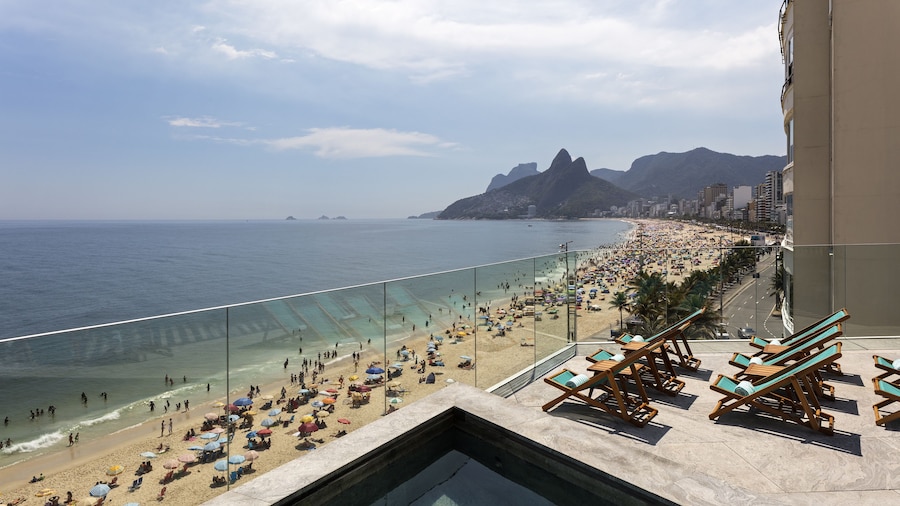
Hotel Arpoador
Reviewed on Mar 9, 2024

Emiliano Rio
Reviewed on Apr 6, 2024

CLIFFSIDE - Boutique Hotel & Spa
Reviewed on Aug 23, 2022

Sol Ipanema Hotel
Reviewed on Apr 10, 2024

Copacabana Palace, A Belmond Hotel, Rio de Janeiro
Reviewed on Apr 12, 2024
Where to stay in Rio de Janeiro
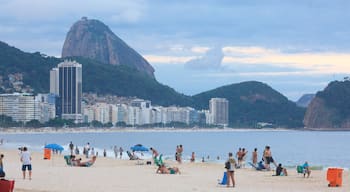
Famed for its 4 km balneario beach, this lively Rio de Janeiro neighborhood offers surfing at Arpoador Beach, historic Fort Copacabana, and the iconic promenade designed by Roberto Burle Marx. Enjoy numerous hotels, restaurants, and nightlife, with easy access via three subway Metro stations.

Barra da Tijuca
Boasting stunning beaches, lakes, and rivers, this upper-class neighborhood offers surf competitions, parachuting experiences, and tennis courts. Explore large modern malls, bars, and restaurants, while enjoying easy access to public transportation.
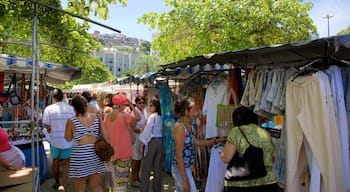
Surrounded by elegant development, Ipanema's beach boasts vibrant beach culture, with daily gatherings of surfers, sunbathers, and sports enthusiasts. Stroll along the grid-like streets to explore world-class restaurants, shops, and the bustling Ipanema Hippie Market.

Rio de Janeiro Centro
You might enjoy the museums while in Rio de Janeiro Centro. Saara Rio is a notable sight, and you can get around town at Tiradentes Tram Stop or Colombo Tram Stop to see more of the city.
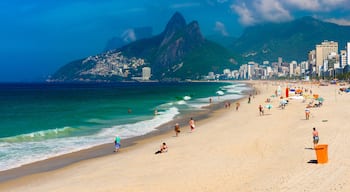
Wealthy and cosmopolitan, this South Zone gem boasts sights like Lagoa Rodrigo de Freitas, Morro Dois Irmãos, and Jardim de Alah channel. Enjoy lively nightlife with bars, restaurants, and nightclubs.
Rio de Janeiro Beach Vacation
Relax on the shore as you watch the sunlight flickering on the water on your Rio de Janeiro vacation. If you're craving the complete beach experience, a trip to Rio de Janeiro will definitely deliver. You've probably heard of Icarai Beach (4 miles (7 km) away). We recommend booking your hotel nearby. However, plenty of sightseers also choose Rio de Janeiro vacation deals closer to Recreio dos Bandeirantes Beach or Grumari Beach, two other magnificent nearby options.
Things You Should Know About Rio de Janeiro
- If you want to stay as close as possible to the shoreline, check out what's available at these Rio de Janeiro beach hotels . You're sure to find a place that suits your style.
- Apartments, like APARTAMENTO EM COPACABANA and Apartamento Ipanema Guinle I , are also popular property types here. Compare prices and amenities and take your pick!
- Dread endlessly pulling your wallet out on vacation? We hear you. With most things taken care of, our All-Inclusive hotels in Rio de Janeiro are the ideal solution.
- Our Rio de Janeiro things to do page is a good place to begin planning your getaway to Rio de Janeiro. After you arrive, get chatting to one of the 6,023,700 friendly locals to discover even more.
- Save on experiences by booking our Rio de Janeiro vacation deals. With fantastic attractions such as Christ the Redeemer to explore, this destination will keep you on the go.
Rio de Janeiro Essential Information
Rio de janeiro hotel deals.

Reviewed on Dec 22, 2023

Reviewed on Apr 4, 2024

Explore other types of vacation packages

All Inclusive Vacations

Beach Vacations

Kid Friendly Vacations

Golf Vacations
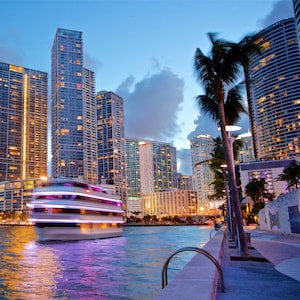
Luxury Vacations

Romantic Vacations
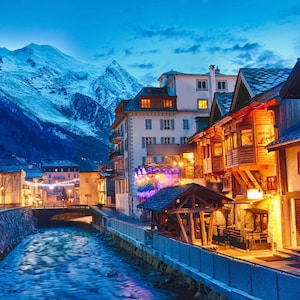
Ski Vacations

LGBTQ Friendly Vacations

Adventure Vacations

Where to go when
Frequently asked questions, discover the most popular places to visit in rio de janeiro, copacabana beach.
More than just a stretch of sand, Rio de Janeiro’s most famous beach is where locals and visitors from all over the world come to relax, strut, pose and play.
Christ the Redeemer
This mountain rising out of the city center is most well known as the home of Rio’s iconic skyscraper-sized Jesus statue.
Ipanema Beach
See the place that inspired a famous song about a bikini at this upscale beach.
What to do in Rio de Janeiro
Rio de janeiro: half-day rocinha favela walking tour, rio de janeiro: sightseeing helicopter flight, other vacations you might like.
- Rio de Janeiro Vacation Packages for any type of traveler
- Destinations similar to Rio de Janeiro
- Vacations from
- Best vacation destinations by month
- Expedia's Latest Trends
- Rio De Janeiro All Inclusive Vacations
- Sao Paulo Vacations
- Cartagena Vacations
- Buenos Aires Vacations
- Lima Vacations
- Florianópolis Vacations
- Bogotá Vacations
- Santiago Vacations
- San Andrés Vacations
- Vacations from Atlanta
- Vacations from Austin
- Vacations from Boston
- Vacations from Chicago
- Vacations from Dallas
- Vacations from Houston
- Vacations from Las Vegas
- Vacations from Los Angeles
- Vacations from Miami
- Vacations from New York
- Vacations from Orlando
- Vacations from Philadelphia
- Vacations from Phoenix
- Vacations from Pittsburgh
- Vacations from Seattle
- Vacations from Washington
- January Vacations and Deals
- February Vacations and Deals
- March Vacations and Deals
- April Vacations and Deals
- May Vacations and Deals
- June Vacations and Deals
- July Vacations and Deals
- August Vacations and Deals
- September Vacations and Deals
- October Vacations and Deals
- November Vacations and Deals
- December Vacations and Deals
- Work With Me

- Central America
- South America
- Solo Travel
- Budget Travel
- Digital Nomad Life
- Work Exchange
- Foodie Experiences
- Responsible Travel
- Winter Travel
- Backpacker Accommodation
- Accommodation In the UK
- Hostel Tips
- Hostel Packing List
- Work as a Hostel Volunteer
- Work in Exchange for Accommodation
- Travel Websites to Book Your Trip
- Travel Planning Checklist
- How to Travel for Free
- How to Save Money While Travelling
- Carry On Packing List
- Long Haul Flight Essentials
- Campervan Packing List
- Flight Tips
- Solo Travel Tips
- Accommodation
- Travel Insurance
- Packing Lists
- Eco-Friendly Travel Products
- Carry On Backpacks
- Backpack Essentials
- Filter Water Bottles
- Camera Gear
- Camping Gear
- Gifts for Travel Lovers
- Backpacking Gifts
- Hiking Gifts
- Campervan Gifts
- Beach Gifts
- Personalised Travel Gifts
- Small Travel Gifts
- World Map Gifts
- Gift Experiences
- Privacy Policy
Backpacking in Brazil
Essential tips for travel to rio de janeiro brazil.
Planning a trip to Rio and need some tips? I’ve got you! Rio de Janeiro, Brazil, is one of the most popular destinations in South America. Known for its stunning beaches, vibrant culture, and rich history, as well as the incredible Carnival, Rio de Janeiro is a must-visit destination for anyone travelling to Brazil or the whole of South America. Whether you’re backpacking Brazil or planning a once-in-a-lifetime trip, these Rio de Janeiro tips will help you to have an amazing time!
This website contains sponsored and affiliate links. If you click through the links on this page and make a purchase, I may earn a small commission. As an Amazon Associate I earn from qualifying purchases. Thank you for your support. [Learn more]
The Best Time to Visit Rio de Janeiro
The high season for tourism in Rio de Janeiro is from December to March, with peak crowds and prices to match. Carnival takes place in February or March, and I had a fantastic time in Rio during Carnival, but it did mean that the city and other attractions were very busy.
The low season is from May to September, with fewer crowds and lower prices so that is the best time to visit Rio de Janeiro if you are on a budget, but some attractions and restaurants may have reduced hours or be closed.
Rio de Janeiro has a tropical climate, with warm temperatures year-round. The hottest months are December to February, with temperatures averaging around 30°C (86°F). The rainy season is from December to March, but showers are usually short and infrequent.

Flights to Rio de Janeiro
Rio de Janeiro has two airports: the Galeão International Airport (GIG) and the Santos Dumont Airport (SDU). Galeão International Airport is the larger of the two and is the main international airport serving Rio de Janeiro. Santos Dumont Airport is located closer to the city centre and is primarily used for domestic flights.

Book Your Flights
- Use Skyscanner to find cheap flights to your destination. Being flexible on dates and departure airports can save you money, so check to see what works best for you.
- Public buses or trains (or walking!) are the cheapest ways to get to your accommodation from the airport, but a shared shuttle transfer is quicker and easier. >>>Check out options for airport transfers on GetYourGuide.
- Try Omio for booking trains and Busbud (or Flixbus in Europe) for buses.
Rio is well-connected to other cities in Brazil by bus – Sao Paulo is just over 6 hours away by bus. Long-distance buses in Brazil are generally comfortable and great value, but as Brazil is such a big country it can take a while to get around on buses!
Brazil Visa Requirements
Most visitors to Brazil will require a travel visa to enter the country. However, citizens from certain countries, including the United States, Canada, Australia, the UK and Japan, are exempt from visa requirements and can stay in Brazil for up to 90 days without a visa.
It is important to check the visa requirements for your specific country before travelling to Rio de Janeiro. Make sure that your passport is also valid for a minimum of 6 months from the date of entry into Brazil.
The Best Things to Do in Rio de Janeiro
Experience carnival in rio.
If you’re able to plan your trip to include visiting Rio de Janeiro during Carnival, you will get to experience one of the biggest street parties on the planet, and have an incredible time.
The main parade takes place in the Sambadrome where you can watch as the top Samba Schools in Rio compete with elaborate floats, colourful costumes and dancers. Tickets for the best seats sell out quickly, but being anywhere in the stadium is a magical experience.
As well as the parade there are street parties known as blocos which take place across the city. They’re great fun but of course get crowded and can get rowdy, so it’s best to visit with a group if you can. Staying at a hostel or joining a tour is a good way to make friends and enjoy the party atmosphere.

Visit Christ the Redeemer
Christ the Redeemer, one of the most famous landmarks in Brazil, is a must-visit attraction in Rio de Janeiro. This iconic statue is located on top of Corcovado Mountain and offers stunning views of the city on a clear day. People usually take the Corcovado Cog Train or a shuttle bus to the top to see the statue up close.
It is also possible to hike to the top of the mountain, however, muggings and attacks on the trails are not uncommon so I don’t recommend that option.

Explore Copacabana Beach
Copacabana Beach, located in the south of Rio de Janeiro, is one of the most famous beaches in the world. This two-and-a-half-mile stretch of white sand is the perfect place to relax, soak up the sun, and enjoy the beautiful scenery. There are also many bars, restaurants, and shops along the beach, making it a popular destination for both tourists and locals.
See the Escadaria Selaron
The Selaron Steps are the most colourful steps you’ll ever see, and are the work of Chilean artist Jorge Selaron. The steps are decorated with different colours and designs of ceramic tiles. Selaron began the project in 1990 as he lived in the neighbourhood and wanted to give something to the community he loved, so he began gradually adding tiles to the steps.
As he continued his work, the stairs became famous and people from all over the world brought tiles from their countries to donate to the staircase. Sadly, in 2013, Selaron was found dead at the bottom of the stairs, his body covered with burns. Some speculate that he killed himself, others that he was murdered.
Either way, come and enjoy the colourful steps, but spare a thought for the artist as you enjoy them. Without his dedication, this iconic Rio landmark wouldn’t be here today!

Discover the Samba Scene
Samba is a lively and energetic Brazilian dance that is an integral part of the country’s culture. Rio de Janeiro is home to some of the best samba schools in the world, and even if you can’t make it to Rio Carnival, you can still experience the excitement and energy of a samba performance by attending a samba school rehearsal or visiting one of the Rio’s many samba clubs.
Visit the Tijuca National Park
The Tijuca Forest is the largest urban forest in the world and is home to an abundance of wildlife and plant species. You can explore the forest on foot, by bike, or by jeep, and enjoy the stunning views of the city from the top of the mountain.
Take a City Tour
Taking a city tour is a great way to explore Rio de Janeiro and learn about the city’s rich history and culture. There are many tour operators in the city that offer guided tours of the main attractions, including Christ the Redeemer, Copacabana Beach, and the Tijuca Forest.
Try the Local Cuisine
Rio de Janeiro is home to some of the best food in Brazil, and this means you should take advantage of the opportunity to try local dishes such as feijoada (a stew made with black beans and meat), churrasco (barbecue meat), and brigadeiro (a popular Brazilian dessert).
There is some excellent street food in Brazil as well, which is cheap and delicious! My favourites were coxinha (large croquettes filled with chicken and cheese), pastel (deep-fried pasties filled with meat, cheese or prawns), and pão de queijo (cheesy bread balls).
As for drinks, caipirinha is the national cocktail made with cachaça, lime, and sugar. They are strong but definitely worth a try! The high sugar content can lead to a monster hangover though…

Sunset at Sugar Loaf Mountain
One of the highlights of my trip to Rio was taking the cable car up to the top of Sugar Loaf Mountain to watch the sunset. There is a bar and restaurant at the top, so we had a caipirinha as we watched the sun drop lower in the sky and the city lights start to twinkle. It was fabulous!

Experience the Nightlife
Rio de Janeiro is known for its buzzing nightlife, with many bars, clubs, and restaurants staying open until the early hours of the morning. Lapa is one of the city’s most famous nightlife districts, where you can enjoy live music, dancing, and delicious food and drink. Be careful of your belongings here though, and never leave your drink unattended!
If you’re a solo traveller then joining an organised pub crawl is a great way to have a night out with the safety of a group. Hostels will often arrange events like this or check out this pub crawl on GetYourGuide .
Take a Favela Tour
I have included a favela tour as it is one of the most popular things to do in Rio, but think carefully before you book one. Favelas are poor neighbourhoods that are usually unsafe for tourists to visit due to gang violence and drug problems, but some are offering tours with locals so you can experience what life is like in a favela and provide an income for them.
I found the tour I took to be interesting but it also felt a bit strange to be led around people’s homes and at times it did feel exploitative. It is a hard balance between providing income that can help families living here, and taking advantage of people. Have a read of my thoughts about my favela tour here. Looking for more things to do in Rio de Janeiro? Check out the most popular tours and activities in Rio de Janeiro that you might be interested in:
Where to Stay in Rio de Janeiro
Rio de Janeiro has many accommodation options to suit all budgets, from luxury hotels to budget hostels. The best areas to stay in Rio de Janeiro are Copacabana, Ipanema, and Leblon, all of which are located close to the city’s main attractions, including the beaches, restaurants, and nightlife.
The areas of Ipanema and Copacabana are popular areas in Rio for tourists. Lapa is great for nightlife and has lots of good value hostels too. Leblon is also great for being close to the beach and metro lines for getting around the city.
Hostels in Rio de Janeiro
Hostels are a great option for accommodation in Rio de Janeiro, especially for solo travellers as you can easily meet people to go out with. Partying in Rio is always better with other people! There are plenty of party hostels in Rio, but if you prefer something a little more chilled out there are options for you too.
Take a look at the highly rated Books Hostel in Lapa or the Pura Vida Hostel for an idea of what’s available. Check all hostels in Rio on Hostelworld here .
FIND A HOSTEL IN RIO
Hotels in Rio de Janeiro
If you have a higher budget you might prefer to look at hotels in Rio de Janeiro, like the good value Casa Beludi or Gerthrudes Bed & Breakfast with an outdoor pool and wonderful views of the city.
FIND A HOTEL IN RIO
Airbnb in Rio de Janeiro
Alternatively, check the options on Airbnb in Rio de Janeiro, like this flat in Copacabana with a gorgeous sea view .
Safety in Rio de Janeiro
Many people wonder if Rio is safe to visit . Rio de Janeiro has a reputation for being unsafe, but with the right precautions, it is possible to have a safe and enjoyable trip.
Always be aware of your surroundings, avoid walking alone at night, and keep valuables safe. It is also a good idea to use licensed taxis and avoid taking public transportation at night. >>>Read more Rio safety tips here.

General Rio de Janeiro Travel Tips
Learn some portuguese.
Although many people in Rio de Janeiro speak English, it is a good idea to learn some basic Portuguese phrases before travelling to the city. This will help you communicate with locals and make your trip more enjoyable – even a few words like hello, please and thank you can make a huge difference to how people react to you!
Dress Appropriately
Lightweight clothing and comfortable shoes are essential for exploring Rio, and swimwear is a must if you plan to spend time at the beach. It is illegal to go topless in Brazil, so make sure you wear a bikini even if it just covers the essentials! If you do want to sunbathe nude, Praia do Abricó is the only nude beach in the city.
Bring Sun Protection
Rio de Janeiro is known for its hot and sunny weather, so it is important to slather on sunscreen to protect your skin from the sun’s harmful rays. Wear a wide-brimmed hat and sunglasses to keep your eyes shaded too.
Prevent Mosquito Bites
Unfortunately, there are a lot of mosquitoes in Brazil, and in Rio. While mosquitoes are more common where there is standing water (in forest areas and in favelas), they can be found everywhere, and they carry all sorts of horrible diseases you don’t want to get – including Zika, Dengue fever, yellow fever and malaria.
Use insect repellant and wear long-sleeved clothing to keep your arms and legs covered. If you do get mosquito bites, this handy little gadget can help to prevent itchiness , and use a cream or spray to calm the itch.

Explore More of Brazil
I loved Rio, but there is far more to explore in Brazil than this one city. Sao Paulo is another fabulous city to visit, Paraty is a lovely little town and of course, the natural wonders of Iguazu Falls and the Amazon Rainforest are more reasons to visit Brazil. Check out my top picks for where to go in Brazil here.
I hope these Rio de Janeiro travel tips have helped you to plan your trip to Rio! Travelling to Rio de Janeiro is an exciting and at times overwhelming experience so if you need any more Rio tips just let me know and I’ll do my best to help!
Hi! I'm Claire Sturzaker, a 30-something foodie traveller who loves to enjoy the best of a destination without breaking the bank. I'm here to help you and all women backpackers to plan their best budget travel adventure. I am an avid supporter of female solo travel, and took my first solo trip 20 years ago! I love to write about travel, hostels, backpacking and van life.
Leave a Reply
Your email address will not be published. Required fields are marked *
Nomadic Matt's Travel Site
Travel Better, Cheaper, Longer
Rio de Janeiro Travel Guide
Last Updated: August 30, 2023
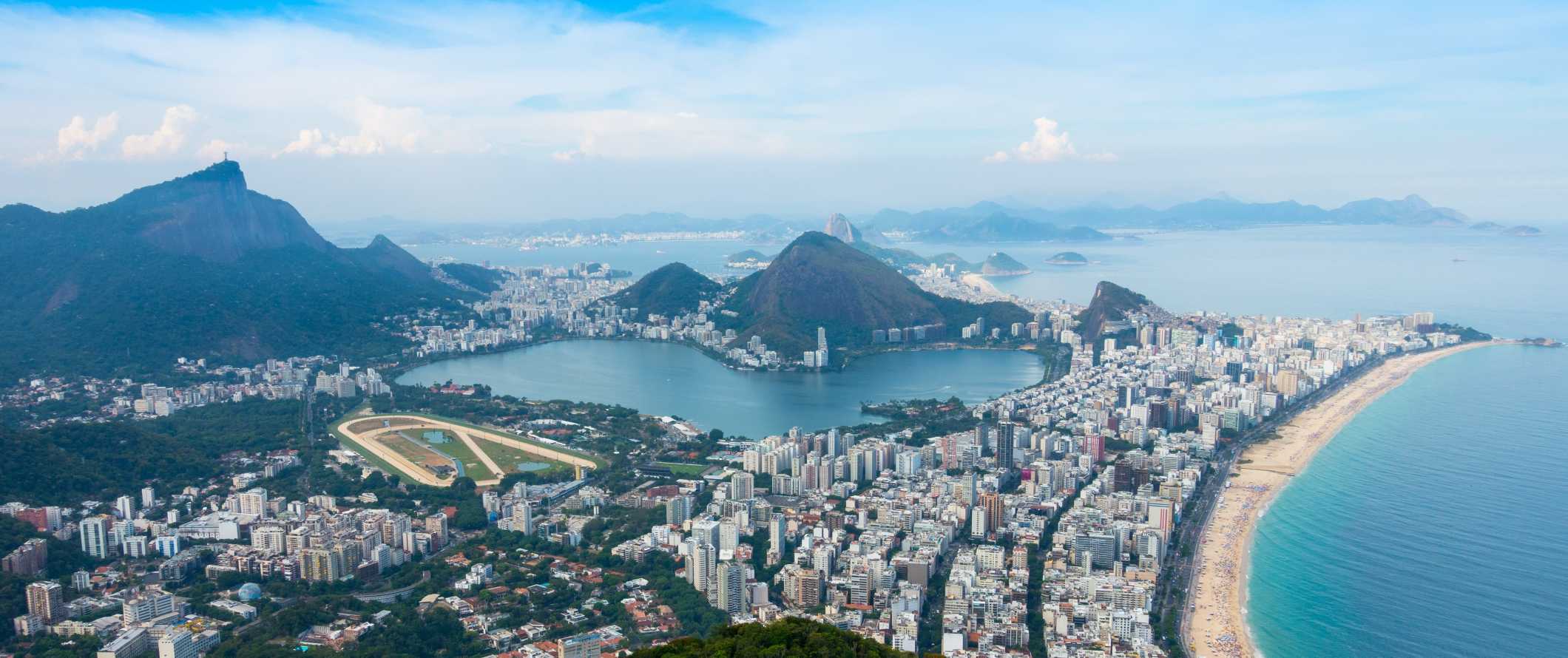
From the world-famous beaches of Copacabana and Ipanema to the magnificent summit of Corcovado, topped with the legendary Wonder of the World Christ the Redeemer, Rio combines big natural attractions with a sprawling metropolis. Home to over 12 million people, it should come as no surprise that it’s one of the most popular destinations in the world.
Founded by the Portuguese in the 16th century, Rio de Janeiro caters to every type of tourist and budget, popular with backpackers, Carnival revelers, and luxury vacationers alike. It’s an exciting city that has a lot to offer — so don’t rush your visit. There’s too much to see, especially when you factor in all those lazy days at the beach!
While petty theft and crime are a big concern here (you’ll want to avoid walking around alone at night), with a little vigilance you’ll be able to enjoy your time in this vibrant city without too much worry.
This travel guide to Rio de Janeiro can help you save money, stay safe, and ensure you have a wonderful visit.
Table of Contents
- Things to See and Do
- Typical Costs
- Suggested Budget
- Money-Saving Tips
- Where to Stay
- How to Get Around
- How to Stay Safe
- Best Places to Book Your Trip
- Related Blogs on Rio de Janeiro
Top 5 Things to See and Do in Rio de Janeiro
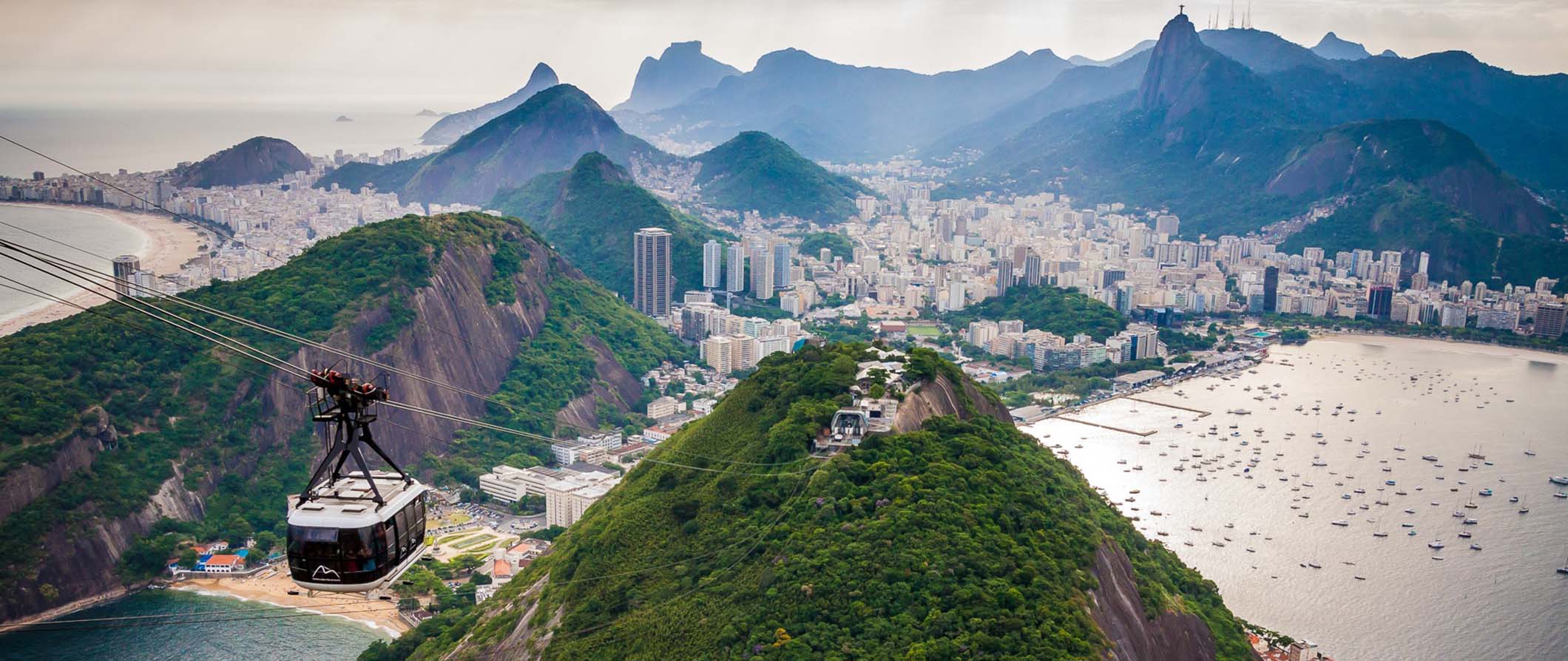
1. Celebrate Carnival
The Rio Carnival is one of the most famous festivals in the world, with people coming together from all corners of the globe to see the parade, listen to samba music, dance in the streets, and party for days. The city comes alive as thousands of people celebrate in bright, exotic regalia. You can reserve your 2024 Carnival tickets in advance here (highly recommended – they sell out quickly)!
2. Climb Sugarloaf Mountain
The famous Sugarloaf Mountain is one of the city’s most popular tourist destinations. Its name dates to the 16th century (the height of Brazil’s sugarcane trade), named for its resemblance to a conical block of sugar. The mountain is 396 meters (1,300 feet) tall, and at its peak, the entire city unfolds below you with spectacular views of Ipanema and Guanabara Bay, especially at sunset or sunrise. The cable car to get there costs 150 BRL ( reserve online in advance to skip the often super long lines).
3. See Christ the Redeemer
The 30-meter (100-foot) high statue of Christ the Redeemer sits atop the Corcovado Mountain and can be seen from any point in Rio. From its vantage point, you can take in the mountains, the bay, and the entire cityscape from the favelas to the skyscrapers. It’s an incredible Wonder of the World! You can get there a few different ways: via cog train (that goes through the rainforest), shared vans that leave from designated points around the city, or by hiking the (quite steep) trail to the top (though for safety reasons, it’s not recommended to do the trail alone). You can reserve advance tickets for the train and statue here (155 BRL).
4. Hit the beaches
Ipanema and Copacabana are the two largest beaches, and they’re always jam-packed with people. Ipanema has more upscale restaurants and nightlife, while Copacabana has more things to do (like fishing, surfing, and beachside markets selling handicrafts and swimwear). For quieter spots, check out Barra de Tijuca Beach, Prainha Beach, or Leme Beach (at the further end of Copacabana Beach).
5. Watch a fútbol game
Other things to see and do in rio de janeiro, 1. visit the botanical gardens.
For a moment of calm, head to the city’s botanical gardens. Walk along the meandering paths and trails or take a free guided tour of the gardens. This place is home to over 8,000 plant species, designed in 1808 by order of the Prince Regent Dom João. Highlights include a lake filled with enormous Vitória Régia water lilies, an enclosed area with over 600 species of orchids, and a carnivorous greenhouse filled with Venus flytraps and pitcher plants. The gardens get super busy with families on the weekends, so come during the week. Admission is 67 BRL.
2. Wander the Rio de Janeiro Zoo
If your travels don’t include a trip to the Amazon, you can still experience Brazil’s indigenous animals at the Rio City Zoo. Over 1,300 animals from 350 species live here, including many rare and endangered native species such as harpy eagles, maned wolves, golden-headed lion tamarins, anteaters, and more. There’s also a particularly impressive reptile house and open aviary with macaws, toucans, and tropical birds flying freely around. Admission costs 47 BRL.
3. Learn the samba
You’ll hear samba music playing endlessly around Rio, especially during Carnival. Rio de Janeiro is one of the best places in Brazil to learn how to dance. Rio Samba Dancer is my favorite for its all-levels group classes, especially for the classes combined with social outings to samba clubs. Classes start from about 105 BRL.
4. Go to Paquetá Island
Paquetá Island in Guanabara Bay is a favorite with locals for escaping the hustle and bustle of the city center on weekends. The island is an hour-long ferry ride from Rio, and it’s made up of mainly beaches and quaint colonial towns. Transportation around the island is only by foot, bicycle, or horse-drawn carts. There’s not a lot to do here, but that’s kind of the point. The ferry costs 6.50 BRL one-way.
5. Ride the Santa Teresa tram
This tram has been running through the Santa Teresa neighborhood since 1877, making it the oldest electric railway in Latin America. It has always followed the same route from the city center, across the Lapa Arches, and passing by Ruinas Park overlooking Rio. The tram is open-sided, meaning you can lean out over the arches (a narrow former aqueduct) as you cross them – it’s a dizzying view! A return ticket on the 6-kilometer (3.7-mile) route is 20 BRL.
6. Visit the Selaron Stairway
Located in the Santa Teresa neighborhood, this stairway has hundreds of steps all painted with more than 2,000 pieces of colorful tiles, mosaics, and mirrors. Starting in the early 1990s, artist Jorge Selarón began gathering contributions from artists in 60 different countries. He also visited antique shops and trash heaps to find pieces to add over time, working on the staircase’s construction for over 20 years until his death in 2013. It’s one of the most photogenic and popular sights in the city (you’ve probably seen it on Instagram) so don’t miss it!
7. Explore the Arcos da Lapa district
For those of you who love the nightlife, this is an awesome district to head out to on a Friday night. Bars, clubs, and food stalls dominate the area, and street parties run from the famous arches up Avenida Mem de Sá. For live music, go to Circo Voador, an open-air concert venue primarily featuring Brazilian bands and artists. If you want to experience the club scene, check out the three-story Rio Scenarium. If you’re not into partying at all, admire the photogenic Arcos de Lapa (Lapa Arches). These arches date back to the mid-18th century and were once used as aqueducts.
8. Visit Sitio Roberto Burle Marx
This home and World Heritage Site belongs to one of Brazil’s most celebrated landscape designers, Roberto Burle Marx. Begun in 1949 and developed over the course of over 40 years, this 100-acre property features over 3,500 tropical and subtropical plant species. Inside the Burle Marx House Museum is a huge collection of his personal artwork as well as a 17th-century Benedictine chapel. Tours cost 10 BRL and are available by appointment only.
9. Visit the São Bento Monastery
Built between 1617-1641, this colonial Baroque church is located on Morro de São Bentois (St. Benedict Hill) in downtown Rio de Janeiro. Although the exterior is simple, the inside is covered in gold decoration, wood carvings from Frei Domingos da Conceição and Alexandre Machado, and paintings from José de Oliveira Rosa. The monastery is still in operation today, and if you attend Sunday mass, you’ll get to hear some traditional Gregorian chanting. Just be sure to dress respectfully as it is a place of worship.
10. Hike in Tijuca National Park
Tijuca National Park is the largest urban rainforest in the world, stretching across 8,300 acres. Over 350 different species of mammals, birds, and reptiles make their home here, including howler monkeys, which only came back to the park recently after a 100-year hiatus. The Corcovado (Christo) hike through Parque Lage and to the top of Corcovado is a steep climb, but it’s shaded and only takes about three hours. Another scenic hike is to Tijuca Peak, starting in Rio’s North Zone and past waterfalls and dense rainforest. You’ll get views over Niteroi and Guanabara Bay, and it only takes about two hours to complete. Entrance to the park is free. This is a place where it’s really worth it to go with a tour though. You’ll not only have a more in-depth experience, learning history of the rainforest as well as how to recognize native flora and fauna, but get round-trip transportation to/from your accommodation as well. There are tons of tours available, from the popular jeep tours to full-day adventure hikes that go to lesser visited sections of the rainforest.
11. Go to the Ilha Fiscal
A little outside Rio’s city center is Ilha Fiscal, a Neo-Gothic castle on a secluded island in Guanabara Bay. It used to be a location for the Brazilian Custom Service but is now a work of architectural art, with mosaic floors, stained glass, and a traditional Ceremonial Room used by the Navy. You can only access the island by schooner and bus from the Naval Museum. Admission to the Naval Museum is free, while a return ticket to Ilha Fiscal is 42 BRL.
12. Visit the Museum of Tomorrow
The Museum of Tomorrow (Museu do Amanhã) is a science museum that focuses on ecology, sustainability, and the future of our planet. Ultra-sleek and modern, the Museum of Tomorrow has high-tech visuals and simulators that let you consider the world’s past, present, and future. Although it might sound depressing, it’s incredibly well-curated, and the whole experience is captivating. Admission is 30 BRL.
13.Take a walking tour
Walking tours are my favorite way to get my bearings in a new place. Free Walker Tours and Rio by Foot both offer free walking tours through a variety of different Rio neighborhoods, as well as paid tours such as food tours, pub crawls, and rainforest tours. If you’re taking a free tour, just be sure to tip your guide at the end!
14. Explore Rio by Bike
Because of Rio’s geography, stretching along the coast between the ocean and the mountainous rainforest, the city can take some time to get around. You can cover a lot of ground by biking along the beach and through different neighborhoods on the many kilometers of dedicated bike lanes in the city. You can either explore on your own or with a local guide on a tour with Rio by Bike .
For more information on other cities in Brazil, check out these guides:
- Fernando de Noronha Travel Guide
- Florianopolis Travel Guide
- Sao Paulo Travel Guide
Rio de Janeiro Travel Costs
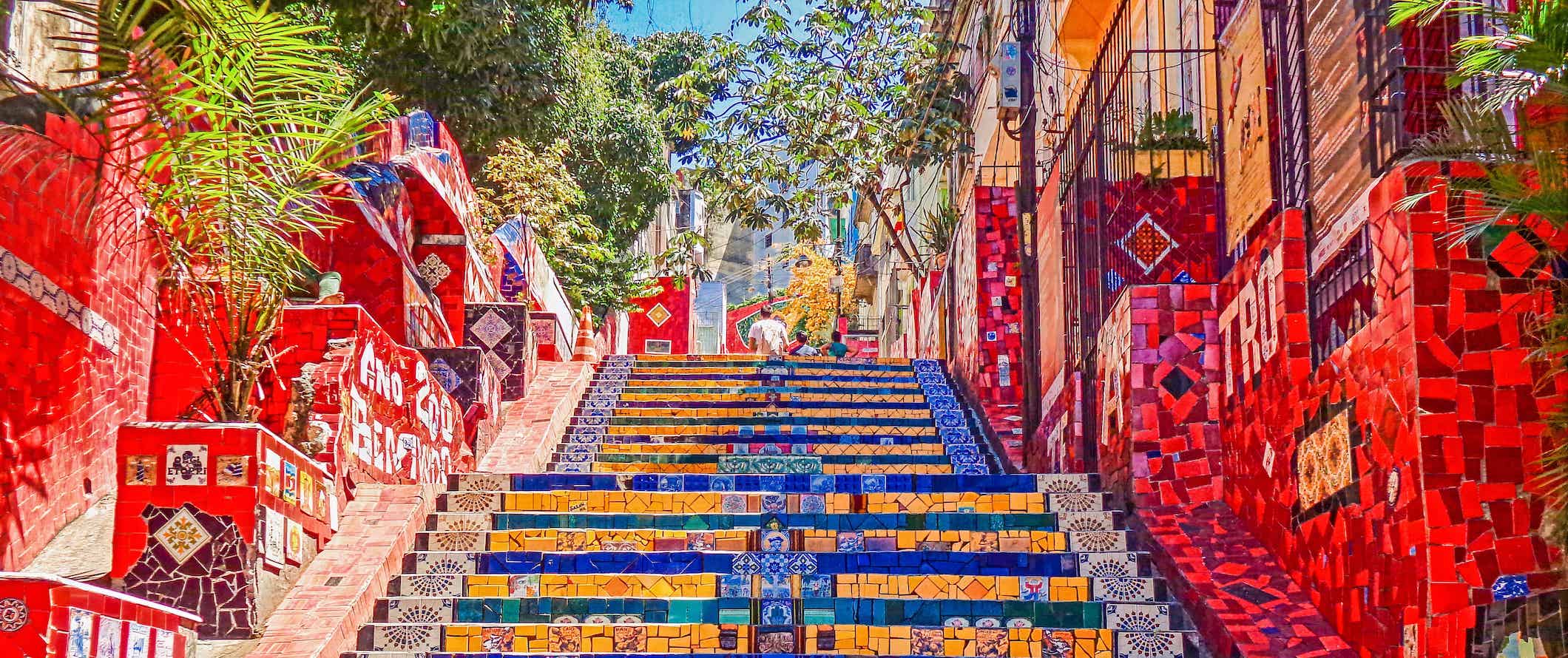
Hostel prices – Large dorm rooms with 8-10 beds start around 65-75 BRL per night. Dorm rooms with 4-6 beds are around 90-110 BRL per night. Standard twin or double private rooms cost 225-300 BRL per night for two people.
Free Wi-Fi is standard, and most hostels have a bar and outdoor patio with a BBQ. Free breakfast is usually included at hostels in Rio de Janeiro, and kitchen facilities are common too. Some hostels have a pool, coworking spaces, and bikes for rent.
If you book your bed well ahead of time for Carnival (at least six months), you’ll have more options. However, prices skyrocket — some of those dorms mentioned above increase to 200-300 BRL per night — during Carnival!
Budget hotel prices – A double room in a basic two-star hotel is around 150 BRL per night in the city center, including a private bathroom and balcony as well as free Wi-Fi. That price can nearly double in other places like Copacabana (the most popular place for tourists to stay).
A budget hotel with more amenities (free breakfast, a swimming pool, bar/restaurant) starts around 190 BRL per night for a double room.
Airbnb is another affordable option here. For a private room, expect to pay about 100-125 BRL per night, while you can find a comfortable home or apartment for about 275-350 BRL per night.
During Carnival time, private and hotel rooms can double in price and sell out fast.
Average cost of food – Brazilian cuisine – like the country itself – is a mix of many cultures, with European, Amerindian, African, and (more recently) Japanese influences. As such a large country, food varies per region, with seafood plentiful on the coastlines and Brazilian barbecue dominating plates in the south. Rice and beans are a staple throughout the country.
Common vegetables include tubers like cassava and yams, tomatoes, red peppers, okra, and more. Being a subtropical country, there’s a huge variety of fruits, with the most famous being the superfood açaí. Cupuaçu, mango, papaya, guava, orange, passion fruit, pineapple, are all commonly found in smoothies and fresh juices across the country.
Look for feijoada on the menu. It’s Brazil’s national dish, a meaty bean stew, traditionally eaten for Wednesday or Saturday lunch. Other popular dishes include moqueca (fish stew), polenta, vatapá (a stew of bread, shrimp, coconut milk, and peanuts), and farofa (toasted cassava flour, served as a side to feijoada ), among countless others.
Some popular street food snacks include pão de queijo (cheese bread rolls), acarajé (black-eyed pea and shrimp fritters), coxinha (chicken croquettes), and pastéis (savory fried pies with assorted fillings). In Rio, bolinhos de bacalhau (fried cod fritters) are especially popular due to the city’s coastal location.
Rio de Janeiro has lots of affordable food options, with street food like pastels, coxinha, and tapiocas costing 8-10 BRL each. A meal at an inexpensive restaurant serving typical Brazilian dishes costs about 20-40 BRL. An açaí (served pureed and frozen, with toppings you can choose from) from a street stand or takeaway spot is 15-20 BRL.
For fast food, a combo meal at McDonald’s or a takeaway meal from a Chinese restaurant both cost about 35 BRL.
A meal with two courses at a casual restaurant starts from 60 BRL, though prices at restaurants along the beach can go much higher, starting around 70-80 BRL for a dish. A three-course meal with a drink at a nicer restaurant is around 200 BRL.
A beer to go with your meal is around 7-10 BRL, while a cocktail starts at 20 BRL (though they can get upwards of 40 BRL in fancier places). In terms of non-alcoholic drinks, a cappuccino or fresh juice is 8-12 BRL.
One of the best ways to eat in Rio is to find a restaurant por kilo , which lets you pay for your meal by weight (so skip the super-thick steak). It generally costs around 70-90 BRL per kilo, with prices varying depending on the time of day and day of the week (nights and weekends are more expensive). Restaurante Temperarte near Copacabana is a great option for trying this.
Grocery shopping is very cheap, costing about 100-145 BRL per week for bread, meat, veggies, and other basics. You’ll just need to make sure you book accommodation with a kitchen.
Backpacking Rio de Janeiro Suggested Budgets
If you are backpacking Rio de Janeiro, expect to spend about 215 BRL per day. This covers staying in a hostel dorm, eating street food, cooking some of your meals, limiting your drinking, using public transportation to get around, and doing mostly free activities like enjoying the beach.
On a mid-range budget of about 470 BRL per day, you can stay in a private hostel or Airbnb room, eat out for all your meals at cheap local restaurants, take the occasional taxi to get around, enjoy a few drinks, and do more paid activities like visiting the zoo and attending a soccer game.
On a “luxury” budget of about 825 BRL per day or more, you can stay in a hotel, eat out for all your meals, enjoy more drinks, take taxis everywhere, and enjoy all the tours and activities you want. This is just the ground floor for luxury though. The sky is the limit!
If you’re coming during Carnival time, expect prices for accommodations and activities to increase significantly (sometimes quadruple) — especially if you’re booking last minute.
You can use the chart below to get an idea of how much you need to budget daily, depending on your travel style. Keep in mind these are daily averages – some days you’ll spend more, some days you’ll spend less (you might spend less every day). We just want to give you a general idea of how to make your budget. Prices are in BRL.
Rio de Janeiro Travel Guide: Money-Saving Tips
Rio has lots of free activities and attractions to enjoy, like beaches and hiking trails. While food and accommodation aren’t cheap, there are ways to keep your costs down. Here are some ways to save money in Rio de Janeiro:
- Eat por kilo – As with elsewhere in Brazil, restaurants that have you pay by the kilo for your food is a good deal. Look out for these cheap options.
- Visit the market – If you’re staying at a hostel with kitchen facilities, it’s a good idea to stock up on food at the market and eat like the locals.
- Stay with a local – Couchsurfing connects you with locals who can give you a free place to stay and share their insider tips and advice. It’s the best way to meet locals and save money.
- Go to free museum days – Almost all the museums in Rio have a free day to visit each week. Check their website for details!
- Take a free walking tour – There are many excellent free walking tours in Rio, including Free Walker Tours and Rio By Foot. They’re the best way to see the main sights on a budget. Just be sure to tip your guide at the end!
- Avoid Carnival time – As exciting as Carnival is, visiting Rio any other time of the year is just as magical and saves you lots of money.
- Pack a water bottle – The tap water here isn’t safe to drink so bring a water bottle with a filter to save money and reduce your single-use plastic usage. My preferred bottle is LifeStraw as it has a built-in filter to ensure your water is always clean and safe.
Where to Stay in Rio de Janeiro
Rio de Janeiro is a sprawling city. When you’re researching your hostel, make sure you find a neighborhood that fits your needs, whether you want to stay in the city center or somewhere near the beach. Otherwise, you’ll be spending a lot of money on taxis and sitting in the city’s terrible traffic. Here are my suggested places to stay:
- Selina Lapa Rio de Janeiro
- Mango Tree Hostel Ipanema
- CabanaCopa Hostel
For more suggestions, check out this post on the best hostels in Rio .
How to Get Around Rio de Janeiro

Public Transportation – Rio’s BRT (Bus Rapid Transit) has quick and reliable routes in Copacabana, Barra, Ipanema, and Leblon. Fares cost from 3.80 BRL per trip. You’ll have to flag down a bus by waving at the driver. Otherwise, the Metrô Na Superfície shuttle passengers between metro stations, but they’re often very crowded. The bus is also not always the safest method of travel, so exercise caution here, and don’t use them at night.
Rio de Janeiro has three very efficient subway lines. Line 1 runs between Ipanema to the North Zone, while Line 2 runs between Botafogo and Pavuna (with Maracanã football stadium on the way). Line 3 runs between Ipanema and the Barra de Tijuca. You can get a prepaid card (called RioCard+Mais) at any kiosk for 4 BRL. A single metro ride costs 5 BRL.
For solo female travelers, note that there are women-only metro cars (marked in pink) during peak rush hours (6am-9am, 5-8pm, on weekdays).
The only remaining tram line in Rio is the famous Santa Teresa line, which runs from the tram station in Centro and travels across the Lapa Arches, Ruinas Park, and then turns around at Largo do Guimarães. A return ticket is 20 BRL.
Bicycle – Rio has tons of bike paths along its main beach areas. Unfortunately, only Brazilian citizens and residents with a CPF number can use the bike sharing system, though you can also rent bikes from a local shop for about 150 BRL per day to navigate the paths between Copacabana and Ipanema.
Ferry – You can take a ferry to visit several of Rio’s highlights, like Ilha Fiscal, Ilha de Paquetá, and Niterói. Ticket prices are generally 12-15 BRL round-trip.
Taxis – Taxis start at 6 BRL and cost an additional 2.65 BRL per kilometer. This rate increases to 3 BRL per kilometer at night and on Sundays. A ride around town generally costs 10-50 BRL. Use the 99 app (formerly 99Taxis) to get a safe, metered taxi.
Ridesharing – Uber is available in Rio de Janeiro and usually costs around the same a taxi.
When to Go to Rio de Janeiro
December to March is when Rio is at its warmest and sunniest. There isn’t much rain during these months, and temperatures tend to be around 32°C (90°F) and higher each day.
Autumn (April-May) and spring (October-November) offer slightly cooler temperatures, usually in the mid-20s°C (low 80s°F). Although Rio is busy year-round, you’ll avoid a lot of peak tourism madness by visiting during these months.
During February’s Carnival, prices skyrocket, and accommodation sells out very quickly. You should consider booking your travel at least six months (and up to a year) before Carnival time to snag the best deals and places to stay.
How to Stay Safe in Rio de Janeiro
Rio de Janeiro has a lot of crime and is not the safest city in the world. Violent attacks can occur, however, your biggest concern here is petty crime — especially after nightfall around popular tourist destinations.
Don’t walk alone at night. Instead, take taxis. Have your accommodation call one for you so you can be sure you get a reputable driver.
When withdrawing money, make sure you go inside a bank so that you can put your cash away without the risk of getting robbed.
Don’t flash your valuables and always make sure your possessions are secure and out of reach (especially your phone and wallet).
Never accept drinks from strangers and don’t leave anything unattended at the beach.
Unless you’re on a guided tour, avoid the favelas. The favelas are where the highest rate of crime occurs in the city, and you shouldn’t be exploring there on your own.
Carjacking and break-ins are common so avoid renting a car here.
Solo female travelers will want to exercise caution here. Travel with groups where you can and avoid getting too far off the beaten path if you’re alone.
If you’re worried about getting scammed, you can read about common travel scams to avoid right here.
If you experience an emergency, dial 190 for assistance.
Always trust your gut instinct. Avoid isolated areas at night and be aware of your surroundings at all times. Make copies of your personal documents, including your passport and ID. Forward your itinerary along to loved ones so they’ll know where you are.
The most important piece of advice I can offer is to purchase good travel insurance. Travel insurance will protect you against illness, injury, theft, and cancellations. It’s comprehensive protection in case anything goes wrong. I never go on a trip without it as I’ve had to use it many times in the past.
Rio de Janeiro Travel Guide: The Best Booking Resources
These are my favorite companies to use when I travel. They consistently have the best deals, offer world-class customer service and great value, and overall, are better than their competitors. They are the companies I use the most and are always the starting point in my search for travel deals.
- Skyscanner – Skyscanner is my favorite flight search engine. They search small websites and budget airlines that larger search sites tend to miss. They are hands down the number one place to start.
- Hostelworld – This is the best hostel accommodation site out there with the largest inventory, best search interface, and widest availability.
- Booking.com – The best all around booking site that constantly provides the cheapest and lowest rates. They have the widest selection of budget accommodation. In all my tests, they’ve always had the cheapest rates out of all the booking websites.
- Get Your Guide – Get Your Guide is a huge online marketplace for tours and excursions. They have tons of tour options available in cities all around the world, including everything from cooking classes, walking tours, street art lessons, and more!
- SafetyWing – Safety Wing offers convenient and affordable plans tailored to digital nomads and long-term travelers. They have cheap monthly plans, great customer service, and an easy-to-use claims process that makes it perfect for those on the road.
- LifeStraw – My go-to company for reusable water bottles with built-in filters so you can ensure your drinking water is always clean and safe.
- Unbound Merino – They make lightweight, durable, easy-to-clean travel clothing.
- Top Travel Credit Cards – Points are the best way to cut down travel expenses. Here’s my favorite point earning credit cards so you can get free travel!
Rio de Janeiro Travel Guide: Related Articles
Want more info? Check out all the articles I’ve written on backpacking/traveling Brazil and continue planning your trip:
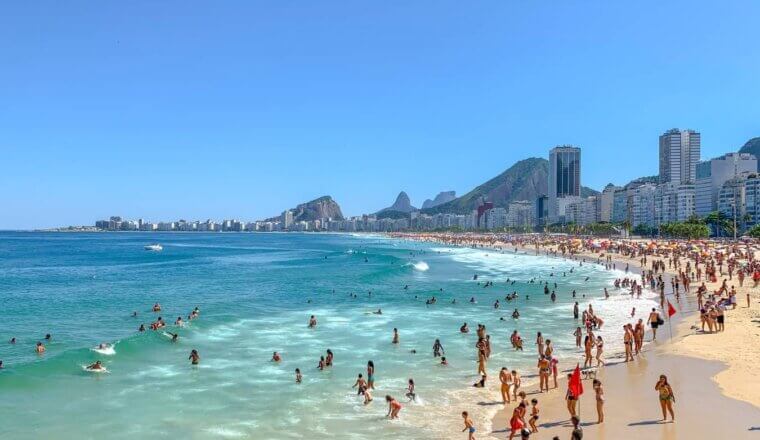
The 6 Best Hostels in Rio de Janeiro
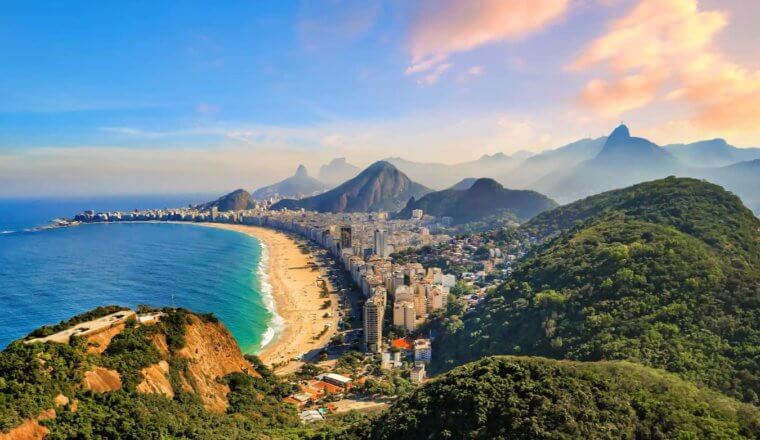
Is Brazil Safe to Visit?
Get my best stuff sent straight to you, pin it on pinterest.
- Where To Stay
- Transportation
- Booking Resources
- Related Blogs
Remixed from video by Captain Gini Creative Commons Attribution licence
Rio de Janeiro Trip Planner
Things to do.
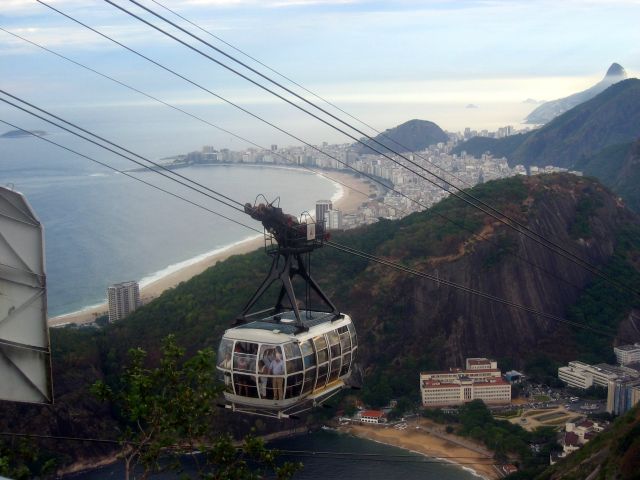
Rio de Janeiro Activities and Attractions: Information, Photos, Videos and Reviews
GETTING AROUND

Your Complete Guide to Getting Around Rio de Janeiro + Instant Directions to each Attraction
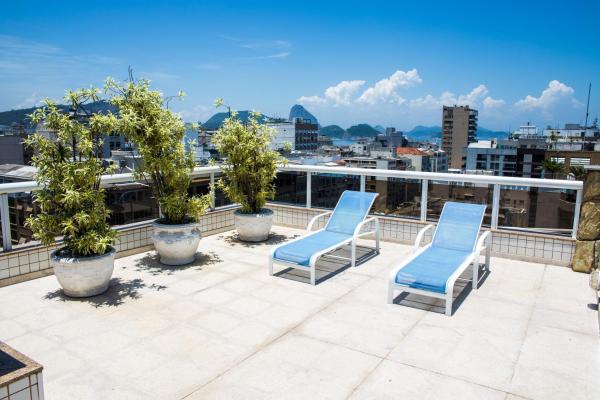
Find the Best Hotels Close to the Rio Metro
GUIDED TOURS

Guided Tours, Day Trips and Sightseeing Packages

Discover the Best Places to Shop in Rio de Janeiro
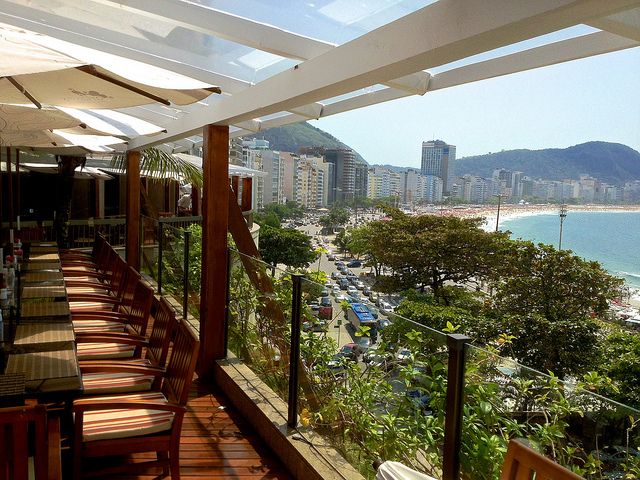
Find the Best Restaurants Close to the Rio Metro
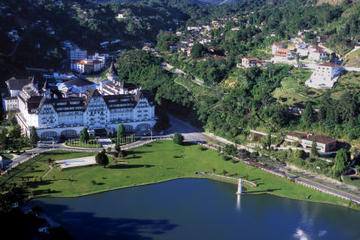
Save Money with a Self-Guided Day Trip
WALKING TOURS
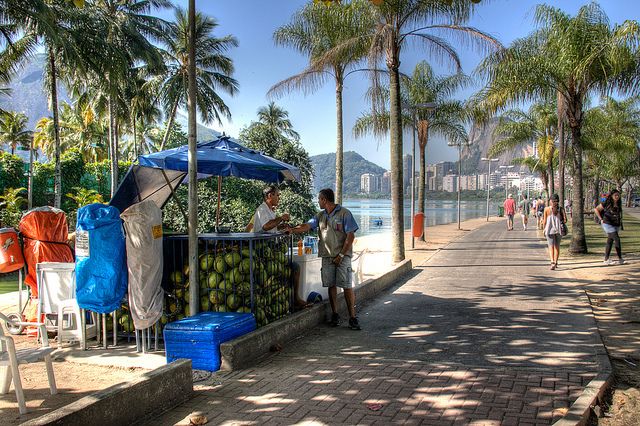
See Rio at Your Own Pace with a Self-Guided Walking Tour
Located in one of the most beautiful coastal settings in the world, Rio de Janeiro is well know for its breathtaking views, beaches and mountains. While people visit Rio for many reasons, its natural beauty is usually one of the biggest draws. Rio is also a city of contrast where the affluent areas along the beaches rub shoulders with crowded favelas — poor neighbourhoods that dominate a significant portion of the city. These many crowded, rundown neighbourhoods are an attraction in their own rite — something every visitor should consider seeing to experience the diversity of everyday life in this busy city. While the Brazilian government is working hard to improve the favelas by removing the criminal element, some of them are still dangerous so we highly recommend a guided tour if you do plan to visit them.
In addition to its world renowned natural setting, Rio de Janeiro also offers a fine selection of museums, a fabulous zoo, great dining, nightlife and more. Combine all of this with a warm climate throughout the year and you have the perfect destination to travel to any time of the year. Browsing the pages of our Rio de Janeiro Trip Planner will help you decide what things to see and do during your visit to Rio.
Most of Rio's attractions are within walking distance of a Metro Station while a few require the addition of a bus or funicular ride. A map and detailed directions for each attraction will help you plan the best route. You'll also find a wide range of fully guided tours of Rio de Janeiro available for you to book.
Whether it's flights, hotels, dining, transportation or things to do, you'll find everything you need for planning your trip to Rio right here.
See our Rio de Janeiro Travel Tips to save money and help your trip go smoothly.
- Find a Local
- How it works
- Destinations
- Sample guidebook

Self-guided tours, by locals in Rio de Janeiro
Local knowledge. custom itineraries. booking support..

How ViaHero Works

Choose a local

Message the local

Get a guidebook

- Unlimited messaging with a local expert
- Custom daily itinerary
- Custom Google map with pins
- Booking support for lodging, activities, dinner
- One-on-one support for peace of mind
Sample Guidebook
Review a 6-day guidebook with reservations and itinerary for a previous viahero traveler.

Want the latest on Rio de Janeiro?
Advertisement
Supported by
Biden Announces Student Debt Relief for Millions in Swing-State Pitch
During an appearance in Wisconsin, President Biden said 10 million borrowers could see debt relief of at least $5,000. The plan could help rally support among young voters.
- Share full article
Biden Announces New Plan for Student Debt Relief
President biden announced a large-scale effort to help pay off federal student loans for more than 20 million borrowers..
Today, I’m proud to announce five major actions to continue to relieve student debt for more than 30 million Americans since I started my administration. And starting this fall, we plan to deliver up to $20,000 in interest relief to over 20 million borrowers and full forgiveness for millions more. [applause] I will never stop to deliver student debt relief and hardworking Americans. And it’s only in the interest of America that we do it. And again, it’s for the good of our economy that’s growing stronger and stronger, and it is, by freeing millions of Americans from this crushing debt of student debt. It means they can finally get on with their lives instead of being put — their lives being put on hold.

By Michael D. Shear
Reporting from Madison, Wis.
President Biden on Monday announced a large-scale effort to help pay off federal student loans for tens of millions of American borrowers, seeking an election-year boost by returning to a 2020 campaign promise that was blocked by the Supreme Court last year.
Mr. Biden’s new plan would reduce the amount that 25 million borrowers still owe on their undergraduate and graduate loans. It would wipe away the entire amount for more than four million Americans. Altogether, White House officials said, 10 million borrowers would see debt relief of $5,000 or more.
“While a college degree still is a ticket to the middle class, that ticket is becoming much too expensive,” Mr. Biden said during a speech to a small but enthusiastic audience filled with supporters. “Today, too many Americans, especially young people, are saddled with too much debt.”
Mr. Biden announced the plan in Madison, Wis., the capital of a critical swing state and a college town that symbolizes the president’s promise to make higher-education affordability a cornerstone of his economic agenda.
But it is a promise he has so far failed to achieve, largely because of legal challenges from Republicans and other critics. They accuse Mr. Biden of unlawfully using his executive authority to enact a costly transfer of wealth from taxpayers who have not taken out federal student loans to those who have.
Officials did not say how much the new plan would cost in coming years, but critics have said it could increase inflation and add to the federal debt by billions of dollars.
Mr. Biden said his new effort would help the economy by removing the drag of enormous debt from people who would otherwise not be able to buy a home or pursue a more economically sound future.
“We’re giving people a chance to make it,” Mr. Biden said. “Not a guarantee. Just a chance to make it.”
Mr. Biden’s announcement was a presidential do-over. In the summer of 2022, he put in motion a plan to wipe out $400 billion in student debt for about 43 million borrowers. That was blocked by the Supreme Court , which said he exceeded his authority. In the months since, Mr. Biden has waived small amounts of debt using existing programs. But now he is attempting a larger effort closer to the scale of his first try.
The original plan relied on a law called the HEROES Act, which the administration argued allowed the government to waive student debt during a national emergency like the Covid pandemic. The justices disagreed after Republican attorneys general and others challenged the debt waiver plan.
The new approach is different.
For months, Mr. Biden’s Education Department has been developing regulations using a long process authorized by the Higher Education Act. Instead of an across-the-board waiver of debt, the new approach targets five groups of borrowers: those whose loans have ballooned because of interest; borrowers who have been paying for decades; those who have economic hardship; people who qualify for existing debt relief programs but have not applied; and people whose loans come from schools that have since been denied certification or have lost eligibility for federal student aid programs.
Administration officials said because the new approach is based on a different law, it is more likely to survive the expected challenges. They said lawyers for the White House and the Education Department have studied the Supreme Court ruling and have designed the new program to make sure it does not violate the principles laid out by the justices.
But lawyers for those who oppose the approach are likely to argue that waiving the debt is unfair to those who already paid back their loans or never took out college loans in the first place. That argument helped sway the justices in the last case.
Neal McCluskey, the director of the Center for Educational Freedom at the Cato Institute, called the new plan “dangerous policy” that is unfair to taxpayers and would cause colleges and universities to raise their prices.
“The Constitution gives Congress, not the president, the authority to enact law, and the Supreme Court has already struck down a unilateral, mass student debt cancellation scheme by the Biden administration,” he said. “It would stick taxpayers with bills for debts other people chose for their own financial advancement.”
The legal challenges will likely take months to resolve, and that could leave the debt relief plan in limbo as voters go to the polls in November to choose between Mr. Biden and former President Donald J. Trump.
Members of Mr. Biden’s administration fanned out across the country on Monday to talk about the new plan, betting that it will rally support among voters who were disappointed that the court blocked the first one, which would have eliminated up to $20,000 in debt for tens of millions of borrowers. Vice President Kamala Harris held a round-table discussion with a teacher, a nurse and a social worker in Philadelphia. Miguel A. Cardona, the education secretary, spoke in New York City.
“We need you to stay in these jobs doing this work,” Ms. Harris said in the library of an elementary school. “And you shouldn’t have to make a decision about whether you serve or are able to pay your bills.”
But beyond the threat of legal action, the president faces steep obstacles just because of the calendar. The new plan has not yet been published in the Federal Register, which will kick off a required, monthslong public comment period before it can take effect. Officials said on Sunday only that they hoped some of the provisions would begin going into effect in “early fall” of this year.
Administration officials hope that the president’s supporters will give him credit for trying, even if many of the borrowers do not end up seeing any relief before they go to the ballot box. Andrew O’Neill, the legislative director for Indivisible, a liberal advocacy organization, praised Mr. Biden’s announcement.
“Progressives have led the fight for student debt cancellation, and Joe Biden has responded,” he said in a statement. “More than 30 million folks will now get relief from Biden’s programs. That’s a huge deal.”
White House officials have been scrambling for months to respond to the anger about student loans among the president’s base. In one poll released last month, more than 70 percent of young people said the issue of student loan forgiveness was “important” or “very important” to them as they make their decision in the 2024 election campaign.
Officials said the five groups of people targeted in the new plan will address most of the egregious issues that some borrowers have with their student loans.
People whose loans have grown beyond the amount they originally borrowed because of interest would have up to $20,000 of that interest wiped away, leaving them to repay only the amount they originally borrowed. People making less than $120,000 a year, or couples making less than $240,000, would qualify to have all of their interest forgiven.
Officials said that 23 million people would most likely have all of their interest-related balances waived from that provision.
About two million borrowers who already qualify to have their student loans waived under existing programs have not applied for relief. Under the new rules, the Education Department would be authorized to cancel the debt for those people without their having to apply.
People who took out federal student loans for undergraduate degrees and began repaying them more than 20 years ago would automatically have the debt canceled under the new plan. Graduate students who borrowed money and began repaying 25 years ago would have their debt canceled.
Officials said that about 2.5 million people would qualify under that rule.
People who borrowed money to attend colleges that have since lost their certification or their eligibility to participate in the federal student aid program would have their debt canceled. Officials did not say how many people that would affect. And people who are especially burdened with other expenses — such as high medical debt or child care — could apply to have their student loans forgiven.
Officials did not estimate how many people might qualify for what they called the “hardship” programs.
Nicholas Nehamas contributed reporting from Philadelphia.
Michael D. Shear is a White House correspondent for The New York Times, covering President Biden and his administration. He has reported on politics for more than 30 years. More about Michael D. Shear
National Geographic content straight to your inbox—sign up for our popular newsletters here

How to plan a food trip through the Ribble Valley, UK
Michelin-starred dining, independent butchers and artisan cheesemakers make this beautiful corner of Lancashire a rural idyll for food travellers.
From its blasted fells and verdant plateaus to its tangled woods and meandering rivers, the Ribble Valley is a rural wonderland that apparently inspired the otherworldly landscapes of JRR Tolkien’s The Lord of the Rings . It is a natural haven for birders, walkers and cyclists, particularly where this corner of Lancashire merges into the Forest of Bowland, a designated Area of Outstanding Natural Beauty.
The Ribble Valley also tastes amazing. A seasonal food ethos grows out of its fertile farmland, underpinning the work of Michelin-acclaimed restaurants such as the Northcote in Langho and market-town gems such as Cowman’s sausage shop in Clitheroe. Key local producers, such as cheesemaker Mrs Kirkham’s, enjoy national recognition. Yet none of this feels overexposed. With the majority of travellers passing by the Ribble as they rush north to the Lake District, it continues to offer visitors a sense of discovery.
Where to eat at in the Ribble Valley
1. The Parkers Arms , Newton-in-Bowland
Reaching No 7 on the Estrella Damm Top 50 Gastropubs in the UK list in 2023, The Parkers Arms has long been a place of pilgrimage for clued-up foodies. It serves gutsy Lancastrian cooking – and its pies are legendary. But that only tells half the story. Chef Stosie Madi’s work is often deft and light, exemplified by her fish cookery, while her French-Lebanese heritage brings a distinctive flavour to the menu. Dishes might range from minced mutton manoushe flatbreads to braised Bowland rabbit leg, butter-roasted loin, mustard sauce, mash and greens. Passing walkers or cyclists can snack from the bar menu. Three courses, £50.

2. Northcote , Langho
The valley’s benchmark dining destination for more than three decades, this Michelin-star restaurant and boutique hotel is constantly evolving. From its cookery school to the annual international guest chef event Obsession (in January and February), there are always interesting things happening at Northcote. Expect seasonally driven dishes, such as halibut with Jerusalem artichoke and winter truffle or aged dairy cow tartare, warm bone-marrow, alliums and horseradish, accompanied by exceptional wines from managing director Craig Bancroft’s lovingly curated cellar. Mains from £29; doubles from £216 per night, B & B.
3. La Locanda , Gisburn
High-quality local, seasonal ingredients are the cornerstone of Italian cooking – so, naturally, chef Maurizio Bocchi feels at home in the Ribble Valley. Key imports such as wine and olive oil aside, the Modena native cooks authentic Italian dishes using local meats, game, dairy and vegetables. The menu might include rabbit stuffed with Tuscan sausage and cabbage with rosemary potatoes, or cappellacci pasta filled with pumpkin and amaretti biscuits, finished with butter, sage and hazelnuts – served up in La Locanda’s comfortable farmhouse-style space. Mains from £15.

4. The Inn at Whitewell , near Dunsop Bridge
This remote inn on the River Hodder has accommodated travellers since the 16th century. It is an evocative old building; all worn flagstone floors and roaring fires. Eat in its cosy bars or restaurant. First visit? Look to those dishes, such as the fish pie, chicken liver pate or bangers and champ with onion gravy, that have become established classics over many years. Do not miss the in-house wine shop. Mains from £16.50; doubles from £145 per night, room only.
5. Freemasons at Wiswell , near Whalley
A degree of fine dining glitz runs through chef Steven Smith’s polished pub. You will find Sunday roasts as well as complex and creative dishes, such as prawn mousse-filled sea bass with Thai mussel curry, and salt and pepper tempura broccoli. There is a tasting menu, a chef’s table for those who like to watch kitchens work and, for those staying over, four stylish bedrooms. Mains from £39; doubles from £240 per night, B & B.

An unmissable experience
Bowland Brewery
In its attractive food hall, upmarket cinema and bowling lanes, Holmes Mill development in Clitheroe offers numerous distractions. Heaven for cask and craft ale drinkers, its large beer hall is also the home to Bowland Brewery, which for 20 years has quenched local thirsts with tipples such as its classic, citrusy pale Hen Harrier or the Bowland Bumble, made with honey from the brewery’s beehives at nearby Little Middop Farm. On select Fridays, outside operational brewing hours, tours offer visitors the chance to learn about the brewing process: from raw malts and hops to the mash tun and the fermentation tanks. A tutored tasting of three third-pints follows. One-hour tours, £20 per person.
Where to stay
The Higher Buck, Waddington
Is Waddington the Ribble Valley’s prettiest village? Fans of Hurst Green, Downham or Chipping might disagree, but this cluster of ancient buildings huddled around a gurgling stream is unquestionably idyllic – and home to three individually compelling pubs (see also The Lower Buck Inn and Waddington Arms). The Higher Buck has seven handsome, well-maintained bedrooms while its crowd-pleasing menu similarly excels. A cheddar soufflé with apple chutney and the Buck’s sensational steamed steak and ale pudding are testament to chef-landlord Michael Heathcote’s rigour. Mains from £17; doubles from £115 per night, B & B.
FREE BONUS ISSUE
Related topics.
- FOOD TOURISM
- SHORT TRIPS
You May Also Like

How to plan a food weekend in South Somerset

How to plan a weekend in southern Kosovo, where Europe's newest adventure scene is blossoming

15 of the best places for a roast dinner in the UK

How to plan a food weekend on the UK's Suffolk coast

How to plan a springtime food weekend in the Cotswolds, UK
- Environment
- Paid Content
History & Culture
- History & Culture
- History Magazine
- Gory Details
- 2023 in Review
- Mind, Body, Wonder
- Terms of Use
- Privacy Policy
- Your US State Privacy Rights
- Children's Online Privacy Policy
- Interest-Based Ads
- About Nielsen Measurement
- Do Not Sell or Share My Personal Information
- Nat Geo Home
- Attend a Live Event
- Book a Trip
- Inspire Your Kids
- Shop Nat Geo
- Visit the D.C. Museum
- Learn About Our Impact
- Support Our Mission
- Advertise With Us
- Customer Service
- Renew Subscription
- Manage Your Subscription
- Work at Nat Geo
- Sign Up for Our Newsletters
- Contribute to Protect the Planet
Copyright © 1996-2015 National Geographic Society Copyright © 2015-2024 National Geographic Partners, LLC. All rights reserved
Want to see the next total solar eclipse in 2026? An expert recommends booking travel now.
- 2026 will be Europe's first total solar eclipse in 27 years.
- Travelers worldwide will likely head to Spain, Iceland, and Greenland for the event.
- A hotel expert encouraged travelers to start planning and booking their trips now.

It'll be two decades before the next total solar eclipse hits the US .
Another option: hop on a plane to Europe and turn the 2026 total solar eclipse into a viewing vacation.
Eclipse cartographer Michael Zeiler at GreatAmericanEclipse.com told Space.com that up to 3.7 million people likely traveled for the solar eclipse on Monday.
HotelPlanner's chief communication officer, Philip Ballard, told Business Insider that the eclipse was a major revenue generator for many cities. For places like Austin, Texas, and Rochester, New York, it could have created $1 billion in revenue, Vox reported.
"I would say the total solar eclipse has become a global phenomenon," Ballard said.
Ballard added that the next solar eclipse , which will pass through Iceland, Greenland, and Spain on August 12, 2026, could result in similar tourism and revenue influxes.
And if travelers are considering a trip to Europe for the solar eclipse, Ballard recommends planning your trip now.
Determine your eclipse viewing destination
According to Space.com , 2026 will be Europe's first total solar eclipse in 27 years. Its path will go through Greenland, parts of western Iceland, and northern Spain.
Choosing where to watch the eclipse will be a tough and important decision for travelers.
Iceland and Greenland have some positives. These regions will experience longer totality times, so viewers can watch the eclipse longer. Plus, the sun will be higher in the sky, so finding a spot to watch the eclipse will be less challenging, Space.com reported.
The downside is that these regions are more likely to be cloudy, according to the outlet.
Related stories
While parts of Spain are likely to offer clearer skies, the eclipse's timing will be shorter and closer to the horizon, which means travelers will need to plan and track down a viewing location with unobstructed views of the western horizon, Space.com reported.
Regardless of the destination, according to the outlet, one bonus is that the strongest meteor shower in the Northern Hemisphere will happen the following night, so travelers can pack two events into one trip.
Book flights and hotels far in advance
Ballard encouraged people to book their hotels in their destination of choice as far in advance as possible.
"You should start looking now and booking hotels now because those cities in the path are already going to be at peak season," Ballard said.
Ballard said it's similar to when a Super Bowl city is determined or a Taylor Swift tour date is announced — you immediately see spikes in bookings. He predicts hotel occupancy rates will hit near-record highs, and room prices may double around the solar eclipse date.
Ballard's general rule of thumb is to book international travel at least three months in advance, but since this is such an anticipated event, booking earlier is smart. His advice is to start discussing plans with friends and family. If you decide on a destination, book a refundable room to keep your options open if plans change.
Regarding purchasing a plane ticket, a study from Expedia states that international travel's sweet spot is at least six months in advance.
According to Expedia, travelers who book six months in advance save an average of 10% more than travelers booking within two months or less.
Skip the hassle of planning altogether and book a solar eclipse tour
Another option is to let a tour operator do the work for you. A handful of tour companies have seen the increased interest in the solar eclipse and launched tours designed around the event.
These tours will have predetermined locations to view the eclipse, hotel blocks reserved, and itineraries highlighting both the region and the eclipse.
However, these can sell out quickly. For example, Space and Telescope created an 11-day tour of Spain around viewing the 2026 solar eclipse. The tour has already sold out as of Wednesday, and the waitlist is full.
Other operators, such as Wilderness Travel and Eclipse Traveler, have similar itineraries for the total eclipse in 2026.
Watch: A small Australian town was treated to a rare hybrid solar eclipse
- Main content

IMAGES
COMMENTS
Rio de Janeiro Guide: Planning Your Trip. Rio de Janeiro, known as the " cidade maravilhosa " in Portuguese, draws travelers in thanks to its stunning natural beauty and unique blend of culture, food, architecture, and music. Founded on Jan. 1, 1502 by Portuguese explorers (they mistook Guanabara Bay for a river—hence the city's name), the ...
It is one of the main attractions of Rio, and one of the modern wonders of the world. Towering at 98 feet tall, with its arms outstretched, it welcomes visitors with a sense of warmth and tranquility. The statue, constructed in the Art Deco style, serves as a powerful representation of faith, unity, and peace.
About Rio de Janeiro. With its pretty beaches, dramatic mountains, and soundtrack of samba and bossa nova humming in the background, Rio de Janeiro casts a spell. Famed Ipanema Beach is still the place to stroll, sunbathe, and be seen. The largest Art Deco statue in the world, Christ the Redeemer, calls visitors to Corcovado Mountain.
Making justice to its nickname Cidade Maravilhosa (Marvellous City), Rio is indeed a vibrant and lively place with tons of things to see and do. In this article I'm sharing with you my itinerary on how to spend one week in Rio de Janeiro. Beleza?. Rio de Janeiro seems to be all over the news in recent years.. Whether its because of the 2014 World Cup, the 2016 Summer Olympics - which ...
1. 2. Make the most out of your 5 days in Rio de Janeiro by exploring these top visited places: Christ the Redeemer, Plage Café, Maracanã, Comuna, Museu do Amanhã, Green Restaurante, Escadaria Selarón, Delírio Tropical, Shopping RioSul, and Braseiro.
Brazil is home to a family-centric culture, and Rio de Janeiro is no exception - here's our guide to help you plan a great trip to Rio with kids. Read article. View more. Plan with a local. Experience the real Brazil. Let a local expert craft your dream trip. Get started. Articles
If there's one thing that I associate with Rio de Janeiro, it's the beaches.The two most famous beaches in Rio are Ipanema and Copacabana. Definitely plan to spend some time at Ipanema.The beaches are divided into sections marked by postos (lifeguard towers) and each section attracts a different crowd: posto 7 is filled with surfers, postos 8 and 9 are for the younger crowd and the gay ...
Image by Dislentev via DepositPhotos. You'll have two transportation options to get to this UNESCO World Heritage Site from Rio. The first is the train, and the other is taking the van at the official pick-up points which are at Praca do Lido in Copacabana and at the Citta America in Barra de Tijuca.. The vans leave every 15 minutes and the ticket cost includes the return transport and ...
You can quickly go on plenty of fun and exciting day trips from Rio, such as Petrópolis and Teresópolis. Also, there are some other places well-worth the trip in Rio de Janeiro State, such as Arraial do Cabo, Búzios, Cabo Frio, Paraty, and Trindade. Wooden staircase to Pontal do Atalaia Beach in Arraial do Cabo.
The Best of Rio in a Full Day Tour - Corcovado, Sugar Loaf, Selaron and more. Favela Tours. 3 Hour Rocinha Favela Walking Tour. Rio de Janeiro Ferris Wheel Ticket - Yup Star. Rio Sunset Tour Including Sugarloaf, Christ the Redeemer, Cathedral and Selaron. The Best Helicopter Flight - Sugar Loaf and Christ the Redeemer.
Rio de Janeiro, or simply Rio, is the second-most populous city in Brazil and the sixth-largest city in the Americas. It is famous for its towering sculpture of Christ the Redeemer, the Sugarloaf Mountain, its beaches, and its favelas, as well as its street art and dance scene. Rio was founded by Portuguese explorers in the 16th century, though ...
The Dona Marta lookout offers full 360 views of Marvelous City, Urca, Botafogo and Flamengo beaches, Sugar Loaf, Maracana, Christ the Redeemer Statue and the Bay of Guanabara. 12. Botanical Garden. One of the best things to do in Rio de Janeiro is to visit the verdant greenery of the Botanic Gardens.
Plan on the go with our free travel app. With Wanderlog's mobile travel planner on Android and iOS, access and edit your trips wherever you go — even while offline. 32°F. Keep your places to visit, flight/hotel reservations, and day-by-day itineraries for your trip to Rio de Janeiro in our web and mobile app vacation planner.
Here is an itinerary for a seven-day trip to Rio de Janeiro. 1. Day One. Add to Plan. Begin your holiday with a trip to the city's most famous landmark, the Christ the Redeemer. Take the train to the top of Corcovado, which slowly winds through the Tijuca Forest. Later, spend the afternoon at the Botanical Gardens near the base of Corcovado ...
Rio de Janeiro is a magnificent city with something for every traveler. However, it can be a bustling and noisy city that can become overwhelming if you don't adequately plan your trip. Hopefully, this 3 day itinerary for Rio de Janeiro will make exploring the city easy and relaxing, especially for first-time visitors.
Tips for finding Rio de Janeiro package deals. There are loads of types of vacations in Rio de Janeiro and the cost will depend on what type of trip you're taking and for how long you'd like to stay. Here are the latest prices for a 3 night trip for 2 travelers: Top vacation $519; Family vacation $519; Romantic vacation $717; Luxury ...
Check out our detailed Rio de Janeiro trip costs post here! 15. Best Areas to Stay in Rio de Janeiro. Figuring out the best area to stay is an important part of planning a trip to Rio de Janeiro, since, as we mentioned earlier, the city is very spread out, and some areas of the city are decidely more safe than others.
Bundle Rio de Janeiro flight + hotel & save up to 100% off your flight with Expedia. FREE cancellation on select hotels ... Plan, book, and manage your trip all in one place. Your Rio de Janeiro Vacation. There's lots to like about Rio de Janeiro, from its beaches to its lively atmosphere. When you're ready to spend a bit of time in this ...
Planning a trip to Rio and need some tips? I've got you! Rio de Janeiro, Brazil, is one of the most popular destinations in South America. Known for its stunning beaches, vibrant culture, and rich history, as well as the incredible Carnival, Rio de Janeiro is a must-visit destination for anyone travelling to Brazil or the whole of South ...
A ride around town generally costs 10-50 BRL. Use the 99 app (formerly 99Taxis) to get a safe, metered taxi. Ridesharing - Uber is available in Rio de Janeiro and usually costs around the same a taxi. Car rental - Renting a car generally costs 80-120 BRL per day, though I don't recommend renting a car here.
Browsing the pages of our Rio de Janeiro Trip Planner will help you decide what things to see and do during your visit to Rio. Most of Rio's attractions are within walking distance of a Metro Station while a few require the addition of a bus or funicular ride. A map and detailed directions for each attraction will help you plan the best route.
How Rome2Rio works. Rome2Rio searches any city, town, landmark, attraction or address across the globe with thousands of multi-modal routes to easily get you from A to B. 198,965. Train Lines via. 6,002 Train Operators. 969,666. Bus Routes via. 79,538 Bus Operators. 13,273.
Work with a local to plan your trip. $49. per travel day ⓘ. Find a local. Unlimited messaging with a local expert. Custom daily itinerary. Custom Google map with pins. Booking support for lodging, activities, dinner. One-on-one support for peace of mind.
During an appearance in Wisconsin, President Biden said 10 million borrowers could see debt relief of at least $5,000. The plan could help rally support among young voters.
Look to those dishes, such as the fish pie, chicken liver pate or bangers and champ with onion gravy, that have become established classics over many years. Do not miss the in-house wine shop ...
Ballard added that the next solar eclipse, which will pass through Iceland, Greenland, and Spain on August 12, 2026, could result in similar tourism and revenue influxes. And if travelers are ...